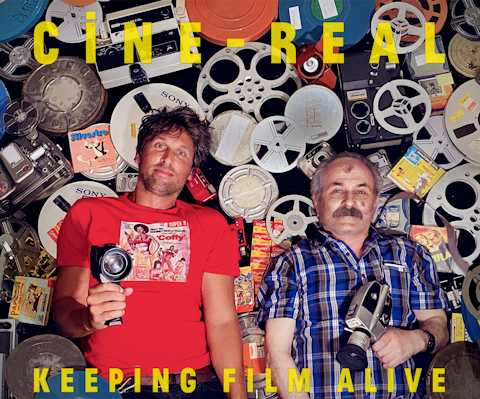PAST SCREENINGS
Some Like it Hot
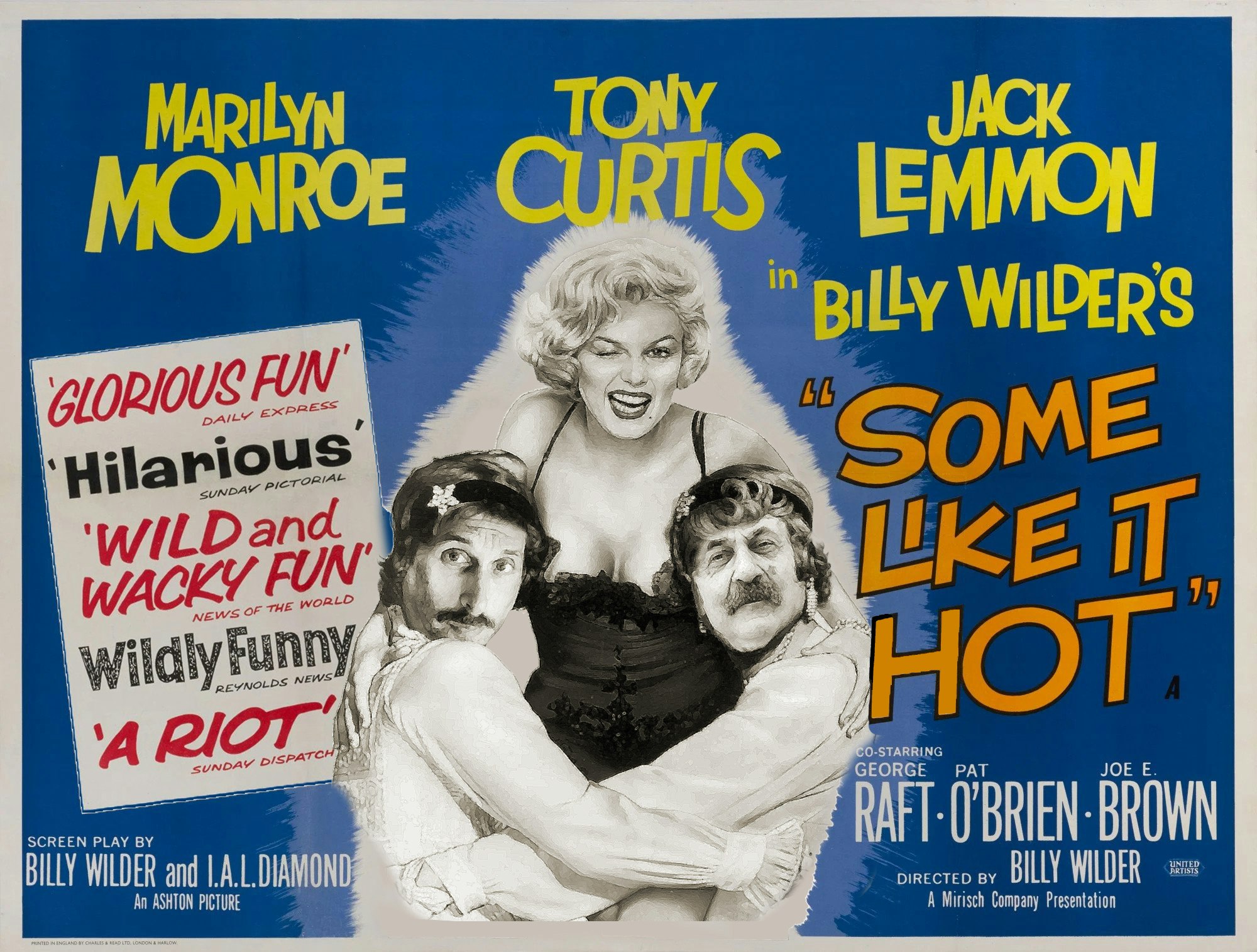
What a work of art and nature is Marilyn Monroe. She hasn't aged into an icon, some citizen of the past, but still seems to be inventing herself as we watch her. She has the gift of appearing to hit on her lines of dialogue by happy inspiration, and there are passages in Billy Wilder's "Some Like It Hot" where she and Tony Curtis exchange one-liners like hot potatoes.
Poured into a dress that offers her breasts like jolly treats for needy boys, she seems totally oblivious to sex while at the same time melting men into helpless desire. "Look at that!" Jack Lemmon tells Curtis as he watches her adoringly. "Look how she moves. Like Jell-O on springs. She must have some sort of built-in motor. I tell you, it's a whole different sex."
Wilder's 1959 comedy is one of the enduring treasures of the movies, a film of inspiration and meticulous craft, a movie that's about nothing but sex and yet pretends it's about crime and greed. It is underwired with Wilder's cheerful cynicism, so that no time is lost to soppiness and everyone behaves according to basic Darwinian drives. When sincere emotion strikes these characters, it blindsides them: Curtis thinks he wants only sex, Monroe thinks she wants only money, and they are as astonished as delighted to find they want only each other.
The plot is classic screwball. Curtis and Lemmon play Chicago musicians who disguise themselves as women to avoid being rubbed out after they witness the St. Valentine's Day Massacre. They join an all-girl orchestra on its way to Florida. Monroe is the singer, who dreams of marrying a millionaire but despairs, "I always get the fuzzy end of the lollipop." Curtis lusts for Monroe and disguises himself as a millionaire to win her. Monroe lusts after money and gives him lessons in love. Their relationship is flipped and mirrored in low comedy as Lemmon gets engaged to a real millionaire, played by Joe E. Brown. "You're not a girl!" Curtis protests to Lemmon. "You're a guy! Why would a guy want to marry a guy?" Lemmon: "Security!"
The movie has been compared to Marx Brothers classics, especially in the slapstick chases as gangsters pursue the heroes through hotel corridors. The weak points in many Marx Brothers films are the musical interludes--not Harpo's solos, but the romantic duets involving insipid supporting characters. "Some Like It Hot" has no problems with its musical numbers because the singer is Monroe, who didn't have a great singing voice but was as good as Frank Sinatra at selling the lyrics.
Consider her solo of "I Wanna Be Loved by You." The situation is as basic as it can be: a pretty girl standing in front of an orchestra and singing a song. Monroe and Wilder turn it into one of the most mesmerizing and blatantly sexual scenes in the movies. She wears that clinging, see-through dress, gauze covering the upper slopes of her breasts, the neckline scooping to a censor's eyebrow north of trouble. Wilder places her in the center of a round spotlight that does not simply illuminate her from the waist up, as an ordinary spotlight would, but toys with her like a surrogate neckline, dipping and clinging as Monroe moves her body higher and lower in the light with teasing precision. It is a striptease in which nudity would have been superfluous. All the time she seems unaware of the effect, singing the song innocently, as if she thinks it's the literal truth. To experience that scene is to understand why no other actor, male or female, has more sexual chemistry with the camera than Monroe.
Capturing the chemistry was not all that simple. Legends surround "Some Like It Hot." Kissing Marilyn, Curtis famously said, was like kissing Hitler. Monroe had so much trouble saying one line ("Where's the bourbon?") while looking in a dresser drawer that Wilder had the line pasted inside the drawer. Then she opened the wrong drawer. So he had it pasted inside every drawer.
Monroe's eccentricities and neuroses on sets became notorious, but studios put up with her long after any other actress would have been blackballed because what they got back on the screen was magical. Watch the final take of "Where's the bourbon?" and Monroe seems utterly spontaneous. And watch the famous scene aboard the yacht, where Curtis complains that no woman can arouse him, and Marilyn does her best. She kisses him not erotically but tenderly, sweetly, as if offering a gift and healing a wound. You remember what Curtis said but when you watch that scene, all you can think is that Hitler must have been a terrific kisser.
The movie is really the story of the Lemmon and Curtis characters, and it's got a top-shelf supporting cast (Joe E. Brown, George Raft, Pat O'Brien), but Monroe steals it, as she walked away with every movie she was in. It is an act of the will to watch anyone else while she is on the screen. Tony Curtis' performance is all the more admirable because we know how many takes she needed--Curtis must have felt at times like he was in a pro-am tournament. Yet he stays fresh and alive in sparkling dialogue scenes like their first meeting on the beach, where he introduces himself as the Shell Oil heir and wickedly parodies Cary Grant. Watch his timing in the yacht seduction scene, and the way his character plays with her naivete. "Water polo? Isn't that terribly dangerous?" asks Monroe. Curtis: "I'll say! I had two ponies drown under me."
Watch, too, for Wilder's knack of hiding bold sexual symbolism in plain view. When Monroe first kisses Curtis while they're both horizontal on the couch, notice how his patent-leather shoe rises phallically in the mid-distance behind her. Does Wilder intend this effect? Undoubtedly, because a little later, after the frigid millionaire confesses he has been cured, he says, "I've got a funny sensation in my toes--like someone was barbecuing them over a slow flame." Monroe's reply: "Let's throw another log on the fire."
Jack Lemmon gets the fuzzy end of the lollipop in the parallel relationship. The screenplay by Wilder and I.A.L. Diamond is Shakespearean in the way it cuts between high and low comedy, between the heroes and the clowns. The Curtis character is able to complete his round trip through gender, but Lemmon gets stuck halfway, so that Curtis connects with Monroe in the upstairs love story while Lemmon is downstairs in the screwball department with Joe E. Brown. Their romance is frankly cynical: Brown's character gets married and divorced the way other men date, and Lemmon plans to marry him for the alimony.
But they both have so much fun in their courtship! While Curtis and Monroe are on Brown's yacht, Lemmon and Brown are dancing with such perfect timing that a rose in Lemmon's teeth ends up in Brown's. Lemmon has a hilarious scene the morning after his big date, laying on his bed, still in drag, playing with castanets as he announces his engagement. (Curtis: "What are you going to do on your honeymoon?" Lemmon: "He wants to go to the Riviera, but I kinda lean toward Niagara Falls.") Both Curtis and Lemmon are practicing cruel deceptions--Curtis has Monroe thinking she's met a millionaire, and Brown thinks Lemmon is a woman--but the film dances free before anyone gets hurt. Both Monroe and Brown learn the truth and don't care, and after Lemmon reveals he's a man, Brown delivers the best curtain line in the movies. If you've seen the movie, you know what it is, and if you haven't, you deserve to hear it for the first time from him.
PATHS OF GLORY (1957) - NOV 2023
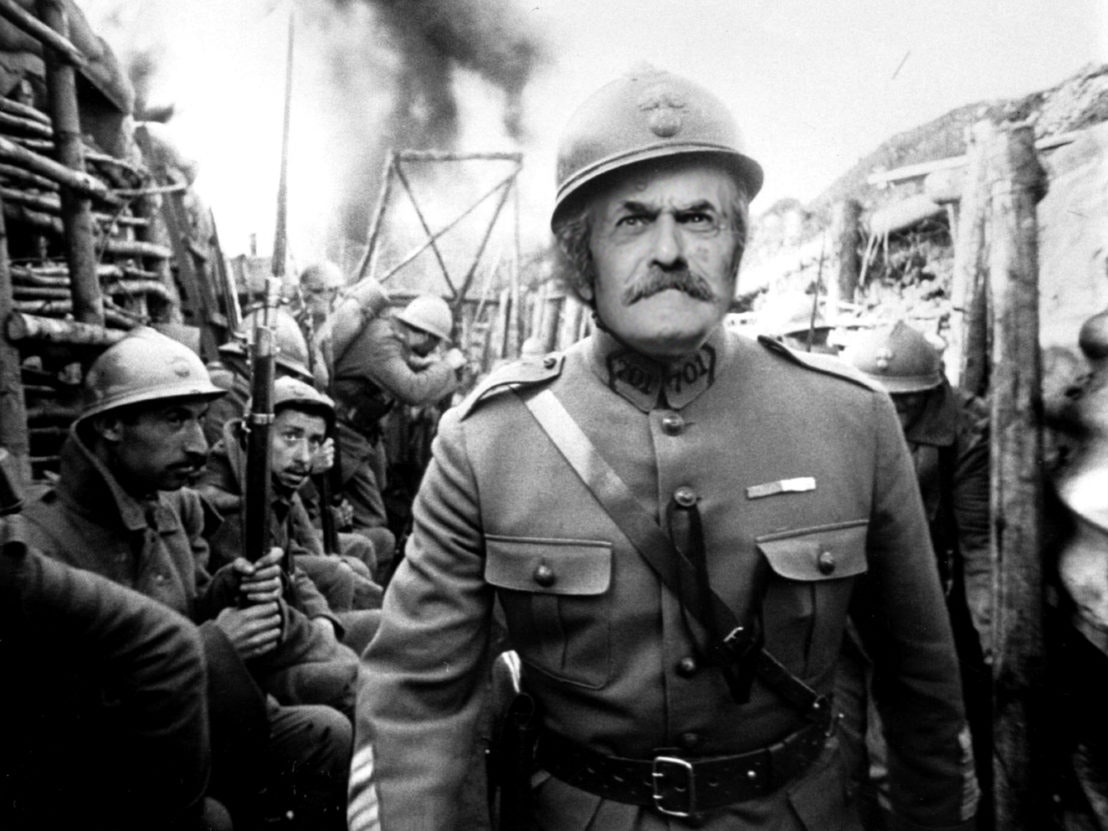
In 1945, a teenage Stanley Kubrick was given a job as staff photographer at Look magazine, where he published more than nine hundred striking images, most of them in the realist style of New York School street photography. By the end of the decade, he had taught himself to make movies, and with financial help from relatives, he became a pioneer of extremely low-budget, independent production. His first two features were the allegorical war picture Fear and Desire (1953) and the noir thriller Killer’s Kiss (1955), on both of which he served not only as producer and director but also as photographer, editor, and sound engineer. Then, in 1955, the preternaturally gifted Kubrick became a low-budget Hollywood director, joining forces with his contemporary the producer James B. Harris to make The Killing, a stylish heist film that was glowingly reviewed and much talked about within the industry but dumped into grind houses by its distributor, United Artists. His second film with Harris, a return to the theme of war, was even more impressive; Paths of Glory (1957), a scathing depiction of the murderous, face-saving machinations of an officer class, secured the young Kubrick’s reputation as a major talent.
The film originated when, on the strength of The Killing, Harris and Kubrick were briefly hired by MGM, where they proposed several projects that were rejected by the studio. Among these was an adaptation of Humphrey Cobb’s 1935 novel Paths of Glory, which Kubrick remembered having read in his father’s library as a teenager. Inspired by a New York Times story about five French soldiers in World War I who were executed by firing squad, the novel provided a harrowing account of trench warfare and an appalling picture of how generals treated their troops as cannon fodder. Playwright Sydney Howard had authored a Broadway adaptation in 1938, but by the mid-1950s, the book was virtually forgotten. Despite Kubrick’s enthusiasm, MGM turned the idea down, chiefly because it feared such a film would have difficulty getting distribution in Europe. Undeterred, Kubrick continued to develop a screenplay, aided by pulp novelist Jim Thompson, who had worked on The Killing, and playwright and novelist Calder Willingham, who had contributed to other unproduced Harris-Kubrick projects at MGM. This document ultimately came to the attention of a powerful and intelligent star: the muscular, dimple-chinned, intensely emotional Kirk Douglas, who was so impressed by it and by Kubrick’s work on The Killing that he offered to take the leading role and to pressure United Artists into financing the film under the auspices of his own company, Bryna Productions. With Douglas’s support, Paths of Glory went before the cameras on locations near Munich, Germany, budgeted at $1 million, more than a third of which went to the star. Harris and Kubrick agreed to work for a percentage of the profits, if profits ever came.

The completed film is strongly marked by what came to be known as Kubrick’s style and favored themes: a mesmerizing deployment of wide-angle tracking shots and long takes, an ability to make a realistic world seem strange, an interest in the grotesque, and a fascination with the underlying irrationality of supposedly rational planning. World War I was a particularly apt subject for Kubrick: generated by a meaningless tangle of nationalist alliances, it resulted in more than eight million military deaths, most caused by benighted politicians and generals who arranged massive bombardments and suicidal charges over open ground. Significantly, the concept of black humor, which is central to Kubrick’s work, was first articulated by the protosurrealist Jacques Vaché, a veteran of trench warfare in World War I, and yet of the several major films about the war, only Paths of Glory depicts the conflict in all its cruel, almost laughably absurd logic (All Quiet on the Western Front, Grand Illusion, The Dawn Patrol, and Sergeant York are humanistic, romantic, or patriotic by comparison). No wonder Luis Buñuel was among its passionate admirers.
To find anything similar to this attitude toward war, we need to consult Kubrick’s other films on the subject. In most cases, he underlines war’s absurdity by making the true conflict internecine and the ostensible enemy either semi-invisible or nearly indistinguishable from the story’s protagonists. In Fear and Desire, the paradigmatic instance, the same actors play both sides in a mysterious battle, as if the film were trying to illustrate a famous line from Walt Kelly’s Pogo: “We have met the enemy and he is us.” On the rare occasions when Kubrick’s soldiers have a close encounter with an Other from behind the lines, that person is either a doppelgänger or a woman. In Paths of Glory, the enemy is almost unseen, consisting mainly of lethal gunfire emanating from the smoke and darkness of no-man’s-land. The film differs from Kubrick’s normal pattern only in that, when French soldiers encounter a female German captive, she’s less an object of perverse desire and anxiety—as in Fear and Desire and Full Metal Jacket (1987)—than a maternal figure, producing a flood of repressed emotion and a momentary dissolution of psychic and bodily armor.
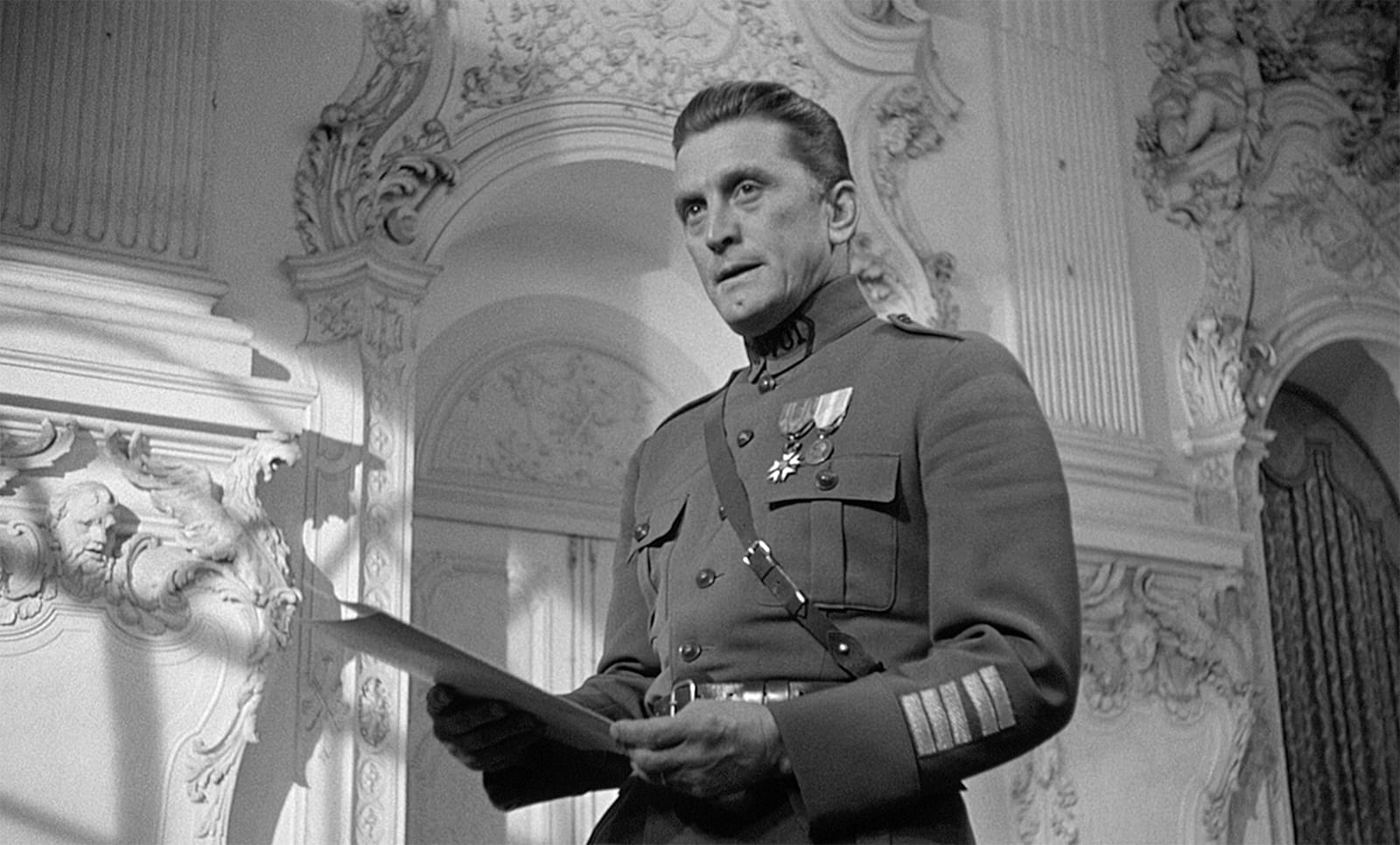
In one important way, however, Paths of Glory is quite atypical of Kubrick. Apart from Spartacus (1960), which also stars Kirk Douglas and over which Kubrick had relatively little control, it’s the only film he directed that has a protagonist with whom the audience can feel a straightforward, unproblematic identification. Colonel Dax, as portrayed by Douglas, is a loyal officer of a corrupt regime, but in most other ways he’s a paragon of heroic virtue. Handsome and brave, he takes the lead in a useless charge on the heavily fortified “Anthill,” picking his way through a withering storm of gunfire, crawling over casualties, and returning to the trench to try to rally reinforcements. Before the war, he happens also to have been “perhaps the foremost criminal lawyer in all of France.” When three enlisted men are arbitrarily selected to be executed for cowardice, he passionately and eloquently comes to their defense. After the executions, he denounces the general in charge in patented Douglas style, body and face contorted and voice pitched somewhere between a sob and a shout: “You’re a degenerate, sadistic old man and you can go to hell before I ever apologize to you again!”
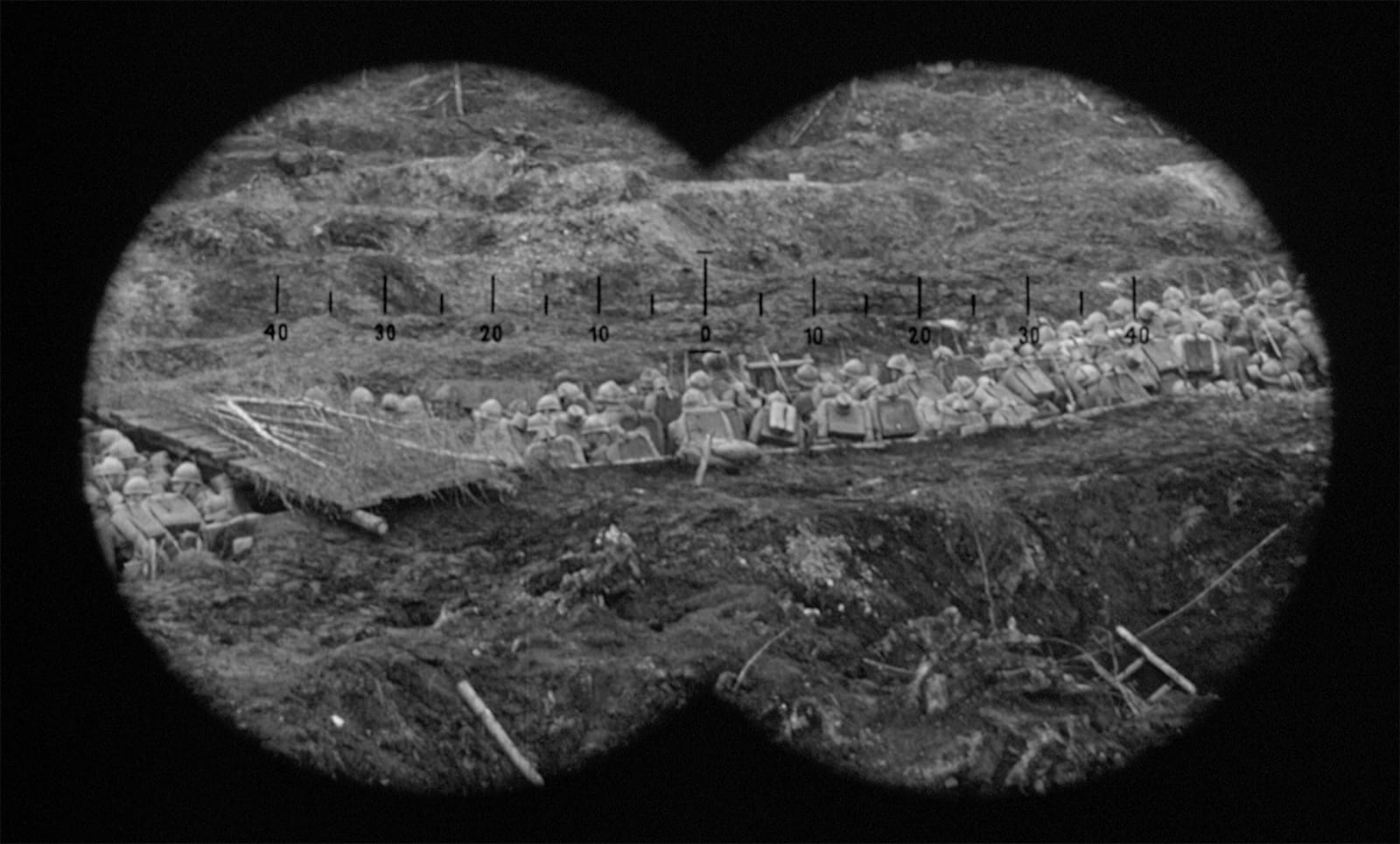
Neither Cobb’s novel nor the theatrical adaptation by Howard is so much like a melodrama—a form Kubrick usually avoided but one basic to the liberal social-problem pictures in which Douglas was interested. Both earlier versions end abruptly with the executions (presented offstage in the play), and in neither does Dax lead a charge across no-man’s-land and serve as defense attorney at the court-martial. Cobb’s description of the attack on the German position, which he calls “the Pimple,” lacks even a trace of heroic spectacle. The film, on the other hand, is a star vehicle, giving Douglas the opportunity for derring-do. It even obeys the unwritten rule of most Kirk Douglas movies after his breakthrough role in Champion (1949): at some point, he will be seen without his shirt, as in his opening scene here, which has no equivalent in the novel or play.
At one stage, the screenplay was even more melodramatic. In his autobiography, Douglas says that when the production moved to Munich, Kubrick tried to reinstate the earlier version of the script by him and Thompson, which ended with a last-minute reprieve of the three condemned soldiers. Douglas flew into a rage and insisted on the version he had originally read. This contained revisions by Willingham, who, before his death in 1995, claimed that he was the author of “99 percent” of Paths of Glory. Actually, the final screenplay retains a good deal of Kubrick and Thompson, plus many important lines from Cobb’s novel. Thompson’s biographer, Robert Polito, shrewdly suggests that in momentarily proposing the other version, Kubrick may have been playing “ego chess” with Douglas, hoping to avoid further buildup of the star’s role. (In an unpublished 1962 interview with Terry Southern, Kubrick admitted there had been a discussion about reverting to the earlier screenplay—which, in addition to saving the three men, makes Dax a more ambiguous character—but denied that he ever seriously intended a happy ending: “There were some people who said you’ve got to save the men, but of course it was out of the question . . . It would just be pointless. Also, [the executions] really happened.”)
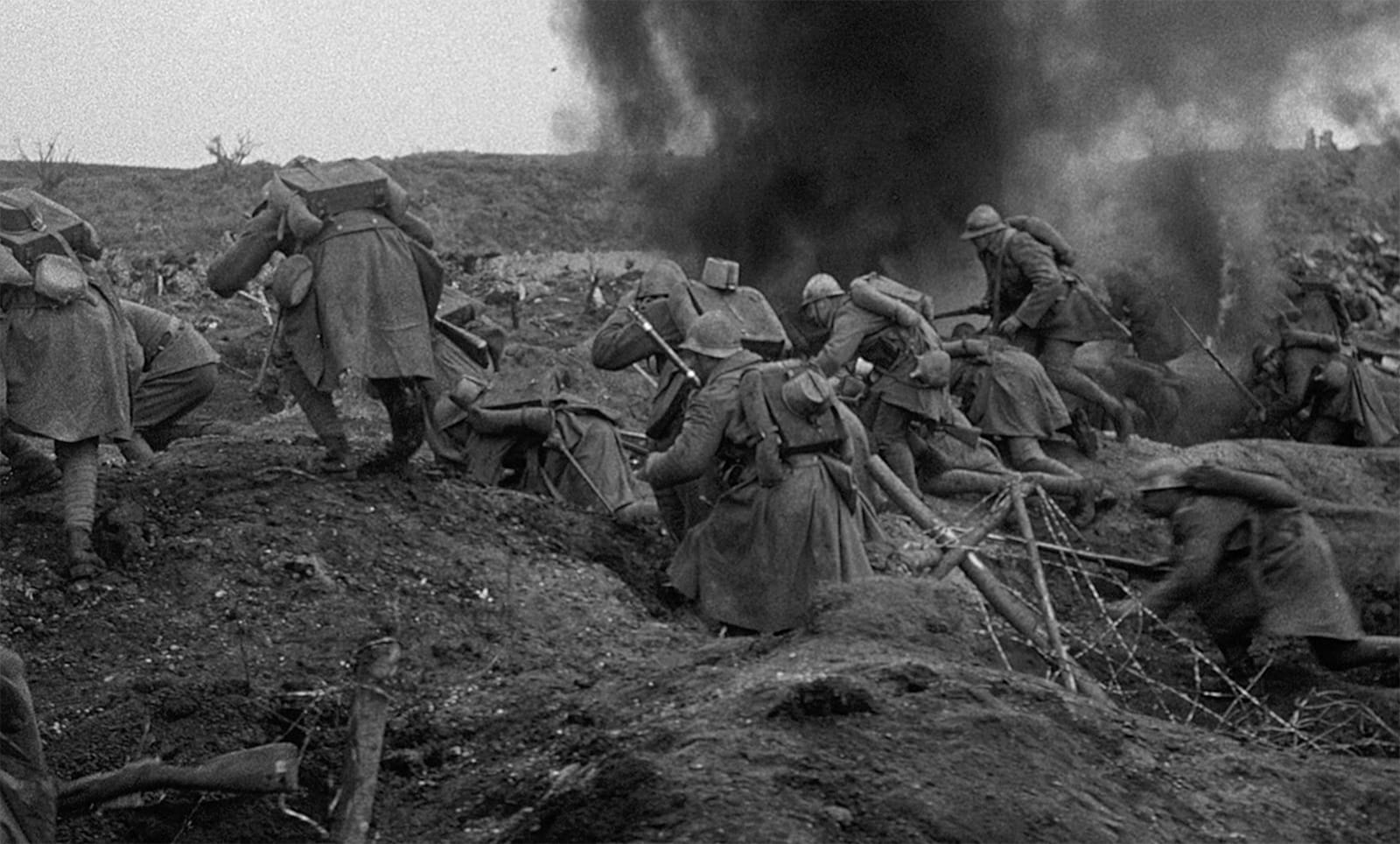
Whatever the case, there was a productive conflict between Douglas, who in print has called the director a “talented shit,” and Kubrick, whose lifelong motto might have been “silence, exile, and cunning.” Douglas was a flamboyant personality whose acting style and worldview lent themselves to melodramatic effects, whereas Kubrick was a dark, reclusive satirist who tended to parody or “quote” melodrama, as in such later films as Lolita (1962), Dr. Strangelove (1964), A Clockwork Orange (1972), and Barry Lyndon (1975). Between them, they fashioned a dark, emotionally disturbing film in which Douglas serves as the voice of reason and liberal humanism, tempering Kubrick’s harsh, traumatic view of European history.
The film received extraordinarily favorable reviews and gained Kubrick considerable cultural, if not financial, capital. (Unfortunately, MGM had been right about the European market. Paths of Glory was such a powerful indictment of military arrogance that the French government managed to have it dropped from the Berlin Film Festival and banned in France and Switzerland for two decades.) In a sense, Kubrick had won his battle for authorship, because what most people remember about the film is not so much the heroism of Colonel Dax as the grim photographic grisaille of trench warfare and the execution of three innocent men in the name of patriotic honor.
Kubrick is especially good at drawing sharp visual and aural contrasts between the château where the generals plan the war and the trenches where the war is fought. The Schleissheim Palace outside Munich, where much of the action takes place, later became a location for another film that depicts upper-class intrigues amid the architecture of a decadent past—Alain Resnais’ Last Year at Marienbad—and the opening sequence in the palace interior, where Adolphe Menjou suavely manipulates the ramrod stiff but insecure George Macready, was influenced by one of Kubrick’s favorite directors, Max Ophuls, who had died on the day it was staged. The camera dollies around a large room filled with artifacts of empire, engaging in a perversely Ophulsian choreography, while Kubrick, with the aid of cameraman George Krause, draws on his news photographer experience, making good use of natural light, deep-focus compositions, and sonic reverberations. In contrast, the trench warfare involves a signature Kubrick effect: wide-angle, almost phallic tracking shots down a sinister corridor or demonic tunnel. Dax’s march through the trench in preparation for an attack, lasting approximately two minutes and containing eight cuts, is an iconic moment for both the film and the director. Everything is in shades of gray, and the weary men along either side of the trench (played by a German police unit) have a sharply individuated, almost documentary authenticity. Dax walks grimly forward amid the rushing, high-pitched screams of inbound shells and earsplitting explosions that scatter shrapnel. In the penultimate shot, the camera, assuming his point of view, moves through a cloud of smoke in which only a few ghostly figures are visible, as if it were journeying into an underworld where the men are already dead.
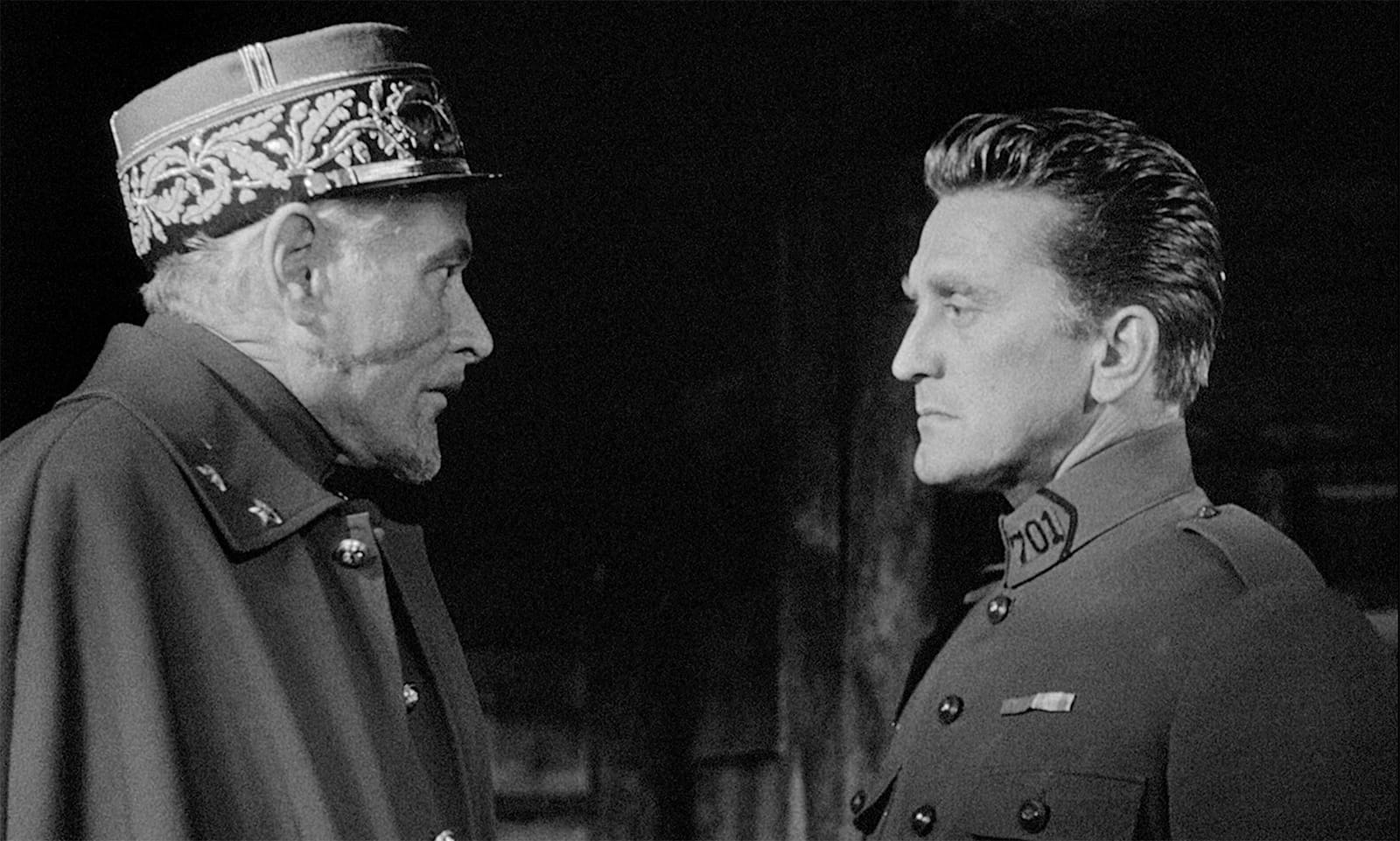
The ceremony of execution, seen against the background of the château, gains impact from Kubrick’s deliberate pacing and dynamic manipulation of wide-angle perspectives. The camera advances slowly and inexorably toward the three stakes where the men are tied, and the elaborately drawn-out ritual, staged on a parade ground filled with military and civilian observers, looks obscenely overblown. The château looms like a confirmation of Walter Benjamin’s theory that every achievement of advanced civilization is also a monument to barbarism, but when the shooting happens, its ruthless efficiency and brutality are faced square on, with no picturesque embellishment.
After this horror, the audience is given a moment of relief when the German captive (Susanne Christian, who became Mrs. Stanley Kubrick) sings to a group of rowdy soldiers. The scene was written by Willingham over Kubrick’s initial objection, but its success has more to do with the director’s taste than with the writing. Kubrick avoids sentimentality by virtue of naturalistic lighting, nicely selected close-ups of nonprofessional faces, and skillful modulation from a mood of carnival to a mood of grief. The song, rendered in soft, amateurish fashion, is Frantzen-Gustav Gerdes’s “The Faithful Hussar,” which dates from the Napoleonic period. The French soldiers seem to understand the German lyrics, which end with “Oh please, Mother, bring a light, / My sweetheart is going to die” (my translation). Immediately afterward, Colonel Dax is informed that his troops have been ordered back into action. Gerald Fried’s nondiegetic music picks up Gerdes’s sweet melody, orchestrating it as a military march. The shattering film has offered only a brief nostalgic interlude before the barbaric system reasserts itself.

James Naremore, 2010
2001 (1968)
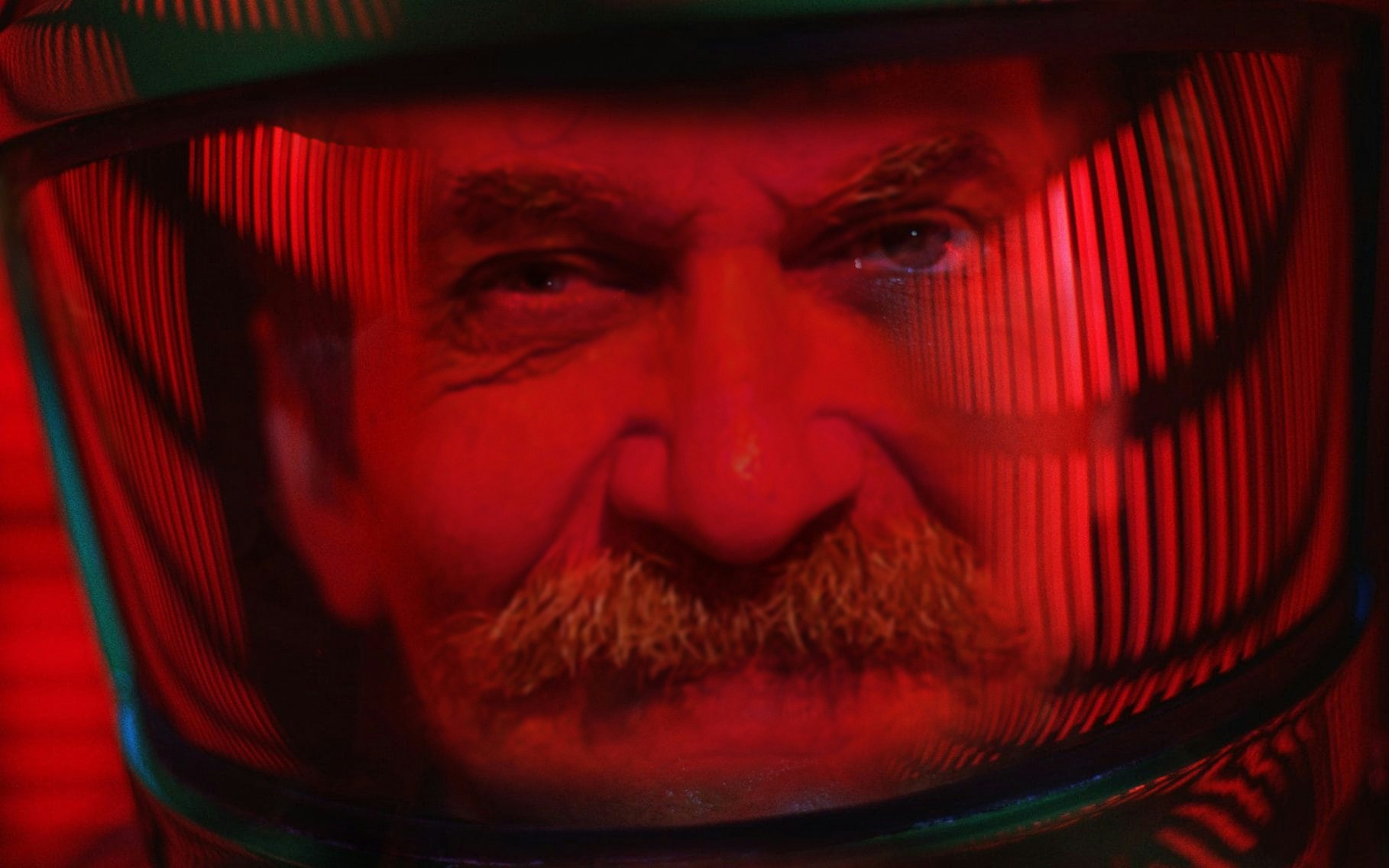
The genius is not in how much Stanley Kubrick does in "2001: A Space Odyssey," but in how little. This is the work of an artist so sublimely confident that he doesn't include a single shot simply to keep our attention. He reduces each scene to its essence, and leaves it on screen long enough for us to contemplate it, to inhabit it in our imaginations. Alone among science-fiction movies, “2001" is not concerned with thrilling us, but with inspiring our awe.

No little part of his effect comes from the music. Although Kubrick originally commissioned an original score from Alex North, he used classical recordings as a temporary track while editing the film, and they worked so well that he kept them. This was a crucial decision. North's score, which is available on a recording, is a good job of film composition, but would have been wrong for “2001" because, like all scores, it attempts to underline the action -- to give us emotional cues. The classical music chosen by Kubrick exists outside the action. It uplifts. It wants to be sublime; it brings a seriousness and transcendence to the visuals.
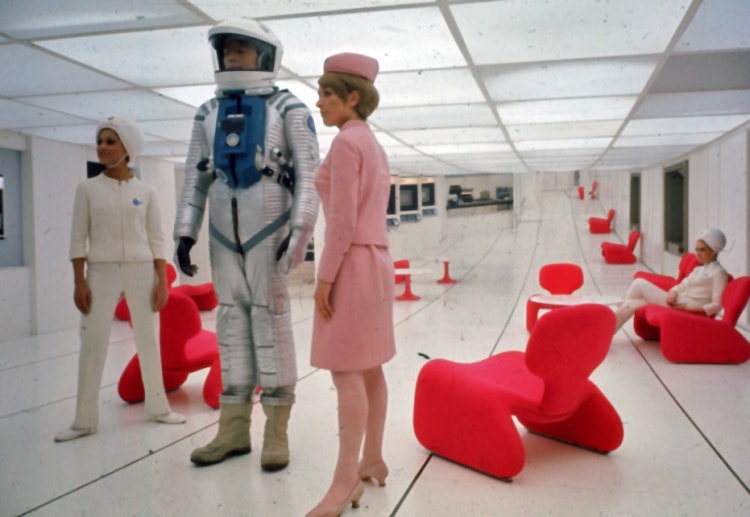
Consider two examples. The Johann Strauss waltz “Blue Danube,'' which accompanies the docking of the space shuttle and the space station, is deliberately slow, and so is the action. Obviously such a docking process would have to take place with extreme caution (as we now know from experience), but other directors might have found the space ballet too slow, and punched it up with thrilling music, which would have been wrong.
We are asked in the scene to contemplate the process, to stand in space and watch. We know the music. It proceeds as it must. And so, through a peculiar logic, the space hardware moves slowly because it's keeping the tempo of the waltz. At the same time, there is an exaltation in the music that helps us feel the majesty of the process.
Now consider Kubrick's famous use of Richard Strauss' “Thus Spake Zarathustra.'' Inspired by the words of Nietzsche, its five bold opening notes embody the ascension of man into spheres reserved for the gods. It is cold, frightening, magnificent.
The music is associated in the film with the first entry of man's consciousness into the universe - -and with the eventual passage of that consciousness onto a new level, symbolized by the Star Child at the end of the film. When classical music is associated with popular entertainment, the result is usually to trivialize it (who can listen to the “William Tell Overture'' without thinking of the Lone Ranger?). Kubrick's film is almost unique in enhancing the music by its association with his images.
I attended the Los Angeles premiere of the film, in 1968, at the Pantages Theater. It is impossible to describe the anticipation in the audience adequately. Kubrick had been working on the film in secrecy for some years, in collaboration, the audience knew, with author Arthur C. Clarke, special-effects expert Douglas Trumbull and consultants who advised him on the specific details of his imaginary future -- everything from space station design to corporate logos. Fearing to fly and facing a deadline, Kubrick had sailed from England on the Queen Elizabeth, doing the editing while on board, and had continued to edit the film during a cross-country train journey. Now it finally was ready to be seen.
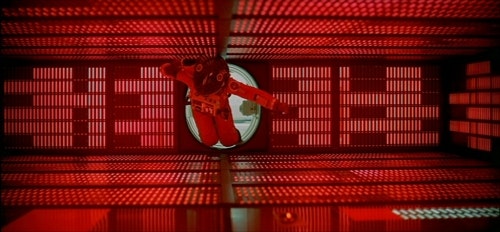
To describe that first screening as a disaster would be wrong, for many of those who remained until the end knew they had seen one of the greatest films ever made. But not everyone remained. Rock Hudson stalked down the aisle, complaining, “Will someone tell me what the hell this is about?'' There were many other walkouts, and some restlessness at the film's slow pace (Kubrick immediately cut about 17 minutes, including a pod sequence that essentially repeated another one).
The film did not provide the clear narrative and easy entertainment cues the audience expected. The closing sequences, with the astronaut inexplicably finding himself in a bedroom somewhere beyond Jupiter, were baffling. The overnight Hollywood judgment was that Kubrick had become derailed, that in his obsession with effects and set pieces, he had failed to make a movie.
What he had actually done was make a philosophical statement about man's place in the universe, using images as those before him had used words, music or prayer. And he had made it in a way that invited us to contemplate it -- not to experience it vicariously as entertainment, as we might in a good conventional science-fiction film, but to stand outside it as a philosopher might, and think about it.
The film falls into several movements. In the first, prehistoric apes, confronted by a mysterious black monolith, teach themselves that bones can be used as weapons, and thus discover their first tools. I have always felt that the smooth artificial surfaces and right angles of the monolith, which was obviously made by intelligent beings, triggered the realization in an ape brain that intelligence could be used to shape the objects of the world.
The bone is thrown into the air and dissolves into a space shuttle (this has been called the longest flash-forward in the history of the cinema). We meet Dr. Heywood Floyd (William Sylvester), en route to a space station and the moon. This section is willfully anti-narrative; there are no breathless dialogue passages to tell us of his mission. Instead, Kubrick shows us the minutiae of the flight: the design of the cabin, the details of in-flight service, the effects of zero gravity.
Then comes the docking sequence, with its waltz, and for a time even the restless in the audience are silenced, I imagine, by the sheer wonder of the visuals. On board, we see familiar brand names, we participate in an enigmatic conference among the scientists of several nations, we see such gimmicks as a videophone and a zero-gravity toilet.

The sequence on the moon (which looks as real as the actual video of the moon landing a year later) is a variation on the film's opening sequence. Man is confronted with a monolith, just as the apes were, and is drawn to a similar conclusion: This must have been made. And as the first monolith led to the discovery of tools, so the second leads to the employment of man's most elaborate tool: the spaceship Discovery, employed by man in partnership with the artificial intelligence of the onboard computer, named HAL 9000.
Life onboard the Discovery is presented as a long, eventless routine of exercise, maintenance checks and chess games with HAL. Only when the astronauts fear that HAL's programming has failed does a level of suspense emerge; their challenge is somehow to get around HAL, which has been programmed to believe, “This mission is too important for me to allow you to jeopardize it.'' Their efforts lead to one of the great shots in the cinema, as the men attempt to have a private conversation in a space pod, and HAL reads their lips. The way Kubrick edits this scene so that we can discover what HAL is doing is masterful in its restraint: He makes it clear, but doesn't insist on it. He trusts our intelligence.
Later comes the famous “star gate'' sequence, a sound and light journey in which astronaut Dave Bowman (Keir Dullea) travels through what we might now call a wormhole into another place, or dimension, that is unexplained. At journey's end is the comfortable bedroom suite in which he grows old, eating his meals quietly, napping, living the life (I imagine) of a zoo animal who has been placed in a familiar environment. And then the Star Child.
There is never an explanation of the other race that presumably left the monoliths and provided the star gate and the bedroom. “2001'' lore suggests Kubrick and Clarke tried and failed to create plausible aliens. It is just as well. The alien race exists more effectively in negative space: We react to its invisible presence more strongly than we possibly could to any actual representation.
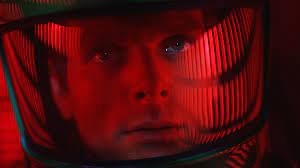
“2001: A Space Odyssey'' is in many respects a silent film. There are few conversations that could not be handled with title cards. Much of the dialogue exists only to show people talking to one another, without much regard to content (this is true of the conference on the space station). Ironically, the dialogue containing the most feeling comes from HAL, as it pleads for its “life'' and sings “Daisy.''
The film creates its effects essentially out of visuals and music. It is meditative. It does not cater to us, but wants to inspire us, enlarge us. Nearly 30 years after it was made, it has not dated in any important detail, and although special effects have become more versatile in the computer age, Trumbull's work remains completely convincing -- more convincing, perhaps, than more sophisticated effects in later films, because it looks more plausible, more like documentary footage than like elements in a story.
Only a few films are transcendent, and work upon our minds and imaginations like music or prayer or a vast belittling landscape. Most movies are about characters with a goal in mind, who obtain it after difficulties either comic or dramatic. “2001: A Space Odyssey'' is not about a goal but about a quest, a need. It does not hook its effects on specific plot points, nor does it ask us to identify with Dave Bowman or any other character. It says to us: We became men when we learned to think. Our minds have given us the tools to understand where we live and who we are. Now it is time to move on to the next step, to know that we live not on a planet but among the stars, and that we are not flesh but intelligence.
THE HARDER THEY COME (1972)
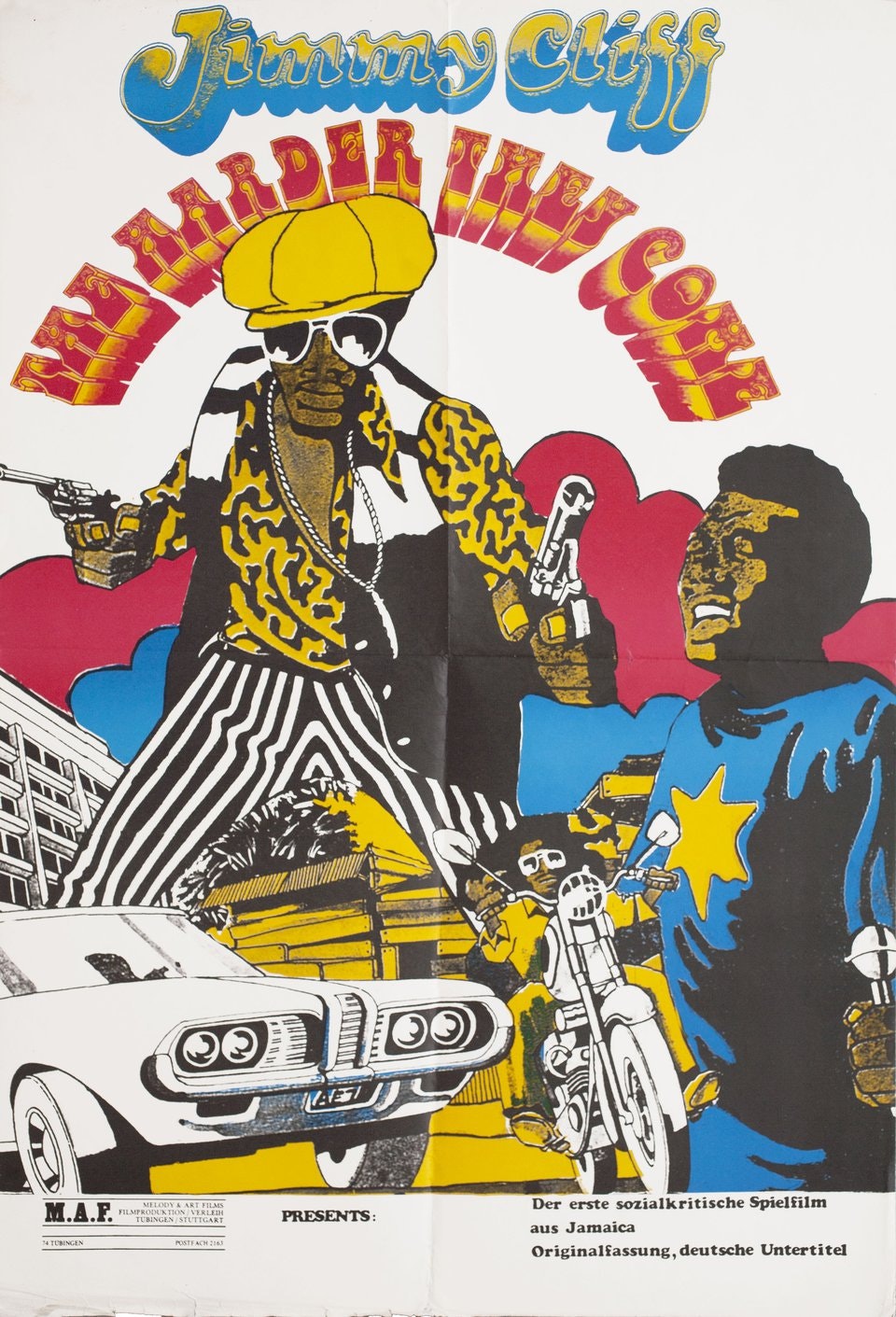
A brash bumpkin from the countryside comes to the city, dreaming of stardom. He cuts a record, gets ripped off, turns to trafficking drugs, is betrayed, and dies a folk hero at the hands of the police as his song becomes an anthem.
“The Harder They Come,” is a universal story set in a highly specific milieu. Powered by one of the most infectious scores in the history of cinema, it is also a pop classic — the movie that brought reggae to America and “launched a thousand spliffs,” as the New York Times critic Ben Brantley joked in a 2008 review of a theatrical version in London.
Inspired by the life of the Jamaican outlaw Ivanhoe “Rhygin” Martin, credited with the line that gives the movie its title, “The Harder They Come” was a vehicle for the reggae star Jimmy Cliff. It was independent Jamaica’s first homemade feature, as well as the first film directed by Perry Henzell, a scion of that nation’s white planter class. The distinguished black playwright Trevor Rhone co-wrote the script. (“The Harder They Come” is being shown in conjunction with the theatrical release of Henzell’s long-delayed follow-up, “No Place Like Home,” which is also at BAM.)
Beginner’s luck — or lack of same — might almost be the movie’s subject. Robbed upon arrival in Kingston, Ivan Martin (Cliff) founders at first in the urban maelstrom. Social conditions are manifest in documentary-type shots, filmed in 16 millimeter, of poverty and desperation. Ivan finds his footing only to mix it up with an assortment of predatory preachers, mercenary record producers, corrupt cops and miscellaneous hustlers. In the background, Toots & the Maytals, Desmond Dekker, Cliff and others sing a collective siren song of fame. Chased by the police, Ivan creates his own legend, leaving graffiti (“I am here — I am everywhere”) and imagining an audience for his last stand.
A movie of abrupt transitions, “The Harder They Come” appears to have been assembled piecemeal and shot off the cuff. Cliff, who wrote the title song, has described the film changing direction while in production. In an article published in The Caribbean Quarterly in 2015, the cinematographer Franklyn St. Juste said he never saw a script: “I really didn’t know what was happening — and what was going to happen from one scene to the next or from one setup to the next.” But the spontaneity proved a recipe for what St. Juste termed “happy accidents.”
The timing was also fortuitous. The film arrived on the international scene in the wake of “Shaft” (1971) and “Superfly” (1972), with a hero akin to the righteous outlaws in films like the Brazilian director Glauber Rocha’s “Antonio das Mortes” (1969), Melvin Van Peebles’s “Sweet Sweetback’s Baadasssss Song” (1971) and numerous Italian westerns. (It’s hardly coincidental that Ivan goes to see “Django,” Sergio Corbucci’s 1966 evergreen.) For early audiences, Ivan’s willingness to defy authority at the cost of his life evoked Bonnie and Clyde, the Black Panthers and Che Guevara.
After making a splash at the 1972 Venice Film Festival, “The Harder They Come” was picked up by Roger Corman’s New World Pictures; it opened (with English subtitles, because of the particularly thick Jamaican patois) to some success at a Broadway theater in February 1973 and enjoyed a second run as an exploitation film. (I saw it that summer in Florida on a double bill with the Pam Grier prison movie “Black Mama, White Mama.”) It would soon have a third life. In a 1974 piece titled “Films That Refuse to Fade Away,” the New York Times critic Vincent Canby noted the movie’s popularity as a midnight attraction.
As reported by Canby, “The Harder They Come” ran for 26 weeks at the Orson Welles Cinema in Cambridge, Mass., in 1973. A true cult film, it was brought back in 1974, where, as Jonathan Rosenbaum and I wrote in our book “Midnight Movies,” it remained another seven years. In April 1976, The Times ran an article, noting that “The Harder They Come” had played 80 consecutive weekends at the Elgin Theater in Chelsea. (The run would continue there for months.)
That film’s director, Franco Rosso, named “The Harder They Come” as his inspiration. “Babylon” (1980) might be a sequel, focusing on West Indian life in London. An immersive, verité-style movie following a disaffected young singer of a homegrown reggae group, it uses a constant flow of music to animate the struggle for survival in a hostile white world. “The movie is more interested in what feels right than what seems right,” the critic Wesley Morris wrote in his review for The Times.In his enthusiasm, Canby called “The Harder They Come” “a more revolutionary black film than any number of American efforts, including ‘Sweet Sweetback’s Baadasssss Song.’” In any case, “The Harder They Come” provided a model for later movies, most notably the 1980 British film “Babylon,”
THE MOUNTAIN OF THE CANNIBAL GOD (AKA THE SLAVE OF THE CANNIBAL GOD) (1978)
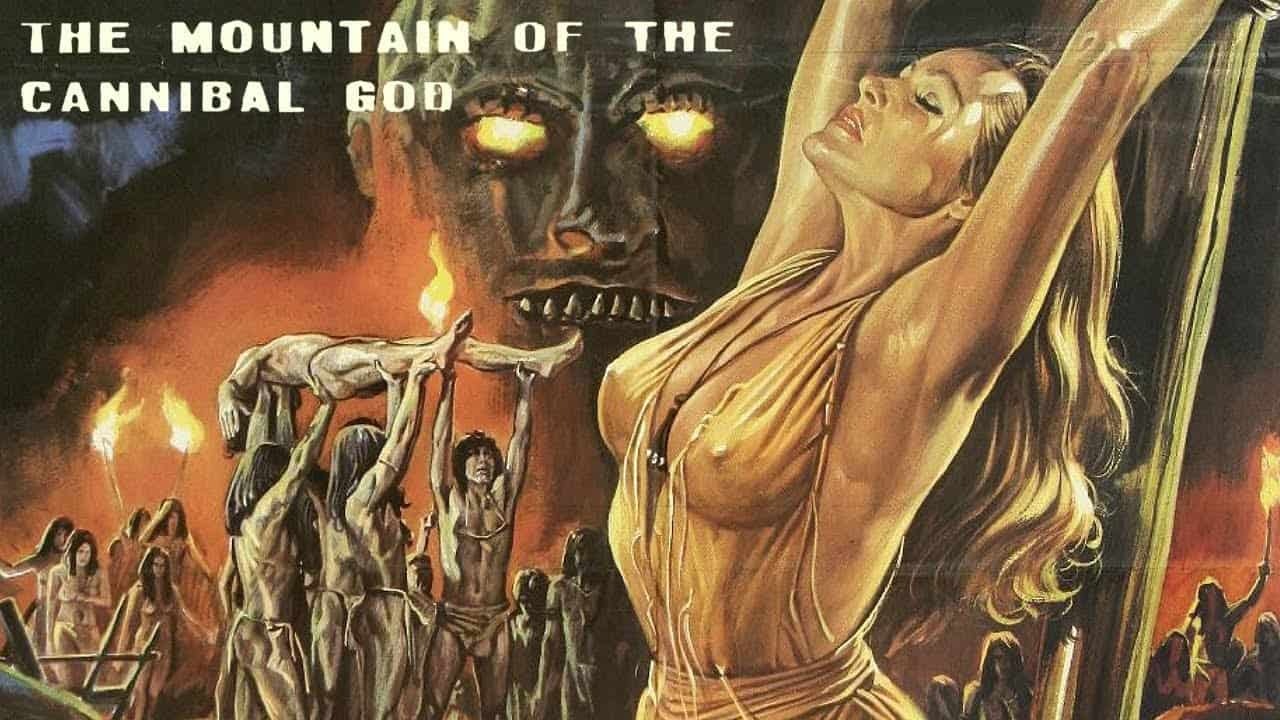
he Mountain of The Cannibal God belongs to the Italian cannibal movie subgenre that briefly flourished during the late 70s and early 80’s, which still hold the power to shock – and repulse – like few horror flicks can. These movies typically feature a group of explorers setting off on a wacky adventure into the jungle, before running afoul of a native tribe that has unique plans for dinner. The ingredients of these movies involve stomach-churning gore, scenes of sexual violence and real-life animal cruelty, with Cannibal Holocaust considered the most powerful the genre has to offer.
So basically, they’re not really fluffy pizza and beer movies, though The Mountain Of The Cannibal God is probably one of the ‘lighter’ entries. The story kicks into gear when a rich wife (Ursula Andress) hires a tribal expert (Stacy Keach) to help her find her missing husband in the jungles of New Guinea. Andress and co descend ever deeper into hell, and in addition to surviving the jungle with its killer animals and harsh terrain, they find themselves under attack by a literal bloodthirsty tribe.
While The Mountain Of The Cannibal God is more of an adventure than other movies in the genre, that doesn’t mean it skimps on bloodshed. Heads – and other body parts – are hacked off with gusto, and the camera doesn’t shy away from the details when the dinner bell rings. The movie is also known for a few shots of unpleasant animal cruelty, such as a moment featuring a monkey being eaten by a snake.
Andress doesn’t make much of an impression in the lead role and mostly has the same reaction to everything, be it looking at a map or watching someone gets castrated. That said, her utter lack of dimension helps mask a good plot reveal. Thankfully Keach picks up the slack and is even borderline hunky as the expert who is haunted by a past experience with the tribe. The movie really builds to the reveal of the tribe too, and they’re pretty creepy when it keeps them in the shadows.
The Mountain Of The Cannibal God finds time to slip in plenty of sleaze too, with lingering shots of Andress getting oiled up by natives, or shots of masturbation and bestiality in the third act. The movie can be a touch grueling at times, but in terms of pace it rarely drags, and Sergio Martino does a solid job in the director’s chair.
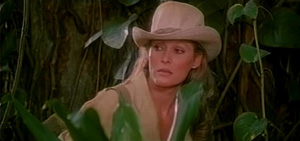
THE EXORCIST (1973)
The year 1973 began and ended with cries of pain. It began with Ingmar Bergman’s “Cries and Whispers,” and it closed with William Friedkin’s “The Exorcist.” Both films are about the weather of the human soul, and no two films could be more different. Yet each in its own way forces us to look inside, to experience horror, to confront the reality of human suffering. The Bergman film is a humanist classic. The Friedkin film is an exploitation of the most fearsome resources of the cinema. That does not make it evil, but it does not make it noble, either.
The difference, maybe, is between great art and great craftsmanship. Bergman’s exploration of the lines of love and conflict within the family of a woman dying of cancer was a film that asked important questions about faith and death, and was not afraid to admit there might not be any answers. Friedkin’s film is about a twelve-year-old girl who either is suffering from a severe neurological disorder or perhaps has been possessed by an evil spirit. Friedkin has the answers; the problem is that we doubt he believes them.
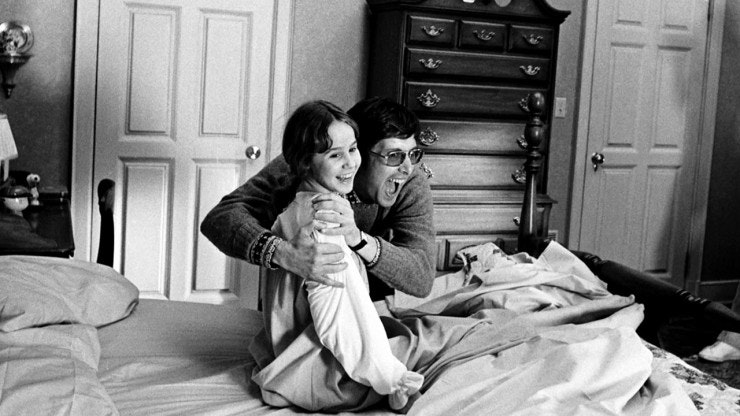
We don’t necessarily believe them ourselves, but that hardly matters during the film’s two hours. If movies are, among other things, opportunities for escapism, then “The Exorcist” is one of the most powerful ever made. Our objections, our questions, occur in an intellectual context after the movie has ended. During the movie there are no reservations, but only experiences. We feel shock, horror, nausea, fear, and some small measure of dogged hope.
Rarely do movies affect us so deeply. The first time I saw “Cries and Whispers,” I found myself shrinking down in my seat, somehow trying to escape from the implications of Bergman’s story. “The Exorcist” also has that effect--but we’re not escaping from Friedkin’s implications, we’re shrinking back from the direct emotional experience he’s attacking us with. This movie doesn’t rest on the screen; it’s a frontal assault.
The story is well-known; it’s adapted, more or less faithfully, by William Peter Blatty from his own bestseller. Many of the technical and theological details in his book are accurate. Most accurate of all is the reluctance of his Jesuit hero, Father Karras, to encourage the ritual of exorcism: “To do that,” he says, “I’d have to send the girl back to the sixteenth century.” Modern medicine has replaced devils with paranoia and schizophrenia, he explains. Medicine may have, but the movie hasn’t. The last chapter of the novel never totally explained in detail the final events in the tortured girl’s bedroom, but the movie’s special effects in the closing scenes leave little doubt that an actual evil spirit was in that room, and that it transferred bodies. Is this fair? I guess so; in fiction the artist has poetic license.
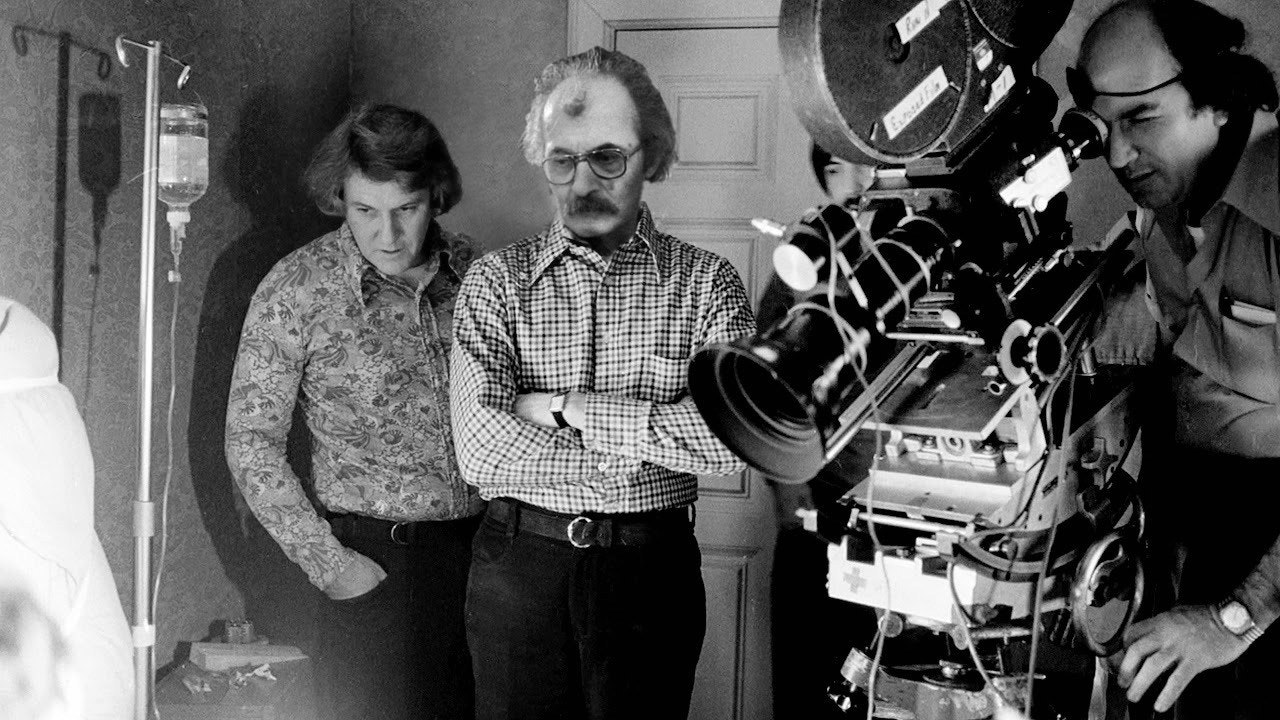
It may be that the times we live in have prepared us for this movie. And Friedkin has admittedly given us a good one. I’ve always preferred a generic approach to film criticism; I ask myself how good a movie is of its type. “The Exorcist” is one of the best movies of its type ever made; it not only transcends the genre of terror, horror, and the supernatural, but it transcends such serious, ambitious efforts in the same direction as Roman Polanski’s “Rosemary’s Baby.” Carl Dreyer’s “The Passion of Joan of Arc” is a greater film--but, of course, not nearly so willing to exploit the ways film can manipulate feeling.
“The Exorcist” does that with a vengeance. The film is a triumph of special effects. Never for a moment--not when the little girl is possessed by the most disgusting of spirits, not when the bed is banging and the furniture flying and the vomit is welling out--are we less than convinced. The film contains brutal shocks, almost indescribable obscenities. That it received an R rating and not the X is stupefying.
The performances are in every way appropriate to this movie made this way. Ellen Burstyn, as the possessed girl’s mother, rings especially true; we feel her frustration when doctors and psychiatrists talk about lesions on the brain and she knows there’s something deeper, more terrible, going on. Linda Blair, as the little girl, has obviously been put through an ordeal in this role, and puts us through one. Jason Miller, as the young Jesuit, is tortured, doubting, intelligent.
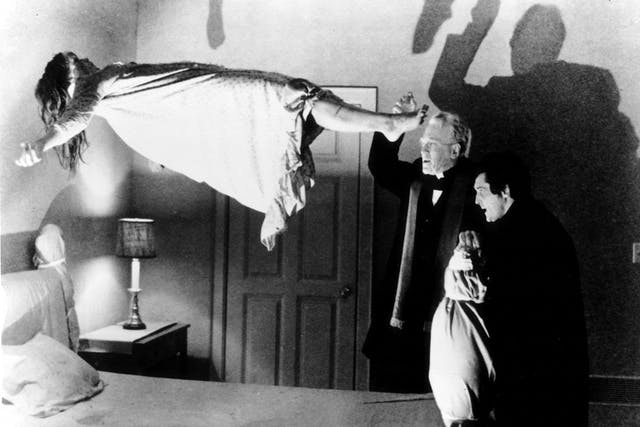
And the casting of Max von Sydow as the older Jesuit exorcist was inevitable; he has been through so many religious and metaphysical crises in Bergman’s films that he almost seems to belong on a theological battlefield the way John Wayne belonged on a horse. There’s a striking image early in the film
that has the craggy von Sydow facing an ancient, evil statue; the image doesn’t so much borrow from Bergman’s famous chess game between von Sydow and Death (in “The Seventh Seal”) as extend the conflict and raise the odds.
I am not sure exactly what reasons people will have for seeing this movie; surely enjoyment won’t be one, because what we get here aren’t the delicious chills of a Vincent Price thriller, but raw and painful experience. Are people so numb they need movies of this intensity in order to feel anything at all? It’s hard to say.
Even in the extremes of Friedkin’s vision there is still a feeling that this is, after all, cinematic escapism and not a confrontation with real life. There is a fine line to be drawn there, and “The Exorcist” finds it and stays a millimeter on this side.
Get your tickets: HERE
TO JOIN OUR MAILING LIST EMAIL US AT:
EMAIL: info@cine-real.com
INSTAGRAM - cinereal16mm
The Loneliness of the Long Distance Runner (1962)
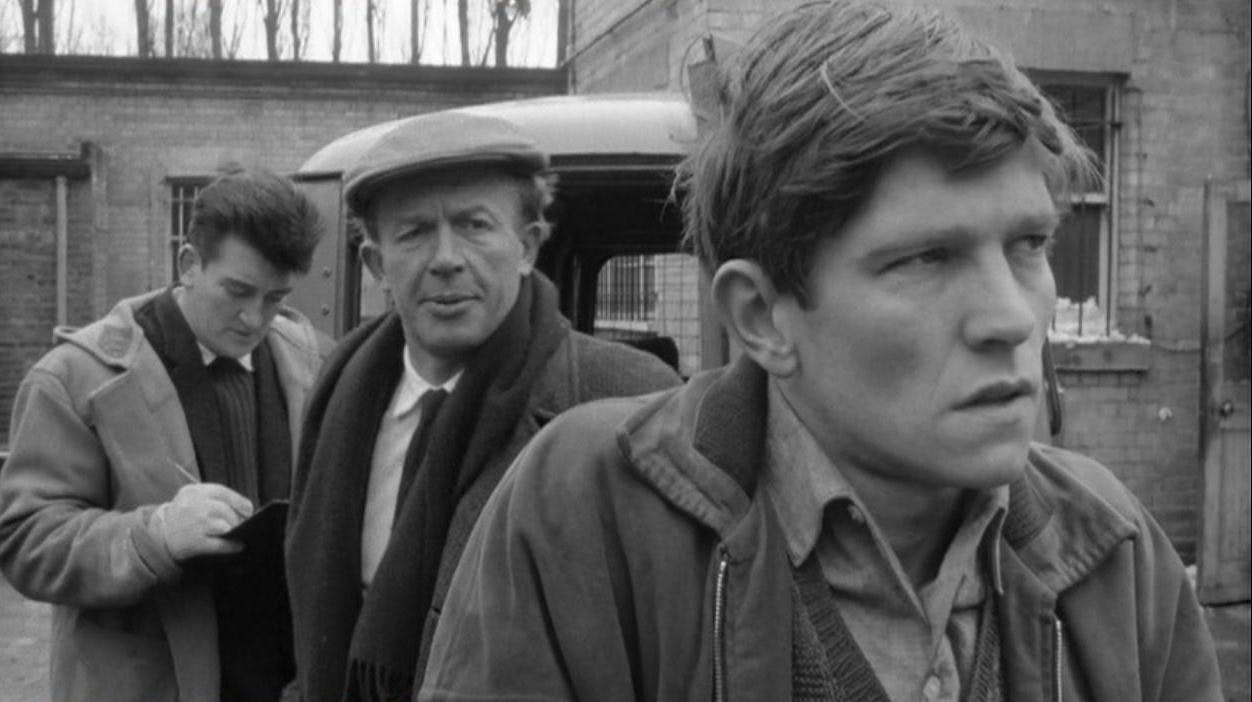
Though it never achieved quite the same level of accomplishment, or recognition, as its French counterpart, the British New Wave of the late Fifties and early Sixties nevertheless managed to produce a number of felicitious films, such as The Loneliness Of The Long Distance Runner.
Adapted for the screen by Alan Sillitoe from his own short story, the film relates the story of Colin Smith (Tom Courtenay), a rebellious and disaffected teenager, whose kicks against the pricks, along with some thievery, swiftly lead to borstal. There, his talent for cross country running is noticed - a talent which earns him both preferential treatment from the regime and the enmity of less favoured inmates.
Things come to a head when the governor (Michael Redgrave) has Colin enter a race against a group of local public schoolboys...
The British New Wave was always marked by apparent contradictions, not least the fact that predominantly public (ie, for the benefit of our American friends, private) school and Oxbridge educated filmmakers were seeking to make gritty and realistic - as the cliche invariably puts it - films about working-class life; a situation always likely to lead to touristic, impressionistic pieces that presented a world the director/auteur found a nice place to visit, but wouldn't want to live in.
Questions of class voyeurism aside, The Loneliness Of The Long Distance Runner works better than many of its peers, retaining its freshness and a degree of relevance 40 years on, thanks to the timeless, placeless main theme of rebellion-vs-conformity and the continuing fallout of debates over the influence of American/mass/consumer culture, as epitomised here by the villainous TV set (though oddly trad jazz - the subject of Richardson's earlier Free Cinema short, Momma Don't Allow - seems to be okay) on "the British way of life".
This said, Richardson displays a surprising affinity for the material, possibly the result of an insight that, be it boarding school, barrack room or borstal, Britain's "total institutions" - to use Irving Goffman's phrase - have always been much the same in terms of corrupt(ing) master/slave power relations.
But if anything contributes to its lasting influence, it's not all this political stuff, rather the brilliant performance by Tom Courtenay - all the more remarkable given his youth and inexperience in what was his film debut - and the beautiful, alternately poetic and documentary realist black-and-white, cinematography by Walter Lassally.
Look Back in Anger (1959)
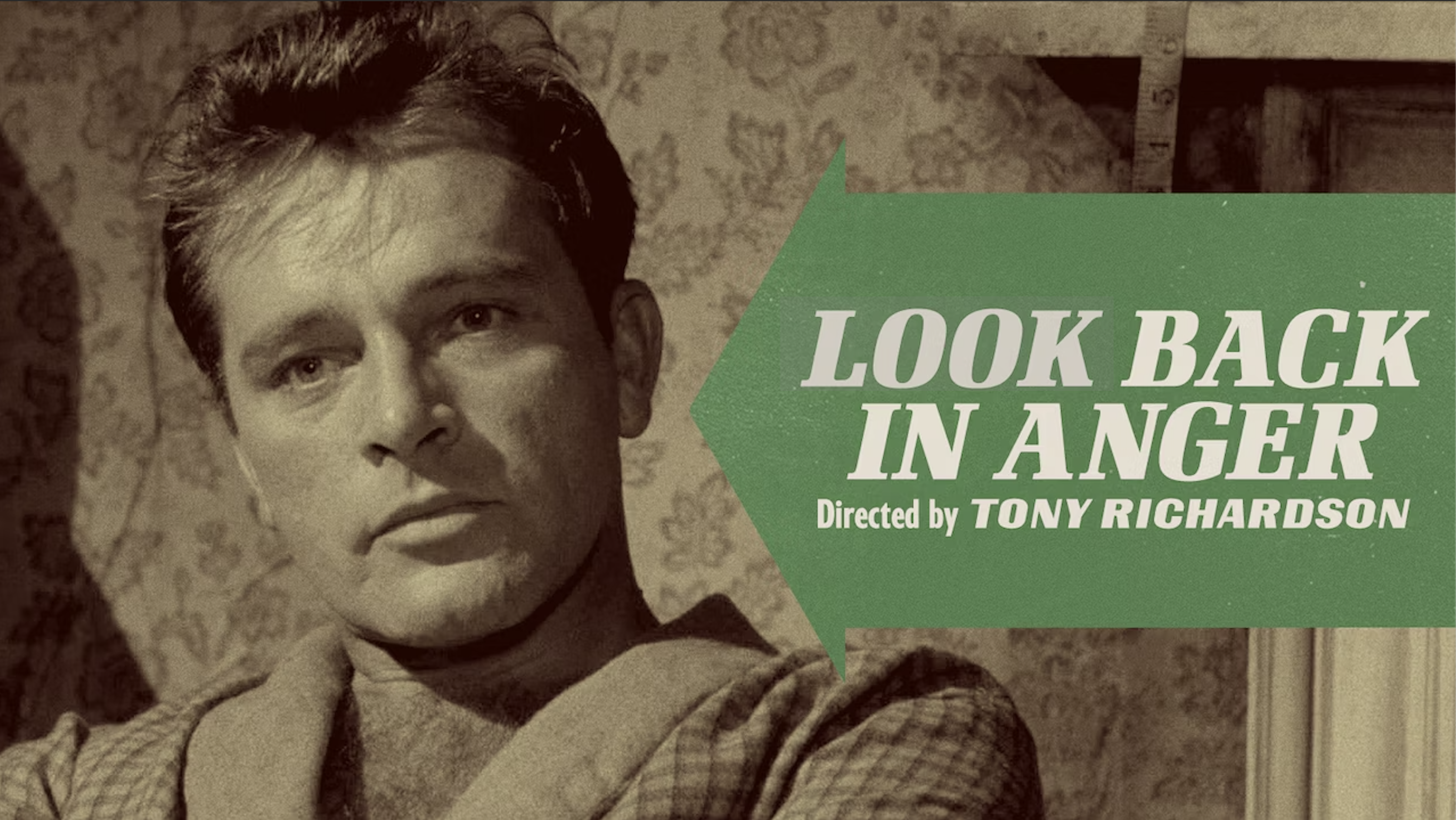
John Osborne’s theatre of cruelty and misery exploded on to the English stage in 1956. Look Back in Anger was adapted for the movie screen three years later by veteran writer and Quatermass creator Nigel Kneale and directed by Tony Richardson. It now has a cinema rerelease, and maybe what it reminded me of right away was Robert Hamer’s It Always Rains on Sunday. In this film, it always seems to be Sunday, and it’s raining. The sheer choking sadness of the postwar British Sabbath is what comes across here most immediately – its meteorology of gloom. There’s nothing to do but feel listless and angry and read the raucous but somehow insidiously depressing Sunday newspapers. And the nastiness and casual racism of 1950s Britain is exposed here in a way that most British cinema was too tactful to notice.
Viewed again almost 60 years on from its original release, what strikes you is how conservative this film seems, not how revolutionary. Some of the confrontations and dialogue belong to precisely that Rattiganesque genteel world that Osborne wanted to put a bomb under. Maybe the line readings are a bit stilted, just occasionally. The movie opens out the stage play by placing many scenes at the local railway station, very obviously borrowing ideas from David Lean’s Brief Encounter. The film version loses that insolent symmetry of act one and act three: one woman submissively doing the ironing, and then another – though on screen as on stage, the idea of two beautiful women successively entranced by a sexily bad tempered brute looks like a very unexamined male fantasy. But there’s no doubt that Richard Burton gives some firepower to those famous rant speeches, arias of self-hate and rage that might otherwise be overpoweringly shrill and petulant.
He is Jimmy Porter, a brooding malcontent who lives in a cramped attic flat with his upper-class wife, Alison, played by a somewhat frozen Mary Ure. The third wheel is their lodger, Cliff, forthrightly played by Gary Raymond. He is Jimmy’s mate and willing straight man for all Jimmy’s self-admiring comedy routines and music-hall gags. It hardly needs saying that Cliff is a sort of wife to Jimmy as well. As their desolate rainy Sunday stretches ahead, and Alison placidly does the ironing, enraging Jimmy with her martyred silence, their tiny room is the scene of explosive and despairing outbursts.
The awful truth is that Jimmy obsesses about being of a lower social class than Alison, to use a creepy upper-middle-class phrase of the time, he “minds” about it. The bit-of-rough frisson that once fired their relationship is in decline. Jimmy accuses Alison of snobbery because he has snobbishly assessed himself and found himself wanting. He is a university graduate and now all he does in life is run a sweet stall with Cliff, an intense humiliation. When Alison announces that her actress friend Helena (Claire Bloom) is coming to stay, Jimmy is predictably chippy and obnoxious, but the stage is set for some Kowalskian steam heat.
Burton’s Jimmy is a nasty piece of work, and what is still so subversive about him is his simple, endless, directionless and almost motiveless rudeness: he’s a hero for the trolling world of the social media 21st century. Jimmy is not violent, but his kind of obsessive self-harming rage is disturbing. This movie has him storm on to the local theatre stage where Helena is rehearsing her polite drawing-room drama to take the mickey out of it. An unthinkable piece of pure ill-mannered spite, which incidentally discloses Jimmy’s not-so-secret envy for the world of show business success. He himself plays jazz trumpet at a local club occasionally, but does not appear to have the discipline or concentration to make anything more of it.
The great success of Richardson’s film version of Look Back in Anger is the amplification of the Ma Tanner figure, the cheerful woman who lent Jimmy the money to set up his stall: she is played by Edith Evans. Evans’s performance humanises Jimmy Porter – and humanises Burton’s performance as well. Jimmy loves the old lady like a mother, although, boorish curmudgeon that he is, he can’t help converting these tender and vulnerable feelings into scorn for his wife, obtusely accusing her of being cold to Mrs Tanner. This relationship between Ma Tanner and Jimmy is poignant and even tragic, gives a sympathy and depth to Porter that might not otherwise be there.
RAGING BULL (1980)
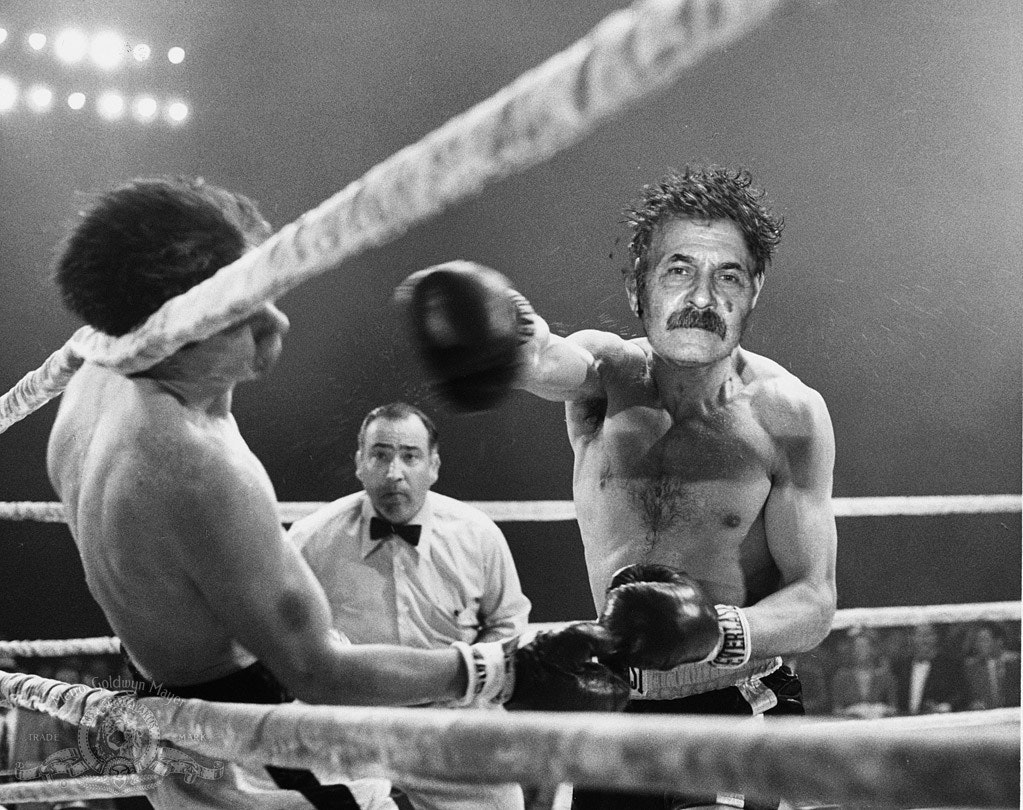
“Raging Bull” is not a film about boxing but about a man with paralyzing jealousy and sexual insecurity, for whom being punished in the ring serves as confession, penance and absolution. It is no accident that the screenplay never concerns itself with fight strategy. For Jake LaMotta, what happens during a fight is controlled not by tactics but by his fears and drives.
Consumed by rage after his wife, Vickie, unwisely describes one of his opponents as “good-looking,” he pounds the man's face into a pulp, and in the audience a Mafia boss leans over to his lieutenant and observes, “He ain't pretty no more.” After the punishment has been delivered, Jake (Robert De Niro) looks not at his opponent, but into the eyes of his wife (Cathy Moriarty), who gets the message.
Martin Scorsese's 1980 film was voted in three polls as the greatest film of the decade, but when he was making it, he seriously wondered if it would ever be released: “We felt like we were making it for ourselves.” Scorsese and De Niro had been reading the autobiography of Jake LaMotta, the middleweight champion whose duels with Sugar Ray Robinson were a legend in the 1940s and '50s. They asked Paul Schrader, who wrote “Taxi Driver,” to do a screenplay. The project languished while Scorsese and De Niro made the ambitious but unfocused musical “New York, New York,” and then languished some more as Scorsese's drug use led to a crisis. De Niro visited his friend in the hospital, threw the book on his bed, and said, “I think we should make this.” And the making of “Raging Bull,” with a screenplay further sculpted by Mardik Martin (“Mean Streets”), became therapy and rebirth for the filmmaker.
The movie won Oscars for De Niro and editor Thelma Schoonmaker, and also was nominated for best picture, director, sound, and supporting actor (Joe Pesci) and actress (Moriarty). It lost for best picture to “Ordinary People,” but time has rendered a different verdict.
For Scorsese, the life of LaMotta was like an illustration of a theme always present in his work, the inability of his characters to trust and relate with women. The engine that drives the LaMotta character in the film is not boxing, but a jealous obsession with his wife, Vickie, and a fear of sexuality. From the time he first sees her, as a girl of 15, LaMotta is mesmerized by the cool, distant blond goddess, who seems so much older than her age, and in many shots seems taller and even stronger than the boxer.
Although there is no direct evidence in the film that she has ever cheated on him, she is a woman who at 15 was already on friendly terms with mobsters, who knew the score, whose level gaze, directed at LaMotta during their first date, shows a woman completely confident as she waits for Jake to awkwardly make his moves. It is remarkable that Moriarty, herself 19, had the presence to so convincingly portray the later stages of a woman in a bad marriage.
Jake has an ambivalence toward women that Freud famously named the “Madonna-whore complex.” For LaMotta, women are unapproachable, virginal ideals--until they are sullied by physical contact (with him), after which they become suspect. During the film he tortures himself with fantasies that Vickie is cheating on him. Every word, every glance, is twisted by his scrutiny. He never catches her, but he beats her as if he had; his suspicion is proof of her guilt.
The closest relationship in the film is between Jake and his brother Joey (Joe Pesci). Pesci's casting was a stroke of luck; he had decided to give up acting, when he was asked to audition after De Niro saw him in a B movie. Pesci's performance is the counterpoint to De Niro's, and its equal; their verbal sparring has a kind of crazy music to it, as in the scene where Jake loses the drift of Joey's argument as he explains, “You lose, you win. You win, you win. Either way, you win.” And the scene where Jake adjusts the TV and accuses Joey of cheating with Vickie: “Maybe you don't know what you mean.” The dialogue reflects the Little Italy of Scorsese's childhood, as when Jake tells his first wife that overcooking the steak “defeats its own purpose.”
The fight scenes took Scorsese 10 weeks to shoot instead of the planned two. They use, in their way, as many special effects as a science fiction film. The soundtrack subtly combines crowd noise with animal cries, bird shrieks and the grating explosions of flashbulbs (actually panes of glass being smashed). We aren't consciously aware of all we're listening to, but we feel it.
The fights are broken down into dozens of shots, edited by Schoonmaker into duels consisting not of strategy, but simply of punishing blows. The camera is sometimes only inches from the fists; Scorsese broke the rules of boxing pictures by staying inside the ring, and by freely changing its shape and size to suit his needs--sometimes it's claustrophobic, sometimes unnaturally elongated.
The brutality of the fights is also new; LaMotta makes Rocky look tame. Blows are underlined by thudding impacts on the soundtrack, and Scorsese uses sponges concealed in the gloves and tiny tubes in the boxers' hair to deliver spurts and sprays of sweat and blood; this is the wettest of boxing pictures, drenched in the fluids of battle. One reason for filming in black and white was Scorsese's reluctance to show all that blood in a color picture.
The most effective visual strategy in the film is the use of slow motion to suggest a heightened awareness. Just as “Taxi Driver's” Travis Bickle saw the sidewalks of New York in slow motion, so LaMotta sees Vickie so intently that time seems to expand around her. Normal movement is shot at 24 frames a second; slow motion uses more frames per second, so that it takes longer for them to be projected; Scorsese uses subtle speeds such as 30 or 36 frames per second, and we internalize the device so that we feel the tension of narrowed eyes and mounting anger when Jake is triggered by paranoia over Vickie's behavior.
The film is bookmarked by scenes in which the older Jake LaMotta, balding and overweight, makes a living giving “readings,” running a nightclub, even emceeing at a Manhattan strip club. It was De Niro's idea to interrupt the filming while he put on weight for these scenes, in which his belly hangs over his belt. The closing passages include Jake's crisis of pure despair, in which he punches the walls of his Miami jail cell, crying out, “Why! Why! Why!”
Not long after, he pursues his brother down a New York street, to embrace him tenderly in a parking garage, in what passes for the character's redemption--that, and the extraordinary moment where he looks at himself in a dressing room mirror and recites from “On the Waterfront” (“I coulda been a contender”). It's not De Niro doing Brando, as is often mistakenly said, but De Niro doing LaMotta doing Brando doing Terry Malloy. De Niro could do a “better” Brando imitation, but what would be the point?
“Raging Bull” is the most painful and heartrending portrait of jealousy in the cinema--an “Othello” for our times. It's the best film I've seen about the low self-esteem, sexual inadequacy and fear that lead some men to abuse women. Boxing is the arena, not the subject. LaMotta was famous for refusing to be knocked down in the ring. There are scenes where he stands passively, his hands at his side, allowing himself to be hammered. We sense why he didn't go down. He hurt too much to allow the pain to stop.
More reading:
https://cinephiliabeyond.org/raging-bull/
THE BAD AND THE BEAUTIFUL (1952)
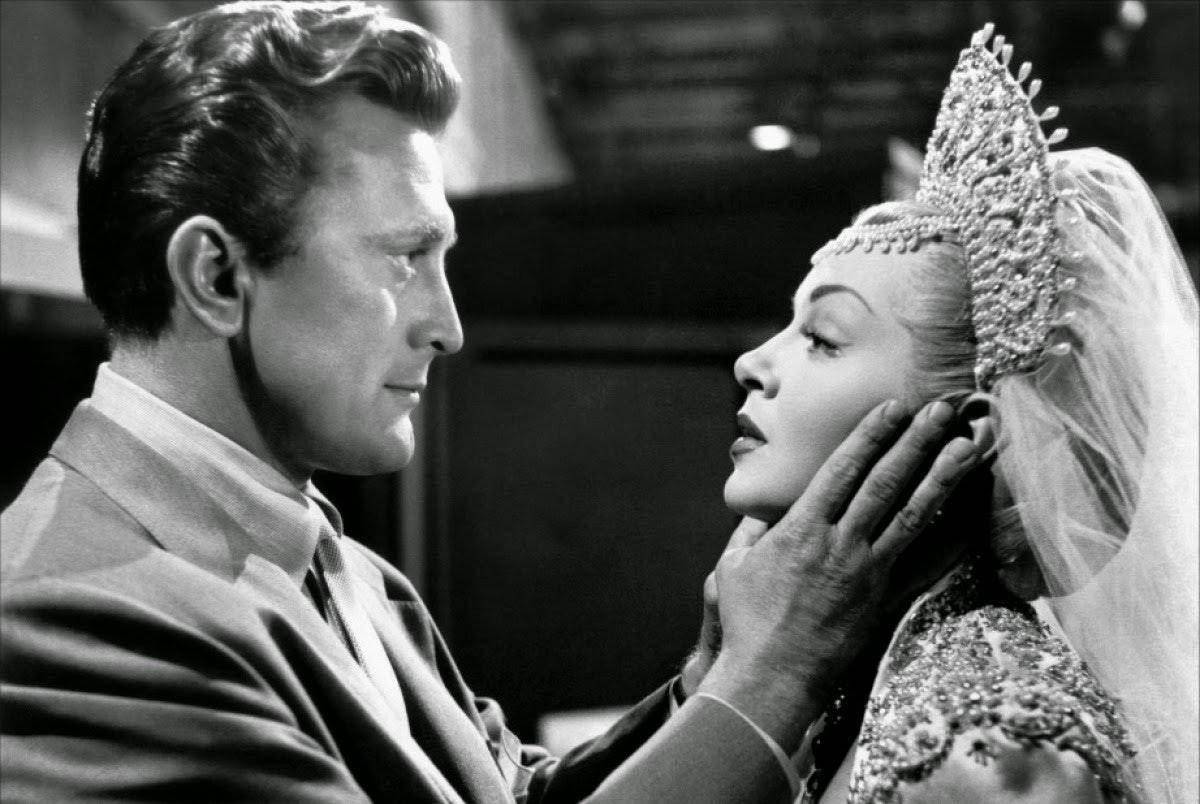
In the early 1950s, as the big studio system breathed its last, Hollywood produced a succession of classic Tinseltown fables: Sunset Boulevard, In a Lonely Place, Singin' in the Rain, The Barefoot Contessa, A Star Is Born and, right in the middle, The Bad and the Beautiful, made in 1952 and back in the cinemas to accompany a Minnelli retrospective at the NFT. Though directed with Minnelli's characteristic delicacy, this is essentially a producer's film, made by John Houseman, one of the great figures of 20th-century American theatre and cinema. Houseman's first Hollywood job was supervising the script of Citizen Kane, his second was working for David O Selznick. In The Bad and the Beautiful, Houseman applies a similar structure, intelligence and suavity to a ruthless Hollywood genius much like Selznick as he brought to Charles Foster Kane.
An old-style Hollywood studio boss (Walter Pidgeon) brings together a movie star (Lana Turner), a major director (Barry Sullivan) and a Pulitzer-prize author (Dick Powell) to see if they'll work again with Jonathan Shields (Kirk Douglas). A producer now down on his luck, Shields simultaneously built their careers and nearly destroyed their lives. Each recalls their experience of Shields, and in the course of an immaculately cast and acted film they paint a warts-and-all portrait of Hollywood at its zenith, a tale of how the bad created something beautiful. Charles Schnee won an Oscar for his script, as did Gloria Grahame for her performance as a ditzy southern belle, Robert Surtees for his black-and-white cinematography and Edward Carfagno for his production design. David Raksin, author of the title song for Laura and onetime pupil of Arnold Schoenberg, should have got an Oscar for his score.
FIST OF FURY (1972)
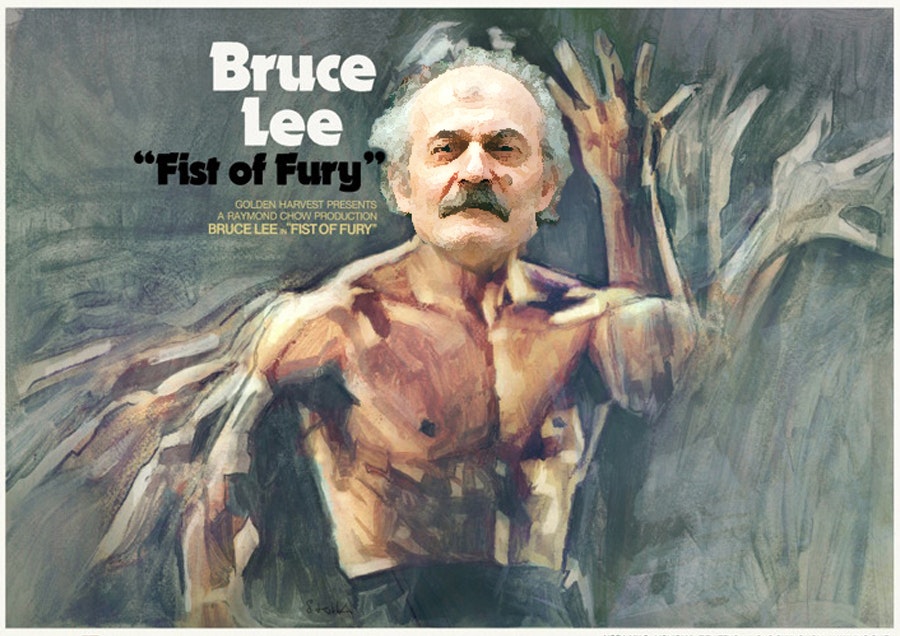
His early martial arts films broke Box Office records in Hong Kong and portrayed martial arts in an entirely new light. The success of his films attracted the attention of Hollywood—Bruce Lee’s “Enter the Dragon” was the first Hollywood/Hong Kong co-production, starting the martial arts film craze in the USA. Despite his early death, he remains a legend in the martial arts world.
However, while Bruce Lee is indisputably a martial arts icon, his martial arts filmography is relatively small. Prior to his death, he was only involved in five action films, though “Game of Death” and “Enter the Dragon” were released posthumously. While “Enter the Dragon” is his most famous, “Fist of Fury” is his best.
Bruce Lee plays Chen Zen, a martial arts student who learns that his beloved teacher has been murdered and seeks to extract vengeance and restore the honour of his school. Set during the Japanese occupation of China, there is intense racial tension and Chinese nationalism throughout the film. The Japanese repeatedly taunt and insult Chen and the Chinese people. Chen’s rage and violence is not only to restore honour to his school, but also to his nation.
The fight scenes in ‘Fist of Fury’ are among the best of Lee’s career. The first dojo fight scene, where Chen challenges an entire room of Japanese karate fighters, is incredible. Lee punches and kicks faster than the eye can see and his ability with the nunchucks is remarkable.

Bruce Lee in a scene from “Fist of Fury” (Golden Harvest Company, 1972).
His presence on-screen is powerful and immense, which the director utilizes to great effect. In the opening sequence, Chen enters a funeral in a stark white suit, standing out amidst the mourners clothed in black. The visual stylings of the fight scenes are similarly striking, often placing Chen Zen, shirtless and wearing black pants, surrounded by Japanese fighters in white karate outfits.
With the lone hero fighting to protect the community against an oppressive force, this film borrows many tropes from Western movies. In fact, the film’s score is reminiscent of Ennio Morricone’s spaghetti westerns. When paired with the striking visuals, it is easy to see how films like “Fist of Fury” may have influenced directors like Quentin Tarantino.
While there are obvious wins, there are also definite flaws in this film. Ludicrously bad dubbing affects the majority of early martial arts films, including this one, and the film is rough around the edges, as the script, direction, and acting are all unpolished and cheesy at times. Additionally, though there are less tonal problems here than the rest of Lee’s films, the romantic sub-plot is a little forced and there are some out-of-place humorous moments, such as when Lee dresses in costume to avoid detection.
In sum, Bruce Lee is a genuine star and “Fist of Fury” is arguably his best film, while suffering from the many issues plaguing early martial arts films. Though not a cinematic masterpiece, it is a must-watch for fans of martial arts movies and the legendary Bruce Lee.
LIFEBOAT (1944)
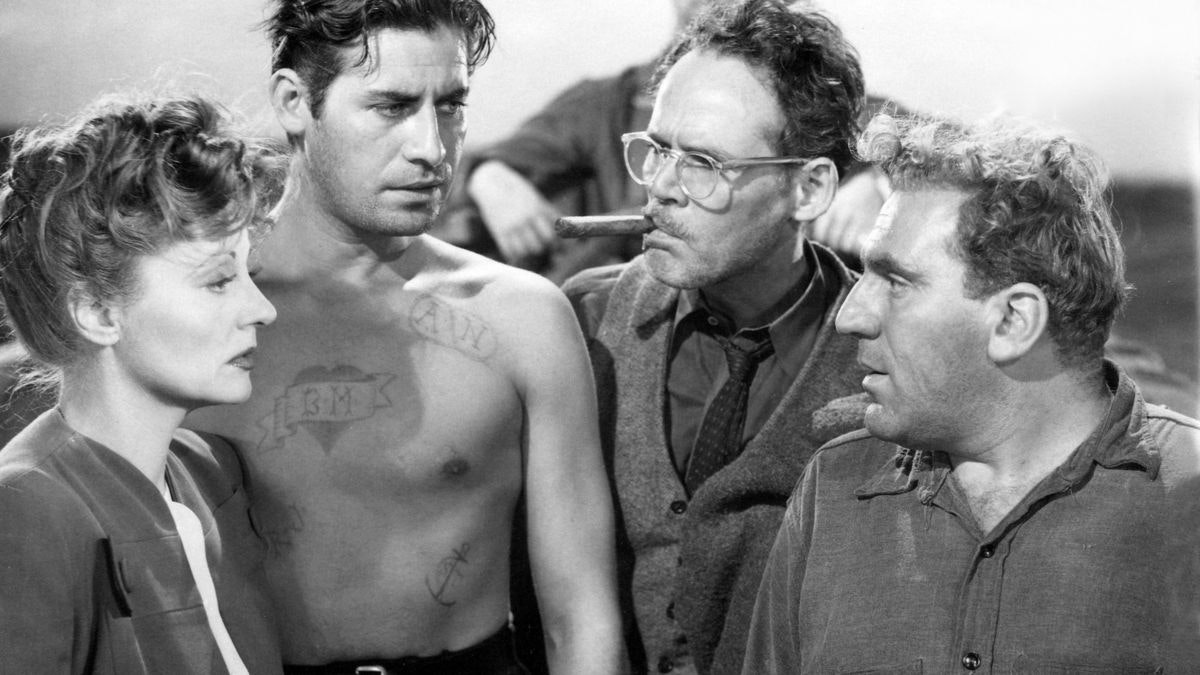
Made right during the middle of WWII, Lifeboat was the first of Alfred Hitchcock’s experiments with movies set in a single enclosed space: a lifeboat after a shipwreck. It was filmed in the studio for maximum focused artificiality. The movie starts off in an uncomfortably didactic fashion (John Steinbeck did the original story, and his heavy hand can sometimes be felt), but Lifeboat is actually much more complicated than it first appears. Its emphasis on moral debates in dialogue can seem a little dry, but Hitchcock’s shifting sympathies guarantee our guilty involvement with the characters until he builds to a climax of intellectual and spiritual excitation.
It starts with a ship going down, and we see various objects floating away: a copy of The New Yorker, playing cards, wooden spoons, a chessboard, and finally a corpse. With this sobering sight, Hitchcock switches to a wider view of the detritus, but he chokes off any easy emotions of pity for disaster with a cut to his film-long joke: glamorous Tallulah Bankhead sitting alone in a lifeboat. Bankhead, a flamboyant theater star who never made much of a Hollywood impression, is granted a peculiar showcase here, her only decent one. Bankhead’s eyes are inexpressive, and the camera doesn’t really like her, but Hitchcock does and we eventually warm to her; like many theatrical personalities, she does most of her acting with her (comically low) voice. Her Constance Porter is a journalist, and she whips out a camera to film the survivors as they climb into the boat (a pointed bit of self-criticism from film-mad Hitchcock). “Look, that’s a perfect touch!” she cries, trying to take film of a baby’s abandoned bottle. This enrages Kovac (John Hodiak), the resident socialist, and he throws her camera overboard (the first in a long line of things Connie loses throughout the film).
As Hitchcock introduces the other characters, we can palpably feel his impatience with most of them. There’s low-class Brit Stanley (Hume Cronyn), natty capitalist C. D. Rittenhouse (Henry Hull), dopey Gus (William Bendix), reformed pickpocket Joe (Canada Lee), pretty nurse Miss MacKenzie (Mary Anderson), Mrs. Higgins (Heather Angel), a mad woman with a dead baby, and Willy (Walter Slezak), a corpulent Nazi. They discuss whether or not to throw Willy overboard; Kovac wants to pitch him out right away, but Connie and Rittenhouse argue in his defense, citing the laws of democracy and the precepts of Christianity. Hitchcock gets in a nice dig against racism when Joe, who’s black, quietly asks if he gets to vote on the matter. Joe, who is devoutly Christian, says a prayer in the dark of night (a beautiful shot), and Hitchcock balances his faith and dignity with Willy’s obvious craft and cunning. Meanwhile, Mrs. Higgins keeps flipping out. Though her scenes are handled with gravity and tact, when Willy yawns at her stagy anguish, we can’t help but feel that Hitchcock is yawning too.
Intellectually, we know we’re supposed to be horrified by Willy’s callousness, the same callousness we’re supposed to find amusing in Connie. Hitchcock subverts these expected responses so that we actually loathe Connie at first and side with Willy’s no-nonsense strength. The yawn is the first time we’re made to identify with Willy, which implicates us in his treachery later on. Hitchcock never puts his audience at a distance from his characters; we’re always being confronted by ourselves and our attitudes because of his masterful manipulation of various points of view. His serial killers, like Bruno Anthony and Norman Bates, are always the most attractive, sympathetic characters in his films. That’s why Willy (and Nazism itself) is given its fair shake, which is what makes Lifeboat so disturbing. What film today would dare to hint at anything positive in fascism, even if it’s just to strengthen a case against it? Yet Hitchcock doesn’t even really make that expected case. He’s above such things; in Lifeboat, he’s hunting bigger, cosmic game. There’s no playfulness here and precious little humor. This is a serious, at times self-serious movie (though the director’s cameo, a newspaper ad for diet pill Reduco, stands with his bus-misser in North by Northwest as his most amusing film appearance).
Gus and his gangrenous leg take over the film for a while, and Hitchcock has Bendix overplay his dumb-lug persona. Hitch emphasizes everyone’s unpleasant condescension to this thickheaded fool; his drunk scene while he waits for them to cut his leg off is painfully indulgent. The actor (and character) is so unbearable that our responses are complicated yet again after Willy pushes him out of the boat (it’s suggested he did the same for Mrs. Higgins). When the others voice their outrage at his actions, Willy sounds seductively practical as he says that he was only doing a favor for the poor cripple (and a favor for the audience by getting rid of Bendix). If Hitchcock had made a film set in a concentration camp, he would have probably focused on a very unattractive inmate, made us hate them by casting someone unlikable and hammy, made us feel guilty for hating this noble victim, and compounded that guilt by making the Nazi commandant a charming, charismatic fascist who gases children all day and then goes home to play Schubert with unerring skill and proper feeling. Evil, Hitchcock knows, is tempting. Which is why it proliferates and always will.
Hitchcock underlines the passenger’s mob ugliness when they kill Willy. (In his interview with François Truffaut, he called them “a pack of dogs.”) They don’t just throw Willy overboard: They beat on him wildly with their fists, and this charge is led by the gentle-featured Miss MacKenzie. It’s been revealed that she’s having an affair with a married man, and for a moment it seems that Hitch’s attraction/repulsion to lady-like sluts has gotten the better of him. However, it ultimately feels quite right that she should start the violence. And not “she of all people.” Hitchcock has taught us to distrust appearances.
We’re made to see that Willy’s “survival of the fittest” ethic is abhorrent and that the capitalism that’s made Rittenhouse’s fortune is this monstrous ethic taken to its financial extreme. Rittenhouse professes that he’s broken up about becoming part of a lynch mob, but he should be more broken up about the traits he shares with Willy. No one gets off here; everyone is guilty. Finally, Joe looks up to God for guidance, and Hitchcock, sensibly enough, is all for this. If you look at the world as deeply as Hitchcock does, religion really is your only answer. Like so many of his movies, Lifeboat is a deeply Catholic work.
Catholicism is linked strongly to the carnal, of course, and Hitchcock really goes for this subtext in most of his filmography, but only at moments here, such as the scene when Connie rubs the top of her foot over Kovac’s sole. Hitchcock eventually brings salacious Bankhead into focus as the film’s emblem. We get to like her character more as she’s stripped of her material accoutrements, in the same way Melanie Daniels is humanized by suffering in The Birds. Hitch is drawn to Tallulah’s wildness; too shy to celebrate it, he breaks it down, finds out its components, and likes what he sees (she doesn’t need to be punished too much, unlike the submissive Tippi Hedren). Connie has sympathy for the nurse’s troubles, she kisses Gus before his leg is cut off (a lusty, open-mouthed Tallulah kiss), kisses Kovac when they think they’re going to die (open-mouthed with a bit of tongue), and gives a definitive answer to Joe’s prayer: “How about giving Him a hand?” she asks.
This line, a platitude, really (“God helps those who help themselves”), is utterly resonant as a summing up of the film’s complicated points of view. It’s also a thunderbolt incitement for the Allied side in WWII, fighting a war that needed to be won. Perhaps the repetition of the young German getting on board and instantly pulling a gun on them is a little much (or maybe it just happens too abruptly). But Hitchcock has one more jolt up his sleeve in Rittenhouse’s reaction: “You can’t treat them as human beings, you have to exterminate them!” he says, echoing Nazi rhetoric. Hitch gives pagan goddess Connie the last word. Her lipstick retouched, ready to join the messy world again and live with Tallulah-esque gusto, she wisely refuses to answer the many slippery problems raised in the film and invokes God the father, the ying to her yang, who, she suggests, has a lot of explaining to do.
MORE INFO:
https://cinephiliabeyond.org/a...
EL ESPIRITU DE LA COLMENA (SPIRIT OF THE BEEHIVE)

In a vast Spanish plain, harvested of its crops, a farm home rests. Some distance away there is a squat building like a barn, apparently not used, its doors and windows missing. In the home lives a family of four: two little girls named Ana and Isabel, and their parents, Fernando and Teresa. He is a beekeeper, scholar and poet who spends much time in his book-lined study. She is a solitary woman who writes letters of longing and loss to men not identified. The parents have no conversations of any consequence.
It’s an exciting day in the village. A ramshackle truck rattles into town announced by scampering children, who shout, “The movies! The movies!” A screen and projector are set up in the public hall, and an audience of kids and old women gather to see “Frankenstein” (1931).
For the children, the movie had might as well only be about the monster, so tellingly performed by Boris Karloff. The creature comes upon a farmer’s young daughter tossing flowers into a pond to watch them float. Perhaps because of censorship, the film cuts directly from this to the monster mournfully carrying the child’s drowned body through the village. Perhaps because of censorship, we don’t see that he did not drown her, but threw her in with delight, thinking she would float as well. For the two girls, especially Ana (Ana Torrent), this makes a dramatic impression.
Her misunderstanding of the scene will shape the events to follow in Victor Erice’s “The Spirit of the Beehive” (1973), believed by many to be the greatest of all Spanish films. Although the time is not specified, it would have been clear to Spanish audiences that the film is set soon after the end of the Spanish Civil War, which began Franco’s long dictatorship — so soon after that the same day, a wounded opponent of the regime takes refuge in the barn-like outbuilding.
Only a few years separate Ana and Isabel (Isabel Telleria), but they form that important divide where Ana depends on her big sister to explain mysteries. The little girl runs carefree all over the farmlands, and in the barn she discovers the wounded soldier. That night, her eyes wide open in the dark, she asks Isabel to explain why the creature drowned the little girl. “Everything in the movies is fake,” she’s told. “It’s all a trick. Besides, I’ve seen him alive. He’s a spirit.” That of course serves for Ana as a possible explanation for the wounded man, and the next day, she sneaks him some food and water, and her father’s coat.
What follows is considered a coded message about Franco’s fascist regime, but it’s not for me to connect the dots. I relate to it more strongly as a poetic work about the imagination of children, and how it can lead them into mischief and sometimes rescue them from its consequences.
“The Spirit of the Beehive” is one of only three features and a short subject directed by Erice (born 1940). Like such films as Charles Laughton’s “The Night of the Hunter” (1955), it is a masterpiece that can only cause us to wonder what we lost because he didn’t work more. It is simple, solemn, and in the casting of young Ana Torrent, takes advantage of her open, innocent features. We can well believe her when she accepts her sister’s explanation, which goes far to account for her behavior later in the film.
This is one of the most beautiful films I’ve seen. Its cinematographer, Luis Cuadrado, bathes his frame in sun and earth tones, and in the interiors of the family home, he creates vistas of empty rooms where footsteps echo. The house doesn’t seem much occupied by the family. The girls are often alone. The parents also, in separate rooms. Many of the father’s poems involve the mindless churning activity of his beehives, and the house’s yellow-tinted honeycomb windows make an unmistakable reference to beehives. Presumably this reflects on the Franco regime, but when critics grow specific in spelling out the parallels they see, I feel like I’m reading term papers.
More rewarding is to read the surface of the film. When Ana’s good intentions to the “spirit” are misinterpreted, and when she is linked to the wounded man by her father’s pocket watch, this sets up a situation that could be dangerous for both father and daughter. When she runs away and inspires a search — the lanterns of volunteers bobbing through the night — we feel how the behavior of innocent children can lead them into trouble. In a later scene when Ana plays a trick on Isabel, the older child also discovers how her myth-making has repercussions.
Ana Torrent starred in another notable Spanish film, Carlos Saura’s “Cria Cuervos” (1976). She has gone on to a successful career, making 45 films and TV series, including Saura’s “Elisa, My Life” (1977), his first film after Franco’s fall. But child actors are often bathed in a glow of enchantment that no later role will quite capture.
THE LADY FROM SHANGHAI
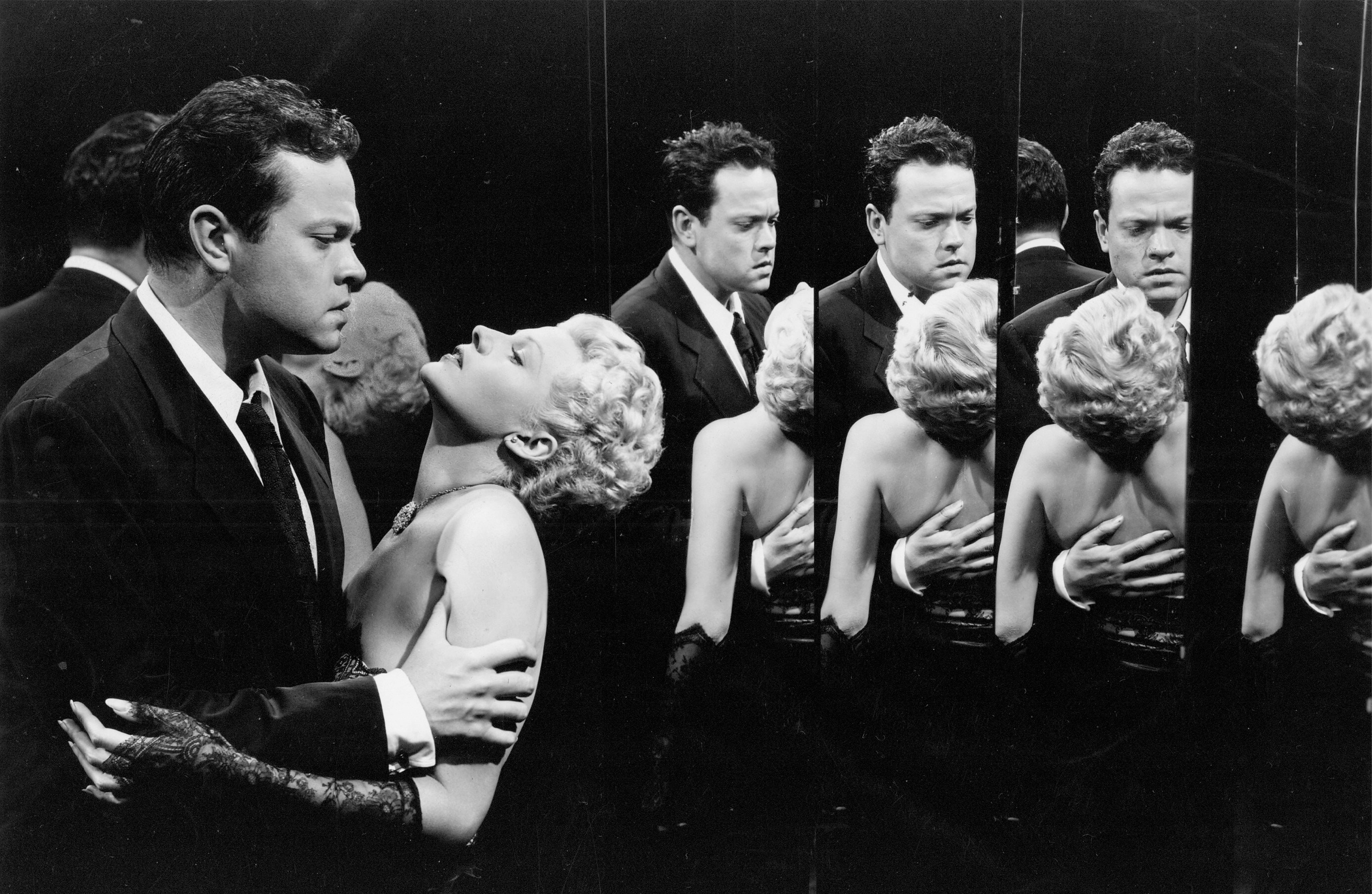
There's such outrageous brilliance in Orson Welles's brash and sexy noir melodrama from 1947, now on re-release. There are some opaque plot tangles, perhaps due to 60 minutes being cut from Welles's original version by the studio, but the sheer brio and style make it a thing of wonder, whisking the audience from the streets of New York City, to the open seas, to a tense courtroom and then to a bizarre house of mirrors.
This is arguably Welles's best acting performance: theatrically romantic, with warmth, wit and a gust of pure charisma. He plays O'Hara, an Irish merchant seaman induced to sign on as part of the crew of a luxury yacht belonging to wealthy lawyer Bannister (Everett Sloane), having fallen in love with his young wife Elsa (Rita Hayworth) – a beautiful woman with a shady past in the far east whom Bannister evidently blackmailed into marrying him. Soon O'Hara is mixed up in a murderous plot cooked up by Bannister's partner Grisby (Glenn Anders). Welles creates a dreamlike (though never surrealist) fluency and strangeness, along with a salty tang of black comedy and an electric current of doom and desire between O'Hara and Elsa. It has an irresistible energy.
Find out more about Orson with these BBC documentaries:
TO JOIN OUR MAILING LIST EMAIL US AT:
EMAIL: info@cine-real.com
INSTAGRAM - cinereal16mm
THE TRIAL (1963)
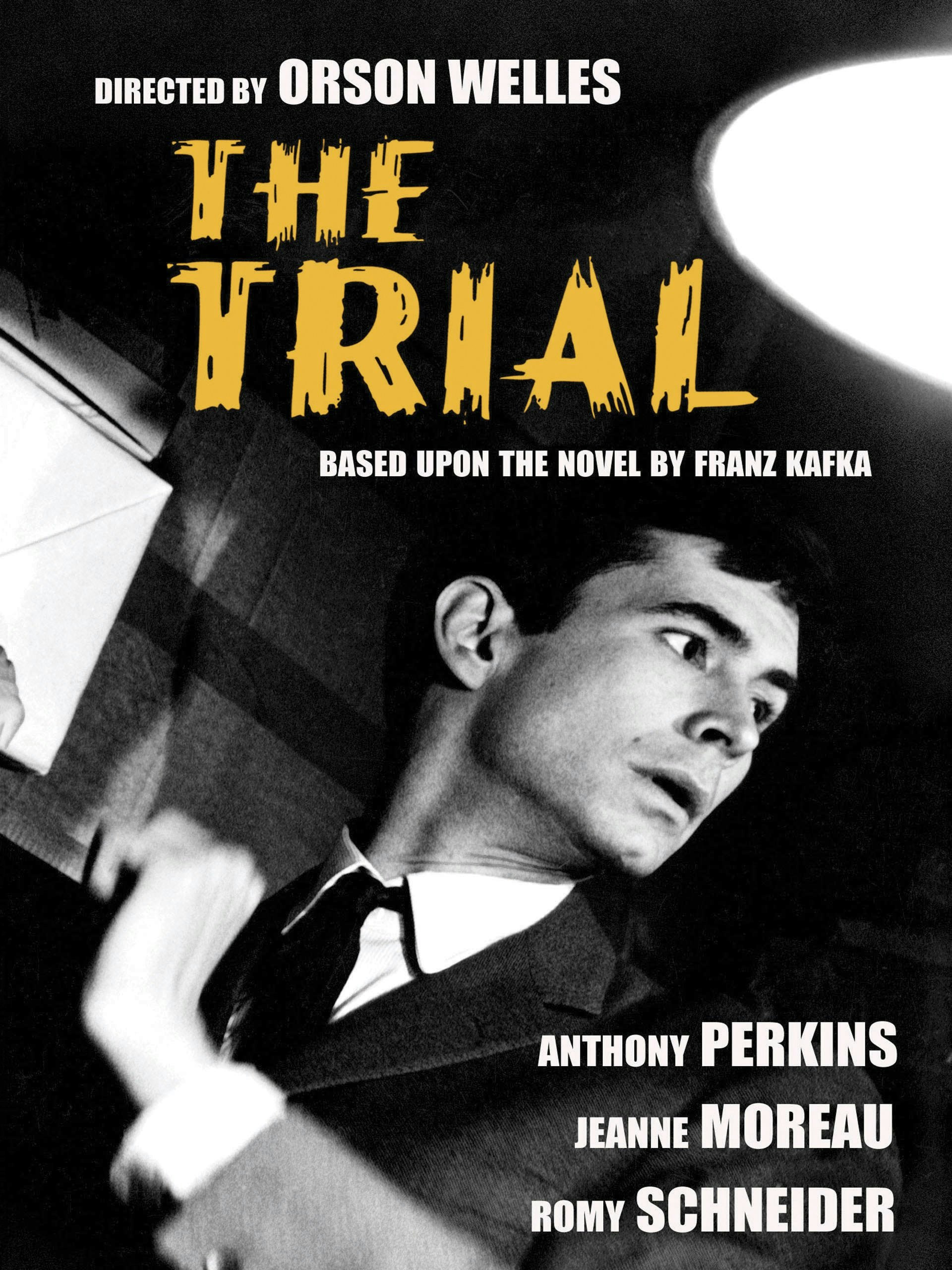
Roger Ebert was once involved in a project to persuade Orson Welles to record a commentary track for "Citizen Kane." Seemed like a good idea, but not to the Great One, who rumbled that he had made a great many films other than "Kane" and was tired of talking about it.
One he might have talked about was "The Trial" (1963), his version of the Franz Kafka story about a man accused of--something, he knows not what. It starred Anthony Perkins in his squirmy post- "Psycho" mode, it had a baroque visual style, and it was one of the few times, after "Kane," when Welles was able to get his vision onto the screen intact. For years, the negative of the film was thought to be lost, but then it was rediscovered, restored and plays at the Film Center this weekend.
The world of the movie is like a nightmare, with its hero popping from one surrealistic situation to another. Water towers open into file rooms, a woman does laundry while through the door a trial is under way, and huge trunks are dragged across empty landscapes and then back again. The black-and-white photography shows Welles' love of shadows, extreme camera angles and spectacular sets. He shot it mostly inside the Gare d'Orsay in Paris, which, after it closed as a train station and before it was reborn as a museum, offered vast spaces; the office where Joseph K works consists of rows of desks and typists extending almost to infinity, like a similar scene in the silent film "The Crowd." Kafka published his novel in Prague in 1925; it reflected his own paranoia, but it was prophetic, foreseeing Stalin's gulag and Hitler's Holocaust, in which innocent people wake up one morning to discover they are guilty of being themselves. It is a tribute to his vision that the word "Kafkaesque" has, like "Catch-22," moved beyond the work to describe things we all see in the world.
Anthony Perkins was a good choice to play Joseph K, the bureaucrat who awakens to find strange men in his room, men who treat him as a suspect and yet give him no information. Perkins could turn in an instant from ingratiating smarminess to anger, from supplication to indignation, his voice barking out ultimatums and then suddenly going high pitched and stuttery. Watch his body language as he goes into his confiding mode, hitching closer to other characters, buddy-style, looking forward to neat secrets.
The film follows his attempts to discover what he is charged with, and how he can defend himself. Every Freudian slip is used against him (he refers to a "pornograph player" and a man in a black suit carefully notes that down). He finds himself in a courtroom where the audience is cued by secret signs from the judge. He petitions the court's official portrait painter, who claims he can fix cases and obtain a "provisional acquittal." And in the longest sequence, he visits the cavernous home of the Advocate, played by Welles as an ominous sybarite who spends much of his time in bed, smoking cigars and being tended by his mistress (Romy Schneider).
The Advocate has obscure powers in matters such as Joseph K is charged with, whatever they are. He has had a pathetic little man living in his maid's room for a long time, hoping for news on his case, kissing the Advocate's hand, falling to his knees. He would like Joseph K to behave in the same way.
The Advocate's home reaches out in all directions, like a loft, factory and junk shop, illuminated by hundreds of guttering candles, decorated by portraits of judges, littered with so many bales of old legal papers that one shot looks like the closing scene in "Citizen Kane." But neither here nor elsewhere can Joseph K come to grips with his dilemma.
Perkins was one of those actors everyone thought was gay. He kept his sexuality private, and used his nervous style of speech and movement to suggest inner disconnects. From an article by Edward Guthmann in the San Francisco Chronicle, I learn that Welles confided to his friend Henry Jaglom that he knew Perkins was a homosexual, "and used that quality in Perkins to suggest another texture in Joseph K, a fear of exposure."
"The whole homosexuality thing--using Perkins that way--was incredible for that time," Jaglom told Guthmann. "It was intentional on Orson's part: He had these three gorgeous women (Jeanne Moreau, Romy Schneider, Elsa Martinelli) trying to seduce this guy, who was completely repressed and incapable of responding." That provides an additional key to the film, which could be interpreted as a nightmare in which women make demands Joseph K is uninterested in meeting, while bureaucrats in black coats follow him everywhere with obscure threats of legal disaster.
But there is also another way of looking at "The Trial," and that is to see it as autobiographical. After "Citizen Kane" (1941) and "The Magnificent Ambersons" (1942, a masterpiece with its ending hacked to pieces by the studio), Welles seldom found the freedom to make films when and how he desired. His life became a wandering from one place to another. Beautiful women rotated through his beds. He was reduced to a supplicant who begged financing from wealthy but maddening men. He was never able to find out exactly what crime he'd committed that made him "unbankable" in Hollywood. Because Welles plays the Advocate, there is a tendency to think the character is inspired by him, but I can think of another suspect: Alexander Salkind, producer of "The Trial" and much later of the "Superman" movies, who like the Advocate, liked people to beg for money and power that, in fact, he did not always have.
Seen in this restored version (also available on video from Milestone), "The Trial" is above all a visual achievement, an exuberant use of camera placement and movement and inventive lighting. Study the scene where screaming girls chase Joseph K up the stairs to a studio and peer at him through the slats of the walls, and you will see what Richard Lester saw before he filmed the screaming girls in "A Hard Day's Night" and had them peer at the Beatles through the slats of a railway luggage car.
The ending is problematical. Mushroom clouds are not Kafkaesque because they represent a final conclusion, and in Kafka's world nothing ever concludes. But then comes another ending: The voice of Orson Welles, speaking the end credits, placing his own claim on every frame of the film, and we wonder, is this his way of telling us "The Trial" is more than ordinarily personal? He was a man who made the greatest film ever made and was never forgiven for it.
LE MEPRIS (1963)
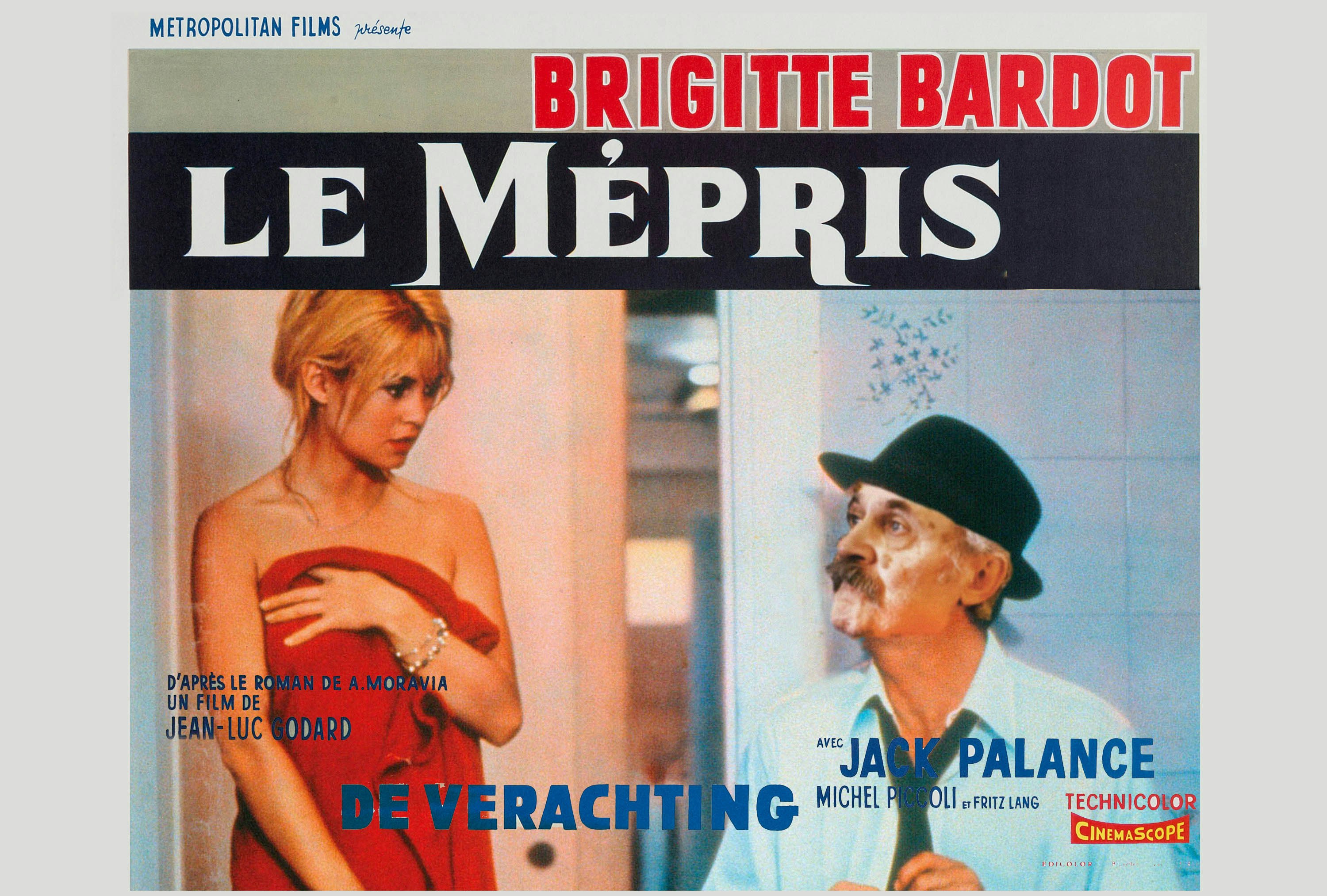
"Contempt'' was Jean-Luc Godard's 1963 attempt at a big-budget, big- star production, and more or less satisfied his curiosity. It was not the direction he wanted to move in, and the rest of his career can be seen, in a way, as a reaction to the experience. Not that the film itself is a compromise; you can see the tension between Godard and his backers right there on the screen, and hear it between the lines of the dialogue.
The film is about a failed playwright (Michel Piccoli) who is hired by a corrupt American producer (Jack Palance) to work on the script of a movie by a great veteran director (Fritz Lang, playing himself). The playwright is married to a sexy former typist (Brigitte Bardot) that the producer has his eye on. The film is going to be based on The Odyssey, but Palance has a "Hercules''-style ripoff in mind, while Lang wants to make an art film.
Many critics have interpreted "Contempt'' as a parallel to The Odyssey, with Piccoli as Odysseus, Bardot as Penelope and Palance as Poseidon, but it is just as tempting to see the frustrated screenwriter as Godard; the woman as Godard's wife, Anna Karina, and the producer as a cross between Joseph E. Levine and Carlo Ponti, who were both attached to the project. There's a scene where Palance views a rough cut of the movie (which looks like stark modernist wallpaper) and shouts at Lang, "You cheated me, Fritz! That's not what's in the script!'' As Palance hurls cans of film around the screening room, we may be reminded that the film opened with a curious, extended scene in which Bardot's naked (but not explicitly revealed) body is caressed and praised by Piccoli. Insecure, she asks him about her thighs, her arms, her breasts, and he replies in every case that he gazes upon perfection. This sequence was belatedly photographed after the producers screamed at Godard that he had cheated them by shooting a film starring Bardot and including not one nude shot. In revenge, he gave them acres of skin but no eroticism.
Fritz Lang sails through the movie like an immovable object, at one point telling Palance, "Include me out--as a real producer once said.'' The others carry the real weight of the story. Early in the film, after the disastrous screening, Palance storms out and then offers Bardot a ride to his Roman villa, leaving his secretary and Piccoli to follow behind. Palance makes a pass at Bardot, who turns him down contemptuously, and is then disturbed when Piccoli doesn't seem to defend her as he should--is he trying to provide his wife to the producer? That leads to the film's second act, an extended marital argument between Piccoli and Bardot, shot in the disconnected cadences of real life; couples do not often argue logically because what both sides are really asking for is uncritical acceptance and forgiveness. Then comes the third major location, a sensational villa jutting out high above the Mediterranean, its roof reached by a broad flight of steps that looks like the ascent to a Greek temple.
Godard's screenplay, based on the novel A Ghost at Noon, by Alberto Moravia, contains many moments to be savored by those who have enjoyed Godard's long battle with the film establishment. He has the crass producer constantly misquoting or misusing half understood snippets of Great Quotations, and at one point shouting, "I like gods. I like them very much. I know exactly how they feel.'' Lang's character includes details from his own life (we are told the possibly exaggerated story about how Goebbels offered him the film industry, and he fled Germany on the midnight train). Lang also frequently seems to be speaking for Godard, who was forced to shoot in CinemaScope, and has Lang say, "CinemaScope is fine for snakes and coffins, but not for people.'' Jack Palance is not well cast as the producer; perhaps he was too much of an outsider himself to play a craven money man. He seems ill at ease in many scenes, unconvinced by his own dialogue. Bardot, whose role is emotionally easier to understand, seems very natural. And Michel Piccoli (in his first role!) is persuasive as a man with few talents and great insecurities; his screenwriter is quite different from the typical Piccoli roles of years to come, when he played men who were confident, smooth, devious.
As for Godard, he stays, as always, a little aloof. All of his films are, in a way, about filmmaking; he breaks the illusion of the fourth wall in order to communicate directly with the audience, usually in such an enigmatic way that he seems to be satirizing the whole idea of communication. He likes mannered shots that call attention to themselves, and here, faced with the great width of the CinemaScope screen, he has moments when he pans slowly back and forth from one side of the room to the other, using an unbroken take but refusing to place both characters on the screen at the same time.
When wide-screen movies are shown on TV these days, they are often subjected to the annoying "pan and scan'' practice, in which the sides are chopped off and then the camera moves back and forth to show two people who were originally meant to be seen at once. I can only imagine how the pan and scan process would look if applied to this movie, in which Godard has built his own panning into the wide-screen compositions. The worst scenario: The movie pans in two directions at once.
"Contempt'' is not the greatest Godard film, for reasons it makes clear. In a way, it's about its own shortcomings. A drama exists at ground level involving the characters, while the film fights between the tendency to elevate them into art (Lang) or vulgarize them into commerce (Palance). It is interesting to see, and has moments of brilliance (the marital argument, the use of the villa steps), but its real importance is as a failed experiment. "Contempt'' taught Godard he could not make films like this, and so he included himself out, and went on to make the films he could make.
12 Angry Men (1957)
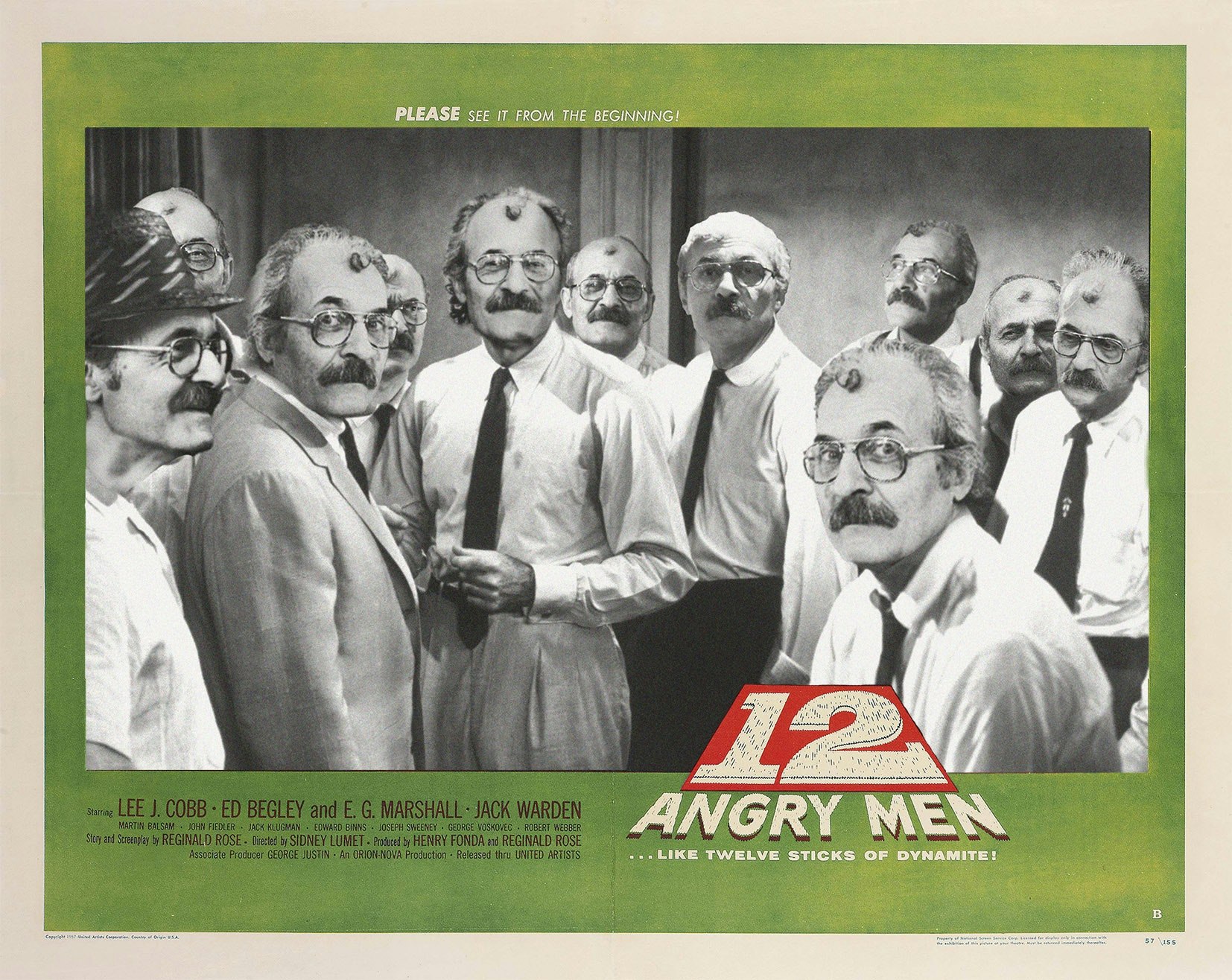
In form, "12 Angry Men" is a courtroom drama. In purpose, it's a crash course in those passages of the Constitution that promise defendants a fair trial and the presumption of innocence. It has a kind of stark simplicity: Apart from a brief setup and a briefer epilogue, the entire film takes place within a small New York City jury room, on "the hottest day of the year," as 12 men debate the fate of a young defendant charged with murdering his father.
The film shows us nothing of the trial itself except for the judge's perfunctory, almost bored, charge to the jury. His tone of voice indicates the verdict is a foregone conclusion. We hear neither prosecutor nor defense attorney, and learn of the evidence only second-hand, as the jurors debate it. Most courtroom movies feel it necessary to end with a clear-cut verdict. But "12 Angry Men" never states whether the defendant is innocent or guilty. It is about whether the jury has a reasonable doubt about his guilt.
The principle of reasonable doubt, the belief that a defendant is innocent until proven guilty, is one of the most enlightened elements of our Constitution, although many Americans have had difficulty in accepting it. "It's an open and shut case," snaps Juror No. 3 (Lee J. Cobb) as the jury first gathers in their claustrophobic little room. When the first ballot is taken, 10 of his fellow jurors agree, and there is only one holdout--Juror No. 8 (Henry Fonda).
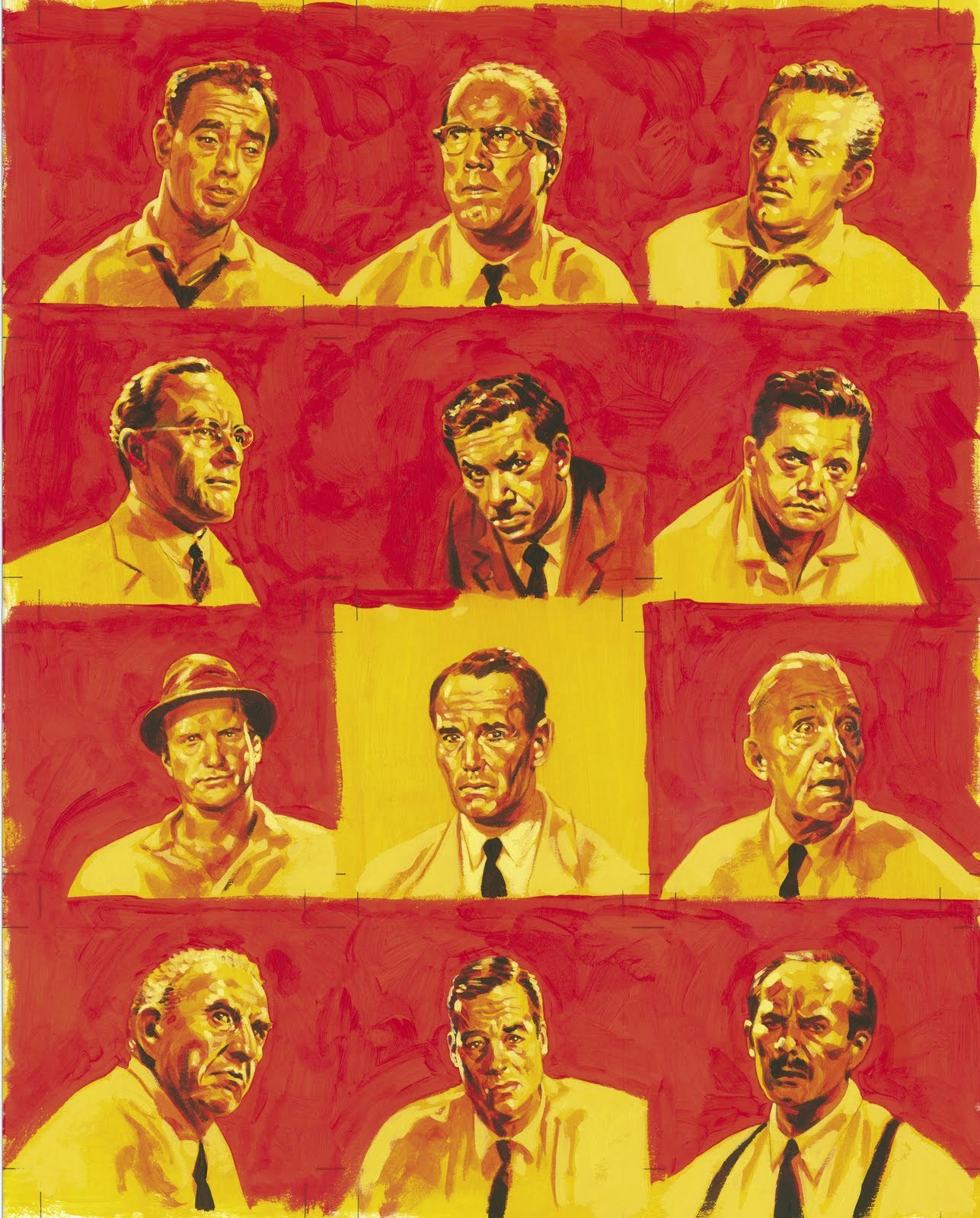
This is a film where tension comes from personality conflict, dialogue and body language, not action; where the defendant has been glimpsed only in a single brief shot; where logic, emotion and prejudice struggle to control the field. It is a masterpiece of stylized realism--the style coming in the way the photography and editing comment on the bare bones of the content. Released in 1957, when Technicolor and lush production values were common, "12 Angry Men" was lean and mean. It got ecstatic reviews and a spread in Life magazine, but was a disappointment at the box office. Over the years it has found a constituency, however, and in a 2002 Internet Movie Database poll it was listed 23rd among the best films of all time.
The story is based on a television play by Reginald Rose, later made into a movie by Sidney Lumet, with Rose and Henry Fonda acting as co-producers and putting up their own money to finance it. It was Lumet's first feature, although he was much experienced in TV drama, and the cinematography was by the veteran Boris Kaufman, whose credits ("On the Waterfront," "Long Day's Journey into Night") show a skill for tightening the tension in dialogue exchanges.
The cast included only one bankable star, Fonda, but the other 11 actors were among the best then working in New York, including Martin Balsam, Lee J. Cobb, E. G. Marshall, Jack Klugman, Jack Warden, Ed Begley and Robert Webber. They smoke, they sweat, they swear, they sprawl, they stalk, they get angry.
In a length of only 95 minutes (it sometimes feels as if the movie is shot in real time), the jurors are all defined in terms of their personalities, backgrounds, occupations, prejudices and emotional tilts. Evidence is debated so completely that we feel we know as much as the jury does, especially about the old man who says he heard the murder and saw the defendant fleeing, and the lady across the street who says she saw it happen through the windows of a moving L train.
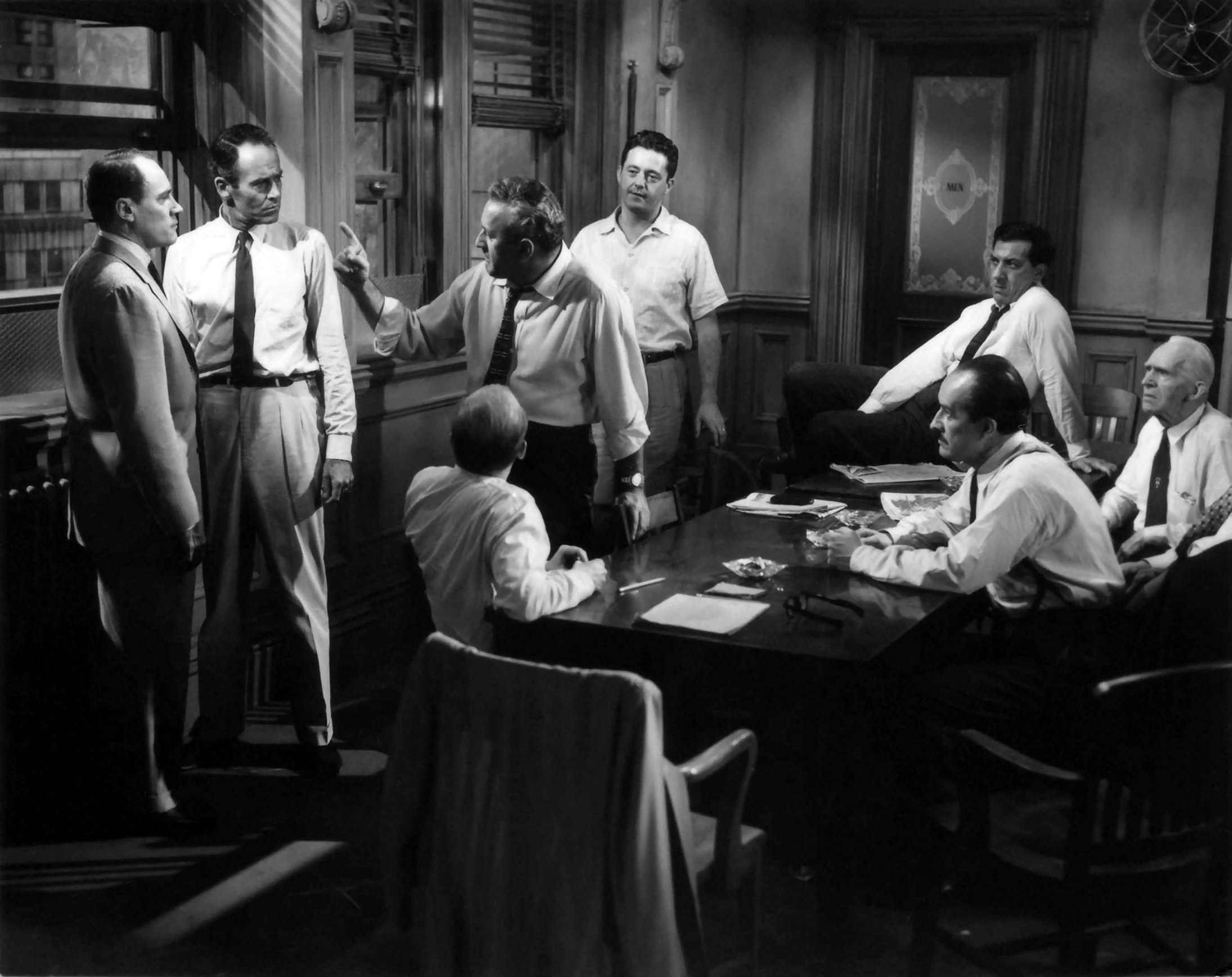
We see the murder weapon, a switch-blade knife, and hear the jurors debate the angle of the knife wound. We watch as Fonda imitates the shuffling step of the old man, a stroke victim, to see if he could have gotten to the door in time to see the murderer fleeing. In its ingenuity, in the way it balances one piece of evidence against another that seems contradictory, "12 Angry Men" is as meticulous as the summation of an Agatha Christie thriller.
But it is not about solving the crime. It is about sending a young man to die. The movie is timely in view of recent revelations that many Death Row convictions are based on contaminated evidence. "We're talking about somebody's life here," the Fonda character says. "We can't decide in five minutes. Supposing we're wrong?"
The defendant, when we glimpse him, looks "ethnic" but of no specific group. He could be Italian, Turkish, Indian, Jewish, Arabic, Mexican. His eyes are ringed with dark circles, and he looks exhausted and frightened. In the jury room, some jurors make veiled references to "these people." Finally Juror No. 10 (Ed Begley) begins a racist rant ("You know how these people lie. It's born in them. They don't know what the truth is. And let me tell you, they don't need any real big reason to kill someone, either...") As he continues, one juror after another stands up from the jury table and walks away, turning his back. Even those who think the defendant is guilty can't sit and listen to Begley's prejudice. The scene is one of the most powerful in the movie.
The vote, which begins as 11-to-1, shifts gradually. Although the movie is clearly in favor of the Fonda position, not all of those voting "guilty" are portrayed negatively. One of the key characters is Juror No. 4 (E. G. Marshall), a stockbroker wearing rimless glasses, who depends on pure logic and tries to avoid emotion altogether. Another Juror No. 7 (Jack Warden), who has tickets to a baseball game, grows impatient and changes his vote just to hurry things along. Juror No. 11 (George Voskovec), an immigrant who speaks with an accent, criticizes him: "Who tells you that you have the right to play like this with a man's life?" Earlier, No. 11 was attacked as a foreigner: "They come over and in no time at all they're telling us how to run the show."
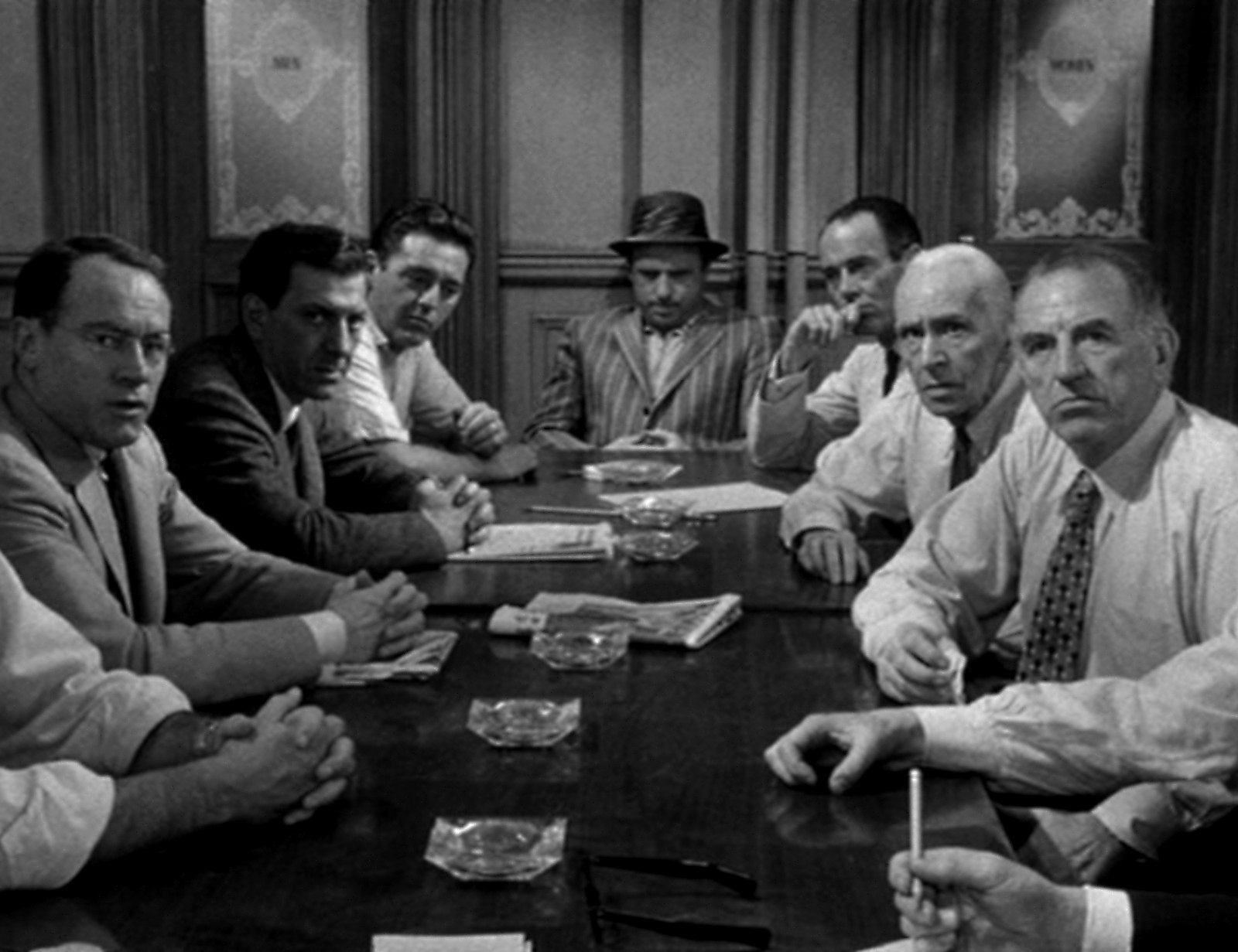
The visual strategy of the movie is discussed by Lumet in Making Movies, one of the most intelligent and informative books ever written about the cinema. In planning the movie, he says, a "lens plot" occurred to him: To make the room seem smaller as the story continued, he gradually changed to lenses of longer focal lengths, so that the backgrounds seemed to close in on the characters.
"In addition," he writes, "I shot the first third of the movie above eye level, shot the second third at eye level and the last third from below eye level. In that way, toward the end the ceiling began to appear. Not only were the walls closing in, the ceiling was as well. The sense of increasing claustrophobia did a lot to raise the tension of the last part of the movie." In the film's last shot, he observes, he used a wide-angle lens "to let us finally breathe."
The movie plays like a textbook for directors interested in how lens choices affect mood. By gradually lowering his camera, Lumet illustrates another principle of composition: A higher camera tends to dominate, a lower camera tends to be dominated. As the film begins we look down on the characters, and the angle suggests they can be comprehended and mastered. By the end, they loom over us, and we feel overwhelmed by the force of their passion. Lumet uses closeups rarely, but effectively: One man in particular--Juror No. 9 (Joseph Sweeney, the oldest man on the jury)--is often seen in full-frame, because he has a way of cutting to the crucial point and stating the obvious after it has eluded the others.
For Sidney Lumet, born in 1924, "12 Angry Men" was the beginning of a film career that has often sought controversial issues. Consider these titles from among his 43 films: "The Pawnbroker" (the Holocaust), "Fail-Safe" (accidental nuclear war), "Serpico" (police corruption), "Dog Day Afternoon" (homosexuality), "Network" (the decay of TV news), "The Verdict" (alcoholism and malpractice), "Daniel" (a son punished for the sins of his parents), "Running on Empty" (radical fugitives), and "Critical Care" (health care). There are also comedies and a musical ("The Wiz"). If Lumet is not among the most famous of American directors, that is only because he ranges so widely he cannot be categorized. Few filmmakers have been so consistently respectful of the audience's intelligence.
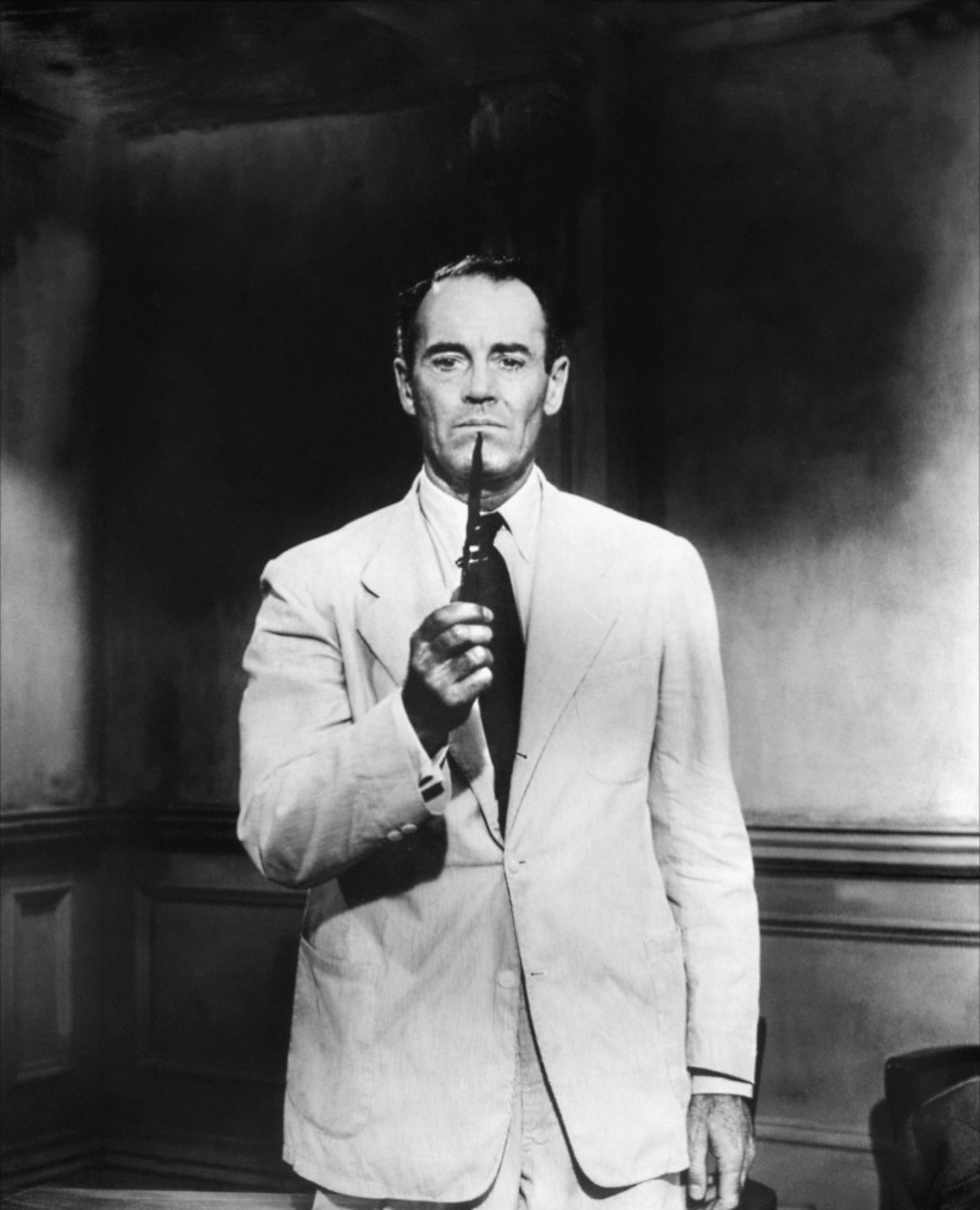
THE GENERAL (1927)
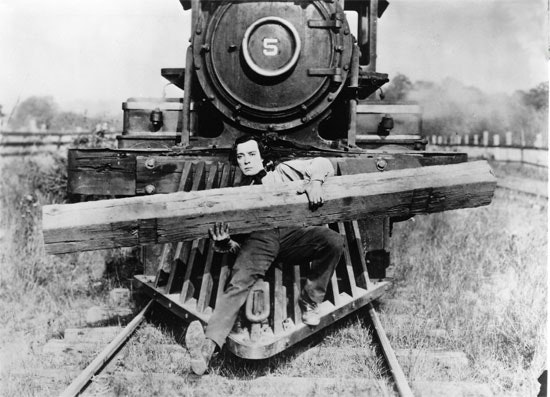
Buster Keaton was not the Great Stone Face so much as a man who kept his composure in the center of chaos. Other silent actors might mug to get a point across, but Keaton remained observant and collected. He seems like a modern visitor to the world of the silent clowns.
Consider an opening sequence in "The General” (1927), his masterpiece about a Southern railway engineer who has "only two loves in his life” -- his locomotive and the beautiful Annabelle Lee. Early in the film, Keaton, dressed in his Sunday best, walks to his girl's house. He is unaware that two small boys are following him, marching in lockstep--and that following them is Annabelle Lee herself (Marion Mack).
He arrives at her door. She watches unobserved. He polishes his shoes on the backs of his pants legs, and then knocks, pauses, looks about, and sees her standing right behind him. This moment would have inspired an overacted double-take from many other silent comedians. Keaton plays it with his face registering merely heightened interest.
They go inside. He sits next to her on the sofa. He becomes aware that the boys have followed them in. His face reflects slight unhappiness. He rises, puts on his hat as if to leave and opens the door, displaying such courtesy you would think the boys were his guests. The boys walk out and he closes the door on them.
He is not a man playing for laughs, but a man absorbed in a call on the most important person in his life. That's why it's funny. That's also why the movie's most famous shot works--the one where, rejected by his girl, he sits disconsolately on the drive-rod of the big engine. As it begins to move, it lifts him up and down, but he does not notice, because he thinks only of Annabelle Lee.
This series of shots establishes his character as a man who takes himself seriously, and that is the note he will sound all through the film. We don't laugh at Keaton, but identify with him.
"The General” is an epic of silent comedy, one of the most expensive films of its time, including an accurate historical recreation of a Civil War episode, hundreds of extras, dangerous stunt sequences, and an actual locomotive falling from a burning bridge into a gorge far below. It was inspired by a real event; the screenplay was based on the book "The Great Locomotive Chase,” written by William Pittenger, the engineer who was involved.
As the film opens, war has been declared and Johnny Gray (Keaton) has been turned down by a rebel enlisting officer (he is more valuable as an engineer, although nobody explains that to him). “I don't want you to speak to me again until you are in uniform,” Annabelle declares. Time passes. Johnny is the engineer of the General, a Southern locomotive. The train is stolen by Union spies, and Johnny chases it on foot, by sidecar, by bicycle and finally with another locomotive, the Texas. Then the two sides switch trains, and the chase continues in reverse. Annabelle was a passenger on the stolen train, becomes a prisoner of the Union troops, is rescued by Johnny and rides with him during the climactic chase scenes that end with the famous shot of the Texas falling into the gorge (where, it is said, its rusted hulk remains to this day).
It would seem logically difficult to have much of a chase involving trains, since they must remain on tracks, and so one must forever be behind the other one--right? Keaton defies logic with one ingenious silent comic sequence after another, and it is important to note that he never used a double and did all of his own stunts, even very dangerous ones, with a calm acrobatic grace.
The train's obvious limitations provide him with ideas. An entire Southern retreat and Northern advance take place unnoticed behind him, while he chops wood. Two sight gags involve his puzzlement when rail cars he thought were behind him somehow reappear in front of him. He sets up the locations along the way, so that he can exploit them differently on the way back. One famous sequence involves a cannon on a flat car, which Keaton wants to fire at the other train. He lights the fuse and runs back to the locomotive, only to see that the cannon has slowly reversed itself and is now pointed straight at him.
One inspiration builds into another: To shield himself from the cannonball, he runs forward and sits on the cowcatcher of the speeding Texas, with no one at the controls and a big railroad tie in his arms. The Union men throw another tie onto the tracks, and Keaton, with perfect aim and timing, knocks the second off by throwing the first. It's flawless and perfect, but consider how risky it is to sit on the front of a locomotive hoping one tie will knock another out of the way without either one smashing your brains out.
Between chase scenes, he blunders into a house where the Northern generals are planning their strategy, and rescues Annabelle Lee--but not before Keaton creates a perfect little cinematic joke.
He is hiding under the dining table as the Northerners confer. One of them burns a hole in the tablecloth with his cigar. Annabelle Lee is brought into the room, and we see Keaton's eye peering through the hole--and then there's a reverse shot of the girl, with Keaton using the hole in the cloth to create a “found” iris shot--one of those shots so beloved of Griffith, in which a circle is drawn around a key element on the screen.
“The General” was voted one of the 10 greatest films of all time in the authoritative Sight & Sound poll. Who knows if it is even Keaton's greatest? Others might choose “Steamboat Bill, Jr.” (1928). His other classics include “Our Hospitality” (1923), “The Navigator” (1924), “Go West” (1925) and “The Cameraman” (1928), in which he played a would-be newsreel photographer who lucks into his career.
Born in 1897, the same year as the cinema, he grew up in a vaudeville family. As part of the act, he was literally thrown around the stage; like W.C. Fields, he learned his physical skills in a painful childhood apprenticeship. He started in films with Fatty Arbuckle in 1917 and directed his first shorts in 1920. In less than a decade, from 1920 to 1928, he created a body of work that stands beside Chaplin's (some would say above it), and he did it with fewer resources because he was never as popular or well-funded as the Little Tramp.
Then the talkies came in, he made an ill-advised deal with MGM that ended his artistic independence, and the rest of his life was a long second act--so long that in the 1940s he was reduced to doing a live half-hour TV show in Los Angeles. But it was also long enough that his genius was rediscovered, and he made a crucial late work, Samuel Beckett's “Film” (1965), and was hailed with a retrospective at Venice shortly before his death in 1966.
Today I look at Keaton's works more often than any other silent films. They have such a graceful perfection, such a meshing of story, character and episode, that they unfold like music. Although they're filled with gags, you can rarely catch Keaton writing a scene around a gag; instead, the laughs emerge from the situation; he was “the still, small, suffering center of the hysteria of slapstick,” wrote the critic Karen Jaehne. And in an age when special effects were in their infancy, and a “stunt” often meant actually doing on the screen what you appeared to be doing, Keaton was ambitious and fearless. He had a house collapse around him. He swung over a waterfall to rescue a woman he loved. He fell from trains. And always he did it in character, playing a solemn and thoughtful man who trusts in his own ingenuity.
“Charlie's tramp was a bum with a bum's philosophy,” he once said. “Lovable as he was, he would steal if he got the chance. My little fellow was a workingman, and honest.” That describes his characters, and it reflects their creator. ROGER EBERT, 1997
CITY LIGHTS (1931)
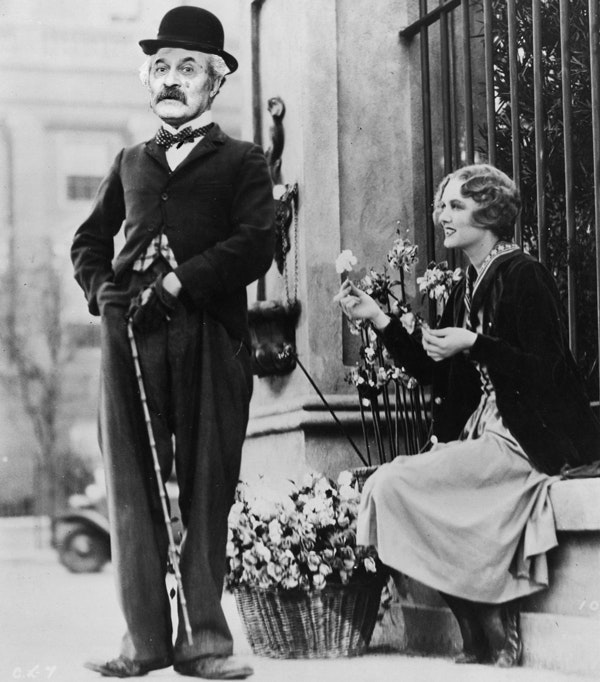
If only one of Charles Chaplin's films could be preserved, “City Lights” (1931) would come the closest to representing all the different notes of his genius. It contains the slapstick, the pathos, the pantomime, the effortless physical coordination, the melodrama, the bawdiness, the grace, and, of course, the Little Tramp--the character said, at one time, to be the most famous image on earth.
When he made it, three years into the era of sound, Chaplin must have known that “City Lights” might be his last silent film; he considered making a talkie, but decided against it, and although the film has a full musical score (composed by Chaplin) and sound effects, it has no speech. Audiences at the time would have appreciated his opening in-joke; the film begins with political speeches, but what emerges from the mouths of the speakers are unintelligible squawks--Chaplin's dig at dialogue. When he made “Modern Times” five years later, Chaplin allowed speech onto the soundtrack, but once again the Tramp remained silent except for some gibberish.
There was perfect logic here: Speech was not how the Tramp really expressed himself. In most silent films there's the illusion that the characters are speaking, even though we can't hear them. Buster Keaton's characters, for example, are clearly talkative. But the Tramp is more of a mime, a person for whom body language serves as speech. He exists somehow on a different plane than the other characters; he stands outside their lives and realities, is judged on his appearance, is homeless and without true friends or family, and interacts with the world mostly through his actions. Although he can sometimes be seen to speak, he doesn't need to; unlike most of the characters in silent films, he could have existed comfortably in a silent world.
In “Modern Times,” as Walter Kerr points out in his invaluable book The Silent Clowns, the Tramp is constantly trying to get back into jail, where he feels safe and secure. His most frequent refuge is a paddy wagon. In “City Lights,” his only friendships are with people who don't or can't see him: with a drunken millionaire who doesn't recognize him when he sobers up, and with a blind flower girl. His shabby appearance sets him apart and cues people to avoid and stereotype him; a tramp is not ... one of us. Unlike the Keaton characters, who have jobs and participate eagerly in society, the Tramp is an outcast, an onlooker, a loner.
That's what makes his relationship with the flower girl (Virginia Cherrill) so poignant; does she accept and treasure him only because she can't see what he looks like? (Her grandmother, who would no doubt warn her away from him, is never at home when the Tramp calls.) The last scene of “City Lights” is justly famous as one of the great emotional moments in the movies; the girl, whose sight has been restored by an operation paid for by the Tramp, now sees him as a bum--but smiles at him anyway, and gives him a rose and some money, and then, touching his hands, recognizes them. “You?” she asks on the title card. He nods, tries to smile, and asks, “You can see now?” “Yes,” she says, “I can see now.” She sees, and yet still smiles at him, and accepts him. The Tramp guessed correctly: She has a good heart, and is able to accept him as himself.
Chaplin and the other silent filmmakers knew no national boundaries. Their films went everywhere without regard for language, and talkies were like the Tower of Babel, building walls between nations. I witnessed the universality of Chaplin's art in one of my most treasured experiences as a moviegoer, in 1972, in Venice, where all of Chaplin's films were shown at the film festival.
One night the Piazza San Marco was darkened, and “City Lights” was shown on a vast screen. When the flower girl recognized the Tramp, I heard much snuffling and blowing of noses around me; there wasn't a dry eye in the piazza. Then complete darkness fell, and a spotlight singled out a balcony overlooking the square. Charlie Chaplin walked forward, and bowed. I have seldom heard such cheering.
He had by then for many decades been hailed as one of the screen's great creators. In “City Lights” we can see the invention and humanity that coexist in his films.
The movie contains some of Chaplin's great comic sequences, including the famous prize fight in which the Tramp uses his nimble footwork to always keep the referee between himself and his opponent. There's the opening scene, where a statue is unveiled to find the Tramp asleep in the lap of a heroic Greco-Roman stone figure. (Trying to climb down, he gets his pants hooked through the statue's sword, and tries to stand at attention during “The Star-Spangled Banner” although his feet can't find a footing.) There's the sequence where he tries to save the millionaire from drowning, and ends up with the rock tied to his own neck; the scene where he swallows a whistle and gathers a following of dogs; the scene where the millionaire and the Tramp encounter burglars; the scene in the nightclub where Charlie sees Apache dancers and defends the woman dancer against her partner.
And there are the bawdy moments, as when the Tramp, working as a street-sweeper, avoids a parade of horses only to encounter a parade of elephants; and when the millionaire pours bottles of champagne down the Tramp's pants.
Chaplin was a master of the small touch, the delayed reaction. Consider the moment when he goes to the blind girl's house to give her the money for an eye operation. He has prudently stashed $100 in his pocket for his own needs, but after she kisses his hand he shrugs, reaches in his pocket, and gives her the final bill.
Chaplin and Keaton are the giants of silent comedy, and in recent years the pendulum of fashion has swung between them. Chaplin ruled supreme for years, but by the 1960s he looked dated and sentimental to some viewers, and Keaton seemed fresher and more contemporary. In the polls taken every 10 years by Sight & Sound, the British film magazine, Chaplin placed high in 1952 and was gone by 1962; Keaton placed high in 1972 and 1982, and Chaplin replaced him again in 1992. The only thing such polls prove for sure is that a lot of film lovers think the work of both men belongs on a list of the 10 greatest films ever made.
Both filmmakers based their work on their fictional personalities, but took opposite approaches. Keaton plays a different character every time; Chaplin usually plays a version of the Tramp. Keaton's characters desire acceptance, recognition, romance and stature in the real world, and try to adapt to conditions; Chaplin's characters are perpetual outsiders who rigidly repeat the same strategies and reactions (often the gags come from how inappropriately the Tramp behaves). Keaton's movements are smooth and effortless; Chaplin's odd little lopsided gait looks almost arthritic. They appeared together only once, in Chaplin's “Limelight” (1952). Keaton steals the scene--but, as Kerr observes, Chaplin, who could have re-edited it to give himself the upper hand, was content to let Keaton prevail.
There was a time when Chaplin was hailed as the greatest popular artist of the 20th century, and his films were known to everyone. Today, how many people watch them? Are they shown in schools? I think not. On TV? Not very often. Silent film, the medium that gave Chaplin his canvas, has now robbed him of his mass audience. His films will live forever, but only for those who seek them out.
Having just viewed “City Lights” and “Modern Times” again, I am still under their spell. Chaplin's gift was truly magical. And silent films themselves create a reverie state; there is no dialogue, no obtrusive super-realism, to interrupt the flow. They stay with you. They are not just a work, but a place.
Most of Chaplin's films are available on video. Children who see them at a certain age don't notice they're “silent” but notice only that every frame speaks clearly to them, without all those mysterious words that clutter other films. Then children grow up, and forget this wisdom, but the films wait patiently and are willing to teach us again. ROGER EBERT, 1997
TO JOIN OUR MAILING LIST EMAIL US AT:
EMAIL: info@cine-real.com
INSTAGRAM - cinereal16mm
THE RED SHOES
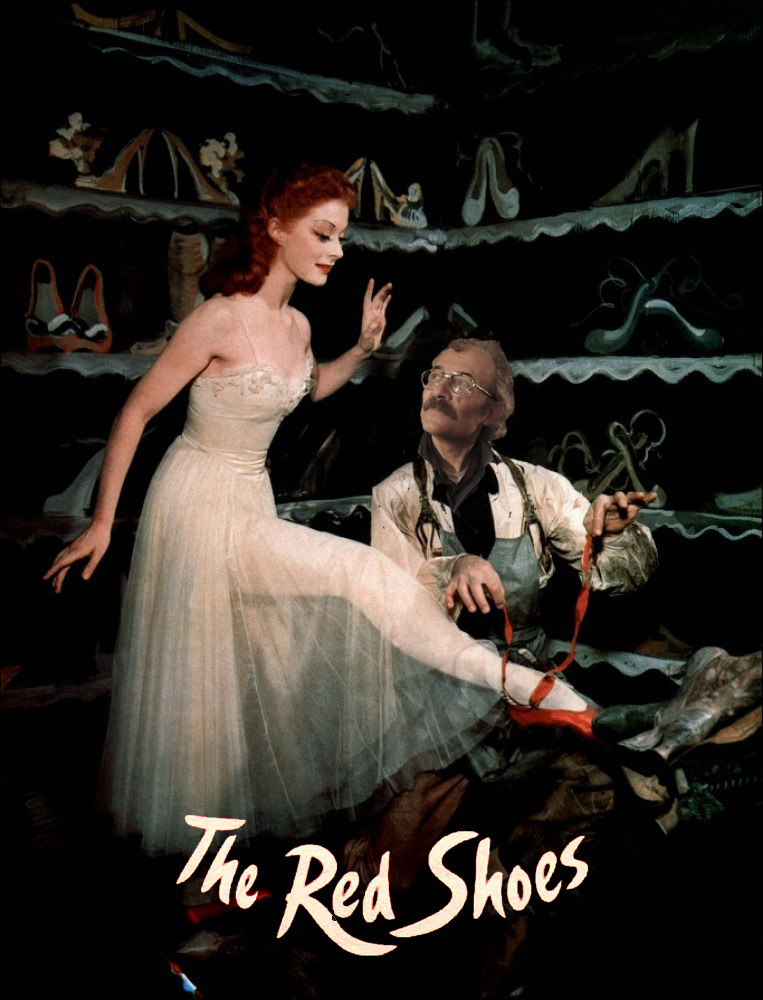
There is tension between two kinds of stories in "The Red Shoes," and that tension helps make it the most popular movie ever made about the ballet and one of the most enigmatic movies about anything. One story could be a Hollywood musical: A young ballerina falls in love with the composer of the ballet that makes her an overnight star. The other story is darker and more guarded. It involves the impresario who runs the ballet company, who demands loyalty and obedience, who is enraged when the young people get married. The motives of the ballerina and her lover are transparent. But the impresario defies analysis. In his dark eyes we read a fierce resentment. No, it is not jealousy, at least not romantic jealousy. Nothing as simple as that.
The film is voluptuous in its beauty and passionate in its storytelling. You don't watch it, you bathe in it. Yes, the ending is a shocker, but you see it coming and there's no way around it; the movie tells us a fairy tale and then repeats it as real life. It's the Hans Christian Andersen fable about a young girl who puts on a pair of red slippers that will not allow her to stop dancing; she must dance and dance, in a grotesque mockery of happiness, until she is dead. This is a dire subject for a ballet, you will agree; the movie surrounds it with the hard-boiled business of running a ballet company.
"The Red Shoes" was made in 1948 by the team of Michael Powell and Emeric Pressburger, British filmmakers as respected as Hitchcock, Reed or Lean. Powell was the director and Pressburger, a Hungarian immigrant, was the writer, but they always took a double credit as writer-directors, and were known as The Archers; their logo was an arrow hitting its target, announcing such masterpieces as "The Life and Death of Colonel Blimp," "Black Narcissus," "Peeping Tom," "The Thief of Bagdad," and "A Matter of Life and Death," the David Niven classic that played in America as "Stairway to Heaven."
Pressburger had written a draft of a ballet film in the 1930s, and after the war, after their enormous success with "Black Narcissus" (1947), which made a star of Deborah Kerr and won Oscars for cinematography and art direction, they had another look at it. Powell had grown up on the French Riviera; his British father ran a hotel on Cap Ferrat, and he often saw the Russian impresario Diaghilev, whose Ballets Russes wintered nearby in Monte Carlo. The Archers used Powell's notions about Diaghilev and the earlier script to create the story of a proud, cold, distant impresario who meets his match with a fiery ballerina. Pressburger may have been inspired by a famous scandal in 1913 when Diaghilev's great but tortured star, Vaslav Nijinsky, married the Hungarian ballerina Romola de Pulszky. He fired them both.
Casting is everything when the characters must move between realism and fantasy, and "The Red Shoes" might have failed without Moira Shearer and Anton Walbrook as the stars. Shearer and Walbrook have distinctive, even idiosyncratic personalities, and they bring an emotional realism to characters who are really, after all, only stereotypes. Walbrook plays Boris Lermontov, the imperious manager of the Ballet Lermontov, a company ruled by his iron will. He is arrogant, curt, unbending, able to charm, able to chill. Shearer plays the dancer Victoria Page, whose friend Julian Craster (Marius Goring) bursts into Lermontov's office to complain that his composition has been stolen by the company's conductor. Julian is hired by Lermontov, Vicky wins an audition, and when the company's leading dancer resigns to get married, they are told "we have three weeks to create a ballet -- out of nothing."
Moira Shearer, let it be said, is a great beauty: "Her cloud of red hair, as natural and beautiful as any animal's, flamed and glittered like an autumn bonfire," Powell wrote in his autobiography, the best ever written by a filmmaker. "She had a magnificent body. She wasn't slim, she just didn't have one ounce of superfluous flesh." Of Walbrook he wrote: "Anton conceals his humility and his warm heart behind perfect manners that shield him like suit of armor. He responds to clothing like the chameleon that changes shape and color out of sympathy with its surroundings."
Quite so. In "Colonel Blimp," Walbrook makes a German aristocrat sympathetic. In Max Ophuls' great "La Ronde" (1950), he is our urbane and charming guide to a decadent society. In "The Red Shoes," he creates a deliberate enigma, a man who does not want to be understood, who imposes his will but conceals his feelings.
Vicky Page is his opposite: Joyous and open to life. Shearer, who was 21 when she was cast, was at the time with the Sadlers' Wells Company, dancing in the shadow of the young Margot Fonteyn. She didn't take movies seriously, waited a year before agreeing to star in "The Red Shoes," went back to the ballet, and possibly never knew how good she was in the movie, how powerfully she related to the camera. "I never knew what a natural was before," Powell told the studio owner J. Arthur Rank. "But now I do. It's Moira Shearer."
The movie tells parallel stories leading up to its 17-minute ballet sequence. While Vicky and Julian are falling in love, Lermontov and his company are creating the new ballet. There is a key scene where Lermontov and all his colleagues meet in his villa to hear Julian play the new ballet for the first time. "I was determined to shoot it in one big master shot," Powell wrote, and it is a masterpiece of composition, of entrances, exits, approaches to the camera, background action, and the vibrating sense of a creative team at work. "There are lots of clever scenes in 'The Red Shoes'," he wrote, "but this is the heart of the picture."
The other key scenes are the ballet itself, and the sequence leading up to the ending. No film had ever interrupted its story for an extended ballet before "The Red Shoes," although its success made that a fashion, and "An American in Paris" and "Singin' in the Rain," among others, have extended fantasy ballet sequences. None ever looked as fantastical as the one in the "The Red Shoes," where the little shoemaker puts the fatal slippers on the girl. The physical stage is seamlessly transformed into a surreal space, where Shearer glides and flies, enters unreal landscapes and even does a pas de deux with a newspaper that takes the form of a dancer, turns into the dancer, and then into a newspaper again. The cinematographer Jack Cardiff wrote about how he manipulated camera speed to make the dancers seem to linger at the tops of their jumps; the art direction won an Oscar, mostly because of this scene (there was also an Oscar for the music, and nominations for best picture, editing and screenplay).
After Vicky and Julian are married and Lermontov fires them, he persuades her to dance "The Red Shoes" one more time. Julian walks out of the premiere of his new symphony in London to fly to Monte Carlo and accuse her of abandoning him. What will she choose? The dance, or her husband? She puts on the red slippers, and in a brilliant closeup the slippers force her to turn around, and seem to lead her as she runs from the theater and throws herself in front of a train. Discussing the script, Pressburger argued that Vicky couldn't be wearing the red shoes when she runs away, because the ballet had not yet started. Powell writes: "I was a director, a storyteller, and I knew that she must. I didn't try to explain it. I just did it."
That brings us back to the tension we began with. Why does Lermontov object so violently to the marriage of these two young people? Is it sexual jealousy? Does he desire Vicky, or, for that matter, Julian? Lermontov is a bachelor with the elegant wardrobe and mannered detachment that played as gay in the 1940s, but there is not a moment when he displays any sexual feelings. He would rather die than appear vulnerable. My notion is that Lermontov is Mephistopheles. He has made a bargain with Vicky: "I will make you the greatest dancer the world has ever known." But he warns her: "A dancer who relies upon the doubtful comforts of human love will never be a great dancer -- never." Like the Satan of classical legend, he is enraged when he wins her soul only to lose it again. He demands obedience above all else.
That leaves us with Vicky's choice. She can return to London with Julian, or leave him and continue her career. Why does she abandon these choices at the height of her youth and beauty, and kill herself? The answer of course is that she is powerless, once she puts on the red shoes. ROGER EBERT, 2005
M
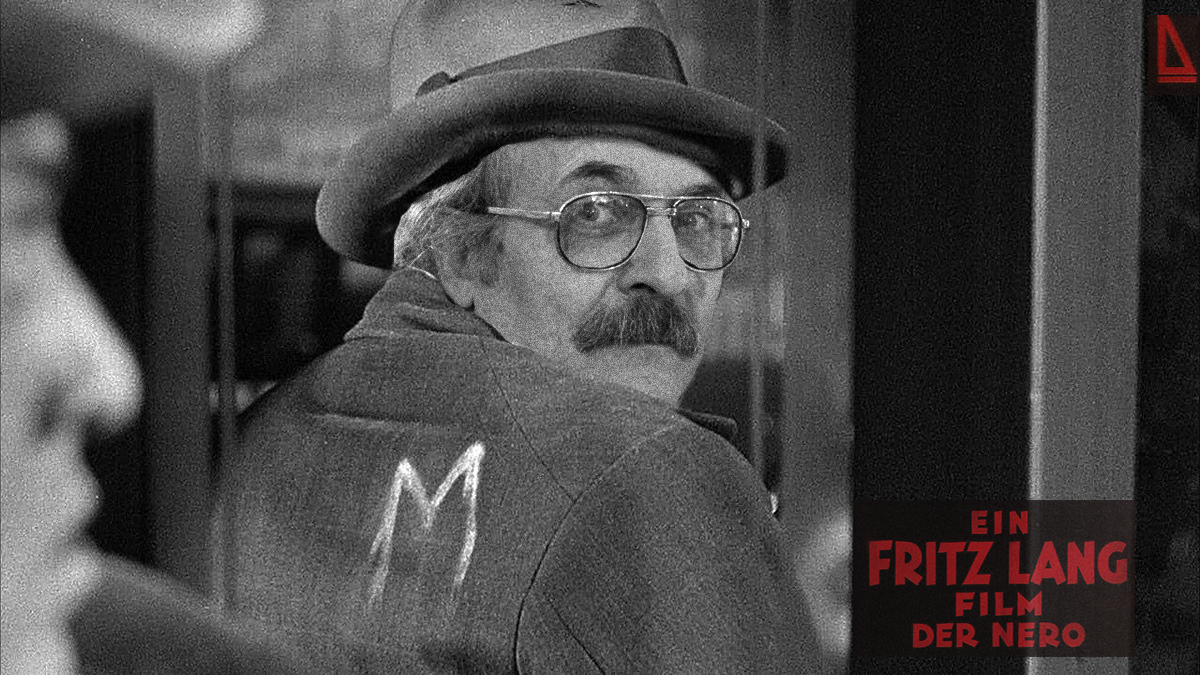
The horror of the faces: That is the overwhelming image that remains from a recent viewing of the restored version of “M,” Fritz Lang's famous 1931 film about a child murderer in Germany. In my memory it was a film that centered on the killer, the creepy little Franz Becker, played by Peter Lorre. But Becker has relatively limited screen time, and only one consequential speech--although it's a haunting one. Most of the film is devoted to the search for Becker, by both the police and the underworld, and many of these scenes are played in closeup. In searching for words to describe the faces of the actors, I fall hopelessly upon “piglike.”
What was Lang up to? He was a famous director, his silent films like "Metropolis” worldwide successes. He lived in a Berlin where the left-wing plays of Bertolt Brecht coexisted with the decadent milieu re-created in movies like "Cabaret.” By 1931, the Nazi Party was on the march in Germany, although not yet in full control. His own wife would later become a party member. He made a film that has been credited with forming two genres: the serial killer movie and the police procedural. And he filled it with grotesques. Was there something beneath the surface, some visceral feeling about his society that this story allowed him to express?
When you watch "M,” you see a hatred for the Germany of the early 1930s that is visible and palpable. Apart from a few perfunctory shots of everyday bourgeoisie life (such as the pathetic scene of the mother waiting for her little girl to return from school), the entire movie consists of men seen in shadows, in smokefilled dens, in disgusting dives, in conspiratorial conferences. And the faces of these men are cruel caricatures: Fleshy, twisted, beetle-browed, dark-jowled, out of proportion. One is reminded of the stark faces of the accusing judges in Dreyer's “Joan of Arc,” but they are more forbidding than ugly.
What I sense is that Lang hated the people around him, hated Nazism, and hated Germany for permitting it. His next film, "The Testament of Dr. Mabuse” (1933), had villains who were unmistakably Nazis. It was banned by the censors, but Joseph Goebbels, so the story goes, offered Lang control of the nation's film industry if he would come on board with the Nazis. He fled, he claimed, on a midnight train -- although Patrick McGilligan's new book,Fritz Lang: The Nature of the Beast, is dubious about many of Lang's grandiose claims.
Certainly "M” is a portrait of a diseased society, one that seems even more decadent than the other portraits of Berlin in the 1930s; its characters have no virtues and lack even attractive vices. In other stories of the time we see nightclubs, champagne, sex and perversion. When "M” visits a bar, it is to show closeups of greasy sausages, spilled beer, rotten cheese and stale cigar butts.
The film's story was inspired by the career of a serial killer in Dusseldorf. In "M,” Franz Becker preys on children -- offering them candy and friendship, and then killing them. The murders are all offscreen, and Lang suggests the first one with a classic montage including the little victim's empty dinner plate, her mother calling frantically down an empty spiral staircase, and her balloon--bought for her by the killer--caught in electric wires.
There is no suspense about the murderer's identity. Early in the film we see Becker looking at himself in a mirror. Peter Lorre at the time was 26, plump, baby-faced, clean-shaven, and as he looks at his reflected image he pulls down the corners of his mouth and tries to make hideous faces, to see in himself the monster others see in him. His presence in the movie is often implied rather than seen; he compulsively whistles the same tune, from "Peer Gynt,” over and over, until the notes stand in for the murders.
The city is in turmoil: The killer must be caught. The police put all their men on the case, making life unbearable for the criminal element ("There are more cops on the streets than girls,” a pimp complains). To reduce the heat, the city's criminals team up to find the killer, and as Lang intercuts between two summit conferences -- the cops and the criminals -- we are struck by how similar the two groups are, visually. Both sit around tables in gloomy rooms, smoking so voluminously that at times their very faces are invisible. In their fat fingers their cigars look fecal. (As the criminals agree that murdering children violates their code, I was reminded of the summit on drugs in "The Godfather.”)
"M” was Lang's first sound picture, and he was wise to use dialogue so sparingly. Many early talkies felt they had to talk all the time, but Lang allows his camera to prowl through the streets and dives, providing a rat's-eye view. One of the film's most spectacular shots is utterly silent, as the captured killer is dragged into a basement to be confronted by the city's assembled criminals, and the camera shows their faces: hard, cold, closed, implacable.
It is at this inquisition that Lorre delivers his famous speech in defense, or explanation. Sweating with terror, his face a fright mask, he cries out: "I can't help myself! I haven't any control over this evil thing that's inside of me! The fire, the voices, the torment!” He tries to describe how the compulsion follows him through the streets, and ends: "Who knows what it's like to be me?”
This is always said to be Lorre's first screen performance, although McGilligan establishes that it was his third. It was certainly the performance that fixed his image forever, during a long Hollywood career in which he became one of Warner Bros.' most famous character actors ("Casablanca,” "The Maltese Falcon,” "The Mask of Dimitrios”). He was also a comedian and a song-and-dance man, and although you can see him opposite Fred Astaire in "Silk Stockings” (1957), it was as a psychopath that he supported himself. He died in 1964.
Fritz Lang (1890-1976) became, in America, a famous director of film noir. His credits include "You Only Live Once” (1937, based on the Bonnie and Clyde story), Graham Greene's "Ministry of Fear” (1944), "The Big Heat” (1953, with Lee Marvin hurling hot coffee in Gloria Grahame's face) and "While the City Sleeps” (1956, another story about a manhunt). He was often accused of sadism toward his actors; he had Lorre thrown down the stairs into the criminal lair a dozen times, and Peter Bogdanovich describes a scene in Lang's "Western Union” where Randolph Scott tries to burn the ropes off his bound wrists. John Ford, watching the movie, said, "Those are Randy's wrists, that is real rope, that is a real fire.”
For years "M” was available only in scratchy, dim prints. Even my earlier laserdisc is only marginally watchable. This new version, restored by the Munich Film Archive, is not only better to look at but easier to follow, since more of the German dialogue has been subtitled. (Lorre also recorded a soundtrack in English, which should be made available as an option on the eventual laserdisc and DVD versions.) Watching the new print of "M,” I found the film more powerful than I remembered, because I was not watching it through a haze of disintegration.
And what a haunting film it is. The film doesn't ask for sympathy for the killer Franz Becker, but it asks for understanding: As he says in his own defense, he cannot escape or control the evil compulsions that overtake him. Elsewhere in the film, an innocent old man, suspected of being the killer, is attacked by a mob that forms on the spot. Each of the mob members was presumably capable of telling right from wrong and controlling his actions (as Becker was not), and yet as a mob they moved with the same compulsion to kill. There is a message there somewhere. Not "somewhere,” really, but right up front, where it's a wonder it escaped the attention of the Nazi censors.
FEBRUARY, 2023
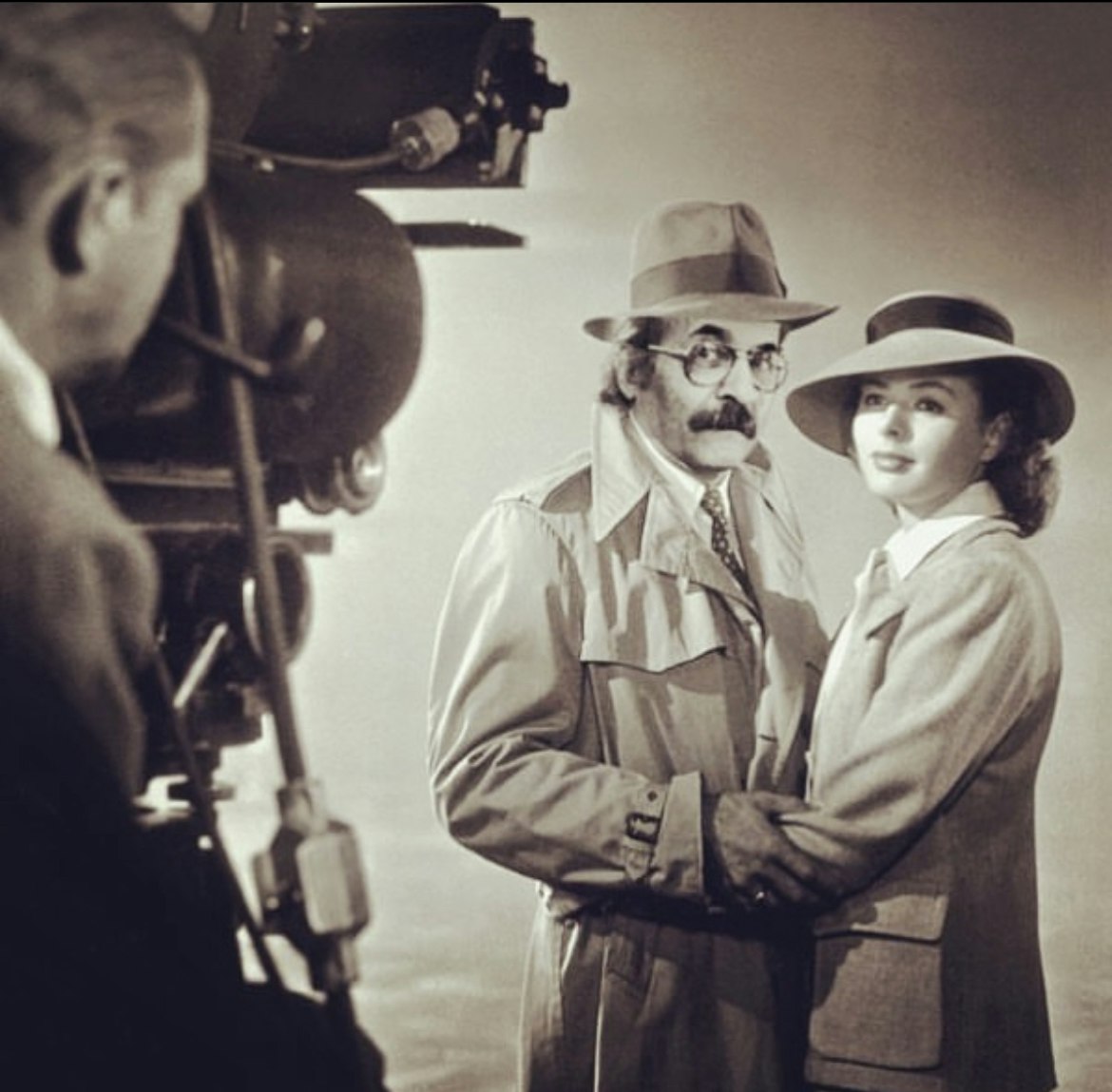
If we identify strongly with the characters in some movies, then it is no mystery that “Casablanca” is one of the most popular films ever made. It is about a man and a woman who are in love, and who sacrifice love for a higher purpose. This is immensely appealing; the viewer is not only able to imagine winning the love of Humphrey Bogart or Ingrid Bergman, but unselfishly renouncing it, as a contribution to the great cause of defeating the Nazis.
No one making “Casablanca” thought they were making a great movie. It was simply another Warner Bros. release. It was an “A list” picture, to be sure (Bogart, Bergman and Paul Henreid were stars, and no better cast of supporting actors could have been assembled on the Warners lot than Peter Lorre, Sidney Greenstreet, Claude Rains and Dooley Wilson). But it was made on a tight budget and released with small expectations. Everyone involved in the film had been, and would be, in dozens of other films made under similar circumstances, and the greatness of “Casablanca” was largely the result of happy chance.
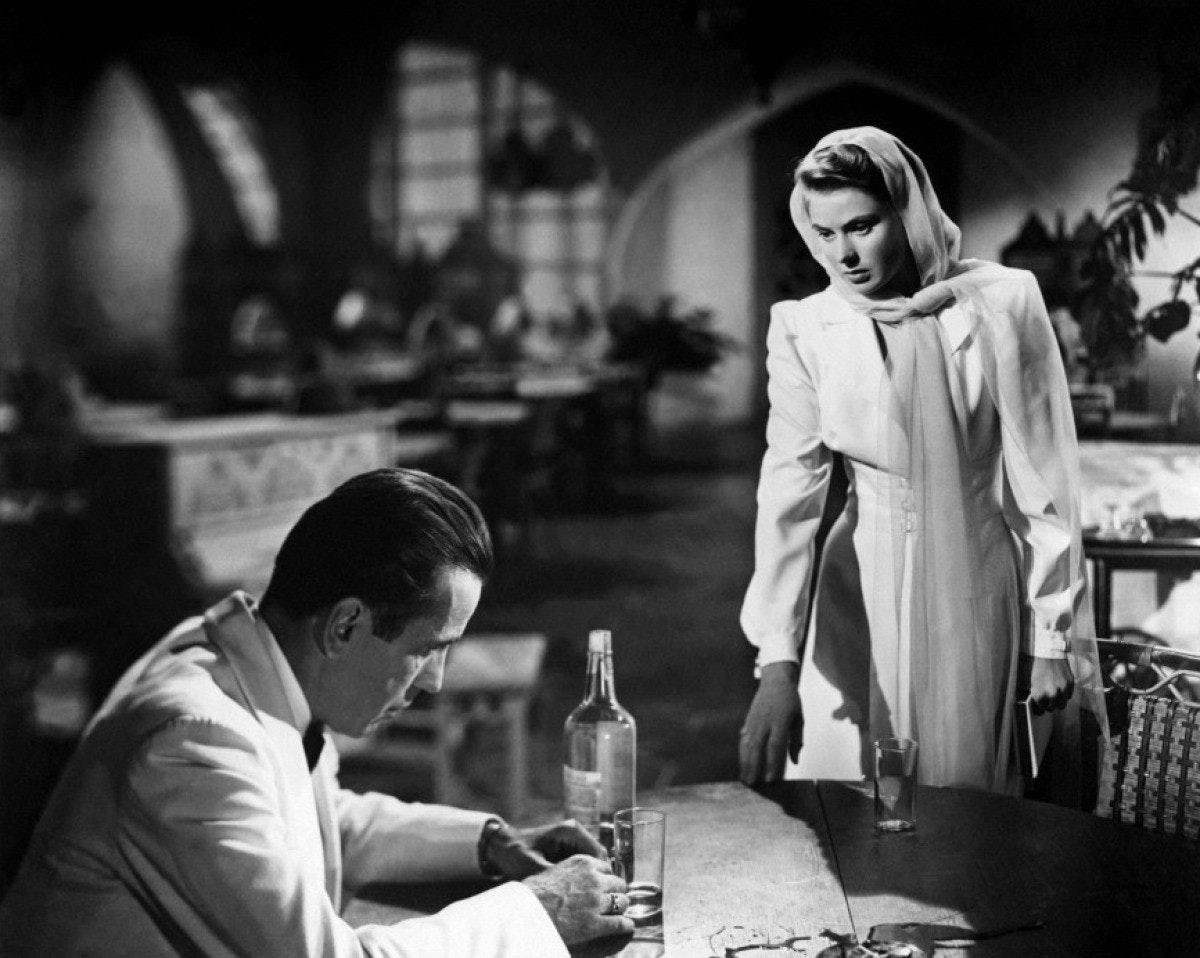
The screenplay was adapted from a play of no great consequence; memoirs tell of scraps of dialogue jotted down and rushed over to the set. What must have helped is that the characters were firmly established in the minds of the writers, and they were characters so close to the screen personas of the actors that it was hard to write dialogue in the wrong tone.
Humphrey Bogart played strong heroic leads in his career, but he was usually better as the disappointed, wounded, resentful hero. Remember him in “The Treasure of the Sierra Madre,” convinced the others were plotting to steal his gold. In “Casablanca,” he plays Rick Blaine, the hard-drinking American running a nightclub in Casablanca when Morocco was a crossroads for spies, traitors, Nazis and the French Resistance.
The opening scenes dance with comedy; the dialogue combines the cynical with the weary; wisecracks with epigrams. We see that Rick moves easily in a corrupt world. “What is your nationality?” the German Strasser asks him, and he replies, “I'm a drunkard.” His personal code: “I stick my neck out for nobody.”
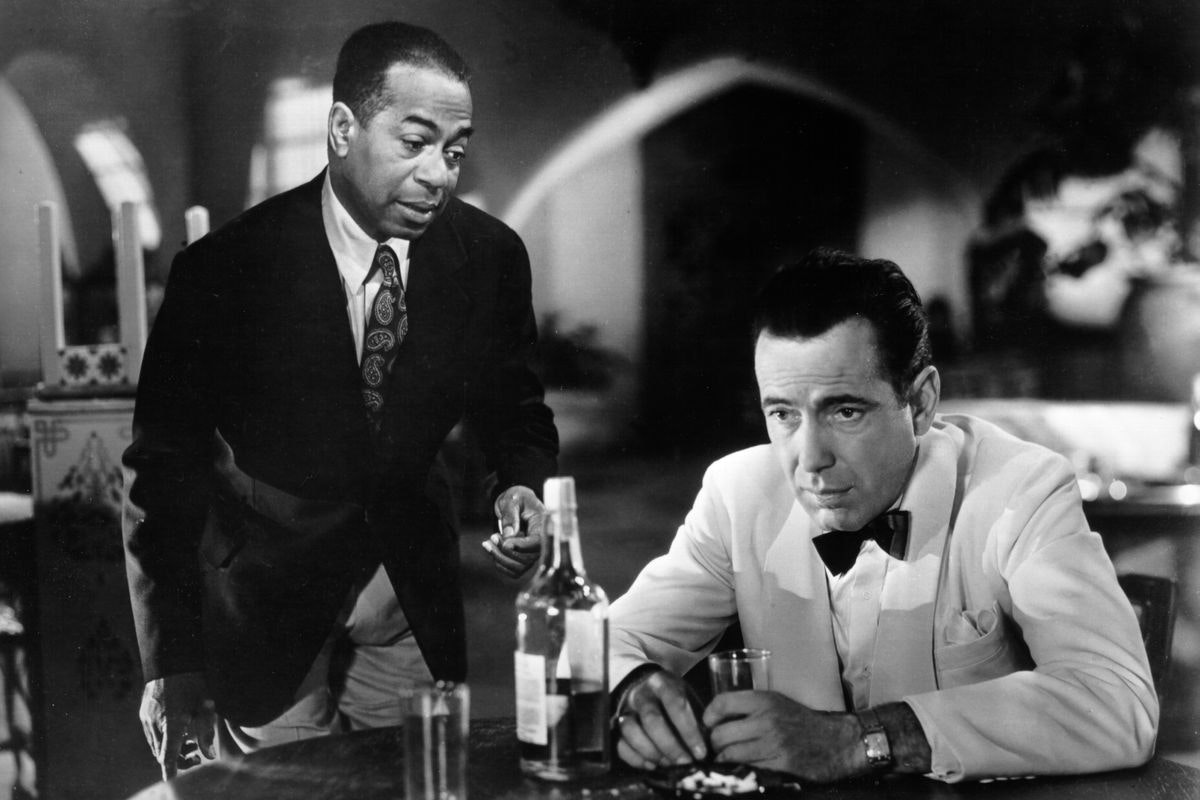
Then “of all the gin joints in all the towns in all the world, she walks into mine.” It is Ilsa Lund (Bergman), the woman Rick loved years earlier in Paris. Under the shadow of the German occupation, he arranged their escape, and believes she abandoned him--left him waiting in the rain at a train station with their tickets to freedom. Now she is with Victor Laszlo (Henreid), a legendary hero of the French Resistance.
All this is handled with great economy in a handful of shots that still, after many viewings, have the power to move me emotionally as few scenes ever have. The bar's piano player, Sam (Wilson), a friend of theirs in Paris, is startled to see her. She asks him to play the song that she and Rick made their own, “As Time Goes By.” He is reluctant, but he does, and Rick comes striding angrily out of the back room (“I thought I told you never to play that song!”). Then he sees Ilsa, a dramatic musical chord marks their closeups, and the scene plays out in resentment, regret and the memory of a love that was real. (This scene is not as strong on a first viewing as on subsequent viewings, because the first time you see the movie you don't yet know the story of Rick and Ilsa in Paris; indeed, the more you see it the more the whole film gains resonance.)
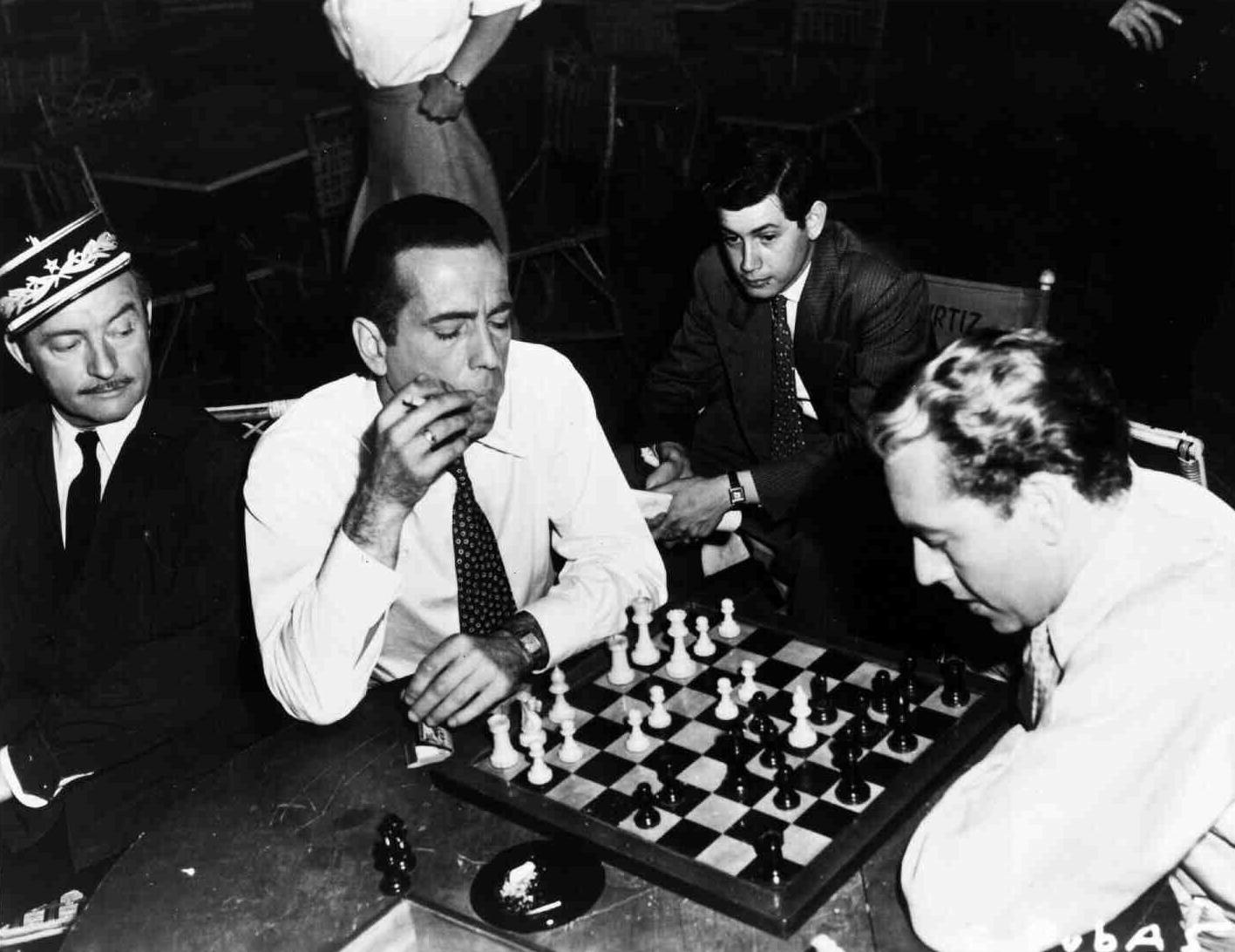
The plot, a trifle to hang the emotions on, involves letters of passage that will allow two people to leave Casablanca for Portugal and freedom. Rick obtained the letters from the wheedling little black-marketeer Ugarte (Peter Lorre). The sudden reappearance of Ilsa reopens all of his old wounds, and breaks his carefully cultivated veneer of neutrality and indifference. When he hears her story, he realizes she has always loved him. But now she is with Laszlo. Rick wants to use the letters to escape with Ilsa, but then, in a sustained sequence that combines suspense, romance and comedy as they have rarely been brought together on the screen, he contrives a situation in which Ilsa and Laszlo escape together, while he and his friend the police chief (Claude Rains) get away with murder. (“Round up the usual suspects.”)
What is intriguing is that none of the major characters is bad. Some are cynical, some lie, some kill, but all are redeemed. If you think it was easy for Rick to renounce his love for Ilsa--to place a higher value on Laszlo's fight against Nazism--remember Forster's famous comment, “If I were forced to choose between my country and my friend, I hope I would be brave enough to choose my friend.”
From a modern perspective, the film reveals interesting assumptions. Ilsa Lund's role is basically that of a lover and helpmate to a great man; the movie's real question is, which great man should she be sleeping with? There is actually no reason why Laszlo cannot get on the plane alone, leaving Ilsa in Casablanca with Rick, and indeed that is one of the endings that was briefly considered. But that would be all wrong; the “happy” ending would be tarnished by self-interest, while the ending we have allows Rick to be larger, to approach nobility (“it doesn't take much to see that the problems of three little people don't amount to a hill of beans in this crazy world”). And it allows us, vicariously experiencing all of these things in the theater, to warm in the glow of his heroism.
In her closeups during this scene, Bergman's face reflects confusing emotions. And well she might have been confused, since neither she nor anyone else on the film knew for sure until the final day who would get on the plane. Bergman played the whole movie without knowing how it would end, and this had the subtle effect of making all of her scenes more emotionally convincing; she could not tilt in the direction she knew the wind was blowing.
Stylistically, the film is not so much brilliant as absolutely sound, rock-solid in its use of Hollywood studio craftsmanship. The director, Michael Curtiz, and the writers (Julius J. Epstein, Philip G. Epstein and Howard Koch) all won Oscars. One of their key contributions was to show us that Rick, Ilsa and the others lived in a complex time and place. The richness of the supporting characters (Greenstreet as the corrupt club owner, Lorre as the sniveling cheat, Rains as the subtly homosexual police chief and minor characters like the young girl who will do anything to help her husband) set the moral stage for the decisions of the major characters. When this plot was remade in 1990 as “Havana,” Hollywood practices required all the big scenes to feature the big stars (Robert Redford and Lena Olin) and the film suffered as a result; out of context, they were more lovers than heroes.
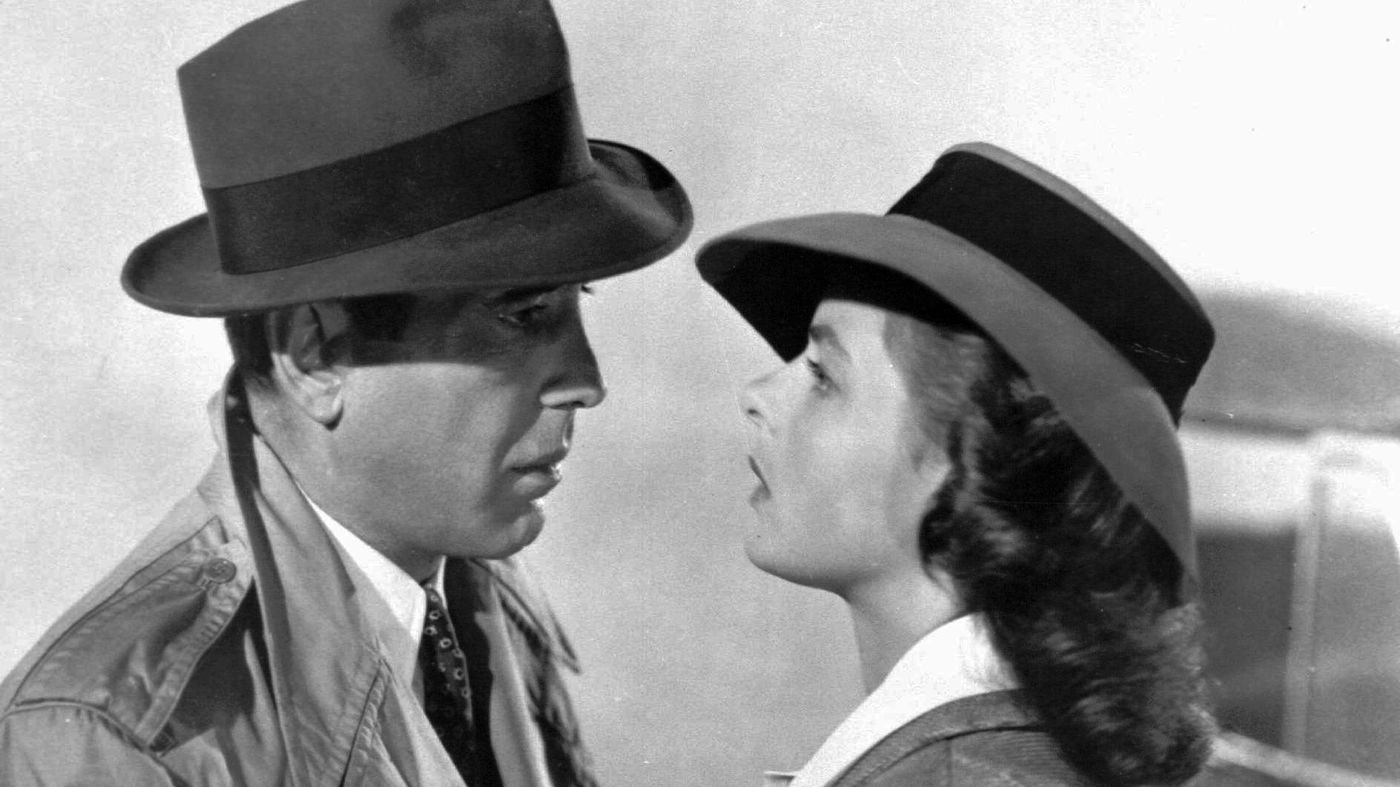
Seeing the film over and over again, year after year, I find it never grows over-familiar. It plays like a favorite musical album; the more I know it, the more I like it. The black-and-white cinematography has not aged as color would. The dialogue is so spare and cynical it has not grown old-fashioned. Much of the emotional effect of “Casablanca” is achieved by indirection; as we leave the theater, we are absolutely convinced that the only thing keeping the world from going crazy is that the problems of three little people do after all amount to more than a hill of beans. (ROGER EBERT).
Pierrot Le Fou
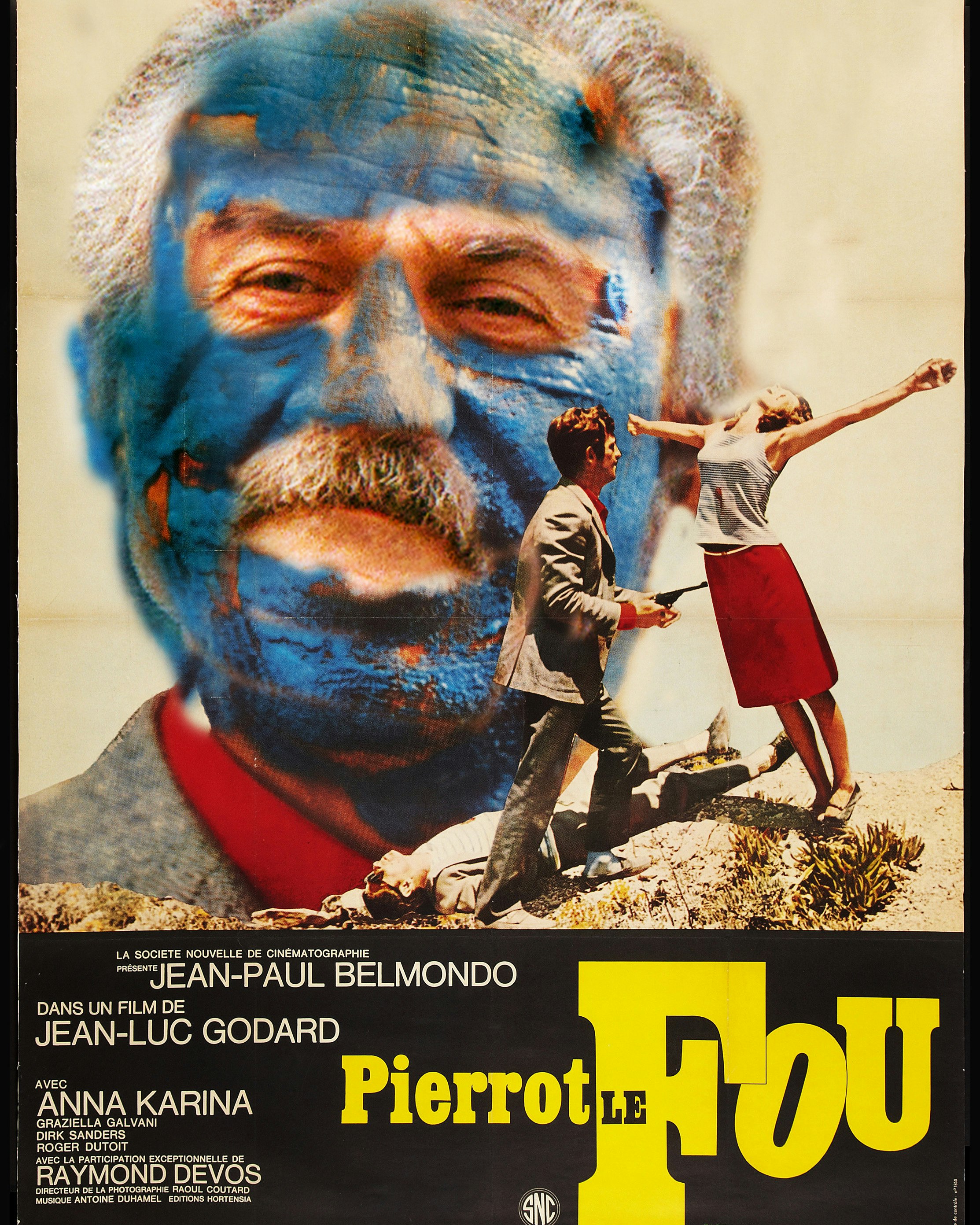
It would be as hard to remake Pierrot le fou as it would be to forget it. Somehow its rueful lovers have to be reconciled to changed times. The film is 44 years old now, which is older than the two central characters whose remains drift away in the sea and the sun. Many things have gone with those two – the Vietnam War, that particular type of sports car, the possibility of an audience that will understand when Ferdinand (Jean-Paul Belmondo) starts to do a Michel Simon imitation. But the last time I looked, the south of France was still there and it was still possible for escaping souls to go south “like spirits through a mirror”. If you drive your car into the ocean on an impulse today, there may spring up the brief arc of rainbow that crowned the spray in the summer of 1965. But is it the same rainbow?
No, you can’t go back: the real Belmondo has had a stroke and Anna Karina perhaps now resembles the Princess Aicha Abadie (who appeared as herself in the film) more than she does Marianne Renoir. But no one makes that kind of fatal summer romance any longer, the one in which a couple break out of arid lives because they have realised they only live once, or because they are tempted to replay Lolita in the Midi – not a little girl and a grown man this time, but a pairing in which he talks to her with words and she looks at him with feelings. (That comes from the film and sounds as plaintive as mid-1960s feminist speak, but it’s not far from the novel Lolita, where Humbert has the achy feelings and the heroine pours her hipster slang into his avid ears.) These days you might do it again as a story about a director and an actress who drift apart while they are making a film called Pierrot le fou.
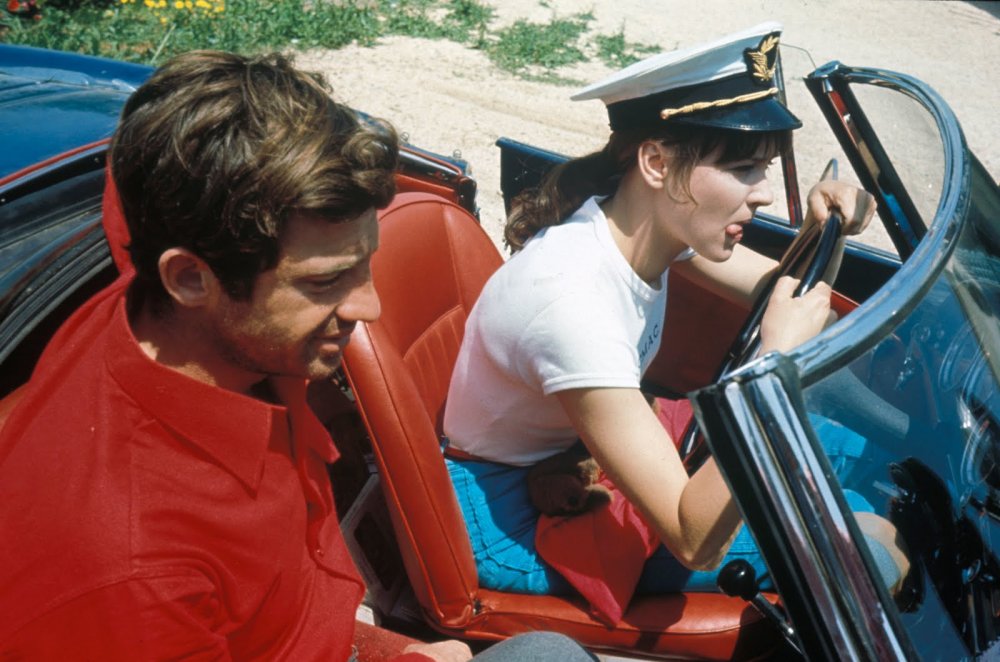
Pierrot le fou (1965)
But wait a minute: as so often, Godard made not just his own film but an autopsy (or analysis) of it at the same time. Godard had acquired Pierrot’s literary source – Lionel White’s American novel Obsession – as early as February 1964. The book concerned the affair between a young woman and a much older man. Godard’s first thought on casting was Richard Burton as the man, and he considered Sylvie Vartan as the girl. When he came to make the film he settled for Belmondo and Karina (only seven years apart in age). Something else had happened in the meantime: Karina had made Le Voleur de Tibidabo with Maurice Ronet. They had an affair, and Godard and Karina were divorced in December 1964.
So Pierrot le fou is an account of the breakdown of a love affair, but it is played out by two people – Karina and Godard – who had already lived the story in reality. So why did they relive their own torture? Well, Godard always said at the time that he did not know how to make a film without Karina – Pierrot was their sixth film together in four years. He added that he was afraid she might not have a career without him. And maybe he, or she, but never quite the two of them at the same time, dreamed of a reconciliation. The obvious comparison is with Welles’s The Lady from Shanghai, an enterprise entered into after the estrangement of Welles and Rita Hayworth, yet playing with the prospect that they might fall in love again if doing it on camera.
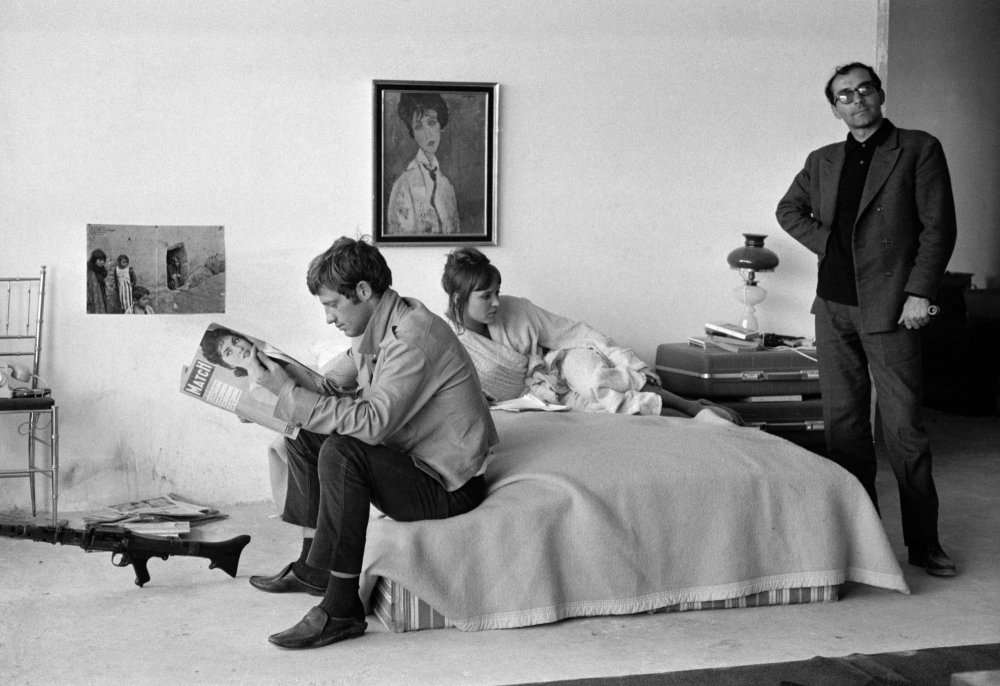
Jean-Paul Belmondo, Anna Karina and Jean-Luc Godard filming Pierrot le fou (1965)
Credit: Corbis
Richard Brody’s account of the film’s making in his excellent book Everything is Cinema: The Working Life of Jean-Luc Godard does not paint a sentimental picture of what happened. The couple could hardly talk to each other, and when they did it was in snarls and groans. Moreover, Karina had to see that the scenario of Pierrot was depicting her as the wanton, betraying figure, the woman who had given up on the austere, lonely Jean-Luc (even Jean-Luc the misogynist). How could she trust the ordinary viewer of the film to see that Godard was a secret enabler in her disloyalty, urging her on by coldness and disdain, and being the complaisant husband who almost directs his wife’s affair – everyone would have had to have seen Le Mépris to get that point.
Perhaps Karina also guessed that just a few murderous, smouldering glances into the camera would establish her point of view. On film, Marianne’s restless desire to do something – to move, dance, sing, kill and pout – is so refreshingly at odds with the self-regarding pose of Ferdinand, who only wants to read and write, eventually filling the Techniscope image with his bleak little poems in red and blue. So the movie goes a long way to undermining the most Godardian qualities: intellect, language, reflection and analysis are constantly put to the test by colour, light, movement, space and the variety of apparently improvised human performances. That encompasses not just Karina’s pacing-tiger act, but the unexpected narrative by Raymond Devos, the lecture on film dynamics by Samuel Fuller, the street theatre Vietnam show, the brief lives of passers-by, and the whole array of quotation and metareference that crowd together in the movie.
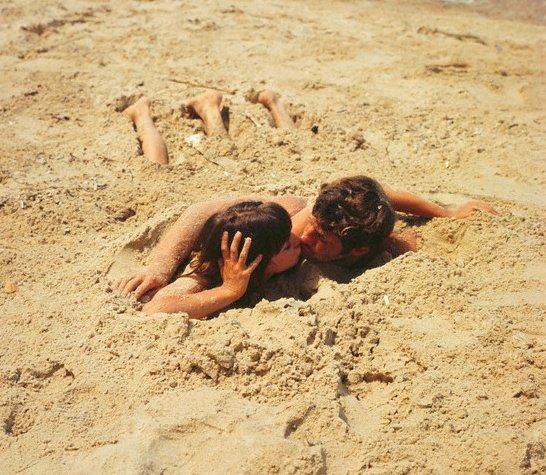
Pierrot always felt like a summer-holiday film, but Brody makes clear that it was the most costly and awkward to shoot that Godard had attempted. The Techniscope system was new and director of photography Raoul Coutard needed a lot of side lighting in interiors to get a balanced image. The schedule was June to July 1965, with the picture opening at the Venice Film Festival on 29 August, but the production was as technically complicated as the emotional situation it sought to exploit was delicate. Still, it was Godard’s ninth feature in six years, continuing his rapid reappraisal of Hollywood genres – which was regarded as a record-breaking pace until Rainer Werner Fassbinder hit his stride in the 1970s.
Just as Ferdinand is a man who can inhale the smoky atmosphere and intrigue of Velázquez (and Johnny Guitar) into his own life, so Pierrot le fou stands clear as one of the New Wave films that addresses the value of cultural reference and so many thousand hours lived in the dark. Belmondo’s Ferdinand has antic passages, but he is a person forever fascinated by a book, a quotation from Céline or a glimpse of Jean Seberg at the movies. (Of course, Seberg was Godard’s first onscreen betrayer in Breathless, where the dying Michel calls her “dégueulasse”.) Whatever Ferdinand does or thinks in the movie he refers to the library – thus a wickedly quick onscreen caper is a collage of Conrad, Stevenson, Jack London, Faulkner and Raymond Chandler. The hero is named Ferdinand after the director’s favourite writer of the moment, Céline, whose Journey to the End of the Night Godard contemplated filming. But Marianne knows how to piss him off by identifying him as the idiot clown – Pierrot. He is too short in life to have another name.
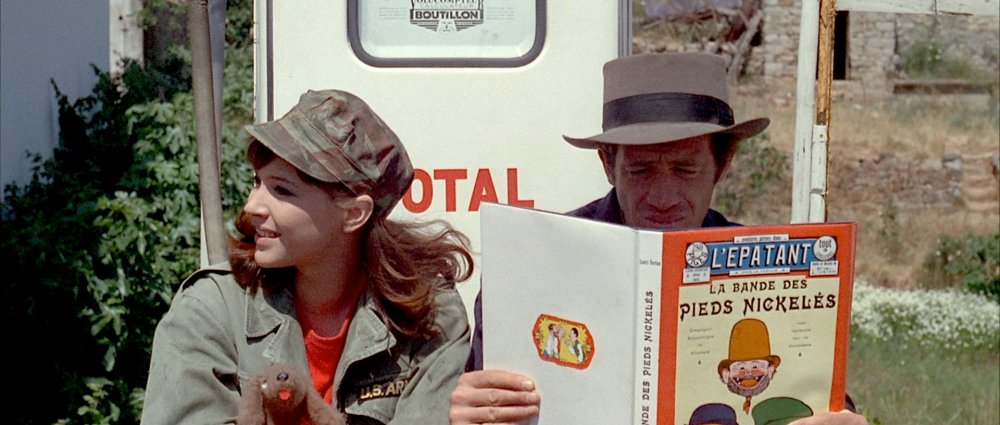
From the nearly crushed music (by Antoine Duhamel), with its heartbreaking plunge into lyricism, to the flaming summer colours by Coutard, Pierrot le fou is a film made out of scorched nostalgia; and don’t be surprised if the burning turns out to be a hint of torture. It is a movie about dismayed dreams, smothered smiles and resentment bubbling up like blood from the wounds. It is also a work of savage contrasts: on the morning after the first lovemaking, the great Bassiak song Jamais je ne t’ai dit que je t’aimerai toujours is cut against the off-hand discovery of a corpse in the next room. Similarly, jokes and tragedy keep stepping on each other’s toes.
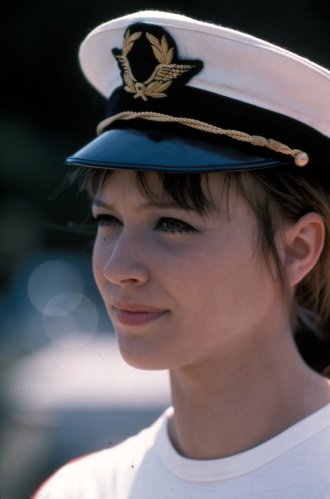
Perhaps Anna Karina sometimes felt that Godard had only put her in this film to humiliate her – because she was his and cheap (the shadow of prostitution is never far away in Godard). But I don’t think anyone has found the film short on the pain present in love. When Welles looks at Rita Hayworth in The Lady from Shanghai, it is an American tourist gaping at a famous but absurd pin-up, but when Godard looks at Karina we feel the ruin and despair at being left. Still, it’s likely that Godard the ironist and analyst only made the film because of that masochistic urge to have an ex-lover stub out her last feeling with every look into his camera.
So I still find it a great film, and a warning signal that romance and romanticism were blood being drained out of the corpse called cinema. It’s as if Godard – one of the greatest readers of the medium we have ever had – foresaw that he could hardly make romantic films again. The process of finding the girl, teaching her to act, of having her in life and on the screen would turn camp after Pierrot. It’s as if he realised that life had worked out in such a way by 1965 that he was trapped at the start of a long downward slope.
Yes of course the rest is ‘interesting’ and valuable. But in the years 1960 to 1965 (very competitive years, let us admit), Godard was without equal at vamping old story forms with the bittersweet tone of the best pop music of the era. To this day, Vivre sa vie and Pierrot le fou find their form, their cutting and their way of seeing in the regret with which a horribly bright, learned noirist is drawn into the plein soleil of summer cinema. This is why Godard always wore dark glasses – against the sun.
January, 2023
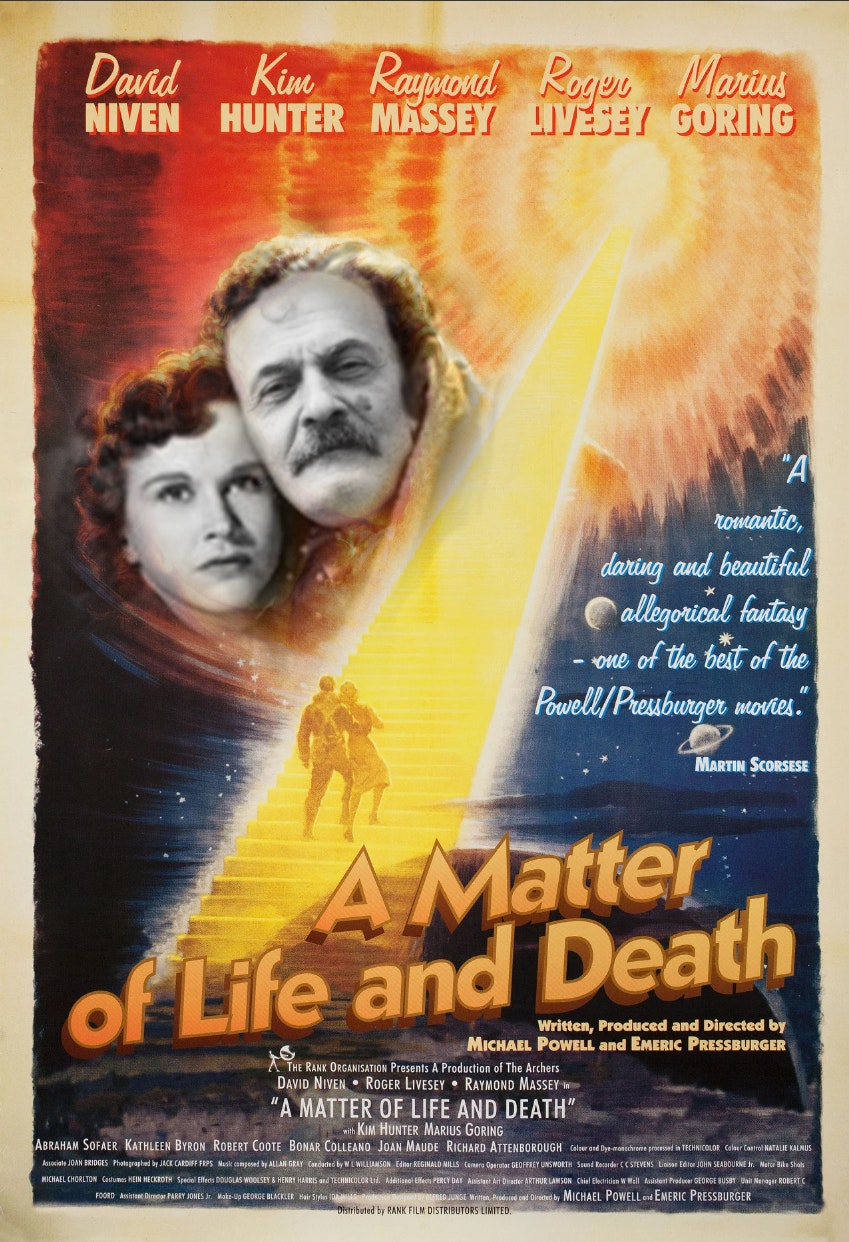
A Matter of Life and Death is the utterly unique, enduringly rich and strange romantic fantasia from Michael Powell and Emeric Pressburger. You could put it in a double bill with It’s a Wonderful Life or The Wizard of Oz, though its pure English differentness would shine through. It was released in 1946, the same year that Winston Churchill coined the term “special relationship” – an idea that the film finds itself debating. With that concept now under pressure, 2017 is a good time for this classic to be rereleased in UK cinemas.
The film begins with a sensational flourish: a nuclear explosion that destroys a solar system. We start by drifting through outer space, accompanied by a droll narrative voice, commenting on its vastness and noticing a sudden supernova way in the distance: “Someone must have been messing about with the uranium atom.” The eerie casualness of that revelation sets the otherworldly tone for the rest of what follows. The starlit expanse, the intertitles, the distant detonation, the huge quasi-senatorial valhalla, all hint at where George Lucas got ideas for the Star Wars movies.
Then we find ourselves on Earth in 1945, where RAF pilot Peter Carter, played by David Niven, is flying back to Britain after a bombing raid, losing height, badly hit. He has presumably been attacking German cities, and it has to be noticed that Germans are not represented here, either in this world, or the next. Carter’s parachute has been damaged; he knows he is going to die, and with impossibly dashing flair, he radios his final position to an astonished American radio operator called June, played by Kim Hunter, asks her to contact his family and flirts with her. June and Peter fall in love at that moment.
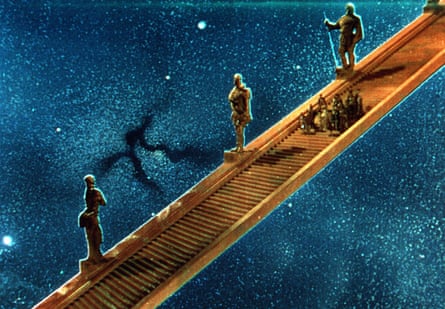
The miracle is that Peter seems to survive, staggering out of the sea. He finds June, and with the help of a local doctor, Frank Reeves, played by the incomparable Powell/Pressburger stalwart Roger Livesey, he is gradually nursed back to health. Yet an emissary from heaven, in the form of a dandified pre-revolutionary French aristocrat played by Marius Goring, informs Peter that his survival is a mere clerical error and he is expected back in the afterlife right away. Peter complains that now he has fallen in love he is entitled to remain below. A huge trial is in prospect, and a prosecuting counsel is chosen: American revolutionary veteran Abraham Farlan (Raymond Massey), who intends to argue that this decadent Brit has no business with a good American girl. Frank believes that these heavenly visions are delusions caused by his brain injury and everything – or almost everything – is consistent with that rational explanation. But how did Peter survive the fall?
A Matter of Life and Death is a visually extraordinary film: a gorgeous artificiality is created by Alfred Junge’s production design and Jack Cardiff’s vivid Technicolor photography. Counterintuitively, the heaven scenes are in black and white and Earth is in colour. The modernist architecture of heaven is something to rival Fritz Lang’s Metropolis and the “stairway to heaven” sequence (which gave this film its US title) is narcotically weird. Even down on Earth, and without the angelic visits, things have a distinct surreality. Frank likes nothing more than to keep the village under benign surveillance with his camera obscura device, evidently kept on a high rotating turret, which gives him live pictures of everything that’s happening in the village. He is like the voice and eye of an all-seeing God. And perhaps the most extraordinary moment comes when Peter encounters a naked young goatherd on the beach: it is this figure – like someone from a late Shakespeare play, such as The Tempest – who tells Peter that he is back on Earth. (The boy’s nakedness meant that this sequence was cut for TV transmission by prim US networks; Martin Scorsese has spoken entertainingly of his periodic exasperation at sitting down to watch and finding it is the bowdlerised version.)
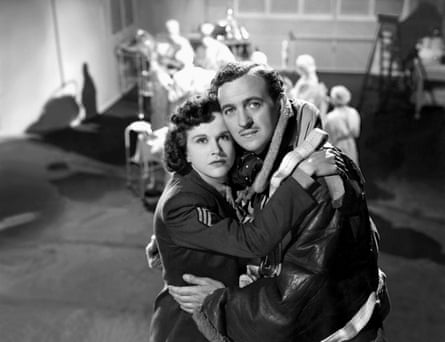
So what does this film have to say about the special relationship? The speechifying on the subject of history and politics might disconcert some viewers who would rather hear and see more about Peter and June’s romantic adventure. But Powell and Pressburger are telling America and the world that just as Squadron Leader Peter Carter does not want go to heaven, so Britain itself is not dead; it does not deserve to be consigned to history along with those effete and irrelevant periwigged Frenchmen. Britain lives – in partnership with America.
I have watched this film many times, but it was only on sitting down to it again that I finally realised what Frank Reeves’s death reminded me of. Riding his motorbike fast in the rain, Dr Reeves had selflessly swerved in order to save the lives of the ambulancemen and their patient, conveying Peter to hospital. His sacrifice means that he can go to heaven to be Peter’s defending counsel. How should we feel about this terrible event? I had a flashback to a long-suppressed memory of reading CS Lewis’s The Last Battle, the final Narnia episode, in which Peter, Edmund, Lucy, Diggory and Polly are revealed to be killed in a train crash, along with the Pevensie parents, and so they can be admitted to eternal life. It was a profoundly strange happy-sad collision. So is this. - Peter Bradshaw, Guardian, 2017
Other articles:
A Matter of Life and Death Deserves a Place on Your Holiday Watch-list Alongside It’s A Wonderful Life
BRINGING UP BABY
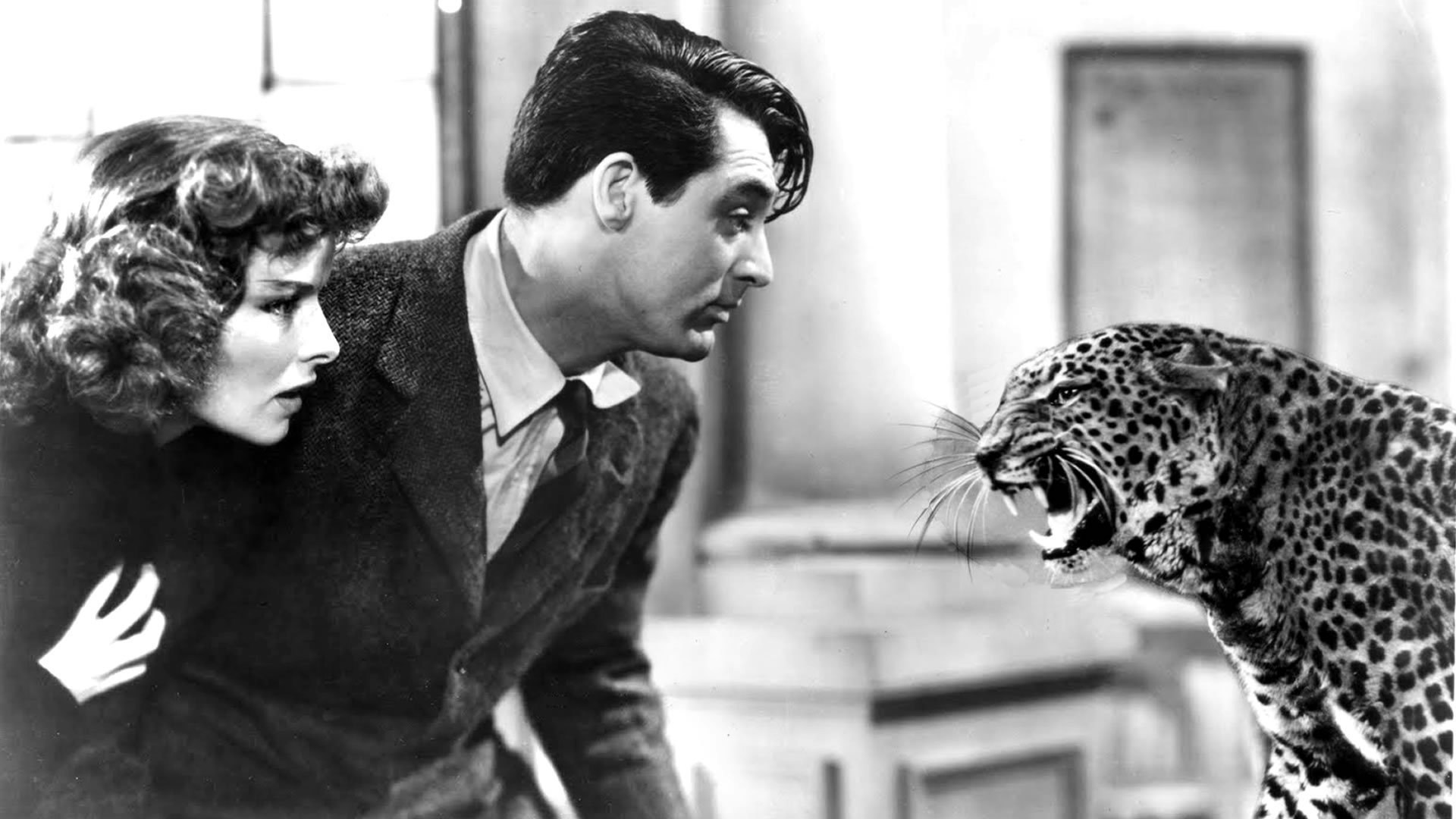
Screwball comedy is defined by the eccentric characters, unconventional situations, slapstick, mishaps, sexual chemistry and snappy repartee of this landmark jape. Staples of the genre an absent-minded professor, a madcap heiress, a contrary animal (or three in this case), a large sum of money being sought, pratfalls, cocktails, false identity, a pursuit, a car crash, an unwanted fiancee, and absurd confusion are all present in mint condition in Howard Hawks' breakneck-paced, maniacally funny picture; written by one of the top screenwriters of the 30s, Dudley Nichols (an Oscar winner for the John Ford drama The Informer (1935).
The earnest, easily muddled palaeontologist in need of some fun, Dr. David Huxley (Grant) is awaiting the last bone to complete the brontosaurus he has laboured four years to reconstruct. It is to arrive on the morrow, his wedding day. Fiancee and assistant Alice Swallow (Virginia Walker), a prim bluestocking scold, sends him off to play golf with the lawyer of a potential benefactor, to schmooze for a million dollar grant to continue his project at the natural history museum. But Huxley's efforts on the golf course become a shambles when he encounters blithe and playful, "conceited, spoiled little scatterbrain" Susan Vance (Hepburn). And that's just the first five minutes. Give her 24 hours and disaster instigator Susan is going to turn David's life upside down.
Baby is the tame leopard Susan's brother has shipped from his hunting expedition in Brazil (just the sort of thing the idle rich do in 30s films). The only information that comes with him is that Baby likes dogs (whether as food or for companionship poses a later relevant question) and music, particularly I Can't Give You Anything But Love. He also likes mauling the hapless professor Huxley, as does Susan, who is determined to have him and keep him near when she discovers how handsome he is without his academic specs on.
Thus he is shanghaied to convey Baby to Susan's aunt's farm in Connecticut where after the obligatory collision with a poultry truck, car theft and the swiping of David's clothes she is revealed as the wealthy philanthropist. Meanwhile, her fiendish fox terrier George steals and buries the brontosaurus clavicle (somewhere in a 26-acre garden), Susan frees a man-killing leopard she's mistaken for the missing Baby and most of the ensemble are jailed in noisy pandemonium.
Countless films have imitated Bringing Up Baby, most famously Peter Bogdanovich's homage What's Up, Doc? (1972), but it is
futile to look for its equal. Hawks, a master of any genre, was one of the innovators of deliriously frantic, overlapping dialogue; only His Girl Friday (1940 also Hawks) can claim faster talking. Hepburn and Grant, who made four films together, are a peerless partnership in the departments of good looks, charm and comic timing, throwing themselves down slopes, into water holes, atop a dinosaur and into love like no-one else. Highlights include Susan, unaware David's foot is on her hem, stomping off minus the back of her lame gown, forcing a tandem silly walk out of a club to cover her exposed drawers; Susan and David harmonizing I Can't Give You Anything But Love to a sulking Baby on the roof, over a Viennese psychiatrist who's already convinced they're insane; and the enraged David aggressively accosting stately Aunt Elizabeth (May Robson) while he's wearing nothing but a marabou-trimmed negligee.
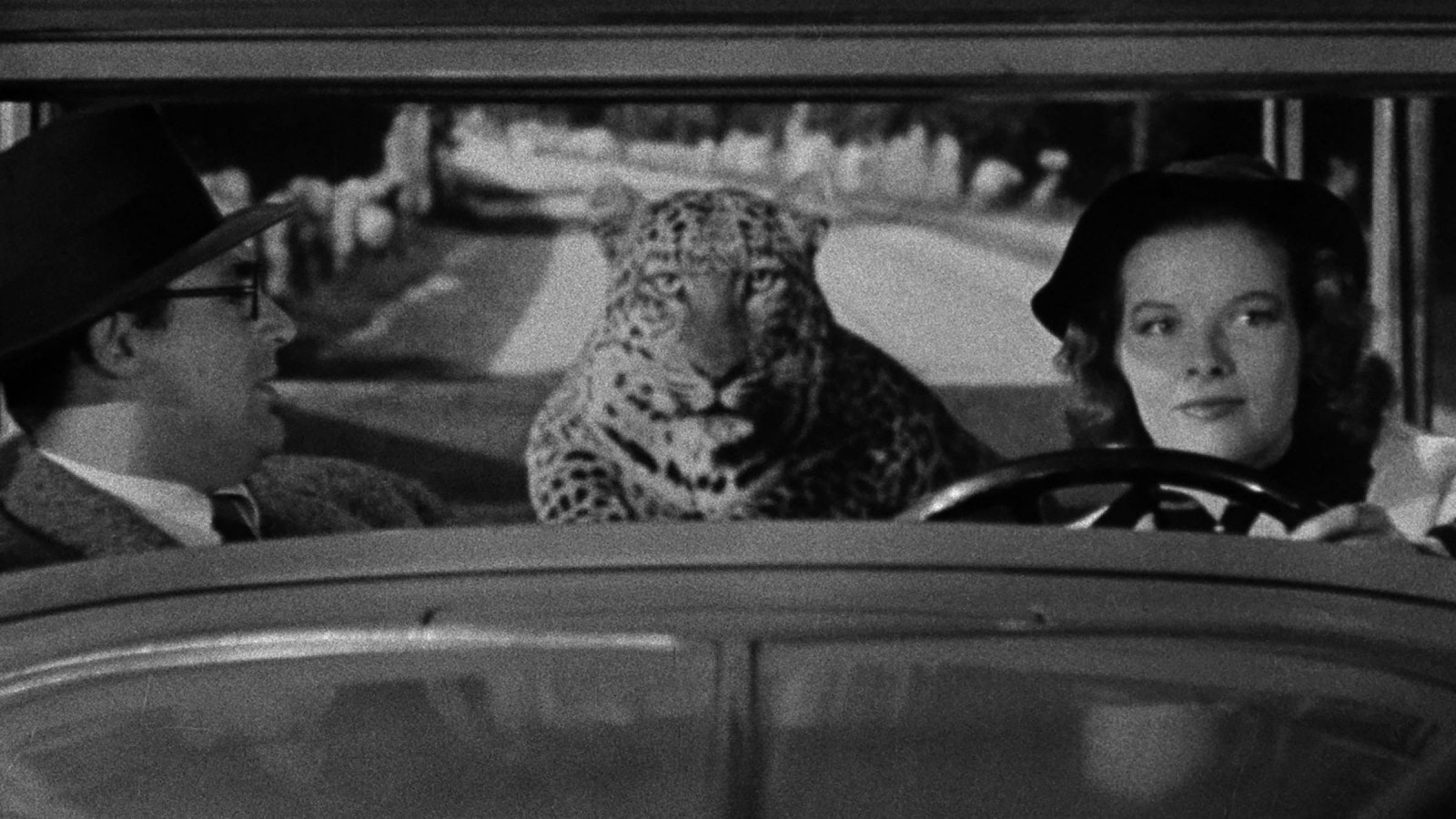
The special effects, devised by Linwood Dunn, deserve a mention since, even today, the interplay between Grant, Hepburn, the pooch, the recalcitrant Baby, and his deadly double, looks hilariously real. The leopard was filmed separately and put together with his co-stars by means of a travelling matte, blended split-screen technique. Look very closely when Hepburn drags the snarling beast into the police station (actually she was heaving a prop man tied to her rope), and you may just glimpse the ghost image of another rope (the underlay footage of the trainer pulling the leopard).
Bringing Up Baby, which cost about a million dollars to make, did not find favour with audiences on its first release and actually lost about $365,000. Hepburn's latest of several flops, it ended her work at RKO. She moved back to New York for two years, returning in possession of the rights to film The Philadelphia Story, for which she chose Grant to partner her in a triumphant comeback at MGM. Ironically, as RKO declined, Bringing Up Baby's popularity grew alongside its reknown as "the definitive screwball comedy". And so did Hepburn's fortune. The savvy star owned a piece of it.
DECEMBER 2022
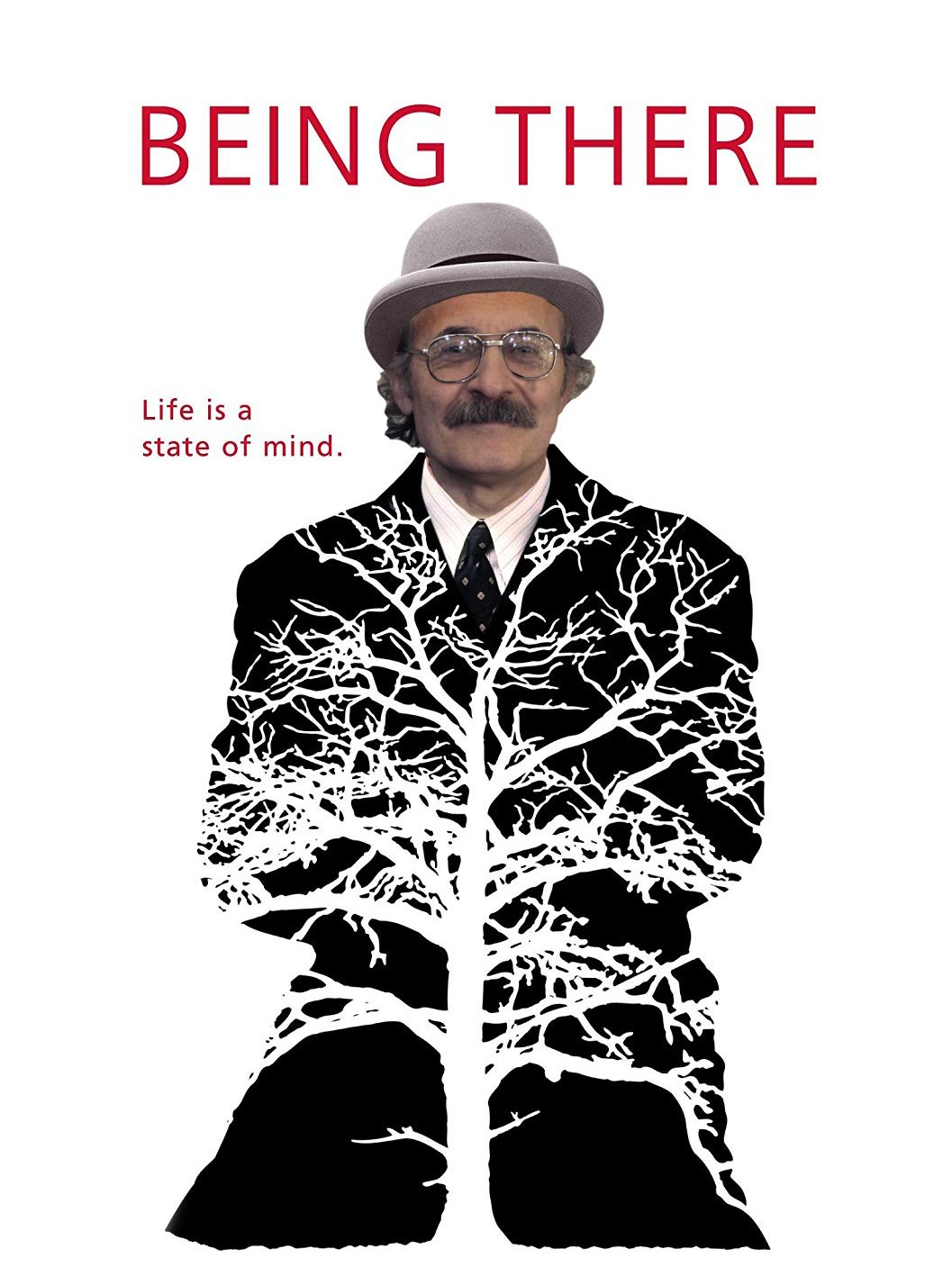
Among the sharpest of all satires, Being There, released in 1979, would be the last great film made by director Hal Ashby, who had the most extraordinary track record of any filmmaker of the 1970s. The novel by Polish-born author Jerzy Kosinski had been published in 1970, the same year that Ashby made his directorial debut with The Landlord. Over the next several years, Ashby made seven other classics of American counterculture cinema. His films such as Harold and Maude (1971), The Last Detail (1973), Shampoo (1975), and Coming Home (1978) made Americans rethink their attitudes toward politics, the Vietnam War, sexuality, and each other. Being There arrived at the end of the decade, after the rebelliousness and radical behavior of 1960s counterculture had subsided into the drugs and self-indulgence of the so-called “Me” generation of the 1970s. The most prominent symbols of the establishment were fading away: Richard Nixon had left the White House, the Vietnam War had ended, and several small victories had been won for racial equality and women’s rights. However, television had become so inescapable in the American home that life seemed almost impossible without its constant buzz. Worse, the rebels of the 1960s and the New Hollywood had sold out. But Ashby, ever the anti-authoritarian, had one more blow to strike against the systems of American politics, organized religion, and media culture.
Being There is the story of Chance, played by Peter Sellers in arguably his finest and most complex performance. Chance is a blank-minded, emotionally muted gardener. Television has been Chance’s only exposure to the outside world beyond the walled garden where he has spent his entire life. After the death of his wealthy benefactor, known only as the “old man,” with whom he has lived his entire life in isolation, Chance is forced onto the streets of Washington D.C. and, soon enough, finds himself struck by a limousine that belongs to one of the richest, most powerful men in the world, Ben Rand (Melvyn Douglas). Because he’s well-dressed in the deceased “old man’s” finely tailored hand-me-down clothes, Chance is mistaken for a well-to-do businessman. Rand’s wife Eve (Shirley MacLaine) misidentifies “Chance the gardener” as “Chauncey Gardiner,” a cipher who becomes everything to everyone he meets. He’s instantly trusted by men of power, including Jack Warden’s President of the United States, who takes Chance’s inane observations, which are nothing more than gardening tips and lines repeated from television programs, as insightful wisdom about grand economic and geopolitical concepts. And so, Chance finds himself in the position of a trusted political advisor and public figure, and before long, he becomes the next in line for the presidency.
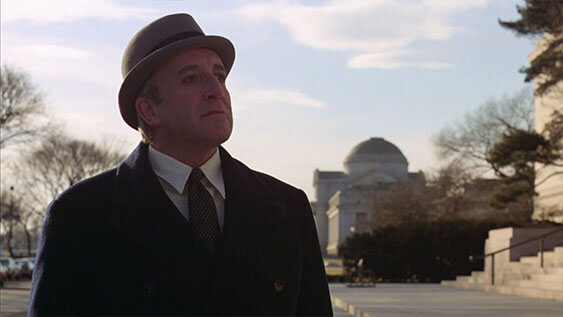
Most of Ashby’s films center on disenchanted characters who rebel against systems of authority. Bud Court’s alienated teen in Harold and Maude acts out against his wealthy mother by staging fake suicides with grisly detail. The sailors in The Last Detail raise all sorts of hell, representing the lost innocence and hopelessness felt by many during Vietnam, while questioning the institutions that perpetuate it. Likewise, Jane Fonda sees the human toll of Vietnam in Coming Home, epitomized by Jon Voight’s disabled Vet and Bruce Dern’s ideologically crushed soldier. But rather than another story about rebels against the system, Being There finds Ashby exposing the stupidity and soullessness of American politics, television, religion, and racial hierarchies. His film is a portrait, not only of Chance’s comical and ironic journey to the White House but also the institutions that quickly put their faith in someone who tells them what they want to hear. Being There, more than any other film in Ashby’s career, seems to capture the director’s desire to make artistic, socially relevant films, yet do so in a way that entertains, even as it cuts into the establishment. It’s all the more affecting because the film was Ashby’s last effort before his decline into a downward spiral of drugs, anger, and ultimately, his death.
Ashby was not a movie brat like other counterculture filmmakers in the New Hollywood. He did not attend a prestigious film school like Peter Bogdanovich, George Lucas, Martin Scorsese, and Francis Ford Coppola did. Ashby was born in 1929 to a Mormon family in Utah. Being around farms in his youth exposed him to cruelty against animals, and from an early age, he became a vegetarian, a choice supported by his mother, “the original hippie,” as he called her. His father was another story. When Ashby was just 12, he discovered his father’s body in the family barn with a bullet hole located under his chin in an apparent suicide. Losing his father during the already tumultuous period of adolescence led to prolonged, unresolved conflict in Ashby, whose disposition was usually laid-back and empathetic. But he was also capable of outrageous bursts of anger from the emotion he bottled up about his father or, later in life, the social injustices he saw around him. That trauma, wrote biographer Nick Dawson, meant Ashby “struggled with issues about authority figures as well as fear of emotional closeness, abandonment, and betrayal.” In subsequent years, Ashby became known for ending relationships before he became too dependent on them. His first marriage ended when he was just 17. He would be married another four times throughout his life, and each marriage ended in divorce.
After a series of odd jobs in his youth, Ashby decided in 1949 to leave his first wife and child behind and head to Hollywood, but not before exploring his country. Living the life of a poor drifter, Ashby got to know America. He worked in various jobs, read books, and found himself. He worked as a salesman for a time, but he could not bring himself to lie to a customer to make the sale. Lies would later be the driving force behind Ashby’s suspicion of politicians and his antagonistic attitude toward Hollywood authorities. He despised lies, and he became known for telling the achingly honest truth, and with that came an emotional openness and vulnerability—something that emerges in his treatment of the characters from Harold and Maude to Coming Home. “A hippie before the word was coined,” wrote Dawson, “Ashby looked at the person, not the skin color, and was troubled by the unenlightened minds of most Americans.” He had a sensitive, decidedly liberal persona that came complete with a penchant for marijuana. Ashby, an avid drinker in his youth, gave up alcohol early in life; but he eventually earned the nickname “Hashby” for all the weed he smoked. Over the next several decades until his death, Ashby smoked pot on the regular. He would become known for his long, unkempt hair and bushy beard, but he was also fastidiously clean and germaphobic to the point of neurosis.
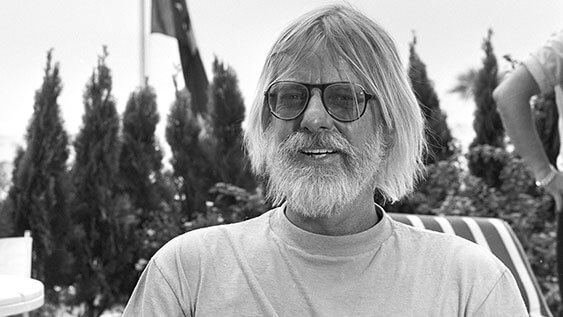
Before all that, Ashby arrived penniless in Hollywood and went to the State Employment Department. He asked for a job in motion pictures, which was not the usual way one gets into the movie business. He had always loved going to the movies, but the dream of Hollywood was less a personal ambition than a symbol of escaping his former life in Utah. Nevertheless, Ashby was given a job making copies at Universal, and while there, he quickly sized up the power dynamics. He set his sights on the best job around, and that was a director. Talking to several established filmmakers around the studio, Ashby was told that if he wanted to become a director, he should get into editing. With this, Ashby embarked on an eight-year apprenticeship to become a union editor. His career progress was slow, and it wasn’t until the mid-1950s that Ashby became an assistant editor, working closely under mentor Robert Swink on projects including George Stevens’ The Diary of Anne Frank (1959). After working on a number of productions, Ashby was encouraged by director William Wyler to contribute creative ideas during the post-production of the Western epic The Big Country (1958), and Wyler’s attitude of collaborative filmmaking inspired him, reinforcing the idea that he would develop into one of the many editors to become directors, such as David Lean or Robert Wise.
Ashby’s desire to become a director was put into jeopardy when he quit another assistant editing job under Stevens to serve as the chief editor on Tony Richardson’s The Loved One (1965), a job from which Ashby was fired because Richardson preferred his usual editor in England. After this brief streak of bad luck, he befriended director Norman Jewison, another rebel of the Hollywood system with a deep social conscience and an ingrained belief that films should improve the changing face of America. Jewison asked him to edit his new project, The Cincinnati Kid (1965), and over the next several years, Ashby and Jewison would remain together for The Russians Are Coming! The Russians Are Coming! (1966); In the Heat of the Night (1967), which earned Ashby an Oscar for Best Editing; and The Thomas Crown Affair (1968). Ashby and Jewison were beyond simpatico; they became close collaborators and intimate friends. It was Jewison who eventually asked Ashby what he wanted to do with his career, and Ashby responded that he wanted to become a director. Since they had already been developing an adaptation of Kristin Hunter’s 1966 novel The Landlord, which Jewison could not fit into his schedule anyway, he suggested that Ashby direct the project. It was around this time that Jewison, a Canadian who had become fed up with the trajectory of the United States, departed Hollywood to shoot Fiddler on the Roof (1971) in Europe. Without his mentor, Ashby was on his own to develop his directing career in Hollywood.
Unlike other New Hollywood filmmakers who emerged in an era obsessed with the auteur theory, thus making the director the star, Ashby preferred to remain out of the spotlight, even as he yearned for the complete creative control that he sometimes struggled to attain. Although The Landlord was not a strong box-office performer, its subject matter—about a privileged white man who buys an inner-city apartment building in a black neighborhood with plans to gentrify, only to instead become sympathetic to the residents—gained Ashby attention. He was offered the life-affirming Harold and Maude next, followed by the incendiary and highly regarded adaptation of The Last Detail, starring Jack Nicholson in an Oscar-nominated role. Both films demanded that Ashby fight with the studios to maintain the integrity of their stories, from the odd romance of the former to the sheer number of the word “fuck” in the latter. Ashby continued to work with some of the finest talents that emerged from the second half of the 1960s, often fighting to maintain artistic control amid demanding studios and producers. Among them was Warren Beatty on Shampoo (1975), the story of a womanizing hairdresser that Beatty had been trying to get made for years. Lee Grant won an Oscar for her supporting role, and the film earned two other nominations, but Ashby answered to Beatty on the set. Next came the Woodie Guthrie biopic Bound for Glory in 1976, a Dust Bowl drama nominated for four Oscars and winner of two. Though it diverts from fact, Bound for Glory contains the anti-authoritarian sentiments that define much of the director’s best work. What was implied in some of his earlier films came to the surface in Coming Home, the antiwar drama about disabled Vietnam veterans, which earned Oscars for Jane Fonda, Jon Voight, and the screenplay, plus another six nominations, including Ashby for Best Director.

All of this accounting of Ashby’s successes and award recognition serves only to demonstrate his incredible string of artistic and commercial hits throughout the decade, in which Ashby’s name became synonymous with a certain quality and rebelliousness in his filmmaking. Still, by the time Ashby became a director, he was a decade older than his New Hollywood contemporaries who went to film school and graduated on a directorial track. But Ashby was sure of the kinds of films he wanted to make; all of his years in the editing room and working alongside Jewison had given him time to ponder his artistic ambitions. He wanted to make films with a message but without preaching to his audience. Throughout the 1970s, most of Ashby’s films would have a sociopolitical undercurrent. The most unlikely example is Shampoo, a romantic farce that unfolds against the backdrop of Election Day in 1968, the year Nixon was elected—the irony being, Nixon was supposed to restore “law and order” after years of perceived cultural descent, a hypocritical notion given the Watergate scandal that was in the headlines during the film’s release. Dawson notes Ashby’s philosophy toward filmmaking: “You don’t do a film unless you want to make it, so once you have a real reason to do it, it will always be with you.” Ashby seems to have followed this line of thinking throughout the 1970s, whereas his work in the 1980s lost its edge. In the decade after his prime, he fell heavily into harder drugs, while his output was limited to airy commercial fare that resulted in uncharacteristic flops. Being There was the last great film made by Ashby. It might also be his best film, his funniest film, and his most searing indictment of American systems.
The project was first suggested to him when he was finishing work on The Last Detail. Peter Sellers had loved Harold and Maude and wanted to work with Ashby. He suggested that they adapt Kosinski’s novel, which Sellers had been obsessed with for years and struggled to get it made in Hollywood. He was drawn to the empty character of Chance, with whom he identified. But at the time Sellers suggested the project, Ashby had not yet achieved widespread recognition, and Seller’s career was in decline after a series of commercial disasters, so they could not raise the necessary interest to get Being There financed. Regardless, Sellers wanted to play Chance so badly that he had started working on the performance as early as 1973. He would act like Chance in public or remain in character during his frequent meetings with Kosinski over the years. Finally, at the end of the decade, after Ashby’s success with Coming Home, the director signed a deal with the production company Lorimar that gave him carte blanche over his next project. Ashby told Lorimar he wanted to make Being There with Sellers in the lead. But producer Andrew Braunsberg had a close association with Kosinski, and the author had a different vision for Chance; he wanted a younger actor, someone like Ryan O’Neal. And yet, because Bruansberg and Kosinski both wanted Ashby to direct, and Ashby insisted on working with Sellers given their discussions of the project from years before, they were stuck with Sellers. To appease Kosinski, who felt that Chance should be thinner and more attractive, Sellers arranged to have a facelift.
Despite Kosinski’s strong feelings about who should play Chance, he did not put equal care into adapting his book. Ashby felt Kosinski’s draft of the screenplay was unsatisfactory; it was too obvious, taking only the major brushstrokes of the story and none of its subtle comic tone. He hired Robert C. Jones, a longtime editor and the Oscar-winning co-writer of Coming Home, to do an uncredited polish that met with the author’s approval. Behind the camera, Ashby wanted his regular cinematographer Haskell Wexler, who was busy elsewhere, and so he turned to Caleb Deschanel who had just wrapped his first feature-length solo project on More American Graffiti (1979). Deschanel had worked behind the scenes in the camera and lighting department for Lucas, Coppola, and John Cassavetes, but two 1979 releases would earn him recognition from the National Society of Film Critics: Being There and Black Stallion. Ashby and Deschanel shot most of the film in Asheville, North Carolina, at the Biltmore Estate. Constructed by George Vanderbilt in 1895, it was the largest private home in the United States, complete with a 250 room mansion situated on 8,000 acres. Shooting commenced in January of 1979, and Ashby, who had earned a reputation as a difficult and demanding filmmaker since becoming successful, felt a new calm on the production according to Dawson. Perhaps it was because, for the first time in years under the Lorimar deal, he had more creative control than ever.

Sellers had thought about and obsessed over the role of Chance for years; he felt that he was Chance—something of a blank slate filled by his string of chameleon-like roles. But many of his recent performances by 1979 had earned Sellers a lousy reputation, and the early buzz about Being There was cynical. He had disappeared into dozens of caricatures, done a hundred voices, but none were so important to him as Chance. For the voice, he affected something between Stan Laurel and a mid-Atlantic inflection that, in its slow, deliberate performance, could be perceived as almost erudite depending on the context. On the set, Sellers remained in character, allowed only a few reporters to observe the shoot, and disappeared into his trailer between takes. Among his odd behaviors to maintain his headspace as Chance, Sellers also had other eccentricities, notes biographer Ed Sikov, such as refusing to work with anyone wearing the color purple. MacClaine had her curious behaviors too; she talked endlessly about spirituality, numerology, and past lives. Add to this Ashby’s omnipresent use of marijuana, and the set of Being There must have been a wild place. But it was a supportive shoot that fostered creative ideas, experimentation, and laughter. Sellers’ inability to perform a line of dialogue without breaking character in a fit of giggles meant Ashby had to cut the scene. Regardless, he was so impressed and tickled with Sellers’ talent that he included the gag reel footage over the end credits.
Ashby was always ahead of the curve in terms of the audience’s taste. When he released Harold and Maude, it flopped because viewers at the time refused to accept a story in which a young man falls in love with an octogenarian. Variety famously panned the film, saying it “has all the fun and gaiety of a burning orphanage.” But audiences eventually warmed to the idea, and over the subsequent decades, it transformed from a cult classic into a widely accepted masterpiece. Beau Bridges, star of The Landlord, told Dawson that Ashby had “a bizarre, crazy sense of humor that people weren’t ready for.” Bridges added, “He would talk about the world, and he could say, ‘Let’s burst this fucking bubble! And let’s do it with a joke.” These remarks underscore how Ashby recognized the injustices and authoritarian crimes occurring around him, and he sought to expose them, yet he would do so with humor. The same level of rebellious humor found its way into Being There, beyond the basic concept of the story. In the script, the film ends as Eve finds Chance walking in the woods, and the two declare that they have been looking for one another. She leads him to a limousine, and they drive off. But Ashby had another idea, something crazy and impulsive. He wanted Chance to walk on water.
Ashby arranged for a platform to be submerged under a half-inch of water so Sellers could walk out, and it would appear Christ-like. Sellers added to the idea, improvising the moment where Chance stops, gently dunks his umbrella in the water to confirm, yes, he is standing on the water’s surface, and then continues to walk. Many in the film’s cast and crew balked at the religious imagery Ashby meant to evoke, including MacClaine. But the scene’s meaning is ambiguous, if pregnant. Does the imagery imply that Chance is a godlike figure and that God is, ultimately, an unthinking moron like Chance? Is Chance a symbol of America’s willingness to put blind faith into someone who obviously has no clue? Or is he nothing more than a holy fool, an innocent who is nonetheless touched by God? It’s entirely possible that if Ashby were alive, he would say he did not know what he meant to evoke, that it’s up to the viewer to decide. Watching the film today, its message seems to reflect a condition in politics and religion present both then and now, where those seeking answers find only what they want to see, a process that requires all manner of mental gymnastics and justifications. Is Chance any different from Ronald Reagan, the actor-turned-politician who became the U.S. President in 1981 yet was caricatured as a witless puppet? And today, one cannot watch Chance without thinking of Donald Trump, a nincompoop who says whatever comes into his mind, often repeating lines he heard on television to the delight of followers who dote on every last word. No matter the time in history, the ideas behind Being There remain prescient.
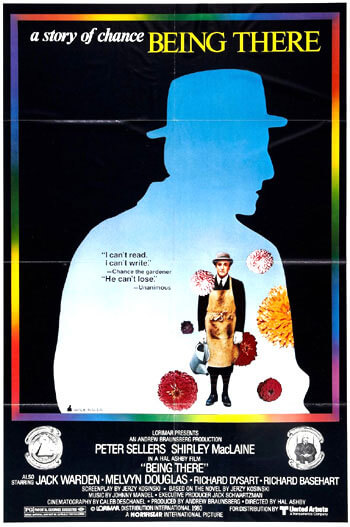
The notion of Chance as an empty suit is extended by his appearance in a homburg hat, both in the film and in its promotional material. It’s an image recalling René Magritte’s 1964 painting The Son of Man, where a man’s face is covered by a green apple, as well as several other Magritte paintings in which average, sometimes faceless men appear in the formal headdress. Magritte sought to comment on the increasing indistinction between individuals, especially among the wealth- and power-seeking bourgeoisie, by representing them as interchangeable. None is more relevant to Being There than his 1966 work Decalcomania, where a man in a bowler hat, the less formal cousin of the homburg, faces the sea, and beside him, a red curtain bears his empty cutout in negative space—the implication being that such a man is a transparent nothing. Even Being There’s theatrical poster seems to channel Magritte’s painting Golconda from 1955, a depiction of hundreds of identical bowler-hat-wearing men floating around nondescript buildings. The figures have no identity of their own, just a group association. Similarly, the poster’s image shows Chance floating in the air amid puffy Magritte-style clouds, facing the Biltmore Estate. He is a nothing, and yet he earns the respect of every authority figure he meets.
How does such a garden-variety man achieve power? Ashby, ever the social justice warrior, hints at another reason for Chance’s ascendance early in the film, just after the gardener takes his first steps onto the streets. As Chance walks through a largely African American neighborhood, the viewer cannot avoid seeing a graffiti message spray-painted onto a building wall: “America aint shit cause the white man’s got a god complex.” There’s something to be said about how the men of power in Being There, from Ben Rand to the President, trust Chance simply because he appears well-dressed, a man of mystery and means—but most importantly, he’s white. When Chance eventually appears on television and gives an interview where the American public clings to every dippy word out of his mouth, Ashby cuts away to Louise (Ruth Attaway), the African American servant who raised him. “It’s for sure a white man’s world in America,” she remarks. “Hell, I raised that boy since he was the size of a pissant… Had no brains at all… And look at him now! Yessir, all you gotta be is white in America and you get whatever you want!” Lines such as this harken back to Ashby’s collaboration with Jewison, specifically In the Heat of the Night and The Landlord, where they sought to made entertaining films with a message not just in favor of civil rights but condemning of white systems of power.
Ashby and Kosinski also meant Being There as a critique of television culture, where people glued to the idiot box no longer engage with the world, turning their brains into mush. Wexler had already censured the news media in 1969 with Medium Cool, the country was rattled by Sidney Lumet’s jab at television with Network in 1976, and Albert Brooks’ Real Life questioned the veracity of “reality TV” just a few months earlier in 1979. Being There was the latest attack on how TV was reshaping American minds and rendering people into uncritical, unfeeling zombies. Kosinski believed television “insulates people from direct encounters with others, deters self-reflection, and implies a false sense of control.” Though many who watch the film today explain Chance’s condition on a developmental disorder such as autism, the film implies that TV is responsible for Chance’s stunted growth. Ashby despised television as well, and he uses snippets and clips in the film to demonstrate its vacuousness, which in turn shaped Chance into the empty-minded person he is. At one point, the President’s Secret Service men say they ran Chance’s voice through an analysis machine and came up with no discernable origins, and then Ashby cuts to Chance engrossed in an episode of Mister Rogers’ Neighborhood, and it becomes evident where Chance learned to speak. After all, the first scene shows Chance in bed, awakened when the television turns on by itself. Although probably set with a timer as Chance’s alarm clock, when the TV comes on, it serves to demonstrate the sole reason Chance gets up in the morning.

Chance’s television-shaped non-personality allows him to become a cipher when he interacts with the Rands and their employees. When Eve brings Chance home to care for him after her limo back into him, the dying billionaire Ben regards Chance’s “admirable balance,” and perceives his remarks about gardening as an elaborate business metaphor, perhaps only because he must find someone to replace him. Eve, facing Ben’s inevitable death and feeling neglected because of his illness, finds Chance to be “intense” and sexually mysterious, observing, “He’s such a sensitive man, don’t you think?” Whereas the butler, Wilson (Richard Venture), finds Chance’s remarks about riding in an elevator to be evidence of his dry wit. Likewise, Ben’s personal physician, Dr. Robert Allenby (Richard Dysart), believes Chance has a ripe “sense of humor”—but then, Allenby grows suspicious and, after talking with Louise, realizes that Chance is nothing more than a child’s mind in a man’s body. But Chance’s way of “keeping it at a third-grade level” is exactly how he unknowingly manipulates politicians and reporters. His rather Trumpian strategy with the press, when he confesses “I do not read papers; I watch TV,” earns his approach compliments for being honest and refreshing—qualities that ultimately lead to the clandestine organization that runs Washington D.C. selecting Chance as their next leader. No wonder the Soviet Ambassador (Richard Basehart) compares Chance to Ivan Krylov (1769-1844), the Russian satirist who wrote fables, often about animals, to reflect political conditions in his country. The way Chance speaks about the garden as it relates to the economy is worthy of a “Krylovian” tale.
Television, combined with his isolation in the same house for his entire life, has also left Chance ignorant to matters of race and sex—topics that were rarely discussed in any detail in the early decades of broadcasting, and therefore are foreign to Chance. His only exposure to people of color is Louise, and he associates her with lunch, so when he finally takes to the streets, he asks the first black lady he sees if she will fix him a meal. And when a gang of black teens pulls a knife on him, Chance attempts to change the channel with his remote, entirely unaccustomed to negative experiences in daily life. His experience with sexuality, meanwhile, remains something limited to the passionate kissing appropriate for television. In one of Being There’s funniest scenes, Eve comes onto Chance, who, imitating the delirious kissing scene from The Thomas Crown Affair on television, embraces her. When she wants something more, he replies flatly, “I like to watch,” referring to TV. Eve takes this to mean she should masturbate beside him and he will watch. As she does, Chance’s attention drifts back to the television set, where he begins imitating a yoga program.
However comical such scenes may be, Being There does not limit Chance to a mere joke. Take how Chance processes the two deaths in the film. Early on, after his “old man” benefactor dies, Louise tells him the body was cold. He looks at the body of the man who adopted him, touches the forehead to confirm that, sure enough, it is cold, and then sits down to watch television. He repeats this gesture after Ben’s death, acting out a scene that, to Allenby, looks no different than the common behavior of mourners who feel compelled to touch the deceased one last time. But it’s more than just Chance repeating a behavior. His eyes swell with tears, perhaps thinking about the “old man,” or perhaps feeling genuine grief for Ben. “He’s gone, Chauncey,” says Allenby. “Yes Robert,” replies Chance. “I have seen it before. It happens to old people.” It’s a rare moment that shows Chance processing his emotions, and without it, Being There might seem like a cold and cruel film that uses the character as the butt of a joke, rather than its device. Instead, what happens to Chance in his rise to the White House becomes a joke on the country. Chance is simply an innocent and misunderstood man, whereas the unthinking country that will elect him is far more ignorant, trusting, and unskeptical of their politicians and the influencers on TV.
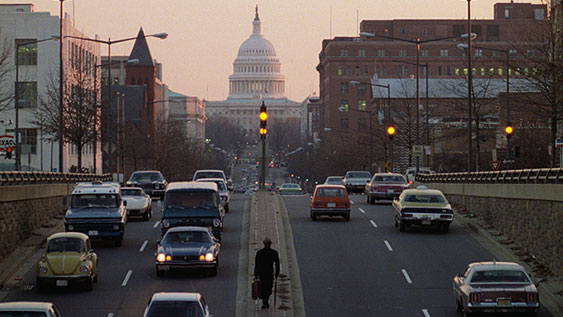
Despite the potent commentaries throughout, Being There is Ashby’s most subdued film, formally. Deschanel’s camerawork is recessive and straightforward, allowing Seller’s performance and the film’s ever-present comic irony to induce laughs. The comedy often emerges through visual juxtapositions that do not overemphasize the comedic point. Only the final shot of Chance walking on water extends the film into comic gag territory, whereas the remainder of the film relies on the ironic misunderstandings between, well, everyone and Chance. Johnny Mandel, who had worked with Frank Sinatra and Barbra Streisand, composed the mysterious piano score that quietly and hypnotically invites the viewer to uncover the riddle of Chance. Mandel’s score suggests that something enigmatic, almost mystical, is happening before our eyes. Elsewhere, Eumir Deodato arranged the film’s most expressive and playful comic flourish with the jazzy disco riff on Richard Strauss’ “Thus Spake Zarathustra.” The familiar music plays over Chance’s initial emergence into the outside world, a winking nod to its use in 2001: A Space Odyssey (1968), which had established the music into the zeitgeist as a signifier of a transformative moment in human development. Just as Kubrick raised the frame to regard the alignment of the Sun, Earth, and Moon to this music, Ashby does something similar when he regards Chance walking toward the United States Capitol.
Upon its release in December of 1979, the responses to the film were almost unanimously enthusiastic. Being There performed well at the box-office and received glowing reviews from the major critics such as Andrew Sarris, Roger Ebert, and Vincent Canby. Douglas went on to win the Academy Award for Best Supporting Actor, but when Sellers was passed over for a Best Actor statue, he blamed Ashby’s inclusion of the end credits scene that shows Sellers corpsing, thus demystifying Chance. Though Being There was, arguably, the highest peak in Ashby’s career at that point, his decline over the next several years was not as gradual as his rise. With the onset of the 1980s, Ashby descended into a bout of eccentricity and paranoid behavior. His success and creative autonomy meant he could withdraw from his usual Hollywood circles and indulge in his newly acquired control and hardcore drug habit. He added cocaine and heroin to his intake, and a series of bad business deals led to many uninspired films throughout the 1980s. His behavior even lost him the chance to direct a passion project, Tootsie, which went to Sydney Pollack instead. By 1988, Ashby would be dead at 59 from pancreatic cancer, and many felt that Being There was the last and brightest example of the director’s talent. The scene of Chance walking on water was the final image from his films shown at his funeral.
Being There is Hal Ashby’s at once cynical view of America and hope for something better and more transcendent. When Ben Rand dies in the final scenes, he’s buried in a small pyramid on his land, at the top of which is an Eye of Providence, followed by the words, “Life is a state of mind”—the echoing last line of the film. The Eye, enclosed within the triangle of the Trinity, is an image used in both Christian and Freemason symbolism, denoting the presence of God looking over all things. Ashby’s film pokes a finger in that eye, suggesting that no such grand order to the universe can come from the systems in which people place their faith; they have no more certainty behind them than the insipid programs on television. Chance, meanwhile, lives his life as a vegetable, either as a plant in the garden or an enrapt viewer of television, the sleeper’s paradise. His new life is an alternative state of mind, far removed from the electronic modes of communication to which he is accustomed. It is a new condition where his perspective has become three-dimensional and achieved an ultra-realism, where the possibilities are endless. In this new reality, he can become President of the United States; he can walk on water. Ashby’s film exposes the oppressive machines of politics, religion, and technology, and it hopes that we see the possibilities beyond them. This seems to be the resounding sentiment of all Ashby’s films. Being There aims to snap the viewer out of their vegetative state, compelling us to choose an alternative, limitless state of mind.
NOVEMBER 2022
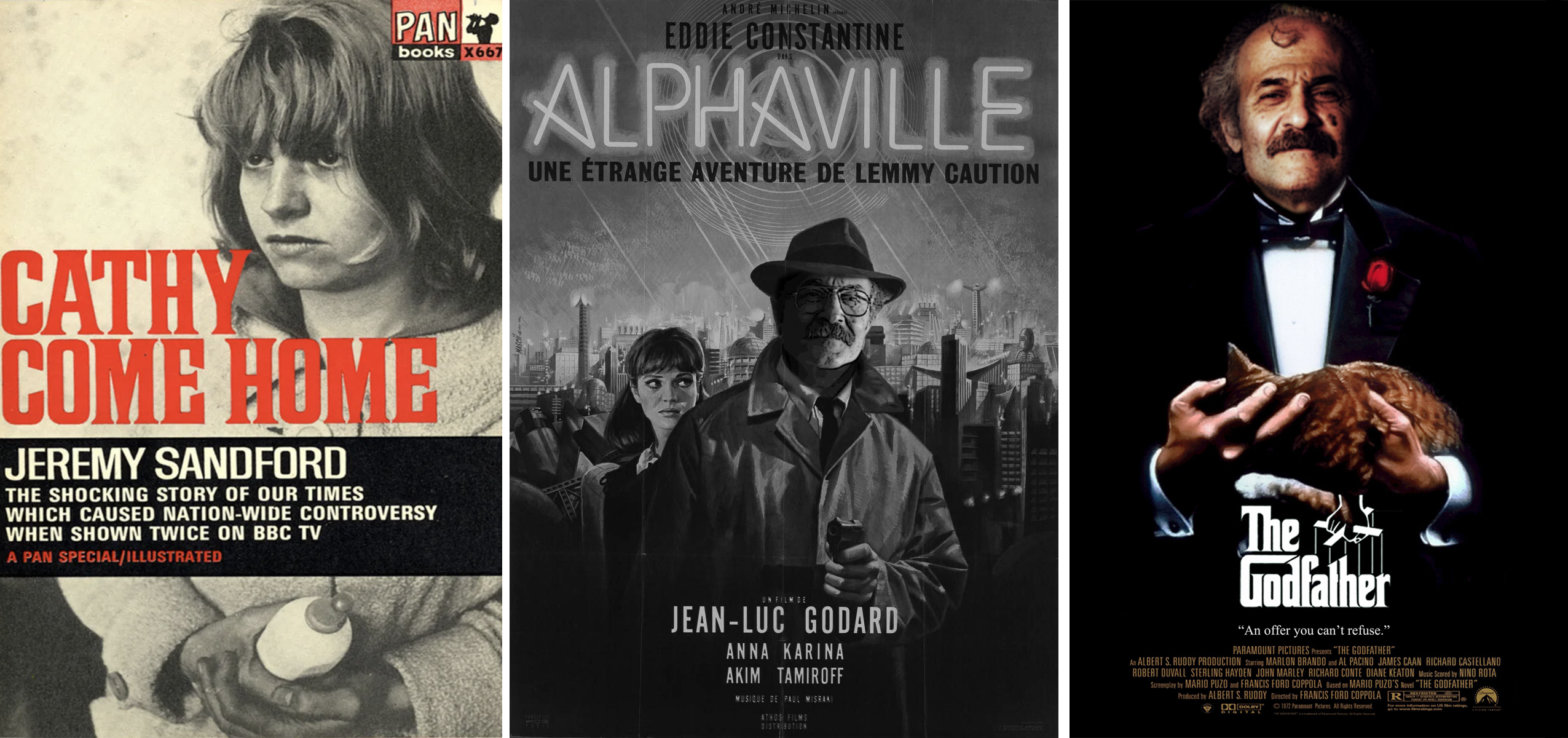
THE GODFATHER (1972)
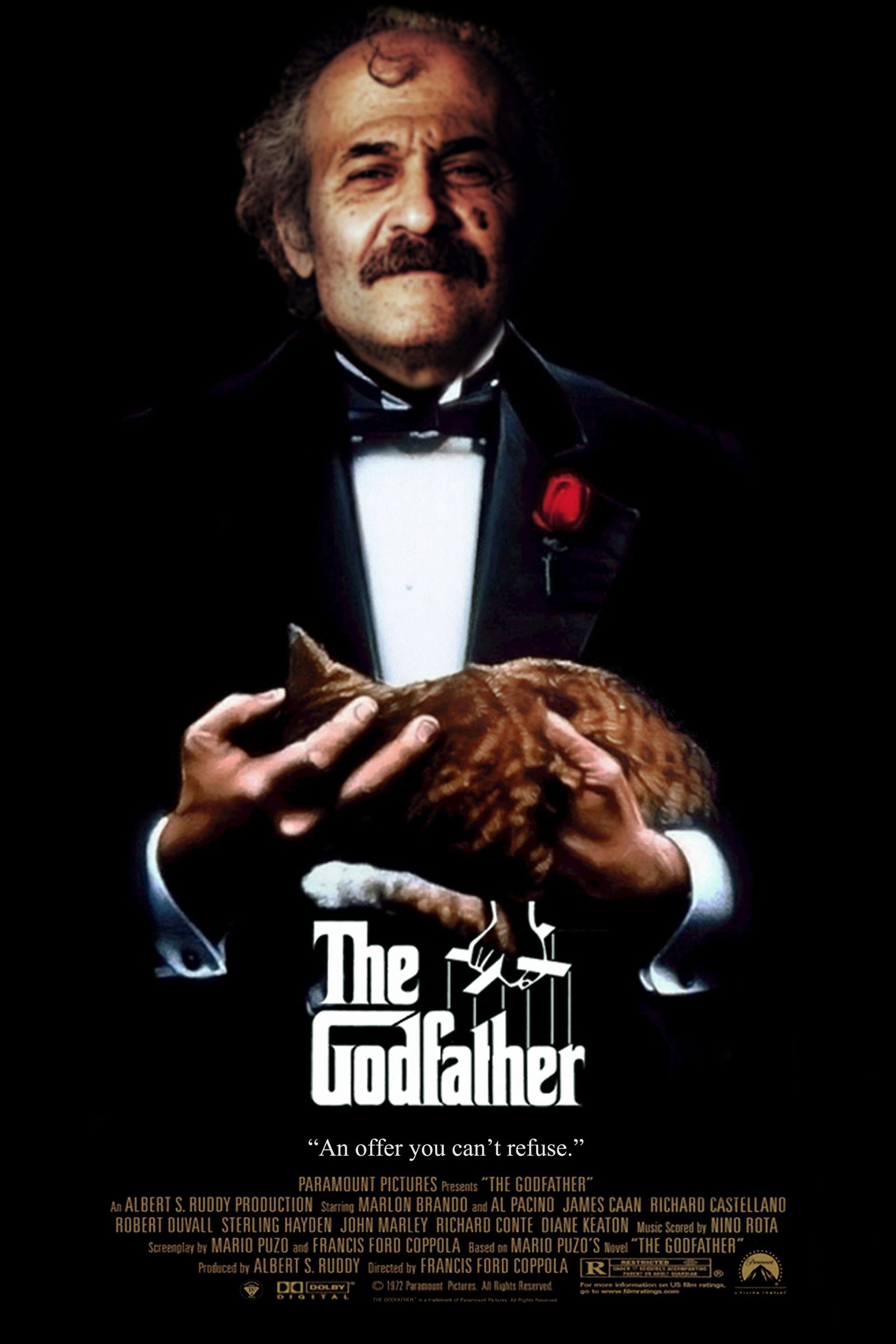
“The Godfather” is told entirely within a closed world. That’s why we sympathise with characters who are essentially evil. The story by Mario Puzo and Francis Ford Coppola is a brilliant conjuring act, inviting us to consider the Mafia entirely on its own terms. Don Vito Corleone (Marlon Brando) emerges as a sympathetic and even admirable character; during the entire film, this lifelong professional criminal does nothing of which we can really disapprove.
During the movie we see not a single actual civilian victim of organised crime. No women trapped into prostitution. No lives wrecked by gambling. No victims of theft, fraud or protection rackets. The only police officer with a significant speaking role is corrupt.
The story views the Mafia from the inside. That is its secret, its charm, its spell; in a way, it has shaped the public perception of the Mafia ever since. The real world is replaced by an authoritarian patriarchy where power and justice flow from the Godfather, and the only villains are traitors. There is one commandment, spoken by Michael (Al Pacino): “Don’t ever take sides against the family.”
It is significant that the first shot is inside a dark, shuttered room. It is the wedding day of Vito Corleone’s daughter, and on such a day a Sicilian must grant any reasonable request. A man has come to ask for punishment for his daughter’s rapist. Don Vito asks why he did not come to him immediately.
“I went to the police, like a good American,” the man says. The Godfather’s reply will underpin the entire movie: “Why did you go to the police? Why didn’t you come to me first? What have I ever done to make you treat me so disrespectfully? If you’d come to me in friendship, then this scum that ruined your daughter would be suffering this very day. And if, by chance, an honest man like yourself should make enemies . . . then they would become my enemies. And then they would fear you.”
As the day continues, there are two more scenes in the Godfather’s darkened study, intercut with scenes from the wedding outside. By the end of the wedding sequence, most of the main characters will have been introduced, and we will know essential things about their personalities. It is a virtuoso stretch of filmmaking: Coppola brings his large cast onstage so artfully that we are drawn at once into the Godfather’s world.
The screenplay of “The Godfather” follows no formulas except for the classic structure in which power passes between the generations. The writing is subtly constructed to set up events later in the film. Notice how the request by Johnny Fontane, the failing singer, pays off in the Hollywood scenes; how his tears set up the shocking moment when a mogul wakes up in bed with what is left of his racehorse. Notice how the undertaker is told “someday, and that day may never come, I will ask a favor of you. . .” and how when the day comes the favor is not violence (as in a conventional movie) but Don Vito’s desire to spare his wife the sight of their son’s maimed body. And notice how a woman’s “mistaken” phone call sets up the trap in which Sonny (James Caan) is murdered: It’s done so neatly that you have to think back through the events to figure it out.
Now here is a trivia question: What is the name of Vito’s wife? She exists in the movie as an insignificant shadow, a plump Sicilian grandmother who poses with her husband in wedding pictures but plays no role in the events that take place in his study. There is little room for women in “The Godfather.” Sonny uses and discards them, and ignores his wife. Connie (Talia Shire), the Don’s daughter, is so disregarded that her husband is not allowed into the family business. He is thrown a bone--”a living”--and later, when he is killed, Michael coldly lies to his sister about what happened.
The irony of the title is that it eventually comes to refer to the son, not the father. As the film opens Michael is not part of the family business, and plans to marry a WASP, Kay Adams (Diane Keaton). His turning point comes when he saves his father’s life by moving his hospital bed, and whispers to the unconscious man: “I’m with you now.”
After he shoots the corrupt cop, Michael hides in Sicily, where he falls in love with and marries Appolonia (Simonetta Stefanelli). They do not speak the same language; small handicap for a Mafia wife. He undoubtedly loves Appolonia, as he loved Kay, but what is he thinking here: that he can no longer marry Kay because he has chosen a Mafia life? After Appolonia’s death and his return to America, he seeks out Kay and eventually they marry. Did he tell her about Appolonia? Such details are unimportant to the story.
What is important is loyalty to the family. Much is said in the movie about trusting a man’s word, but honesty is nothing compared to loyalty. Michael doesn’t even trust Tom Hagen (Robert Duvall) with the secret that he plans to murder the heads of the other families. The famous “baptism massacre” is tough, virtuoso filmmaking: The baptism provides him with an airtight alibi, and he becomes a godfather in both senses at the same time.
Vito Corleone is the moral center of the film. He is old, wise and opposed to dealing in drugs. He understands that society is not alarmed by “liquor, gambling . . . even women.” But drugs are a dirty business to Don Vito, and one of the movie’s best scenes is the Mafia summit at which he argues his point. The implication is that in the godfather’s world there would be no drugs, only “victimless crimes,” and justice would be dispatched evenly and swiftly.
My argument is taking this form because I want to point out how cleverly Coppola structures his film to create sympathy for his heroes. The Mafia is not a benevolent and protective organization, and the Corleone family is only marginally better than the others. Yet when the old man falls dead among his tomato plants, we feel that a giant has passed.
Gordon Willis’ cinematography is celebrated for its darkness; it is rich, atmospheric, expressive. You cannot appreciate this on television because the picture is artificially brightened. Coppola populates his dark interior spaces with remarkable faces. The front-line actors--Brando, Pacino, Caan, Duvall--are attractive in one way or another, but those who play their associates are chosen for their fleshy, thickly lined faces--for huge jaws and deeply set eyes. Look at Abe Vigoda as Tessio, the fearsome enforcer. The first time we see him, he’s dancing with a child at the wedding, her satin pumps balanced on his shoes. The sun shines that day, but never again: He is developed as a hulking presence who implies the possibility of violent revenge. Only at the end is he brightly lit again, to make him look vulnerable as he begs for his life.
The Brando performance is justly famous and often imitated. We know all about his puffy cheeks, and his use of props like the kitten in the opening scene. Those are actor’s devices. Brando uses them but does not depend on them: He embodies the character so convincingly that at the end, when he warns his son two or three times that “the man who comes to you to set up a meeting--that’s the traitor,” we are not thinking of acting at all. We are thinking that the Don is growing old and repeating himself, but we are also thinking that he is probably absolutely right.
Pacino plays Michael close to his vest; he has learned from his father never to talk in front of outsiders, never to trust anyone unnecessarily, to take advice but keep his own counsel. All of the other roles are so successfully filled that a strange thing happened as I watched this restored 1997 version: Familiar as I am with Robert Duvall, when he first appeared on the screen I found myself thinking, “There’s Tom Hagen.”
Coppola went to Italy to find Nino Rota, composer of many Fellini films, to score the picture. Hearing the sadness and nostalgia of the movie’s main theme, I realized what the music was telling us: Things would have turned out better if we had only listened to the Godfather.
CATHY COME HOME
Fifty years ago today, approximately 12 million viewers tuned in to BBC1 on UK television to watch Cathy Come Home. They would have had some idea of what to expect. The show was a weekly instalment of The Wednesday Play, an anthology series renowned for its daring subject matter and tackling social issues of the day. But few could have predicted the impact that this particular episode would have.
Written by Jeremy Sandford and directed by a young Ken Loach, the story follows young working class girl Cathy (Carol White) whose optimism upon moving to London, finding a job and falling in love spirals into despair when a series of unfortunate but painfully plausible setbacks leaves her homeless. First her husband Reg (Ray Brooks) loses his job as a lorry driver after sustaining an injury, which, coinciding with the birth of their first child, forces them to leave their fancy rented studio. Then, when their financial situation fails to improve and Cathy has another two children, they move between overcrowded accommodation, caravans, squats and homeless shelters, all at the mercy of heartless landlords and judgemental locals, and in the vain hope that council housing might become available.
Eventually, in a devastating final scene, Cathy seeks shelter at Waterloo station with nowhere else to go. Social services turn up to forcibly take the children away from her amidst a cacophony of heartbroken screams.
Viewers were shocked, outraged and determined to do something about the injustices they’d witnessed. BBC phone lines were inundated with inquiries offering help, many flocked to join charity for the homeless Shelter – which (coincidentally) launched just weeks after the broadcast. The show was even discussed in parliament. Overnight the issue of homelessness had become a national conversation, and influenced laws allowing husbands to accompany their wife and children at homeless shelters (in the film, Reg is forced to find his own accommodation separately) and, eventually, the Housing Act of 1977 (even if it didn’t usher in the larger structural changes Loach longed for). How could a single episode of television have such an impact?
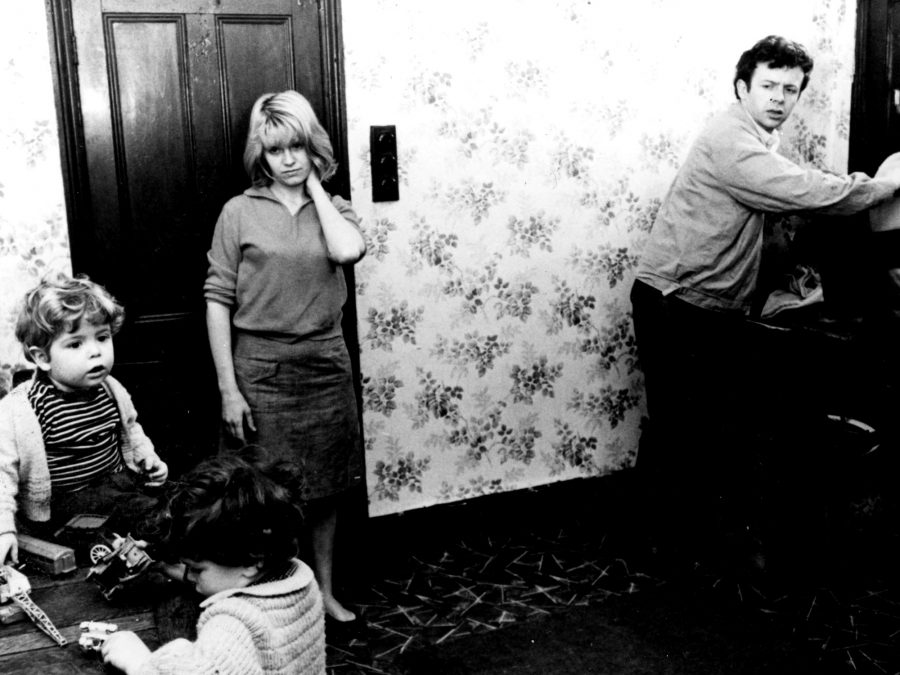
Although still referred to as The Wednesday Play, it was the characteristics that distinguished Cathy Come Home from the theatre that was key to its success. Firstly was its reach. Unlike a play, where only a select few are able to get a ticket, Cathy Come Home was beamed simultaneously to roughly a quarter of the entire UK population. With most households already having access to a television, but having only three channels to choose from, there had arguably never been a time where one art-form could benefit from so much guaranteed exposure.
Recognising the medium as a potential vehicle for social change, Sandford and Loach set out to address the kind of issues that had hitherto been ignored by television and targeted audiences’ sense of decency and moral consciousness. Sandford’s script created relatable characters with believable problems, while an informal first person narration from Cathy helped make her identifiable.
It was the naturalistic direction that really got under the skin, however. Most television dramas at the time were filmed in studios, but Loach, in the manner of the similarly socially-realist kitchen sink dramas of the British New Wave, shot almost all of Cathy Comes Home out on the streets. He employed a cinema verité aesthetic, with many scenes being improvised and some members of the public being filmed unknowingly, all of which amplified the action’s disconcerting realism.
The effect was startling. Many viewers confused the fiction for reality, and there were stories that Carol White was approached in the street and offered money by members of the public believing her to be Cathy. Some in the media were scandalised by its techniques, with a review in The Daily Telegraph accusing it of misleading its viewers by not making clear what was real and what wasn’t. But it was this naturalistic style that was key to expressing that this was a television show about real people’s lives, people who were in urgent need of help.
Watching Cathy Come Home today, it’s striking just how familiar the concerns are. Whereas most pop culture invites us to remember 1960s London as a time of swinging hedonism and garish chic depicted in works such as A Hard Day’s Night, it reminds us that beneath the glamorous sheen the same problems existed. Cathy’s plight is one of a lack of affordable or council housing, and other disgruntled characters place the blame on that all too familiar scapegoat – the migrant.
ALPHAVILLE
At a time when 10,000 of the world's leading physicists are holed up in a Swiss bunker engaged on a project that may one day enable them to pretend they understand the nature of the universe, Alphaville has never seemed more timely.
Jean-Luc Godard's film – "a science fiction film without special effects" in the words of the critic Andrew Sarris; "a fable on a realistic ground" in Godard's own description – is a cry of protest aimed at the worshippers of science and logic. Unlike Stanley Kubrick's 2001: A Space Odyssey, which now resembles a picturesque relic of long-abandoned aspirations, Alphaville still seems to be watching the world come to meet it. And the world is very much closer to the director's creation than it was back in 1965.

To have seen it in its time – in my case at the Moulin Rouge cinema in Nottingham, which alternated the latest from Godard, Truffaut, Antonioni and Fellini with the creampuff-porn nudist flicks of the pre-Confessions era – was to have been astonished and delighted. The passage of almost half a century has done nothing to dim its stylishness, blunt its humour or extinguish its piercing message.
Eddie Constantine, the expatriate American actor, had already played the weatherbeaten FBI agent Lemmy Caution in several French films based on a series of novels by the British writer Peter Cheyney (sample titles: Dames Get Along and This Man Is Dangerous). Godard invited Constantine to reprise the role and sent Caution into the future, keeping the B-movie conventions intact along with his personal accoutrements – American car, Zippo lighter, raincoat, trilby, button-down shirt. Caution arrives in Alphaville on a mission to find a lost agent and assassinate Professor von Braun, the architect of a state whose people are ruled by logic and science and have been purged of emotion.
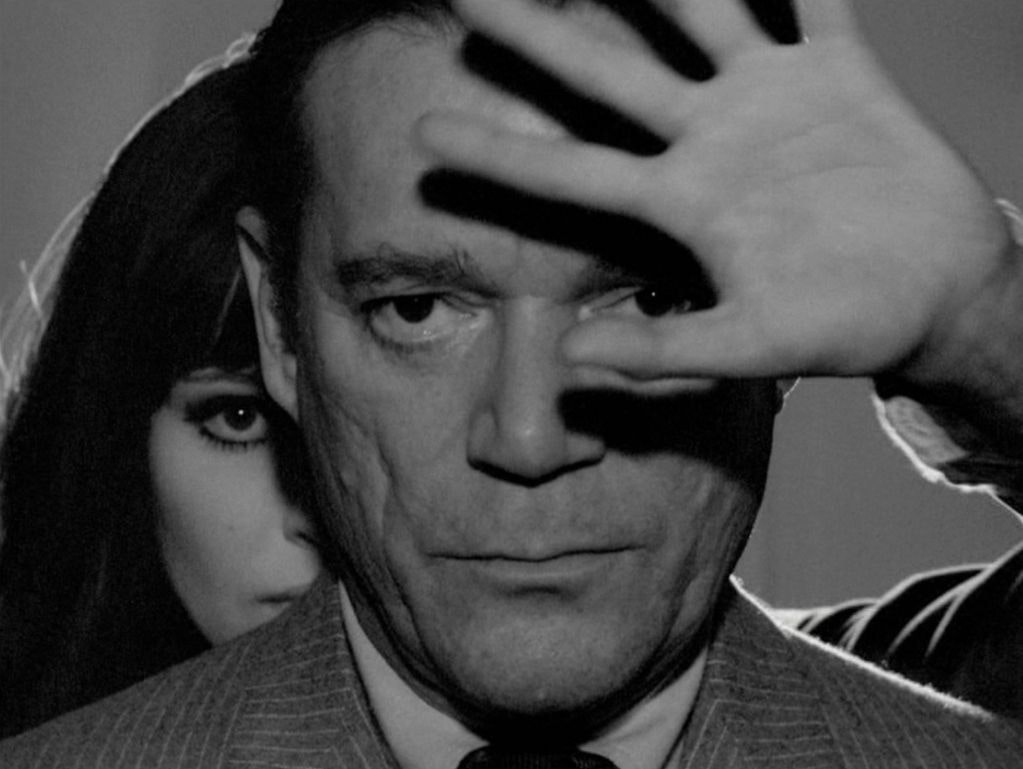
All the elements combine beautifully. Raoul Coutard's black-and-white photography turns everyday objects and settings – a hotel lobby, a swimming pool, a room full of mainframe computers, a jukebox, a Kodak Instamatic, the Paris suburbs at night – into the props of a convincingly dystopian futureworld whose philosophy is outlined in voiceover by the grating, inhuman tones of Alpha 60, the computer that regulates life in Alphaville. (Godard had the lines intoned by an actor who had lost his larynx and spoke through an artificial voice-box.) Paul Misraki's excellent score enhances moments of tension with warning stabs of low brass.
Anna Karina, meanwhile, is at her most darkly luminous as Natacha von Braun, the great leader's daughter. Her programmed responses slowly break down as the hardboiled detective gives his "pretty sphinx" a copy of poet Paul Eluard's Capital of Pain and introduces her to the concepts of "conscience" and "love" – words with which she is unfamiliar, since they have been progressively redacted from the dictionary that is the Bible of her father's totalitarian state. "Nearly every day, words disappear because they are forbidden," she tells him. "They are replaced by new words expressing new ideas." Orwell hovers around this film, along with Borges and Céline.
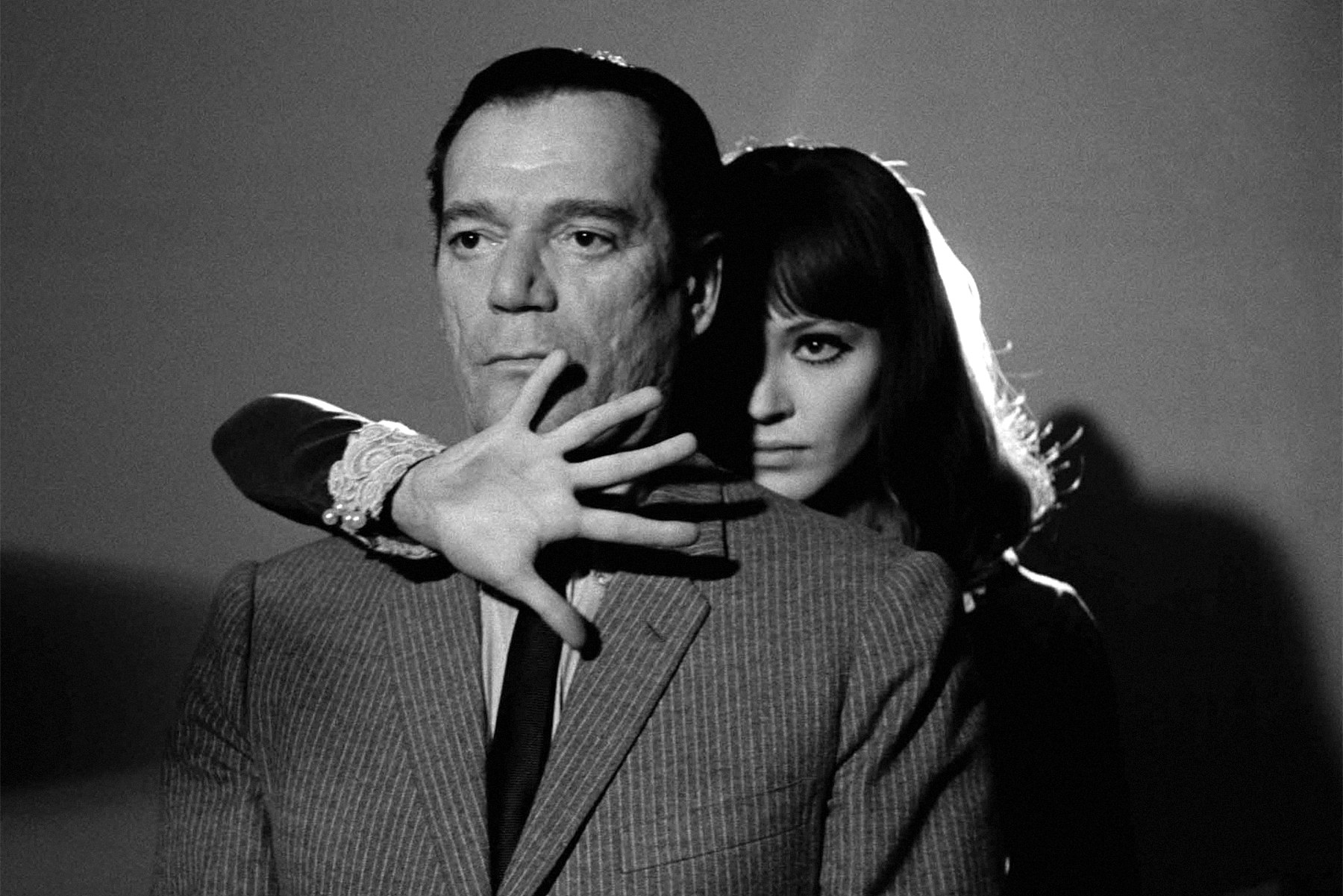
This was Godard's ninth feature film in six years, a rate of production resembling that of Beatles albums. There are signs of haste and improvisation, so Alphaville is much the better for its ability to make us think and trigger our feelings. At times it is a cartoon (the shootings, the use of negative images to convey disorientation) but at others it is more chillingly prescient than ever.
Yet Godard ends the piece on a note of romantic optimism, with Lemmy and Natasha escaping their pursuers and a dying world, fleeing to safety through intersidereal space (otherwise known as the Boulevard Périphérique) as the girl learns a new phrase: "Je vous aime ..."
To join our mailing list email us at:
info@cine-real.com
NIGHT OF THE LIVING DEAD
George A Romero’s 1968 classic about a mass attack by cannibalistic ghouls is brilliantly perplexing, horrifying and mysteriously allegorical
The grandaddy of low-budget zombie siege horrors, George A Romero’s 1968 classic casts a long shadow. It remains a nightmare experience that’s not easily brushed off. And despite its ramshackle scrappiness in production terms, and some dated gender politics, the storytelling is first class, pitching us straight into the action, but only revealing its full hand gradually. The first “ghoul” (nobody says zombie in the film) attacks Barbra (Judith O’Dea) and kills her brother in broad daylight within minutes. Taking refuge in an abandoned house, Barbra soon receives company from more shuffling ghouls, hungry for human flesh, but also from Ben (Duane Jones), a young African American man who proves to be the only character in the movie with the wherewithal to do something about the crisis. He’s good at boarding up windows and hand-to-hand combat, though his victim-support skills towards the catatonic Barbra are limited.
The cast expands to seven when more people are discovered in the basement of the house, even as the ghoul population outside increases inexorably. Trust and mutual cooperation are in short supply. TV reports suggest this is a nationwide epidemic. The initial, almost jokey setup steadily shifts into something more unsettling. Romero conjures moments of eeriness and dread throughout, keeping the lighting low and the special effects to a minimum, though there will be blood, fire, cannibalism and a great deal of death. It all leads to a cryptic and subversive climax. The fact that Ben is a black man is never remarked on, but looking back, it is one of the film’s most radical moves. The shockingly brutal ending is another. Was it meant as an allegory of the civil rights era? The Vietnam war? The counterculture? Such open-endedness is part of what keeps the film vital, even 50 years later. It’s what Romero, who died in 2017, would have wanted.
GHOSTBUSTERS (1984)
"Ghostbusters" is a head-on collision between two comic approaches that have rarely worked together very successfully. This time, they do. It's (1) a special-effects blockbuster, and (2) a sly dialogue movie, in which everybody talks to each other like smart graduate students who are in on the joke. In the movie's climactic scenes, an apocalyptic psychic mindquake is rocking Manhattan, and the experts talk like Bob and Ray.
This movie is an exception to the general rule that big special effects can wreck a comedy. Special effects require painstaking detail work. Comedy requires spontaneity and improvisation; or at least that's what it should feel like, no matter how much work has gone into it. In movies like Steven Spielberg's "1941," the awesome scale of the special effects dominated everything else; we couldn't laugh because we were holding our breath. Not this time.
"Ghostbusters" has a lot of neat effects, some of them mind-boggling, others just quick little throwaways, as when a transparent green-slime monster gobbles up a mouthful of hot dogs. No matter what effects are being used, they're placed at the service of the actors; instead of feeling as if the characters have been carefully posed in front of special effects, we feel they're winging this adventure as they go along.
The movie stars Bill Murray, Dan Aykroyd, and Harold Ramis, three graduates of the Second City/National Lampoon/"Saturday Night Live" tradition. They're funny, but they're not afraid to reveal that they're also quick-witted and intelligent; their dialogue puts nice little spins on American clichés, and it uses understatement, irony, in-jokes, vast cynicism, and cheerful goofiness. Rarely has a movie this expensive provided so many quotable lines.
The plot, such as it is, involves an epidemic of psychic nuisance reports in Manhattan. Murray, Ramis, and Aykroyd, defrocked parapsychologists whose university experiments have been exposed as pure boondoggle, create a company named Ghostbusters and offer to speed to the rescue like a supernatural version of the Orkin man. Business is bad until Sigourney Weaver notices that the eggs in her kitchen are frying themselves. Her next-door neighbor, Rick Moranis, notices horrifying monsters in the apartment hallways. They both apparently live in a building that serves as a conduit to the next world. The ghostbusters ride to the rescue, armed with nuclear-powered backpacks. There is a lot of talk about arcane details of psychic lore (most of which the ghostbusters are inventing on the spot), and then an earthshaking showdown between good and evil, during which Manhattan is menaced by a monster that is twenty stories high, and about which I cannot say one more word without spoiling the movie's best visual moment.
"Ghostbusters" is one of those rare movies where the original, fragile comic vision has survived a multimillion-dollar production. It is not a complete vindication for big-budget comedies, since it's still true, as a general rule, that the more you spend, the fewer laughs you get. But it uses its money wisely, and when that, ahem, monster marches down a Manhattan avenue and climbs the side of a skyscraper ... we're glad they spent the money for the special effects because it gets one of the biggest laughs in a long time. (Roger Ebert, 1984).
NIGHT OF THE HUNTER
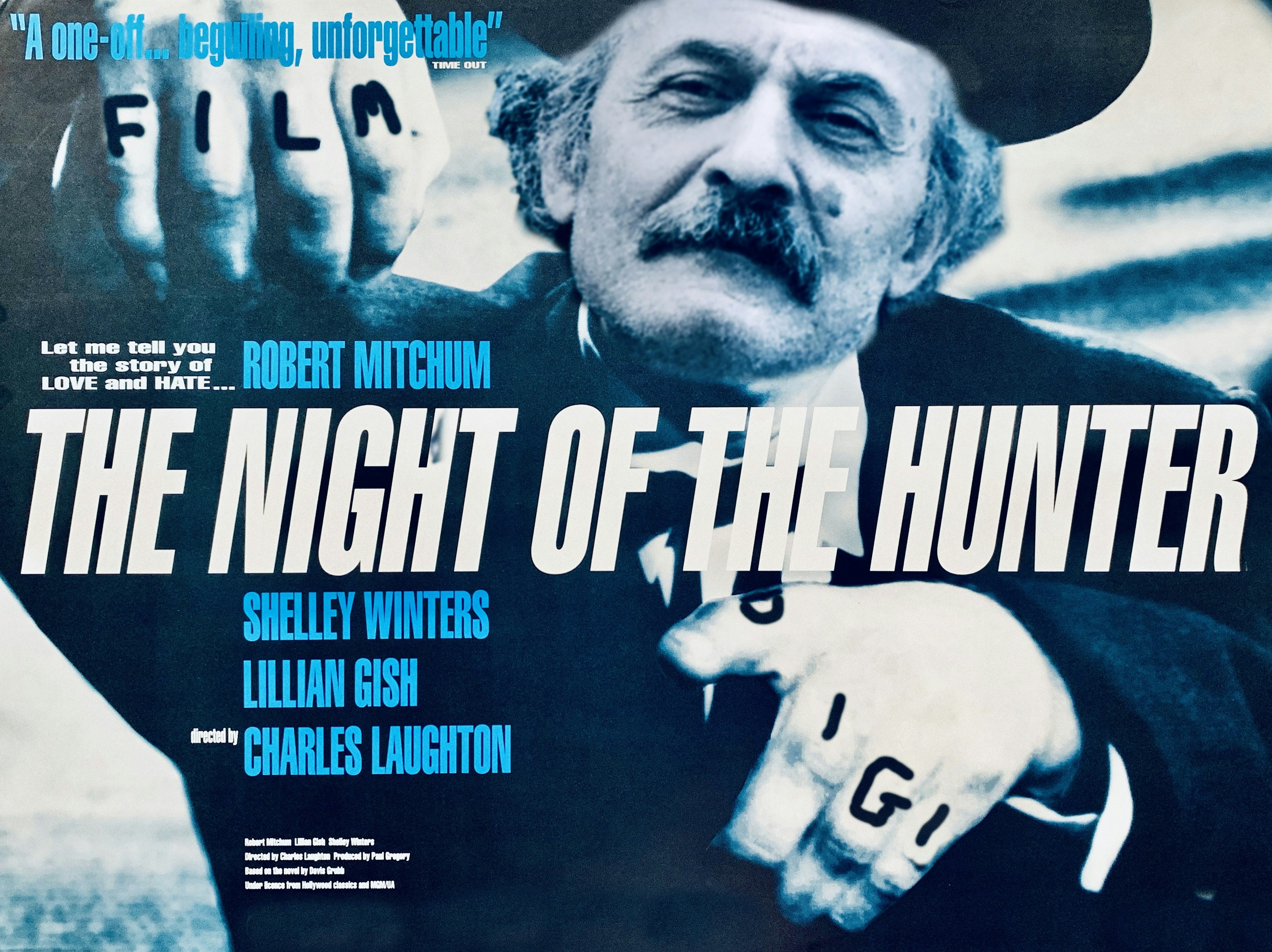
Charles Laughton's "The Night of the Hunter” (1955) is one of the greatest of all American films, but has never received the attention it deserves because of its lack of the proper trappings. Many “great movies” are by great directors, but Laughton directed only this one film, which was a critical and commercial failure long overshadowed by his acting career. Many great movies use actors who come draped in respectability and prestige, but Robert Mitchum has always been a raffish outsider. And many great movies are realistic, but “Night of the Hunter” is an expressionistic oddity, telling its chilling story through visual fantasy. People don't know how to categorize it, so they leave it off their lists.
Yet what a compelling, frightening and beautiful film it is! And how well it has survived its period. Many films from the mid-1950s, even the good ones, seem somewhat dated now, but by setting his story in an invented movie world outside conventional realism, Laughton gave it a timelessness. Yes, the movie takes place in a small town on the banks of a river. But the town looks as artificial as a Christmas card scene, the family's house with its strange angles inside and out looks too small to live in, and the river becomes a set so obviously artificial it could have been built for a completely stylized studio film like "Kwaidan" (1964).
Everybody knows the Mitchum character, the sinister “Reverend” Harry Powell. Even those who haven't seen the movie have heard about the knuckles of his two hands, and how one has the letters H-A-T-E tattooed on them, and the other the letters L-O-V-E. Bruce Springsteen drew on those images in his song "Cautious Man”:
"On his right hand Billy'd tattooed the word "love” and on his left hand was the word "fear” And in which hand he held his fate was never clear”
Many movie lovers know by heart the Reverend's famous explanation to the wide-eyed boy ("Ah, little lad, you're staring at my fingers. Would you like me to tell you the little story of right-hand/left-hand?”) And the scene where the Reverend stands at the top of the stairs and calls down to the boy and his sister has become the model for hundred other horror scenes.
But does this familiarity give "The Night of the Hunter” the recognition it deserves? I don't think so because those famous trademarks distract from its real accomplishment. It is one of the most frightening of movies, with one of the most unforgettable of villains, and on both of those scores it holds up as well after four decades as I expect "The Silence of the Lambs" to do many years from now.
The story, somewhat rearranged: In a prison cell, Harry Powell discovers the secret of a condemned man (Peter Graves), who has hidden $10,000somewhere around his house. After being released from prison, Powell seeks out the man's widow, Willa Harper (Shelley Winters), and two children, John (Billy Chapin) and the owl-faced Pearl (Sally Jane Bruce). They know where the money is, but don't trust the “preacher.” But their mother buys his con game and marries him, leading to a tortured wedding night inside a high-gabled bedroom that looks a cross between a chapel and a crypt.
Soon Willa Harper is dead, seen in an incredible shot at the wheel of a car at the bottom of the river, her hair drifting with the seaweed. And soon the children are fleeing down the dream-river in a small boat, while the Preacher follows them implacably on the shore; this beautifully stylized sequence uses the logic of nightmares, in which no matter how fast one runs, the slow step of the pursuer keeps the pace. The children are finally taken in by a Bible-fearing old lady (Lillian Gish), who would seem to be helpless to defend them against the single-minded murderer, but is as unyielding as her faith.
The shot of Winters at the bottom of the river is one of several remarkable images in the movie, which was photographed in black and white by Stanley Cortez, who shot Welles' "The Magnificent Ambersons," and once observed he was "always chosen to shoot weird things.” He shot few weirder than here, where one frightening composition shows a street lamp casting Mitchum's terrifying shadow on the walls of the children's bedroom. The basement sequence combines terror and humor, as when the Preacher tries to chase the children up the stairs, only to trip, fall, recover, lunge and catch his fingers in the door. And the masterful nighttime river sequence uses giant foregrounds of natural details, like frogs and spider webs, to underline a kind of biblical progression as the children drift to eventual safety.
The screenplay, based on a novel by Davis Grubb, is credited to James Agee, one of the icons of American film writing and criticism, then in the final throes of alcoholism. Laughton's widow, Elsa Lanchester, is adamant in her autobiography: “Charles finally had very little respect for Agee. And he hated the script, but he was inspired by his hatred.” She quotes the film’s producer, Paul Gregory: “. . . the script that was produced on the screen is no more James Agee's . . . than I'm Marlene Dietrich.”
Who wrote the final draft? Perhaps Laughton had a hand. Lanchester and Laughton both remembered that Mitchum was invaluable as a help in working with the two children, whom Laughton could not stand. But the final film is all Laughton's, especially the dreamy, Bible-evoking final sequence, with Lillian Gish presiding over events like an avenging elderly angel.
Robert Mitchum is one of the great icons of the second half-century of cinema. Despite his sometimes scandalous off-screen reputation, despite his genial willingness to sign on to half-baked projects, he made a group of films that led David Thomson, in his Biographical Dictionary of Film, to ask, “How can I offer this hunk as one of the best actors in the movies?” And answer: “Since the war, no American actor has made more first-class films, in so many different moods.” “The Night of the Hunter,” he observes, represents “the only time in his career that Mitchum acted outside himself,” by which he means there is little of the Mitchum persona in the Preacher.
Mitchum is uncannily right for the role, with his long face, his gravel voice, and the silky tones of a snake-oil salesman. And Shelly Winters, all jitters and repressed sexual hysteria, is somehow convincing as she falls so prematurely into, and out of, his arms. The supporting actors are like a chattering gallery of Norman Rockwell archetypes, their lives centered on bake sales, soda fountains and gossip. The children, especially the little girl, look more odd than lovable, which helps the film move away from realism and into stylized nightmare. And Lillian Gish and Stanley Cortez quite deliberately, I think, composed that great shot of her which looks like nothing so much as Whistler's mother holding a shotgun.
Charles Laughton showed here that he had an original eye, and a taste for material that stretched the conventions of the movies. It is risky to combine horror and humor, and foolhardy to approach them through expressionism. For his first film, Laughton made a film like no other before or since, and with such confidence it seemed to draw on a lifetime of work. Critics were baffled by it, the public rejected it, and the studio had a much more expensive Mitchum picture (“Not as a Stranger”) it wanted to promote instead. But nobody who has seen "The Night of the Hunter” has forgotten it, or Mitchum's voice coiling down those basement stairs: "Chillll . . . dren?” - ROGER EBERT
LE JOUR SE LÈVE (DAYBREAK)
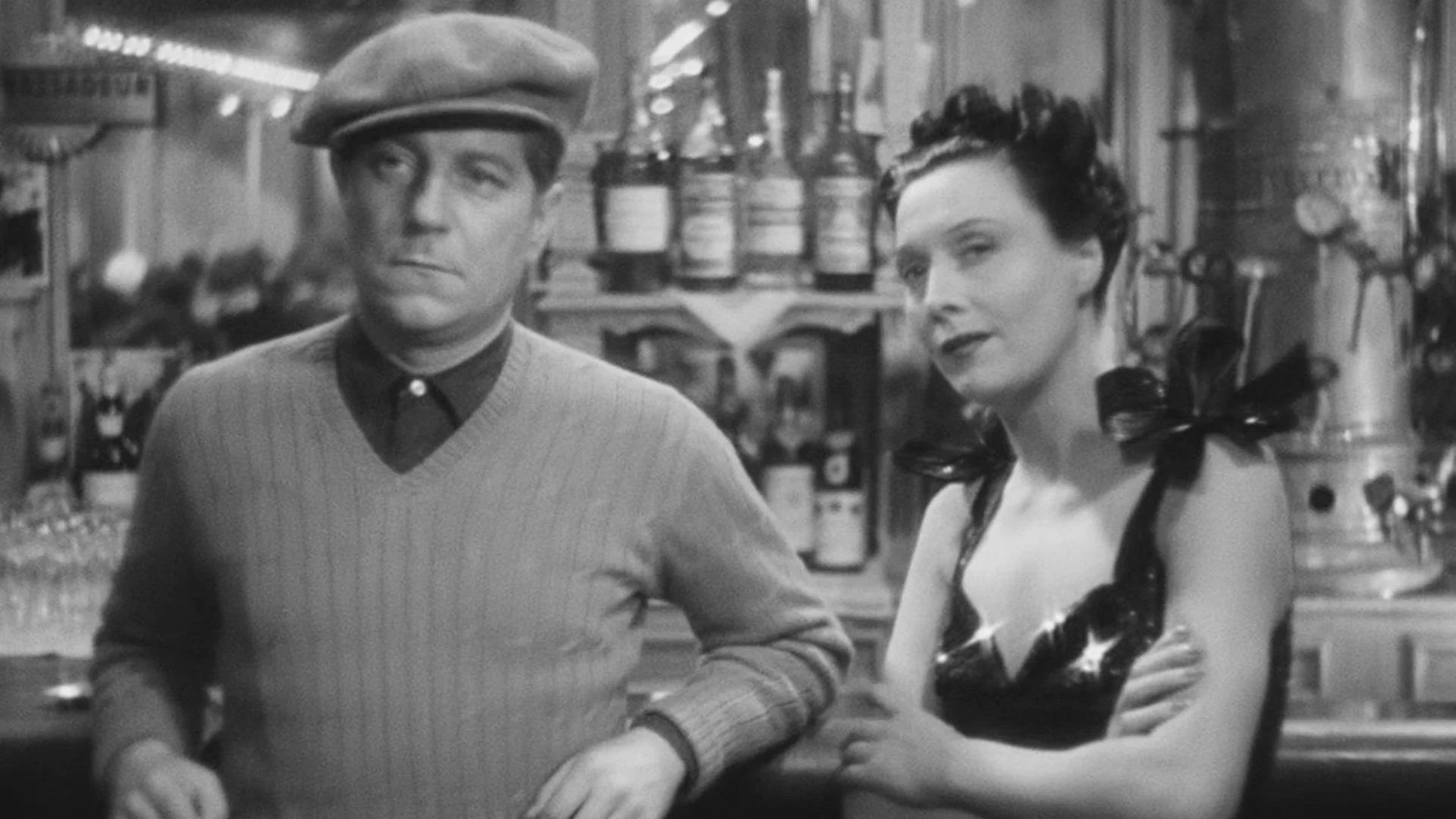
One of the peaks of “poetic realism”, the 1930s film school known for its combination of leftwing attitudes, visual and verbal lyricism and a pessimistic view of lower-class characters snared by a cruel fate, Le jour se lève (Daybreak) qualifies as what the French call un film maudit, a movie with a curse upon it. It opened on the eve of the second world war, was banned during the occupation and remade in 1947 by RKO, who attempted to destroy all existing copies. In the 1950s the belligerent critics of Cahiers du cinéma, soon to be film-makers in the new wave, attempted to destroy the reputation of its director, Marcel Carné, accusing him of heavy-handedness and attributing all that is successful in Le jour se lève to his long-time collaborator, the poet Jacques Prévert.
Fortunately they failed, and now the films Carné made in the decade after he became a director in 1936 are considered key works of a golden age. Almost everything about Le jour se lève, now available in an immaculately restored version, seems the work of an assured master. France’s greatest movie actor, Jean Gabin, dominates the picture as a suburban foundry worker who in the opening minute kills his tormentor, a sadistic music-hall performer (Jules Berry), and then barricades himself in his seedy lodgings. Over the next night and day, as hostile police lay siege and sympathetic members of the public watch on, Gabin reviews his life in three extended flashbacks, most especially his relationships with a pretty flower girl (Jacqueline Laurent) and a cynical big-hearted demimondaine (Arletty), both victims of the suave, manipulative Berry.
The images of the great German cinematographer Curt Courant are beautifully lit and composed and the camera moves with graceful precision. Production designer Alexandre Trauner’s suburban streets, constructed entirely in a Paris studio, are works of great beauty, reminiscent of Eugène Atget’s architectural photography. The sonorous, near funereal music by Maurice Jaubert is understated, the visual symbolism never over-emphasised, Prévert’s dialogue has a witty, demotic lyricism, and the performances are beyond reproach. A lengthy accompanying documentary places it in its historic context as a film that no member of the nouvelle vague surpassed and few came near to matching.
To join our mailing list email us at:EMAIL: info@cine-real.com
ON THE WATERFRONT (AUGUST, 2022)
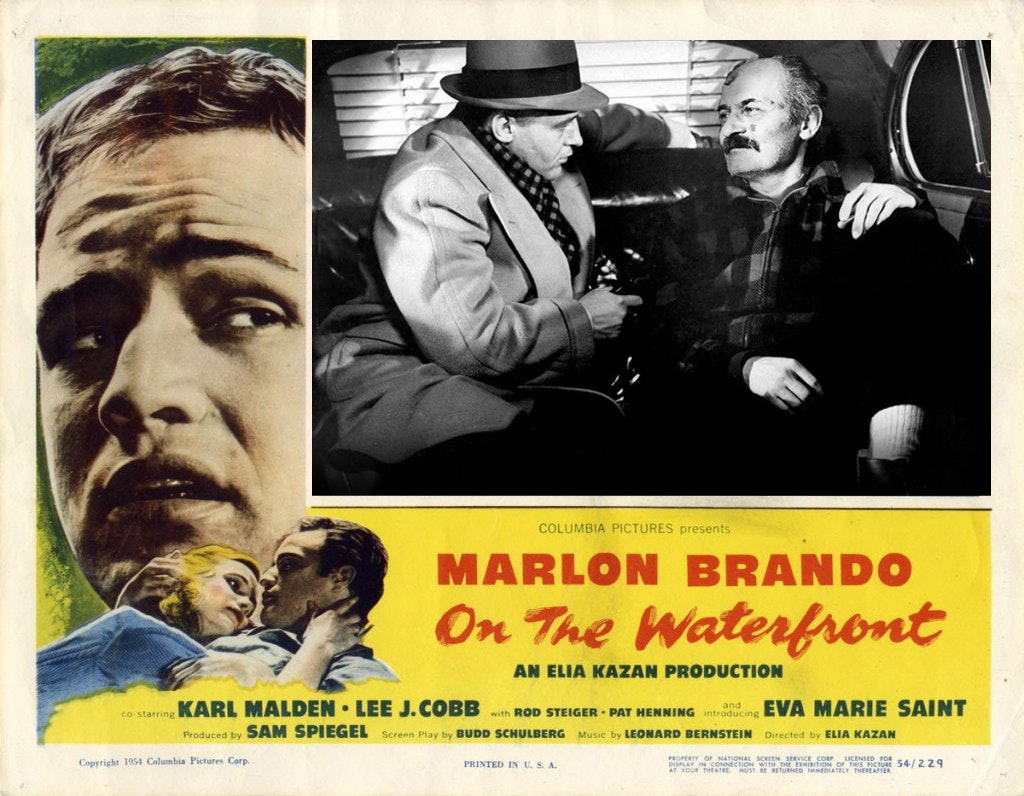
Conscience. That stuff can drive you nuts.
So says Terry Malloy, the longshoreman who testifies against his union in “On the Waterfront.” The line, said by Marlon Brando, resonates all through the picture because the story is about conscience--and so is the story behind the story. This was the film made in 1954 by Elia Kazan after he agreed to testify before the House Un-American Activities Committee, named former associates who were involved with the Communist Party and became a pariah in left-wing circles.
“On the Waterfront” was, among other things, Kazan's justification for his decision to testify. In the film, when a union boss shouts, “You ratted on us, Terry,” the Brando character shouts back: “I'm standing over here now. I was rattin' on myself all those years. I didn't even know it.” That reflects Kazan's belief that communism was an evil that temporarily seduced him, and had to be opposed. Brando's line finds a dramatic echo in A Life, Kazan's 1988 autobiography, where he writes of his feelings after the film won eight Oscars, including best picture, actor, actress and director: “I was tasting vengeance that night and enjoying it. `On the Waterfront' is my own story; every day I worked on that film, I was telling the world where I stood and my critics to go and - - - - themselves.”
In that statement you can feel the passion that was ignited by the HUAC hearings and the defiance of those who named names, or refused to. For some viewers, the buried agenda of “On the Waterfront” tarnishes the picture; the critic Jonathan Rosenbaum told me he could “never forgive” Kazan for using the film to justify himself. But directors make films for all sorts of hidden motives, some noble, some shameful, and at least Kazan was open about his own. And he made a powerful and influential movie, one that continued Brando's immeasurable influence on the general change of tone in American movie acting in the 1950s.
“If there is a better performance by a man in the history of film in America, I don't know what it is,” Kazan writes in his book. If you changed “better” to “more influential,” there would be one other performance you could suggest, and that would be Brando's work in Kazan's “A Streetcar Named Desire” (1951). In those early films, Brando cut through decades of screen mannerisms and provided a fresh, alert, quirky acting style that was not realism so much as a kind of heightened riff on reality. He became famous for his choices of physical gestures during crucial scenes (and as late as “The Godfather,” he was still finding them--the cat in his lap, the spray gun in the tomato patch).
In “On the Waterfront,” there's a moment when Terry goes for a walk in the park with Edie (Eva Marie Saint), the sister of a man who has been thrown off a roof for talking to crime investigators. She drops a glove. He picks it up, and instead of handing it back, he pulls it on over his own workers' hands. A small piece of business on the edge of the shot, but it provides texture.
And look at the famous scene between Terry and his brother, Charley (Rod Steiger), in the back seat of a taxi. This is the “I coulda been a contender” scene, and it has been parodied endlessly (most memorably by Robert De Niro in “Raging Bull”). But it still has its power to make us feel Terry's pain, and even the pain of Charley, who has been forced to pull a gun on his brother. Here is Kazan on Brando:
“ ... what was extraordinary about his performance, I feel, is the contrast of the tough-guy front and the extreme delicacy and gentle cast of his behavior. What other actor, when his brother draws a pistol to force him to do something shameful, would put his hand on the gun and push it away with the gentleness of a caress? Who else could read `Oh, Charley!' in a tone of reproach that is so loving and so melancholy and suggests the terrific depth of pain?”
Kazan's screenplay was by Budd Schulberg, and his producer was Sam Spiegel, one of the great independent buccaneers (his next production after “Waterfront” was “The Bridge on the River Kwai”). Spiegel at first proposed Frank Sinatra for the role of Terry Malloy, and Kazan agreed: “He spoke perfect Hobokenese.” The young, wiry Sinatra would have been well-cast, but then Spiegel decided that Brando, then a much bigger star, could double the budget available for the film. Kazan had already discussed costumes with Sinatra and felt bad about the switch, but Sinatra “let me off easy.”
The film was based on the true story of a longshoreman who tried to overthrow a corrupt union. In life, he failed; in the film, he succeeds, and today the ending of “On the Waterfront” feels too stagy and upbeat. The film was shot on location in Hoboken, N.J., on and near the docks, with real longshoremen playing themselves as extras (sometimes they're moved around in groups that look artificially blocked). Brando plays a young ex-prizefighter, now a longshoreman given easy jobs because Charley is the right-hand man of the corrupt boss, Johnny Friendly (Lee J. Cobb). After he unwittingly allows himself to be used to set up the death of Edie's brother, he starts to question the basic assumptions of his life--including his loyalty to Charley and Johnny, who after all ordered him to take a dive in his big fight in Madison Square Garden.
The other major character is a priest (Karl Malden), who tries to encourage longshoremen to testify against corruption. After one rebel is deliberately crushed in the hold of a ship, the priest makes a speech over his body (“if you don't think Christ is down here on the waterfront, you got another think coming”). It would have been the high point of another kind of film, but against Brando's more sinuous acting, it feels like a set piece.
Eva Marie Saint makes a perfect foil for Brando, and the two actors have a famous scene in a bar where he reveals, almost indirectly, that he likes her, and she turns the conversation from romance to conscience. At one point Kazan and his cameraman, Boris Kaufman, frame her pale face and hair in the upper-right-hand corner of the screen, with Brando in lower center, as if a guardian angel is hovering above him.
The best scenes are the most direct ones. Consider the way Brando refuses to cooperate with investigators who seek him out on the docks, early in the film. And the way he walks around on the rooftop where he keeps his beloved pigeons--lithe and catlike. Steiger is invaluable to the film, and in the famous taxi conversation, he brings a gentleness to match Brando's: The two brothers are in mourning for the lost love between them.
Schulberg's screenplay straddles two styles--the emerging realism and the stylised gangster picture. To the latter tradition belong lines like “He could sing, but he couldn't fly,” when the squealer is thrown off the roof.
To the former: “You know how the union works? You go to a meeting, you make a motion, the lights go out, then you go out.” Brando's “contender” speech is so famous it's hard to see anew, but watch the film again and you feel the reality of the sadness between the two men, and the simple words that express it.
“On the Waterfront” was nominated for 11 Oscars and won eight. Ironically, the other three nominations were all for best supporting actor, where Cobb, Malden and Steiger split the vote. Today the story no longer seems as fresh; both the fight against corruption and the romance fall well within ancient movie conventions. But the acting and the best dialogue passages have an impact that has not dimmed; it is still possible to feel the power of the film and of Brando and Kazan, who changed American movie acting forever.
LINKS: https://cinephiliabeyond.org/e...
Le Grande Illusion (1937)
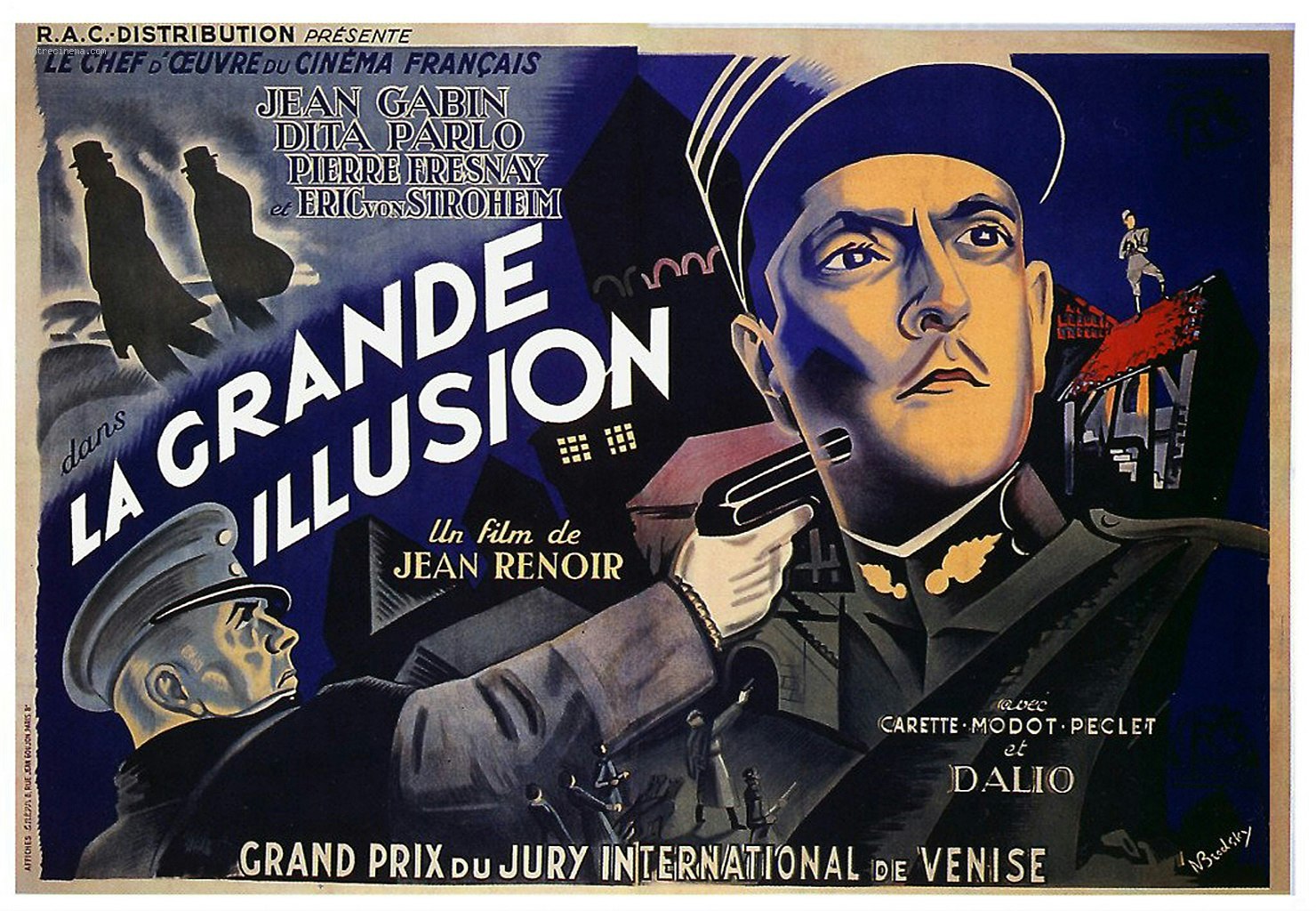
Apart from its other achievements, Jean Renoir's "Grand Illusion” influenced two famous later movie sequences. The digging of the escape tunnel in "The Great Escape" and the singing of the "Marseilles” to enrage the Germans in "Casablanca" can first be observed in Renoir's 1937 masterpiece. Even the details of the tunnel dig are the same--the way the prisoners hide the excavated dirt in their pants and shake it out on the parade ground during exercise.
But if "Grand Illusion” had been merely a source of later inspiration, it wouldn't be on so many lists of great films. It's not a movie about a prison escape, nor is it jingoistic in its politics; it's a meditation on the collapse of the old order of European civilisation. Perhaps that was always a sentimental upper-class illusion, the notion that gentlemen on both sides of the lines subscribed to the same code of behaviour. Whatever it was, it died in the trenches of World War I.
"Neither you nor I can stop the march of time,” the captured French aristocrat Capt. de Boieldieu tells the German prison camp commandant, Von Rauffenstein. A little later, distracting the guards during an escape of others from the high-security German fortress, the Frenchman forces the German to shoot him, reluctantly, and they have a final deathbed exchange. `" didn't know a bullet in the stomach hurt so much,” he tells the German. "I aimed at your legs,” says the German, near tears. And a little later he says: "For a commoner, dying in a war is a tragedy. But for you and I--it's a good way out.”
What the Frenchman knows and the German won't admit is that the new world belongs to commoners. It changed hands when the gentlemen of Europe declared war. And the "grand illusion” of Renoir's title is the notion that the upper classes somehow stand above war. The German cannot believe that his prisoners, whom he treats almost as guests, would try to escape. After all, they have given their word not to.
The commandant is played by Erich von Stroheim, in one of the most famous of movie performances. Even many who have not seen the movie can identify stills of the wounded ace pilot von Rauffenstein, his body held rigid by a neck and back brace, his eye squinting through a monocle. De Boieldieu (Pierre Fresnay), from an old aristocratic family, is a pilot von Rauffenstein personally shot down earlier in the war. The other two major characters are also French prisoners: Marechal (Jean Gabin), a workingman, a member of the emerging proletariat, and Rosenthal (Marcel Dalio), a Jewish banker who has ironically purchased the chateau that de Boieldieu's family can no longer afford. The movie, filmed as the clouds of World War II were gathering, uses these characters to illustrate how the themes of the first war would tragically worsen in the second.
So pointed was Renoir's message that when the Germans occupied France, “Grand Illusion” was one of the first things they seized. It was "Cinematic Public Enemy No. 1,” propaganda minister Joseph Goebbels announced, ordering the original negative seized. Its history since then would make a movie like "The Red Violin," as the print moved across borders in shadowy ways. For many years it was assumed that the negative was destroyed in a 1942 Allied air raid. But as Stuart Klawens reported in the Nation, it had already been singled out by a German film archivist named Frank Hensel, then a Nazi officer in Paris, who had it shipped to Berlin. When Renoir supervised the assembly of a “restored” print in the 1960s, nothing was known of this negative. He worked from the best available surviving theatrical prints. The result, the version that has been seen all over the world until now, was a little scratched and murky, and encumbered by clumsy subtitles.
The original negative, meanwhile, was captured by Russians as they occupied Berlin and shipped to an archive in Moscow. In the mid-1960s, Klawens wrote, a Russian film archive and one in Toulouse, France, exchanged some prints, including the priceless "Grand Illusion.” But since many prints of the film existed and no one thought the original negative had survived, the negative waited for 30 years before being identified as a treasure. What that means is that the restored print of "Grand Illusion” now being shown around the country is the best seen since the movie's premiere.
This film clearly illustrates Renoir's visual style, his mastery of a subtly moving camera that allowed him to film extended passages without cutting. In the paintings of his father, Auguste Renoir, our eyes are led gently through the composition. In the films of the son, there is a quiet voluptuousness; the camera doesn't point or intrude, but glides.
As "Grand Illusion” opens, we meet von Rauffenstein in the German officers' mess. Having shot down two French fliers, he issues orders: "If they are officers, invite them for lunch.” Marechal and de Boieldieu are later sent to a POW camp, where they meet Rosenthal, already a prisoner, and benefit from the boxes of food his family sends him; often they eat better than their captors. Here are the tunnel-digging sequences, and the famous talent show scene, where total silence falls as they regard a man costumed as a woman, for it has been so long since they've seen a real one.
The tunnel digging is interrupted when all the prisoners are transferred. A few years pass, and now the three principal characters have been sent to Wintersborn, a fortress with high, unscalable walls. After a back wound ended his flying days, von Rauffenstein has volunteered to be commandant here as a way of remaining in service. He is strict but fair, still deceived by notions of class loyalty.
In these scenes von Stroheim makes an indelible impression, as a man deluded by romantic notions of chivalry and friendship. It is a touching performance, a collaboration between the great silent director and Renoir, then emerging as a master of sound. The performance is better even than it seems: Audiences assume Erich von Stroheim was a German, but mystery clouds his origins. Born in Vienna in 1885, by 1914 he was working with D.W. Griffith in Hollywood, but when did he immigrate to America (and add the "von” to his name)? Renoir writes in his memoirs: "Stroheim spoke hardly any German. He had to study his lines like a schoolboy learning a foreign language.”
The break from the fortress prison produces the touching deathbed farewell between De Boeldier and von Rauffenstein, which is the film's most touching scene, and then we join the workingman Marechal and the banker Rosenthal as they try to escape by walking cross-country through German territory. They're given shelter by a farm widow who sees security in Marechal, and perhaps Renoir is whispering that the true class connection across enemy lines is between the workers, not the rulers.
Jean Renoir, born in 1894, is on any list of the half-dozen greatest filmmakers, and his "The Rules of the Game" (1939) is even more highly considered than "Grand Illusion.” He fought in World War I, then quickly returned to Paris and entered the movie business. In his best films observation and sympathy for the characters define every shot; there is hardly a camera decision made for pure effect, without thinking first of where best to stand to see the characters.
Renoir moved to America in 1940, and made several Hollywood films, notably "The Southerner," with a screenplay by Faulkner, before going independent in the 1950s with "The River," based on Rumer Godden's Calcutta story. In a long retirement he was sought out by younger filmmakers and critics, who found him as sunny as a grandfather in one of his father's impressionist paintings. He died in 1979.
To join our mailing list email us at:
info@cine-real.com
The 400 Blows (JULY, 2022)
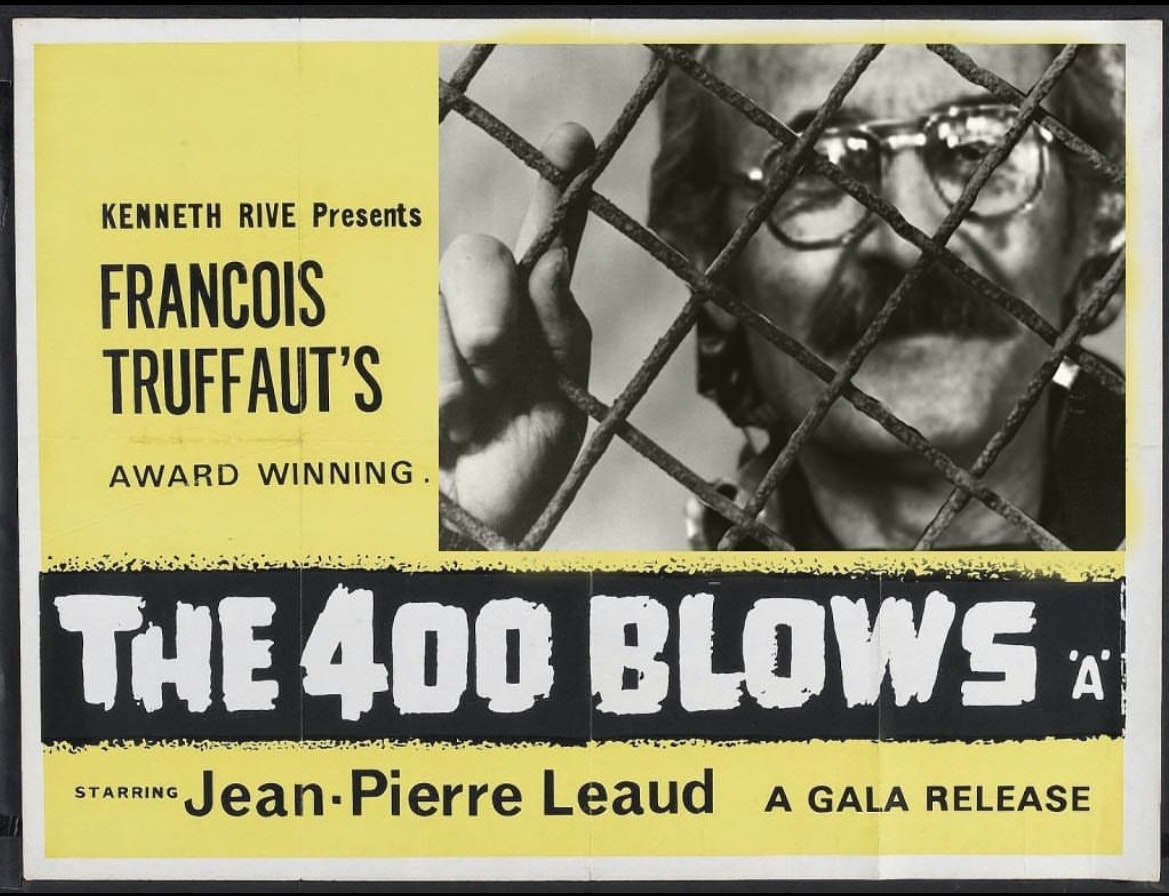
François Truffaut’s sublime autobiographical debut is now rereleased, a portrait of the artist as an unhappy child. He deserved every prize going simply for those heartstopping images of the children’s faces as they watch a Punch and Judy show. The title itself, from faire les quatre cent coups, means to hand out punishment, raise hell, sow wild oats – but this is an ironic upending. Truffaut’s alter ego, Antoine Doinel, is receiving the blows. They rain down on him. Cruelty and humiliation and desperation – and defiance – are this kid’s destiny.
Jean-Pierre Léaud played the 12-year-old lead in this and the five successive Doinel films, a role which was to define his entire life. Like Truffaut, Doinel is a truant, a delinquent, a kid from an unhappy home and a thief: he steals money, a bottle of milk, a typewriter and, most importantly of all, a piece of writing. For a class assignment, he plagiarises, or at any rate paraphrases, a passage from Balzac’s Quest of the Absolute from 1834, about the death of the alchemist Balthazar Claes, repurposing it for the supposed death of his own grandfather. Doinel even has a candlelit shrine to Balzac in the cramped family apartment, which almost burns the place down.
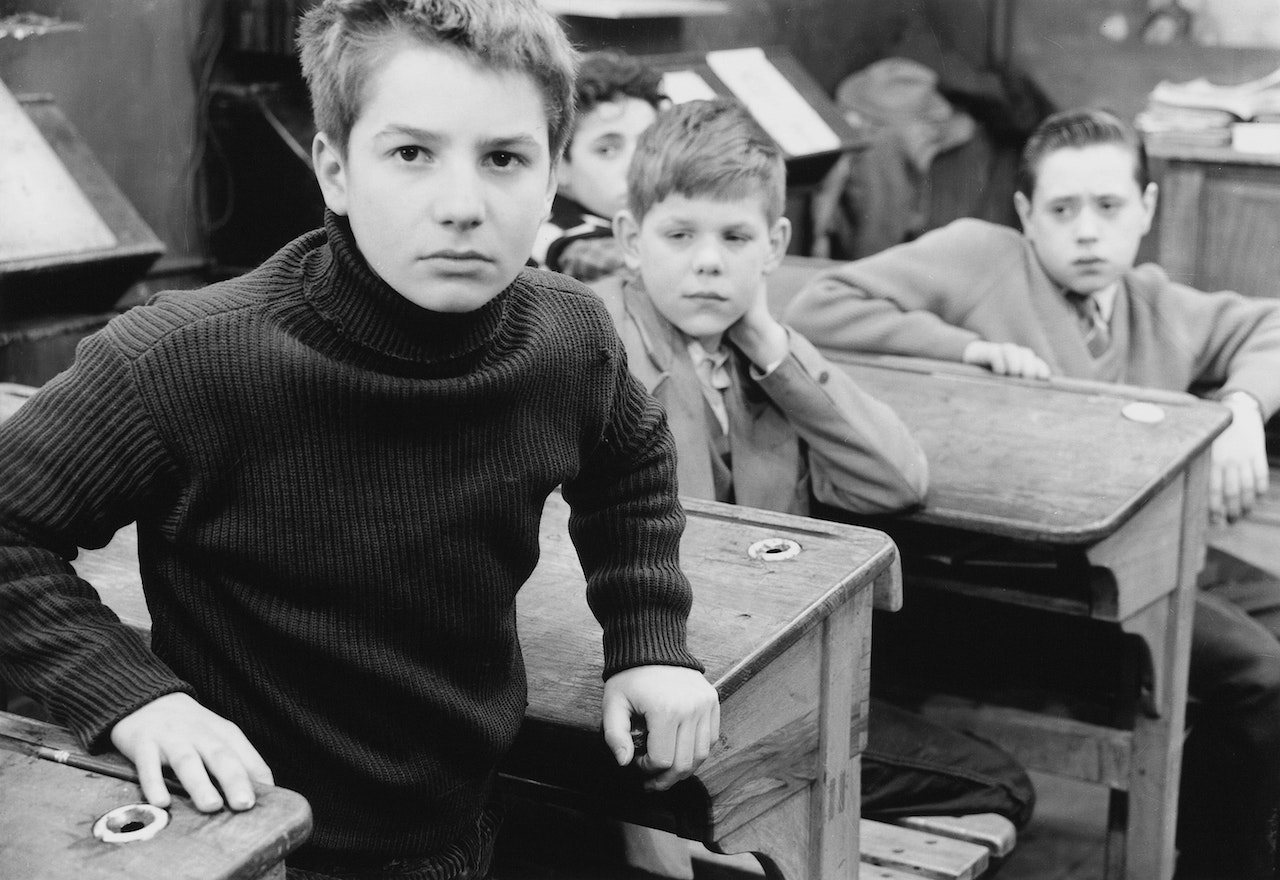
But Doinel has a tyrannical and narrow-minded schoolteacher (veteran player Guy Decomble, resembling Maigret with his coat and pipe) who is nicknamed petite feuille – little leaf – and is a petty little pedant. Instead of applauding Doinel’s good taste and even conceding that this semi-larceny shows audacity and imagination, this man is simply satisfied with his own cleverness at spotting the borrowing and punishes the boy. It is the ultimate mortification.
Doinel knows that his mother, the brassy Gilberte (Claire Maurier), is unfaithful to his jokey, affectionate stepfather Julien (Albert Rémy); he has seen her kissing a man in the street and knows that gifts of money may be involved. So when he pretends that his mother is dead as a bizarre excuse to explain one truancy – a grotesque lie for which Julien comes to school with his still living mother and slaps Doinel’s face in front of his class – it is clearly an act of matricidal wish-fulfilment of some sort. Doinel bunks off school, roaming all around town and of course going to the movies.
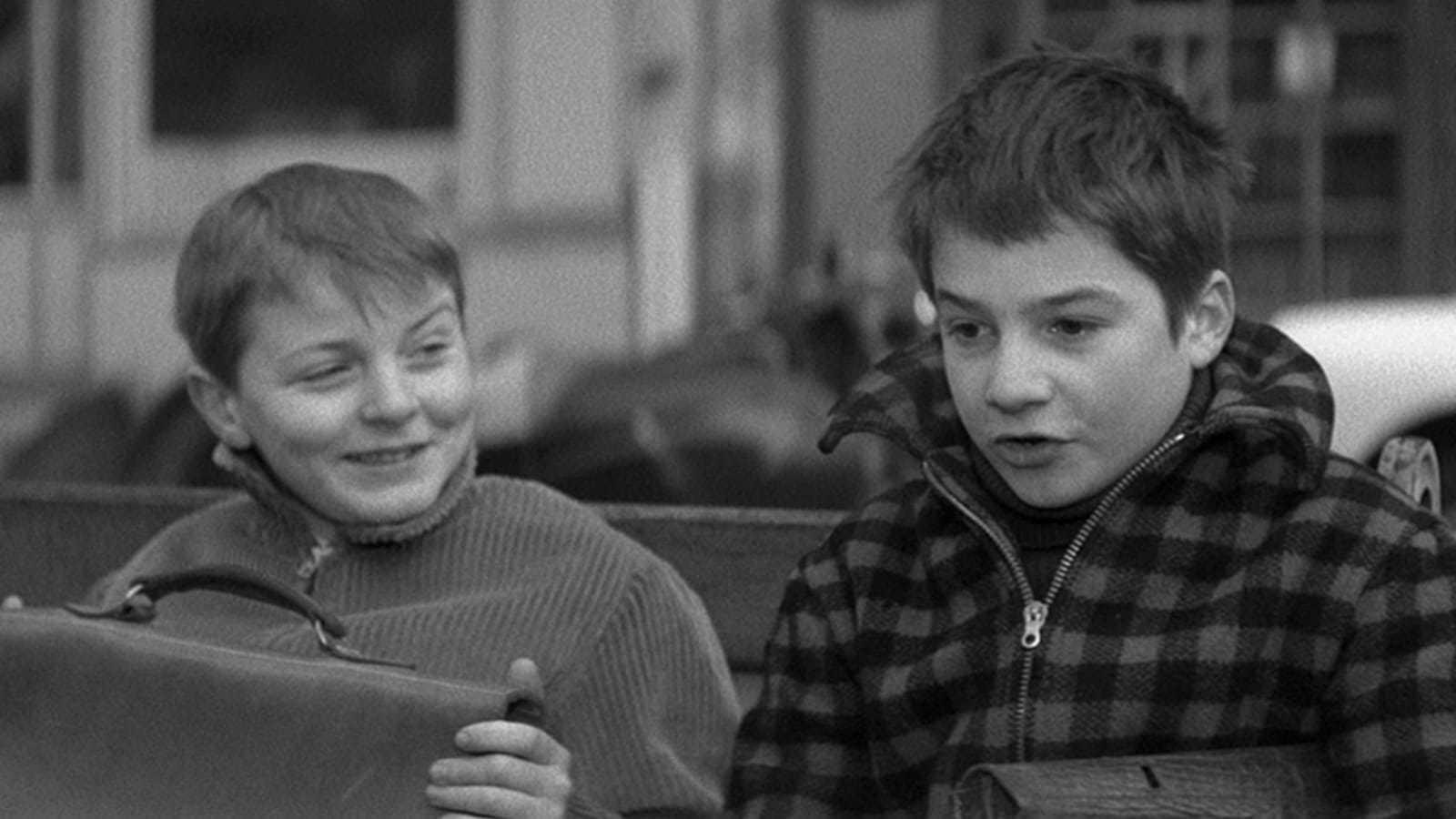
But despite what is perpetually written about The 400 Blows, movies are not overwhelmingly important to Doinel. They do not “save” him the way they really did save the young cinephile Truffaut, whose friendship and mentorship with critic and intellectual André Bazin meant that he was spared dire punishment for desertion during national service. Doinel spends more of his time ranging far afield outside the cinema: in real life, in the streets of Paris. But there is one in-joke: his parents take him to the movies to see Jacques Rivette’s Paris Belongs to Us (which was not actually released until 1961, two years after The 400 Blows).
Maybe Doinel is Truffaut’s alternative-reality version of himself: a self without the redemption of cinema, his abortive Balzac homage standing for the loss of art. With Gilberte’s shrugging permission, Doinel is sent to juvenile detention, put in police custody with grownup criminals and ladies of the night and then the psychological “observation unit” out in the country near the coast.
That brings us to the final, almost apocalyptic scene on the beach, where Doinel has ended up after running away from reform school. We know that he has never seen the sea. So how does he feel on seeing it now the first time? Does it look like freedom to him? Or another blank wall? When Truffaut freeze-frames on Doinel’s face at the very end, it shows him looking careworn and haggard for the first time: the freeze-frame has captured the moment at which the boy has become a man. This is the 401st blow – aimed at us. Peter Bradshaw, Guardian, 2022
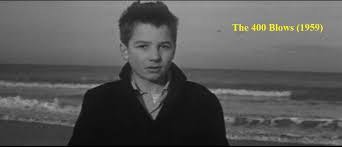
HUD
The 60s were a rough transition for America. Major shifts seemed to be occurring in every fabric of society from civil rights to sexual mores. The worsening course of the Vietnam war fueled distrust in political institutions. Women's rights highlighted a breaking from oppressive traditions. The old seemed to be fading away more radically than ever before.
Like the era it was made in, "Hud" was a key shift. As film critic Emmanuel Levy correctly puts it, it is "a transitional film between the naive films of the early 60s and the more cynical ones later in the decade." Though it plays as a compelling drama of small town life and family tribulation, through its lens of father-son conflict, it also captures the angst in the loss of authority, the gap between of two different generations, and an elegy for the good ole' days.
Based on the novel "Horseman, Pass By" written by that marvelous writer of the contemporary west Larry McMurtry (best known for "Lonesome Dove"), "Hud" chronicles the hardships of the O'Bannon family, headed by its elderly patriarch Homer (Melvyn Douglas). He owns a cattle ranch and runs it with the help of his son Hud (Paul Newman), and Hud's wide-eyed nephew Lonnie (Brandon De Wilde). While the O'Bannon boys run the ranch, their housekeeper Alma Brown (Patricia Neal) runs the household.
The film draws much of its power from its relationships, told mainly through Hud's exploits and conversations. A drunk and a womanizer, he can't help but switch from ranch hand to ladies man any chance he gets. Though he is weak with vice he possesses a certainty and a bravery that doesn't quite cross into foolishness. He's sly and not shy.
His father Homer is almost always on his case, and a model of calm unrelenting virtue, which might not be a virtue itself. He harbors a disappointment and bitterness in his son, which may seem apparent to Hud and to us, but goes deeper. Lonnie on the other hand is a true innocent who likes being with Hud because he's the closest thing to being a father figure and a big brother rolled up into one.

One day Homer finds one of his cattle dead, leaving both he and Hud puzzled as to the cause. Both find out soon enough that it is the worst thing that could happen to their way of life. It only brings out the ugliest in both their bitterness towards each other and ethical questions on how to cope with what is to come.
These doubts along with the animosity between father and son reflected the uncertainty of the times "Hud" existed in. Though the story seems to be set in the 50s with its careful attention to rural Americana, it only enhances an elegiac mood of a passing era, which Homer fully embodies. And as his soul seems to wither, his ranch transforms slowly and sadly in step, from buzzing to barren (pictured in gorgeous black and white by legendary cinematographer James Wong Howe). Melvyn Douglas plays him with a authentic dignity that is felt throughout his performance, regardless of how simplistic or vague his characterization is. Even with a simple sing-along moment, he finds away to bring out his heart.

Though Homer might be the counterpoint which Hud plays against, but it's his relationship with Lonnie which helps us sympathize with him. Brandon De Wilde completely conveys a guilelessness which we can't help but reminisce on and care for. We relate to how he admires his grandfather, as it reflects our own hopes in acquiring the wisdom of our elders. But we also understand why he gravitates to Hud as he seeks a fellow exuberant spirit. When we see Hud take Lonnie under his wing, hesitantly revealing secrets, we understand him. Without Lonnie, Hud would be nothing but an ingrate.
Another one of the film's treasures is Alma Brown who arouses desire. Ideal in Lonnie, carnal in Hud. Played by the late Patricia Neal, she provided a refreshing change from the primped up cowboy beauties of the 50s (e.g. Angie Dickinson in "Rio Bravo") and provided a glimpse of the earthier female personas yet to come (e.g. Claudia Cardinale in "Once Upon a Time in the West"). But before or since, has there ever been a tougher or more memorable female character in a contemporary Western than Alma? She shows sensuality without trying to be sexy. She marks interest in Hud without revealing weakness, and her no-nonsense approach was ahead of its time. She more than held her own against Paul Newman, which only adds to her and the film's appeal.

And of course we have the inimitable Paul Newman whose role here would cement his place in the Hollywood firmament (and supply him pretty much a dry run for his most famous role of "Cool Hand Luke"). It should be said the novel portrayed Hud as a man without merit. But here, with grace and gravitas, he supplies Hud with inklings of a soul. We understand why he went wrong, find an hint of where he may have gone wrong, and realize that inflexible nobility can produce its equivalent opposite.
Paul Newman was said to have been shocked that so many viewers felt for Hud O'Bannon instead of viewing him as a villain. Though many people see him as Alma rightly called him, "a cold-hearted bastard," he's more than that. "Hud" as a character of his time embodied a new ethos (right or wrong) longing to break free from old norms and seeking acceptance. As a film, it marked the entry of a new type of Western, one that was more intimate, more cynical, and more authentic than those before it. Michael Mirasol, Roger Ebert.com, 2010
To join our mailing list email us at:
info@cine-real.com
THE MALTESE FALCON (JUNE, 2022)
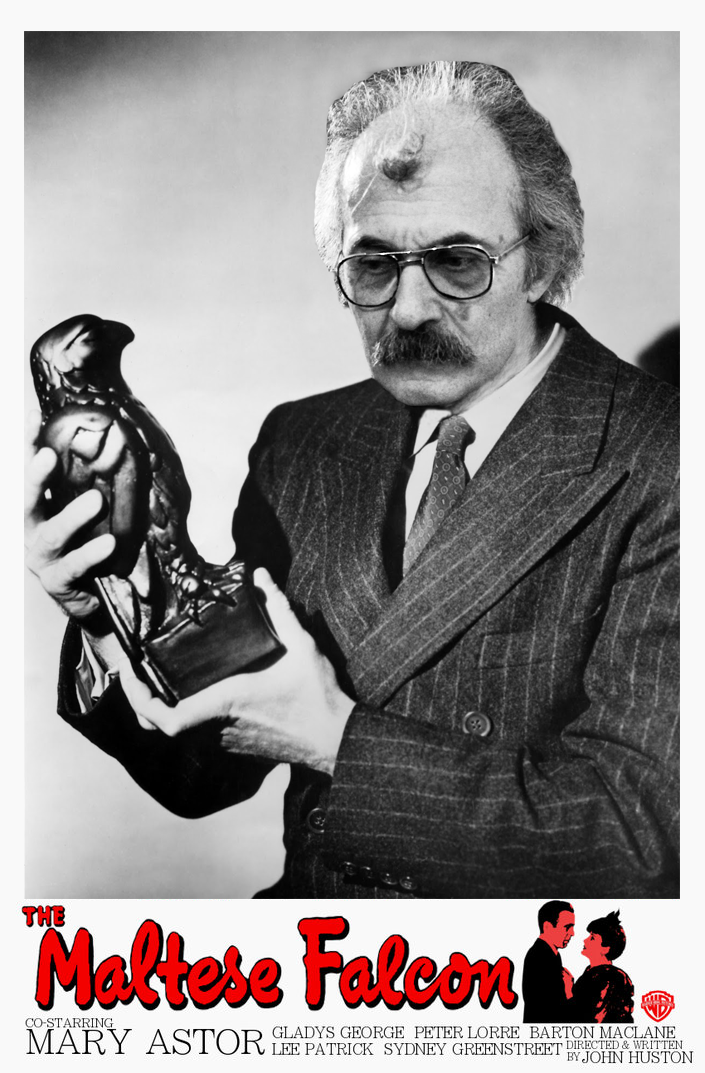
Among the movies we not only love but treasure, “The Maltese Falcon” stands as a great divide. Consider what was true after its release in 1941 and was not true before:
(1) The movie defined Humphrey Bogart's performances for the rest of his life; his hard-boiled Sam Spade rescued him from a decade of middling roles in B gangster movies and positioned him for “Casablanca,” “Treasure of the Sierra Madre,” “The African Queen” and his other classics.
(2) It was the first film directed by John Huston, who for more than 40 years would be a prolific maker of movies that were muscular, stylish and daring.
(3) It contained the first screen appearance of Sydney Greenstreet, who went on, in “Casablanca” and many other films, to become one of the most striking character actors in movie history.
(4) It was the first pairing of Greenstreet and Peter Lorre, and so well did they work together that they made nine other movies, including “Casablanca” in 1942 and “The Mask of Dimitrios” (1944), in which they were not supporting actors but actually the stars.
(5) And some film histories consider “The Maltese Falcon” the first film noir. It put down the foundations for that native American genre of mean streets, knife-edged heroes, dark shadows and tough dames.
Of course film noir was waiting to be born. It was already there in the novels of Dashiell Hammett, who wrote The Maltese Falcon, and the work of Raymond Chandler, James M. Cain, John O'Hara and the other boys in the back room. “Down these mean streets a man must go who is not himself mean,” wrote Chandler, and that was true of his hero Philip Marlowe (another Bogart character). But it wasn't true of Hammett's Sam Spade, whowas mean, and who set the stage for a decade in which unsentimental heroes talked tough and cracked wise.
The moment everyone remembers from “The Maltese Falcon” comes near the end, when Brigid O'Shaughnessy (Mary Astor) has been collared for murdering Spade's partner. She says she loves Spade. She asks if Sam loves her. She pleads for him to spare her from the law. And he replies, in a speech some people can quote by heart, “I hope they don't hang you, precious, by that sweet neck. . . . The chances are you'll get off with life. That means if you're a good girl, you'll be out in 20 years. I'll be waiting for you. If they hang you, I'll always remember you.”
Cold. Spade is cold and hard, like his name. When he gets the news that his partner has been murdered, he doesn't blink an eye. Didn't like the guy. Kisses his widow the moment they're alone together. Beats up Joel Cairo (Lorre) not just because he has to, but because he carries a perfumed handkerchief, and you know what that meant in a 1941 movie. Turns the rough stuff on and off. Loses patience with Greenstreet, throws his cigar into the fire, smashes his glass, barks out a threat, slams the door and then grins to himself in the hallway, amused by his own act.
If he didn't like his partner, Spade nevertheless observes a sort of code involving his death. “When a man's partner is killed,” he tells Brigid, “he's supposed to do something about it.” He doesn't like the cops, either; the only person he really seems to like is his secretary, Effie (Lee Patrick), who sits on his desk, lights his cigarettes, knows his sins and accepts them. How do Bogart and Huston get away with making such a dark guy the hero of a film? Because he does his job according to the rules he lives by, and because we sense (as we always would with Bogart after this role) that the toughness conceals old wounds and broken dreams.
John Huston had worked as a writer at Warner Bros. before convincing the studio to let him direct. “The Maltese Falcon” was his first choice, even though it had been filmed twice before by Warners (in 1931 under the same title and in 1936 as “Satan Met a Lady”). “They were such wretched pictures,” Huston told his biographer, Lawrence Grobel. He saw Hammett's vision more clearly, saw that the story was not about plot but about character, saw that to soften Sam Spade would be deadly, fought the tendency (even then) for the studio to pine for a happy ending.
When he finished his screenplay, he set to work story-boarding it, sketching every shot. That was the famous method of Alfred Hitchcock, whose “Rebecca” won the Oscar as the best picture of 1940. Like Orson Welles, who was directing “Citizen Kane” across town, Huston was excited by new stylistic possibilities; he gave great thought to composition and camera movement. To view the film in a stop-action analysis, as I have, is to appreciate complex shots that work so well they seem simple. Huston and his cinematographer, Arthur Edeson, accomplished things that in their way were as impressive as what Welles and Gregg Toland were doing on “Kane.”
Consider an astonishing unbroken seven-minute take. Grobel's bookThe Hustonsquotes Meta Wilde, Huston's longtime script supervisor: “It was an incredible camera setup. We rehearsed two days. The camera followed Greenstreet and Bogart from one room into another, then down a long hallway and finally into a living room; there the camera moved up and down in what is referred to as a boom-up and boom-down shot, then panned from left to right and back to Bogart's drunken face; the next pan shot was to Greenstreet's massive stomach from Bogart's point of view. . . . One miss and we had to begin all over again.”
Was the shot just a stunt? Not at all; most viewers don't notice it because they're swept along by its flow. And consider another shot, where Greenstreet chatters about the falcon while waiting for a drugged drink to knock out Bogart. Huston's strategy is crafty. Earlier, Greenstreet has set it up by making a point: “I distrust a man who says 'when.' If he's got to be careful not to drink too much, it's because he's not to be trusted when he does.” Now he offers Bogart a drink, but Bogart doesn't sip from it. Greenstreet talks on, and tops up Bogart's glass. He still doesn't drink. Greenstreet watches him narrowly. They discuss the value of the missing black bird. Finally, Bogart drinks, and passes out. The timing is everything; Huston doesn't give us closeups of the glass to underline the possibility that it's drugged. He depends on the situation to generate the suspicion in our minds. (This was, by the way, Greenstreet's first scene in the movies.)
The plot is the last thing you think of about “The Maltese Falcon.” The black bird (said to be made of gold and encrusted with jewels) has been stolen, men have been killed for it, and now Gutman (Greenstreet) has arrived with his lackeys (Lorre and Elisha Cook Jr.) to get it back. Spade gets involved because the Mary Astor character hires him to--but the plot goes around and around, and eventually we realize that the black bird is an example of Hitchcock's “MacGuffin”--it doesn't matter what it is, so long as everyone in the story wants or fears it.
To describe the plot in a linear and logical fashion is almost impossible. That doesn't matter. The movie is essentially a series of conversations punctuated by brief, violent interludes. It's all style. It isn't violence or chases, but the way the actors look, move, speak and embody their characters. Under the style is attitude: Hard men, in a hard season, in a society emerging from Depression and heading for war, are motivated by greed and capable of murder. For an hourly fee, Sam Spade will negotiate this terrain. Everything there is to know about Sam Spade is contained in the scene where Bridget asks for his help and he criticizes her performance: “You're good. It's chiefly your eyes, I think--and that throb you get in your voice when you say things like, 'be generous, Mr. Spade.' “ He always stands outside, sizing things up. Few Hollywood heroes before 1941 kept such a distance from the conventional pieties of the plot.
Roger Ebert
PLAN 9 FROM OUTER SPACE (JUNE, 2022)
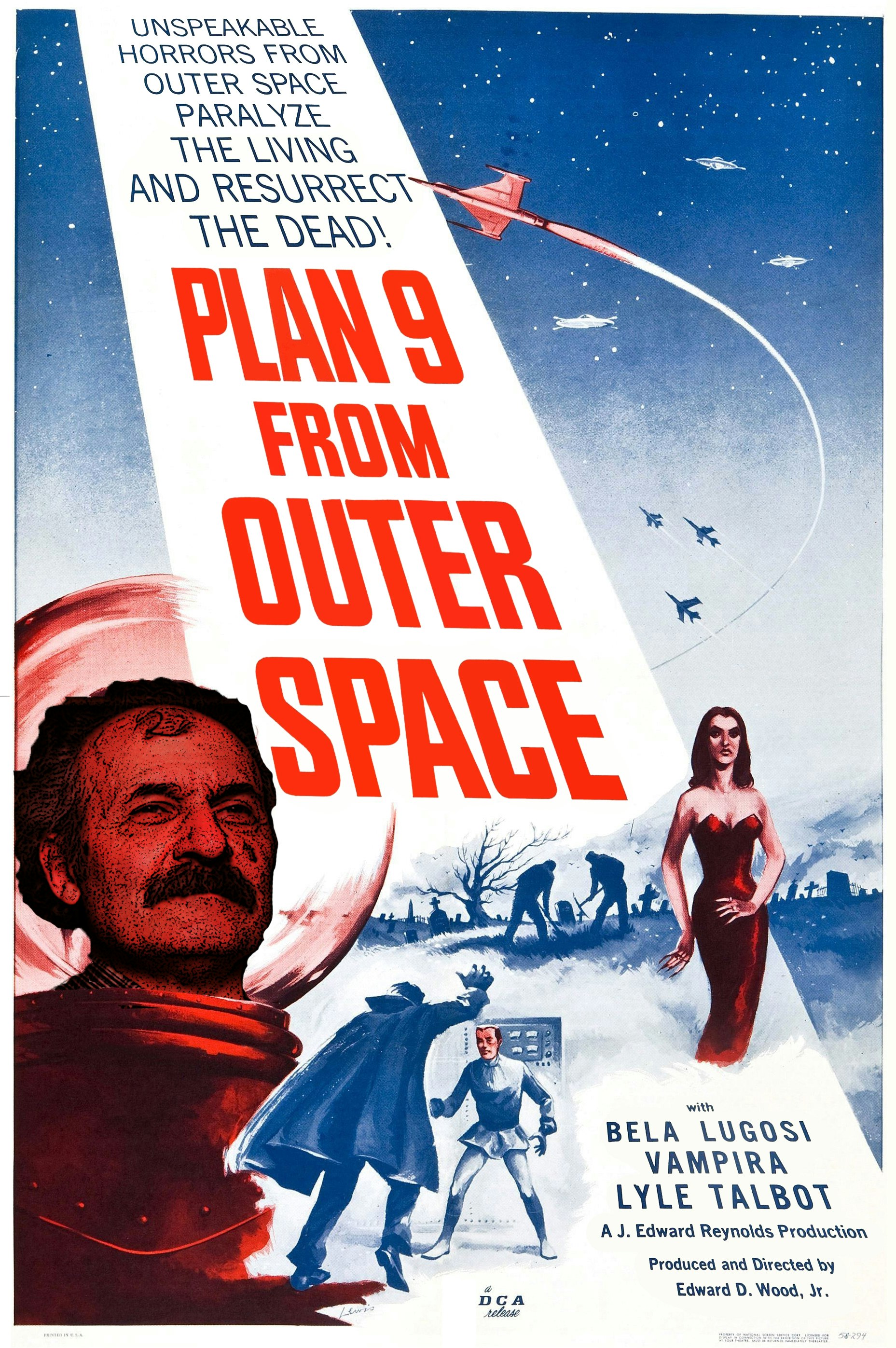
Edward Davis Wood Jr. died on December 10, 1978. Three days earlier, Wood and his wife Kathy had been evicted from their apartment on the corner of Cahuenga Boulevard and Yucca Street in Los Angeles. Carrying the few possessions they saved from the Dumpster (including an angora sweater and a copy of one of Wood’s final unproduced scripts, I Woke Up Early The Day I Died), the couple found a temporary home with a friend, actor Peter Coe. On the morning of December 10, Wood went into Coe’s bedroom to watch a football game. He never came out.
Kathy Wood later told biographer Rudolph Grey that shortly before Wood was found dead, she heard him calling out to her, complaining that he couldn’t breathe. She ignored his pleas, she said, because “He was always… telling me what to do,” and she figured he was just trying to get a reaction. But Ed Wood was never that good of an actor. By the time someone went to check on him, Wood was dead of a massive heart attack. He was just 54.
Wood’s death certificate is reprinted in Grey’s book, Nightmare Of Ecstasy: The Life And Art Of Edward D. Wood, Jr. It lists his birthdate, his Social Security number, and his cause of death (“arteriosclerotic cardiovascular disease”). It also includes information about his career; Wood was self-employed in the “Movie Industry,” a job he’d held for more than 30 years. Curiously, though, in the space for “Primary Occupation” it only names “Writer And Producer”—no mention of his career as a director of more than a dozen Z-grade exploitation and pornographic pictures. Even in death, Wood couldn’t get any respect.
Two years later, Wood finally received some recognition as a director, when The Golden Turkey Awards by Michael and Harry Medved declared him the worst filmmaker in history over the likes of William Beaudine, Herschell Gordon Lewis, and Phil Tucker. The “award” was bad, but the fact that Wood didn’t live long enough to see it—and perhaps profit off his work—was far worse.
In the wake of The Golden Turkey Awards, Wood became the consensus choice for the worst filmmaker ever, but the title doesn’t entirely fit. If there really is a “worst filmmaker ever,” that would be someone who proved too inept to complete a single feature; Wood eked out a living, albeit a meager one, on the outskirts of the film industry for decades. A truly awful filmmaker is a hired gun who only cares about money; Wood was a true cinephile and movie lover, and if he had any interest in financial security, he would have quit the movie business long before his untimely death. The real worst filmmaker ever would produce something no one wanted to watch; many of Wood’s films have been beloved by cultists for decades.
So Ed Wood wasn’t the worst filmmaker of all time. But he might have been the unluckiest. His life story is a series of missed opportunities and broken promises. He would prepare a film, and the financing would fall through. He’d plan a project for an actor, and the actor would die. He finally became famous two years after he died of a heart attack. He made what would become one of the most famous movies in history, then thoughtlessly sold the rights to it for a single dollar to pay his rent.
That film was Plan 9 From Outer Space, which was shot in 1956, but didn’t find its way into release until 1959. It was funded by the Baptist Church Of Beverly Hills in an ill-advised attempt to get into the motion-picture business. One of the church’s leaders, J. Edward Reynolds—Wood’s landlord, who later forgave a debt in exchange for the rights to Plan 9—couldn’t afford to make his dream project, a biopic about Billy Sunday, the famous evangelical Christian minister. Wood, who never let being unable to afford a project stop him from making it, convinced Reynolds to put his meager bankroll behind a science-fiction picture. The plan was to make Wood’s movie, then use the guaranteed profits from its inevitable success to fund the Billy Sunday film. But their plan went awry almost as quickly as the one in the dreadful film they produced.
The first red flag was Wood’s original title: Grave Robbers From Outer Space. Reynolds and his church found the concept of grave robbery sacrilegious, and forced Wood to change the name to Plan 9 From Outer Space. They also demanded that Wood and his crew get baptized, which they did—at a Jewish swimming pool in Beverly Hills. Why Reynolds didn’t also object to the film’s content, which still involved grave-robbing even after the title switch, remains a mystery.
The corpses from the robbed graves become zombies, a particularly fitting choice for a film whose leading man technically gave his performance from beyond the grave. Iconic horror star Bela Lugosi died in August 1956, just after shooting a few test scenes with Wood for a would-be comeback project called The Vampire’s Tomb. When Wood found the funding for Plan 9, he decided to build the entire movie around the Lugosi footage—even though it amounted to less than five usable minutes, none of it involving zombies.
Lugosi plays a grief-stricken man mourning for his late wife (Vampira, because of course Bela Lugosi would be married to a woman who dresses like a vampire). He quickly dies in a traffic accident and gets brought back to life as a zombie. Wood cobbled that much together from the stuff he shot with the real Lugosi. For the rest, Wood employed a body double—his wife’s chiropractor—to play Lugosi’s part. To complete the “illusion,” the man held a cape in front of his face. Why a zombie would wear a cape at all, much less use it to perpetually disguise his identity, also remains a mystery.

These zombies are controlled by the film’s antagonists, meddlesome aliens who arrive from a distant galaxy with a scheme as hilariously misguided as that of South Park’s Underpants Gnomes. Here’s how it works:
Phase 1: Reanimate the corpses of the recently dead, and use them to terrify California residents.
Phase 2: ?
Phase 3: Convince the people of Earth to destroy their nuclear weapons and live in peace.
Can you believe their plan doesn’t work? There are almost no holes in it at all!
Elements like these have made Plan 9 into an enduring favorite among bad-movie lovers for more than half a century. The film’s reputation as the “Worst Movie Of All Time” may be an exaggeration, but not a wild one. Much of the film is indeed awful. The sets are laughably cheap, interiors and exteriors don’t match, and Wood often cuts between day and night shots indiscriminately. With Lugosi dead and an uncooperative Vampira unwilling to do much more than stare menacingly at the camera, he was forced to give much of the early expository dialogue to Tor Johnson, a Swedish professional wrestler, whose English was so garbled, his lines are completely incomprehensible.
Still, Wood might have been better off when the viewers couldn’t make out what the characters were saying. The film is narrated by Criswell, a famous psychic prone to outlandish predictions, and his monologues and voiceovers are laced with amusing contradictions; as he tells it, the film is both about “future events” (“that will affect [us] all in the future”) and based on the “secret testimony of the miserable souls who survived this terrifying ordeal.” (He may, at that point, be speaking about the actors.) Airline pilot Jeff Trent (Gregory Walcott) describes the aliens’ spaceships as “cigar-shaped,” but when they appear onscreen, the ships look like standard-issue UFOs, which means this pilot either has very poor vision, or has never actually seen a cigar before. As the snooty aliens try to convince mankind’s representatives to repent their violent ways, they repeatedly insult their intelligence and “stupid minds.” They might have a point; any species that could create something as dumb as Plan 9 is probably not worthy of atomic power.

It’s hard to argue that Plan 9 From Outer Space is a misunderstood classic; it’d be easier to make that case around Glen Or Glenda, Wood’s deeply personal, intensely surreal essay film about transvestitism and angora fetishes. But there are some ways in which Plan 9 was clearly ahead of its time. It was a zombie movie a decade before George Romero popularized the creatures in Night Of The Living Dead, and it was a conspiracy-theory movie (“These things have been seen for years! They’re here, it’s a fact! And the public ought to know about it!”) more than five years before the Kennedy assassination. Its strange mix of genres (horror and science fiction and detective story and war film) with monsters mixed in (aliens and zombies and vampires) gives Plan 9 the feel of a fan film years before such works became an intrinsic part of popular culture.
Wood himself was ahead of his time as well. While modern fandom was still in its infancy, Wood was already a dyed-in-the-wool fanboy who loved pulp and trash and cast the stars of his favorites (like Lugosi) whenever he could. He was camp before camp was cool, and he made midnight movies before midnight movies existed. Like so many people today, who take to YouTube to document their lives with little to no discernible talent, Wood also felt an insatiable need to express himself—and even expose himself—onscreen. Even though Plan 9 isn’t Wood’s most personal film, it’s still loaded with his fears, frustrations, and obsessions.
Had Wood been born a few years later, he might have become a John Waters-like cult careerist. Like Waters, he loved pushing audiences’ buttons, and he maintained his own stock company of eccentric personalities. If he’d been born a few decades later, he could have been a viral-video superstar, making and promoting his movies outside the mainstream media. Even if Wood lived another 10 years, he would have been able to at least witness and enjoy his ascension to the ranks of the most infamous directors in history. Instead, he died homeless, penniless, and anonymous. It was a sad, stupid (Stupid! Stupid!) end, but a fitting one for one of cinema’s least fortunate trailblazers.
BREAKFAST AT TIFFANY'S (MAY, 2022)

On October 5, 1961, the Audrey Hepburn classic, Breakfast at Tiffany’s, premiered in New York. The film would go on to earn 5 Oscar nominations at the 34th Academy Awards, winning two honors for its music. The Hollywood Reporter’s original review is below:
An unusual love story, glamorous, sophisticated, with more than a touch of the bizarre. Breakfast at Tiffany‘s looks like a box office favorite. The Martin Jurow-Richard Shepherd production for Paramount has good names to add to its appeal, including an appealing performance by Audrey Hepburn. Blake Edwards directed.
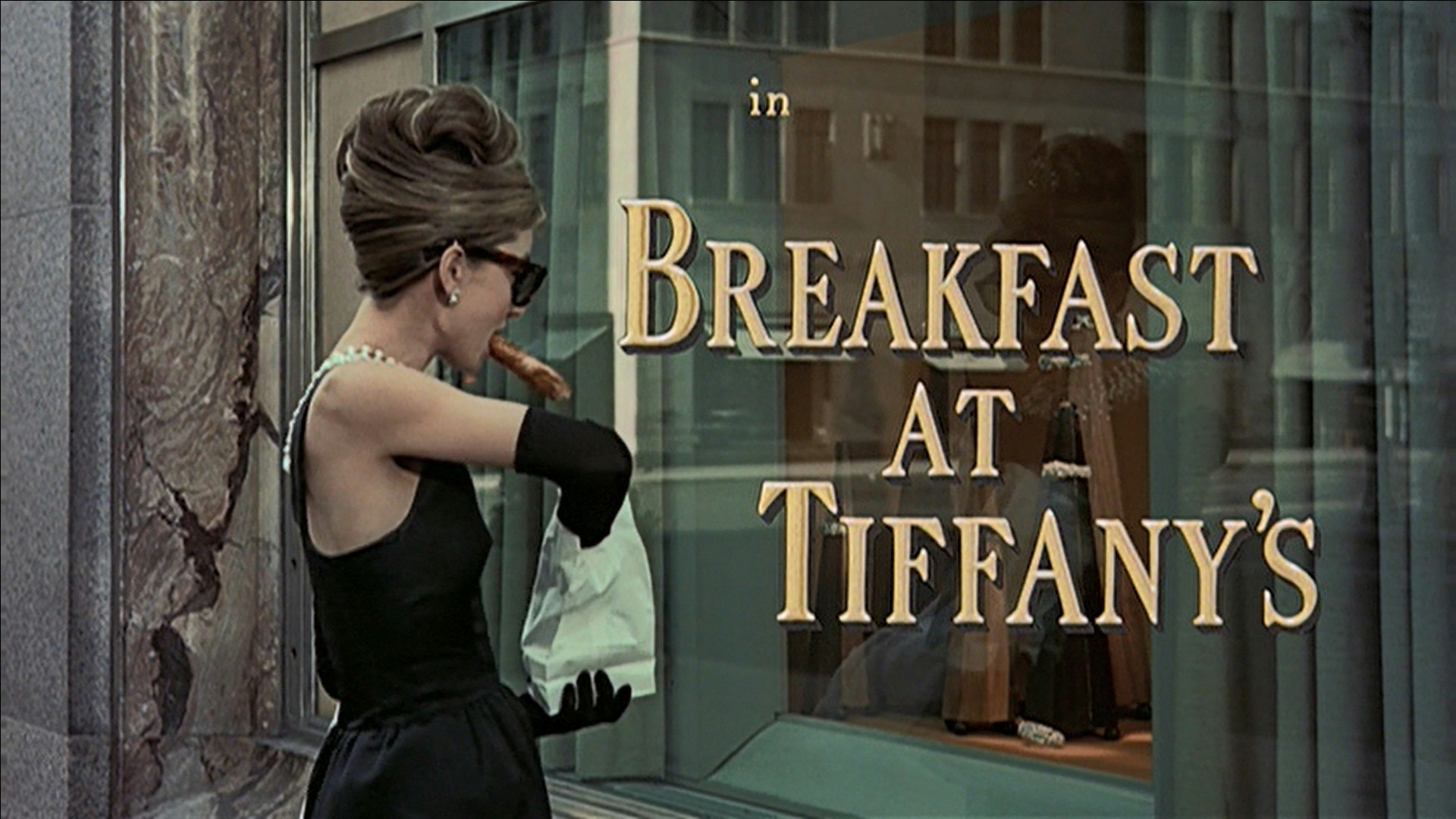
The film bears only a slight resemblance to the Truman Capote novelette on which it is based. Capote’s work was a minor tragedy. The screenplay by George Axelrod turned the story into a romantic comedy. It has suggestions of grimmer moments, but they are played now only for contrast for what is, eventually, a happy ending. It will be disappointing to admirers of the Capote work, but they are few in number compared to those who will be attracted to and enjoy the film.
Miss Hepburn plays the central figure, a woman like many others in Manhattan, who dresses well and dines well, living chiefly on the “ladies room” change given her by her escort. If the escort of the evening thinks a $50 “tip” pays for something later, this is not how Miss Hepburn plays it. She is, the picture makes clear, immoral but virtuous. Her values undergo a change from her exposure to George Peppard, a young writer, who convinces her responsibility is less confining than her studied irresponsibility.
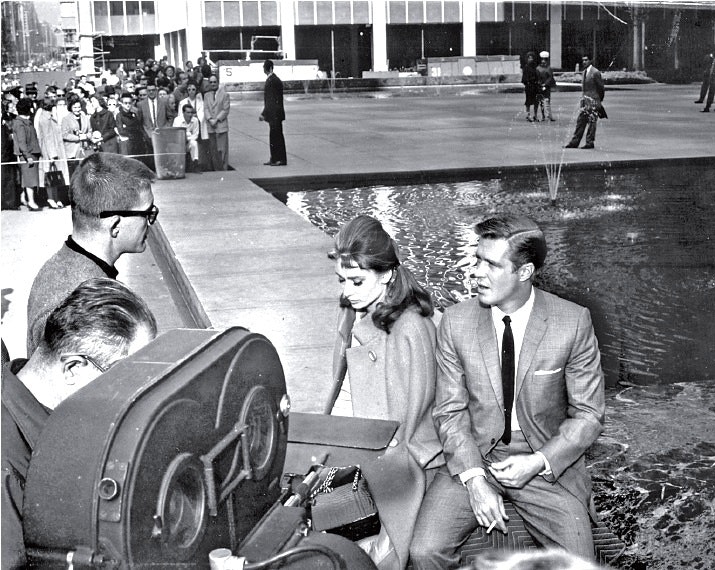
Edwards’ direction is smart; he has a way with fashionable comedy. Axelrod’s treatment of the Capote story is convincing in the changes it has made although some of his devices are disappointing, being overly familiar. The script is not altogether neat. No justification or explanation is ever made of why Peppard is being kept by a wealthy lady, except that he is a writer and writers, presumably, get involved in things like that.
Miss Hepburn is responsible to a great degree for the credibility of her complex character and gives a winning portrayal. Peppard virtually overcomes the script deficiencies in his character, because he is an exceptionally virile young leading man who achieves the aura of manliness without sweat. Patricia Neal is strong as Peppard’s lady friend. Martin Balsam gives a wonderfully flexible portrait of a Hollywood agent. Buddy Ebsen has charm as Miss Hepburn’s whilom husband. Mickey Rooney gives his customary all to the part of a Japanese photographer, but the role is a caricature and will be offensive to many. Others helpful include Villanoga, John McGiver, Dorothy Whitney, Stanley Adams, Elvira Allman and Alan Reed.
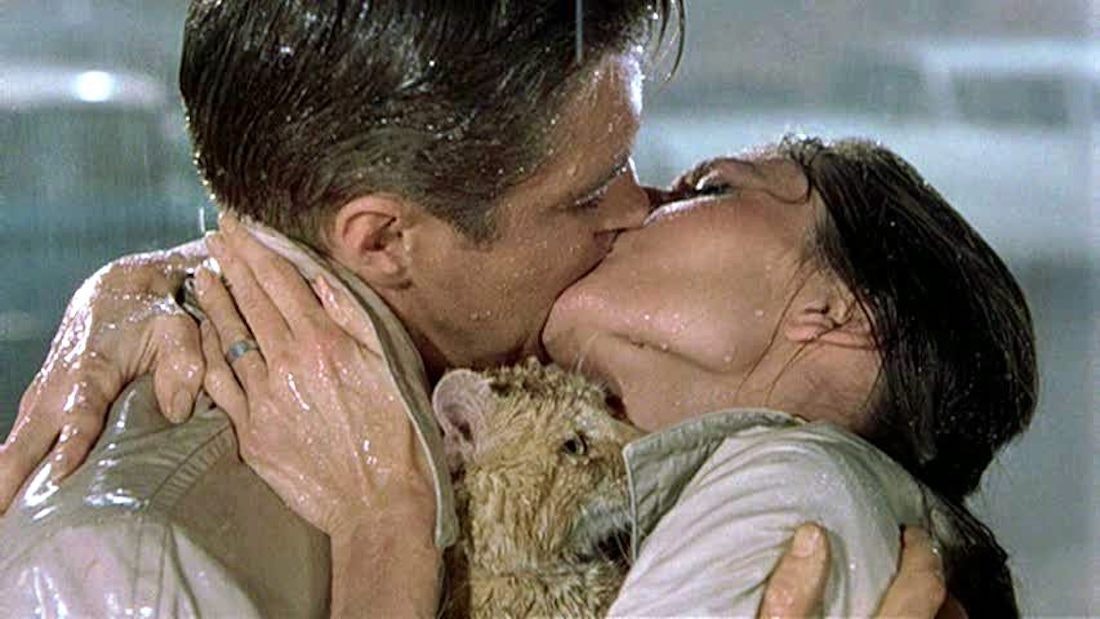
Franz Planer’s Technicolor photography is beautifully balanced, the color for once the same tones throughout, whether exteriors or studio shots. Hal Pereira and Roland Anderson have done imaginative settings, with good set decoration by Sam Comer and Ray Moyer. Sound by Hugo Grenzbach and John Wilkinson is first-rate, and William McGarry’s editing is excellent. Henry Mancini’s score is another plus. — James Powers, 1961
EAST OF EDEN (APRIL, 2022)
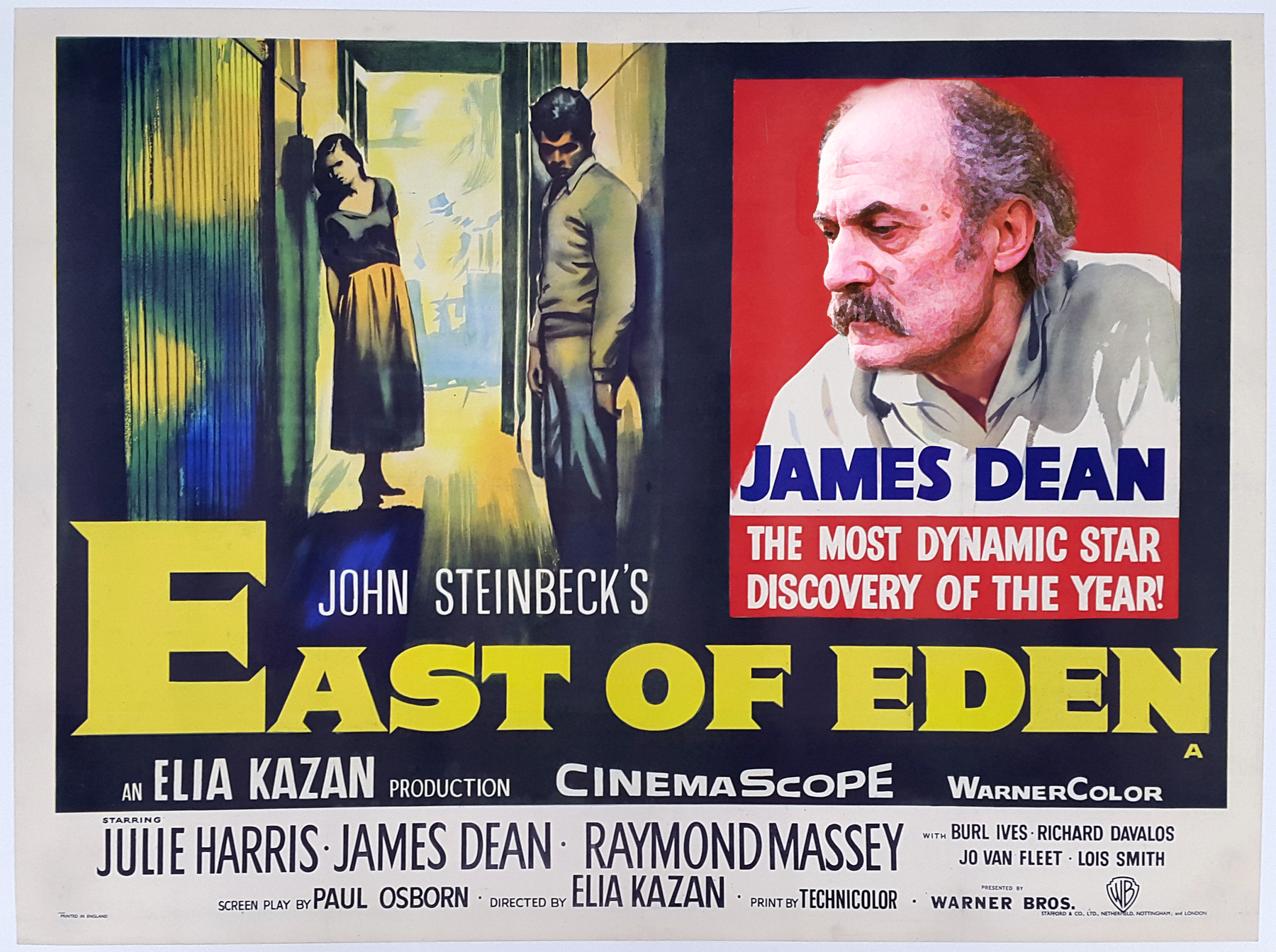
East of Eden earned considerable attention when it was released in 1955, for several reasons. It was directed by Elia Kazan, one of Hollywood’s most respected and innovative filmmakers, who was responsible for some of the more daring and well made studio films of the 1950s: On the Waterfront, A Streetcar Named Desire, Splendour in the Grass, and others. East of Eden can be included among his best work. The film was based on the second half of John Steinbeck’s novel of the same name, a popular bestseller which was meant as an allegory of the Book of Genesis, and the production of a film version inspired a great deal of anticipation.
What drew the most attention, then and now, was the casting of an enigmatic young stage actor named James Dean in a central role. East of Eden is known today primarily as Dean’s first movie and the source of his fame.
James Dean was recommended for the part by the film’s screenwriter, based on Dean’s performance on the New York stage the previous year in The Immoralist. Elia Kazan, who had seen James Dean on stage, agreed to meet with the young actor. Kazan found him annoying and surly, but also perfect for the role of Cal Trask, and Dean was hired after one audition.It was a wise decision, as James Dean is decidedly the highlight of the film. His Method acting techniques and uninhibited performing style cause him to stand out among the more conventional cast. His approach, which was then still uncommon in Hollywood, also irritated his colleagues, film actors who were unfamiliar with Dean’s cutting-edge theories, and put off by his intensity and aloof manner.
Kazan was known for encouraging off-stage relations among his actors which mirrored those of their characters. Since Dean’s character, Cal, was in conflict with most of the other characters, Dean’s abrasiveness worked to the film’s advantage. The situation did, however, make for off-camera tension, especially between Dean and his co-star, veteran film star Raymond Massey.
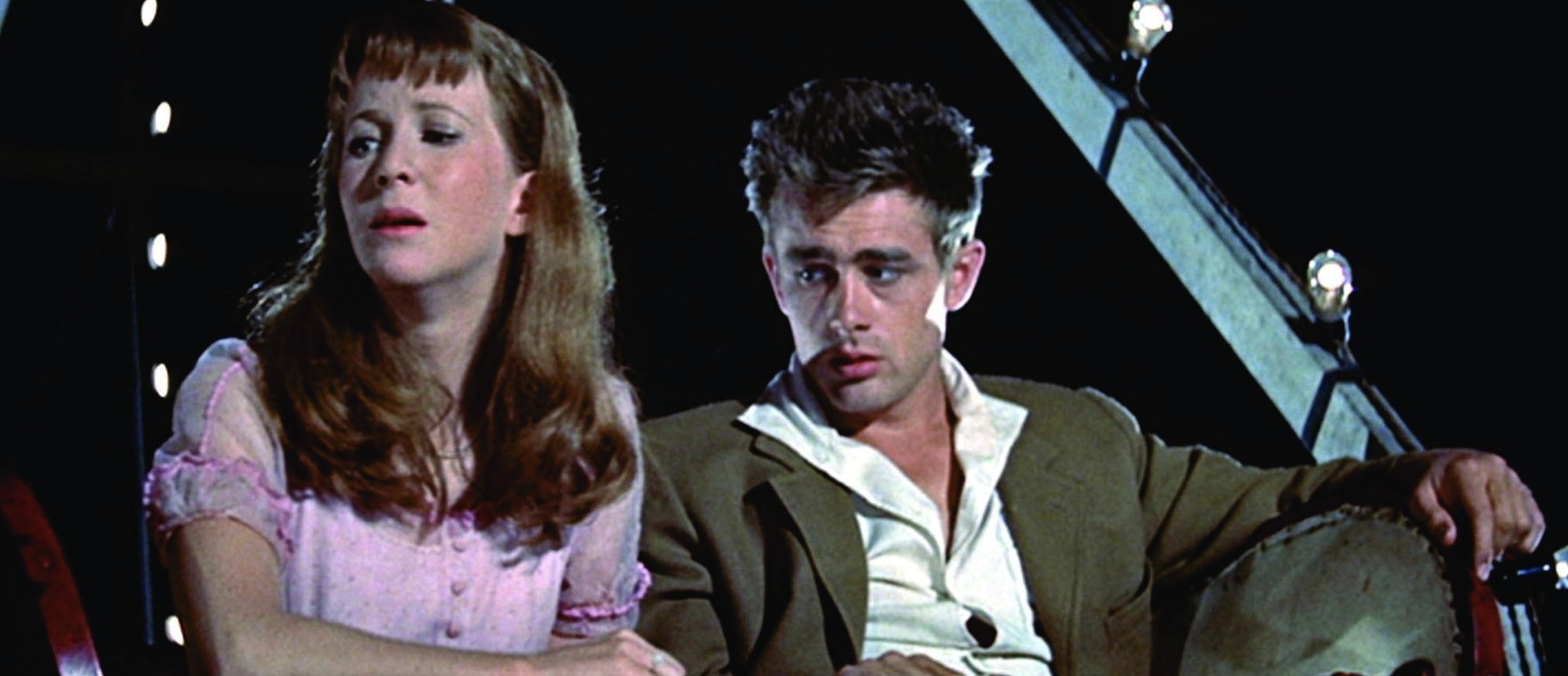
Set in 1917, East of Eden tells the story of fraternal twin brothers, Cal and Aaron Trask, who live with their father, Adam (Raymond Massey), on his farm in Salinas, California, a peaceful agricultural town. The boys’ mother, Kate (Jo Van Fleet), supposedly died when the twins were born. As the film begins, Cal has heard a rumour that his mother is still alive, had left her husband and children years before and gone to work in a brothel, which she now owns and manages. Cal is established as distraught, torn between the desire to meet his mother, and fear that the shameful rumour may be true.Cal travels to the nearby town of Monterey, stalking the very successful bawdy house, and finally stealing into Kate’s room to try and talk to her. Kate herself, implied to be a drug abuser as well as a madam, is horrified to see him, and has him thrown out. Cal’s cry of “Talk to me!” echoes his earlier plea to his stony and indifferent father.
The back story of Adam’s marriage to Kate and her flight from the family, part of Steinbeck’s novel, is not explored in any depth. Small details are revealed in conversation or through the attitude of the couple and those who knew them, suggesting just enough to explain Adam’s restraint.
The film follows Cal’s efforts to form a relationship with his mother, and to understand her situation; and at the same time deals with his failing attempts to earn the approval of his father, who strongly favours Cal’s more stolid brother, a rivalry that eventually leads the family to tragedy. The film establishes that Aaron, while more outwardly conventional, is a less dutiful son that Cal in reality, but is willing to accept and benefit from the position of favoured sibling. Meanwhile, Cal begins to suspect he has inherited his own inadequacies from his outcast mother.Determined to win his father’s approval, Cal secretly starts his own enterprise, growing and selling produce. When he offers his profits to his father, Adam rejects the gift. In anger and despair, Cal lashes out and prepares to leave town, causing Adam’s physical collapse. With the intervention of Aaron’s kind hearted wife, Cal and his father are finally reconciled.
James Dean’s Cal is by no means a typical Fifties male hero. Rather than stoic and strong, Cal is troubled, vulnerable, and emotionally fragile. He begs, weeps, and expresses uncertainty and a longing for affection, particularly from his cold and disapproving father. He is plagued with self-doubt and self-loathing, and convinced that he is naturally bad, cursed. It was an unusual choice of hero for the time, but the novelty and emotional depth of Dean’s performance attracted the attention and approval of contemporary audiences.
In spite of being essentially a mainstream studio film, East of Eden is a fascinating collaboration of varying types of creative talent, a remarkable showcase for James Dean’s now-legendary ability, and a slice of Hollywood history.
THE BATTLE OF ALGIERS (APRIL, 2022)
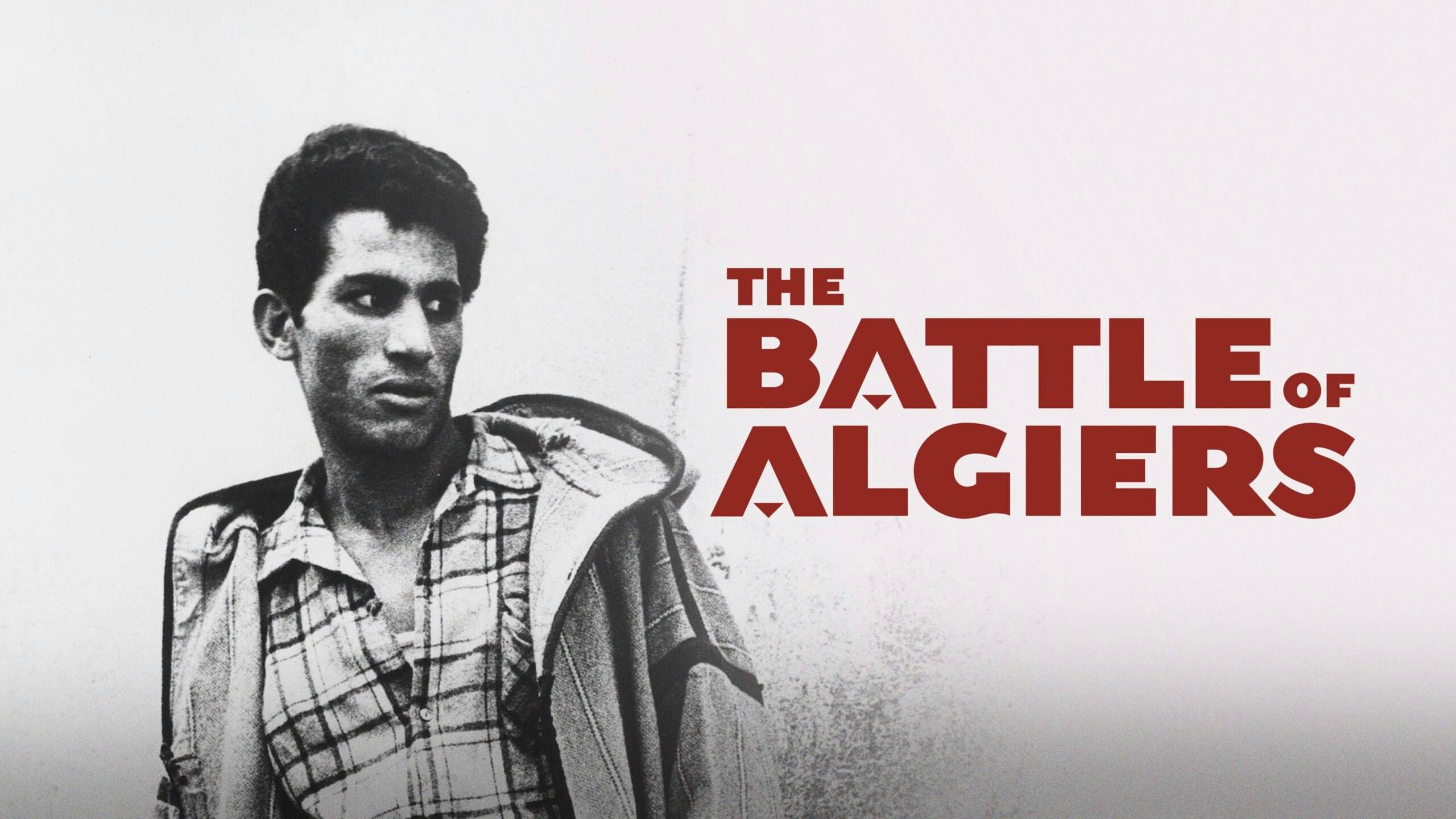
At the height of the street fighting in Algiers, the French stage a press conference for a captured FLN leader. "Tell me, general," a Parisian journalist asks the revolutionary, "do you not consider it cowardly to send your women carrying bombs in their handbags, to blow up civilians?" The rebel replies in a flat tone of voice: "And do you not think it cowardly to bomb our people with napalm?" A pause. "Give us your airplanes and we will give you our women and their handbags."
"The Battle of Algiers," a great film by the young Italian director Gillo Pontecorvo, exists at this level of bitter reality. It may be a deeper film experience than many audiences can withstand: too cynical, too true, too cruel and too heartbreaking. It is about the Algerian war, but those not interested in Algeria may substitute another war; "The Battle of Algiers" has a universal frame of reference.
Pontecorvo announces at the outset that there is "not one foot" of documentary or newsreel footage in his two hours of film. The announcement is necessary, because the film looks, feels and tastes as real as Peter Watkins' "The War Game." Pontecorvo used available light, newsreel film stock and actual locations to reconstruct the events in Algiers. He is after actuality, the feeling that you are there, and he succeeds magnificently; the film won the Venice Film Festival and nine other festivals, and was chosen to open the New York Film Festival last November.
Some mental quirk reminded me of "The Lost Command," Mark Robson's dreadful 1965 film in which George Segal was the Algerian rebel and Anthony Quinn somehow won for the French. Compared to "The Battle of Algiers," that film and all Hollywood "war movies" are empty, gaudy balloons.
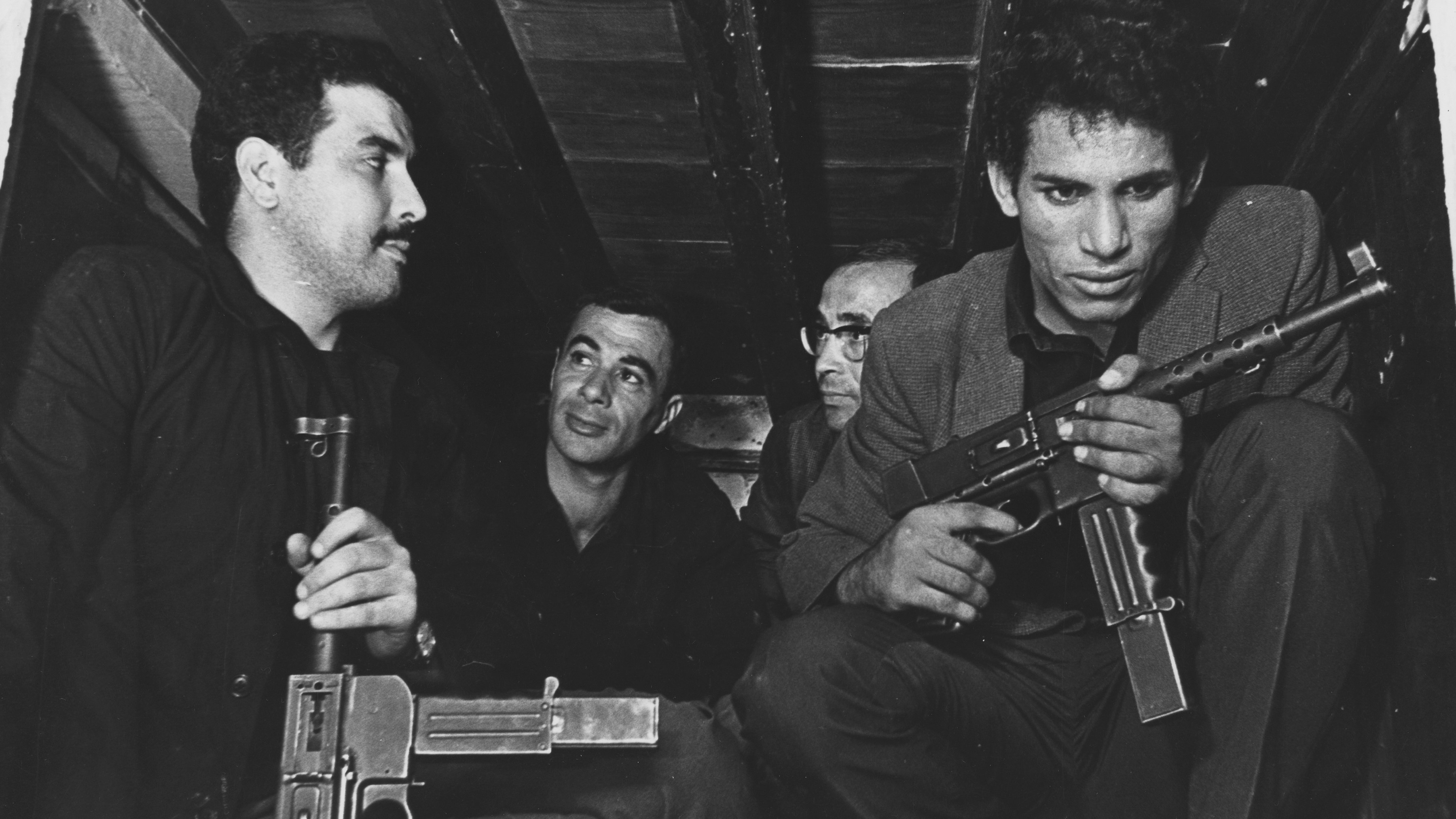
Pontecorvo has taken his stance somewhere between the FLN and the French, although his sympathies are on the side of the Nationalists. He is aware that innocent civilians die and are tortured on both sides, that bombs cannot choose their victims, that both armies have heroes and that everyone fighting a war can supply rational arguments to prove he is on the side of morality.
His protagonists are a French colonel (Jean Martin), who respects his opponents but believes that ruthless methods are necessary, and Ali (Brahim Haggiag), a petty criminal who becomes an FLN leader. But there are other characters: an old man beaten by soldiers; a small Arab boy attacked by French civilians who have narrowly escaped bombing; a cool young Arab girl who plants a bomb in a cafe and then looks compassionately at her victims, and many more.
The strength of the film, I think, comes because it is both passionate and neutral, concerned with both sides. The French colonel (himself a veteran of the anti-Nazi resistance), learns that Sartre supports the FLN. "Why are the liberals always on the other side?" he asks. "Why don't they believe France belongs in Algeria?" But there was a time when he did not need to ask himself why the Nazis did not belong in France.
ROGER EBERT, 1968
THE WAGES OF FEAR (MARCH, 2022)
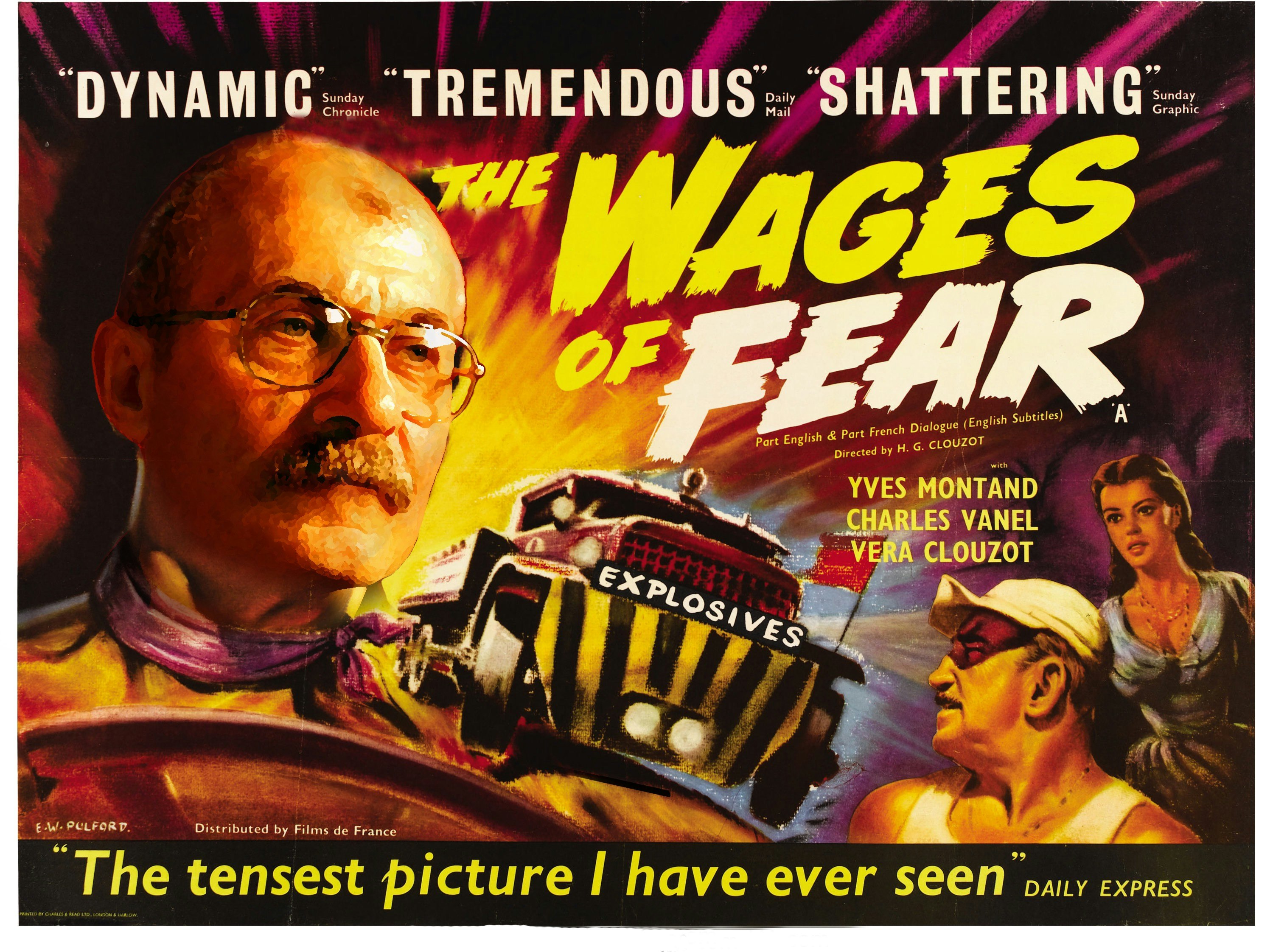
When the great French thriller "The Wages of Fear" (1953) was first released in America, it was missing parts of several early scenes -- because it was too long, the U.S. distributors said, and because they were anti-American, according to the Parisian critics.
Now that the movie is available for the first time in the original cut of director Henri-Georges Clouzot, it is possible to see that both sides have a point.
The film's extended suspense sequences deserve a place among the great stretches of cinema. Four desperate men, broke and stranded in a backwater of Latin America, sign up on a suicidal mission to drive two truckloads of nitroglycerin 300 miles down a hazardous road. They could be blown to pieces at any instant, and in the film's most famous scene Clouzot requires them to turn their trucks around on a rickety, half-finished timber platform high above a mountain gorge.
Their journey also requires them to use some of the nitroglycerin to blow up a massive boulder in the road, and at the end, after a pipeline ruptures, a truck has to pass through a pool of oil that seems to tar them with the ignominy of their task. For these are not heroes, Clouzot seems to argue, but men who have valued themselves at the $2,000 a head that the oil company will pay them if they get the nitro to the wellhead where it is needed.
The company, which significantly has the same initials as Standard Oil, is an American firm that exploits workers in the unnamed nation where the film is set. The screenplay is specific about the motives of the American boss who hires the truck drivers: "They don't belong to a union, and they don't have any relatives, so if anything happens, no one will come around causing trouble." There are other moments when the Yankee capitalists are made out as the villains, and reportedly these were among the scenes that were trimmed before the film opened in this country.
The irony is that the trims have been restored at a time when they have lost much of their relevance, revealing that the movie works better as a thriller than as a political tract, anyway. The opening sequence, set in the dismal village where unemployed men fight for jobs, is similar to the opening of John Huston's "The Treasure of the Sierra Madre" (1948), even down to the detail of visiting the local barber. But while Huston used his opening to establish his characters and work in some wry humor, Clouzot creates mostly aimless ennui.
Although eager to establish his anti-American subtext, he reveals himself as a reactionary in sexual politics with the inexplicable character of Linda (Vera Clouzot), who does menial jobs in the saloon. She is in love with one of the local layabouts (Yves Montand, in his first dramatic role), who slaps her around and tells her to get lost, and she spends most of her time sprawled on the ground, although always impeccably made up. There is no apparent purpose for this character, apart from the way she functions to set up such lines as, "Women are no good." If the opening sequences, now restored, have a tendency to drag, the movie is heart-stopping once the two trucks begin their torturous 300-mile journey to a blazing oil well. The cinematographer, Armand Thirard, pins each team of men into its claustrophobic truck cab, where every jolt and bump in the road causes them to wince, waiting for a death that, if it comes, will happen so suddenly they will never know it.
Clouzot does an especially effective job of setting up the best sequence, where first one and then the other truck has to back up on the unstable wooden platform in order to get around a hairpin bend in the trail. The first truck is used to establish the situation, so we know exactly what Montand is up against when he arrives at the scene: Rotten timbers break, the truck begins to slide sideways, a steel support cable gets caught on the side of the truck, and we are watching great technical work as it creates great fiction.
When William Friedkin remade "The Wages of Fear" as "Sorcerer" in 1977, he combined this scene with a later one, in a jungle setting, to create a sequence where a truck wavers on a vast, unstable suspension bridge. Friedkin had greater technical resources, and his sequence looks more impressive, but Clouzot's editing selects each moment so correctly that you can see where Friedkin, and a lot of other directors, got their inspiration.
One thing that establishes "The Wages of Fear" as a film from the early 1950s, and not from today, is its attitude toward happy endings. Modern Hollywood thrillers cannot end in tragedy for its heroes, because the studios won't allow it. "The Wages of Fear" is completely free to let anything happen to any of its characters, and if all four are not dead when the nitro reaches the blazing oil well, it may be because Clouzot is even more deeply ironic than we expect. The last scene, where a homebound truck is intercut with a celebration while a Strauss waltz plays on the radio, is a reminder of how much Hollywood has traded away by insisting on the childishness of the obligatory happy ending.
Roger Ebert, 1992
LETTER FROM AN UNKOWN WOMAN (MARCH, 2022)
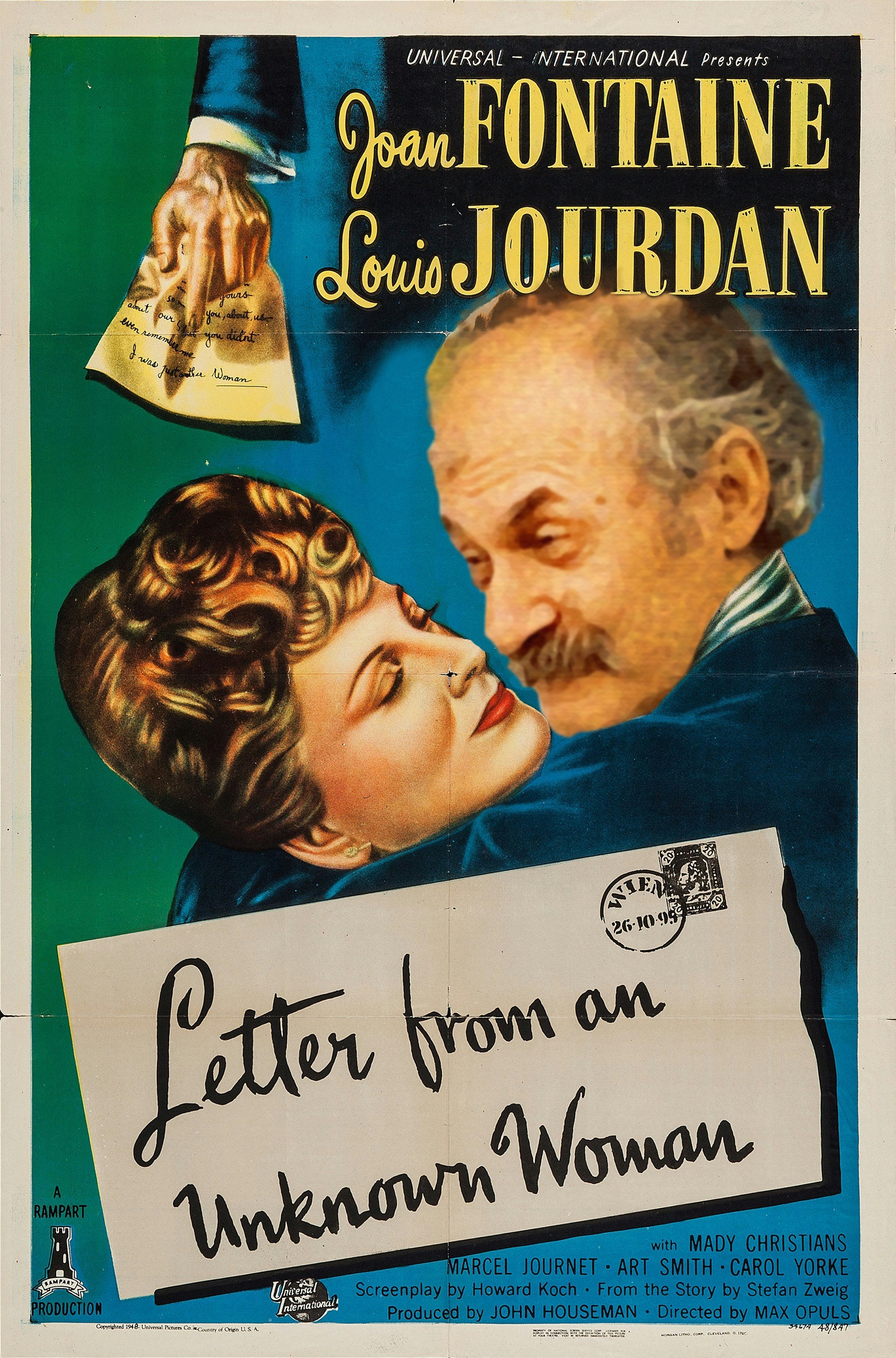
Why you should see Max Ophüls's reissued 1948 classic

You should never take memory for granted. After all, remembrance is not a reliable scientific process helping us to understand the past. It can be simply the projection of our wishes, the thing that has made us walk crookedly all these years when we believed we were upright and straightforward.
Take Letter from an Unknown Woman, made by Max Ophüls in 1948, and now brought back in lustrous restoration by the BFI. You should see it, of course, just because it is Ophüls, because John Houseman produced it and Howard Koch adapted it from the Stefan Zweig novella. These are all first-rate contributors – then there is Franz Planer, who shot its Vienna of 1900; there is Travis Banton, a drunk on the slide, fired by Paramount and Fox, but able to design one more great costume picture. And the film has Joan Fontaine and Louis Jourdan in the leads – they are good, of course, but they seem to have switched roles. When I first saw the film – at eight, I suppose (too young, but my mother had taken me) – Fontaine was emphatically the lead. It was a film about her, Lisa (or about my mother and me). Now I can see that it's a movie about Jourdan's character, Stefan Brand.
Lisa lives with her mother in Vienna in an apartment in a courtyard of flats. She is 16 and Banton does miracles to make Fontaine (actually 30) feel that age – but all the clothes he gives her are just adornment to her complete embodiment of a helplessly romantic teenager. A man moves into another flat in the courtyard – Stefan, a concert pianist, handsome, vain, self-centred. And Lisa falls in love with him from a distance, the kind of uncritical love that appealed to a boy of seven or eight.
But Lisa's mother finds a second husband. The new family moves to Lind, to Lisa's chagrin. So as soon as she is old enough, she goes back to Vienna and gets a job modelling in a clothes shop. She hangs around near the old courtyard until Stefan notices her. He is at a crisis point, one she identifies. He has had too rapid a rise as a pianist but he knows it came too easily. His music has not found itself yet, and if it counts on his character rescuing it, then it may be lost. Decadence and repetition are creeping into his act.
He does not remember Lisa, the kid. But he takes up the young woman, and in a beautiful, prolonged nocturnal sequence he woos her – and begins to find himself – before taking her back to his apartment, in her old building, for the one thing he measures women by. There is a brief affair but then he has to go off to Milan for a concert. He will be back in two weeks, he says. She is at the station to see him go, in agony. He forgets her again, and she never tells him she is pregnant from their romance. She does not hold it against Stefan. But she finds an older man – decent, honourable and interesting – who will marry her and who longs for her son to call him "Father".
In 1948 or 49, whenever my mother took me to see the film, I fell in love with it as our picture on the wall. The boy sleeps in the mother's bed, and he yearns to have a father. I understood those things – you see, the film was unsuitable for me, yet a key to understanding. And I saw Joan Fontaine as a breathtakingly classy and dream-like version of a perfect mother – why not? Movies were made like that in 1948. Well, one evening at the Magic Flute, Lisa and her husband see Stefan. He has changed; there is grey in his black hair. He is now the former pianist – a man of the world and many affairs, a glib piano-player who hardly plays, a wastrel. In Louis Jourdan's performance, I notice how his way of talking has changed. The younger Stefan was boyish, eager and open. Ten years later, the man is filled with self-loathing and fake ironies. But Lisa cannot see this decline – or if she does, she cannot see any other course than try to rescue the man.
She offers herself to him again – but he can't remember her. This is tricky to manage in a movie where the imagery is so immense and so radiant and the action is only 90 minutes. But Jourdan does it very well. He is fuddled. He uses other people so much as mirrors that he does not notice them for themselves. It is clear that he is entirely unworthy of her adoration or infatuation.
I won't tell you how the story ends – that would be unfair, though I think if you see the film afresh now, you will feel that the melodrama is a little heavy-handed at the end. But we have known all along that Stefan's perilous thin-ice life has let him be challenged to a duel, and we gather that he is not expected to survive. Indeed, he plans to be away before dawn – he has a manservant (played by Art Smith) vital to the whole story. His escape is only prevented because he receives a long letter, a letter from an unknown woman. When he starts to read it, the story it contains dooms him.
This was always a Hollywood film, produced by William Dozier, who was married to Joan Fontaine at the time. No matter that the story concerns a pianist, it has a lavish score (by Daniele Amfitheatrof) making ample use of the plaintive solo violin that tells your heart to be ready to break. The "Vienna" is well rendered – as befits Alexander Golitzen, the head of design at Universal at the time.
The chief problem now in watching the film is how Fontaine's heroine has dated. Her infatuation with Stefan is not just for him but for the whole scheme of infatuation. Neither does it have any back-up in a portrait of Lisa that knows her neurotic problems, her unduly sheltered life or her vibrant sense of unreality. There may have been women as infatuated in Vienna in 1900, in the world of 1948, or in 2010. That doesn't help the way in which the character now comes across as feeble or empty-headed. She is prepared to surrender her imagination to Stefan now in ways that strike us as archaic and disastrous. Surely the woman at the end has seen through his masquerade. Surely she has more on her mind than to be his adoring victim.
Fontaine was widely praised for her performance at the time – for the ease with which she goes from the kid to a sophisticated woman. But the performance looks posed and mannered now, as if a mother was absolutely confident that she played with her young son, and that he swallowed her idealised but destructive version of what love is. The mother and son do not come out of the experience well – to put it mildly. And in part, that's the foolish dictate of melodrama. The whole thing needs a different ending, one in which the son might see the mother's stupid error.
But that's asking for a lot. So Fontaine has to be taken carefully now. But Jourdan's lothario has improved beyond belief. Jourdan was actually two years younger than Fontaine – I wonder if he dared tease her. But both of them had been put under contract by David O Selznick (Jourdan had been in the resistance during the war) – and thus they were loaned out for Letter from an Unknown Woman.
Fontaine flourished briefly. She was outstanding as the "I" figure in Rebecca, just missing an Oscar. But then the Academy caught up with her on Suspicion. She was a romantic lead until the mid-50s, but not much longer, and she was – is – the sister of Olivia de Havilland.
Louis Jourdan did less well: he was the groom in Hitchcock's The Paradine Case and Rodolphe, opposite Jennifer Jones, in Madame Bovary. Ten years later, he had a hit as the man in Gigi. And here's the remarkable thing: he and Fontaine are still alive – aged 92 and 90. Stefan Brand was his great performance – filled with self-hatred and unease – but I'm sure in 1948 he guessed he would be hardly noticed next to Fontaine. I talked to Jourdan once; he was a very handsome man still at 70, intelligent, hushed and somehow broken – he had had a son who had killed himself. I think he knew reasons for being out of love with himself. But of course, in 1948, there was only one place to be in a film – that was "in love", so any idiot in the audience could be swept along on the glib music.
David Thomson, 2010
To join our mailing list email us at:
info@cine-real.com
BURDEN OF DREAMS (February, 2022)
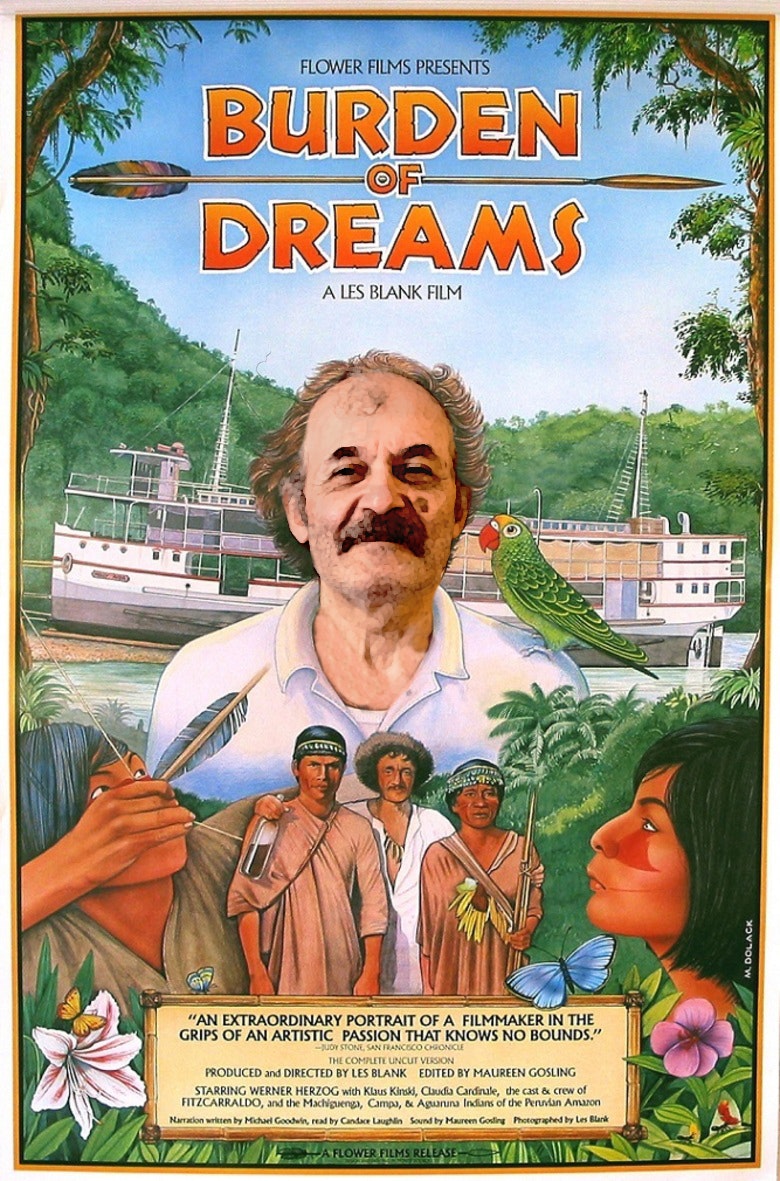
Les Blank's "Burden of Dreams" is one of the most remarkable documentaries ever made about the making of a movie. There are at least two reasons for that. One is that the movie being made, Werner Herzog's "Fitzcarraldo," involved some of the most torturous and dangerous on-location shooting experiences in film history. The other is that the documentary is by Les Blank, himself a brilliant filmmaker, who is unafraid to ask difficult questions and portray Herzog, warts and all.
The story of Herzog's "Fitzcarraldo" is already the stuff of movie legend. The movie was shot on location deep within the rain forests of South America, one thousand miles from civilization. When the first version of the film was half-finished, its star, Jason Robards, was rushed back to New York with amoebic dysentery and forbidden by his doctors to return to the location. Herzog replaced Robards with Klaus Kinski (star of his "Aguirre, the Wrath of God"), but meanwhile, co-star Mick Jagger left the production because of a commitment to a concert tour. Then the Kinski version of "Fitzcarraldo" was caught in the middle of a border war between tribes of Indians. The whole production was moved twelve hundred miles, to a new location where the mishaps included plane crashes, disease, and attacks by unfriendly Indians. And all of those hardships were on top of the incredible task Herzog set himself to film: He wanted to show his obsessed hero using teams of Indians to pull an entire steamship up a hillside using only block and tackle!
Blank and his associate, Maureen Gosling, visited both locations of Herzog's film. Their documentary includes the only available record of some of the earlier scenes with Robards and Jagger. It also includes scenes in which Herzog seems to be going slowly mad, blaming the evil of the jungle and the depth of his own compulsions. In "Fitzcarraldo," you can see the incredible strain as men try to pull a steamship up a sharp incline, using only muscle power and a few elementary principles of mechanics. In "Burden of Dreams," Blank's camera moves back one more step, to show the actual mechanisms by which Herzog hoped to move his ship. A giant bulldozer is used to augment the block-and-pulley, but it proves barely equal to the task, and at one point the Brazilian engineer in charge of the project walks off, warning that lives will be lost.
What drives Herzog to make films that test his sanity and risk his life and those of his associates? Stanley Kauffmann, in the New Republic, argued that, for Herzog, the purpose of film is to risk death, and each of his films is in some way a challenge hurled at the odds. Herzog has made films on the slopes of active volcanoes, has filmed in the jungle and in the middle of the Sahara, and has made films about characters who live at the edges of human achievement. "Burden of Dreams" gives us an extraordinary portrait of Herzog trapped in the middle of one of his wildest dreams.
Roger Ebert, 1982
Werner Herzog Eats his Shoe - A film by Les Blank

To join our mailing list email us at:
PAPER MOON (JANUARY, 2022)
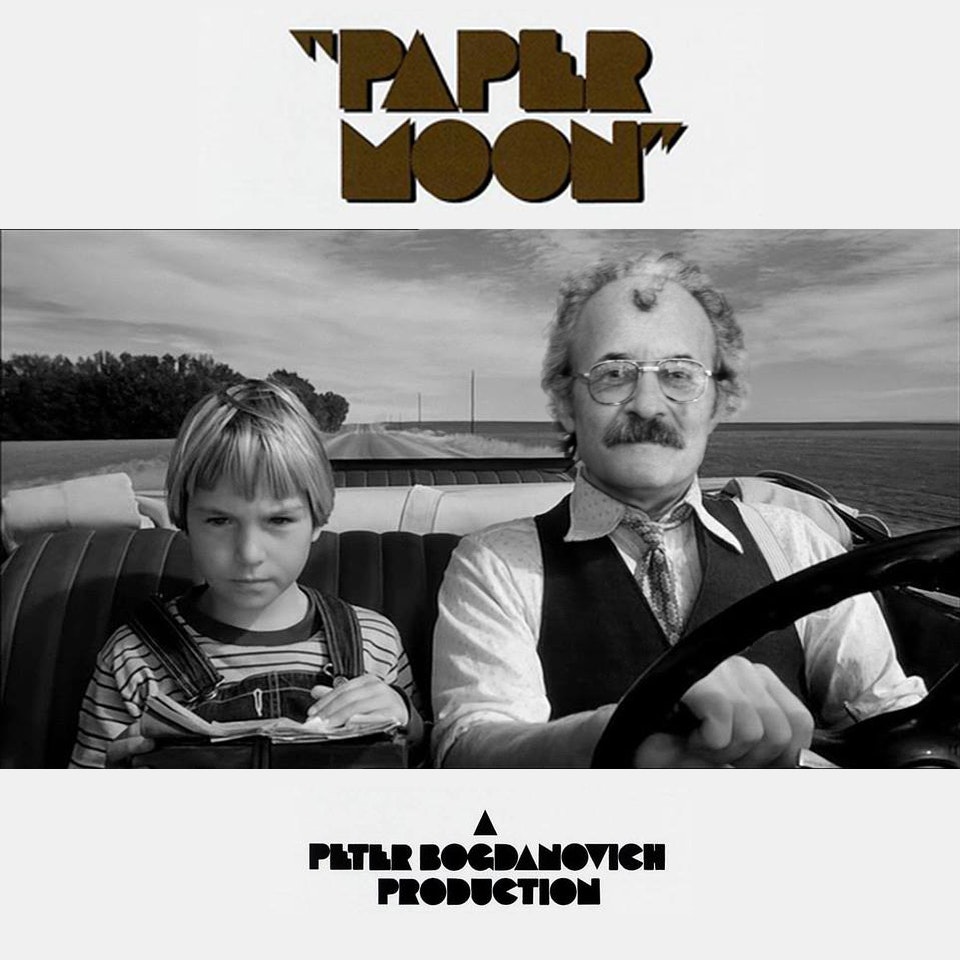
The two kinds of Depression-era movies we remember best are the ones that ignored the Depression altogether and the ones like “The Grapes of Wrath” that took it as a subject. Peter Bogdanovich’s “Paper Moon” somehow manages to make these two approaches into one, so that a genre movie about a con man and a little girl is teamed up with the real poverty and desperation of Kansas and Missouri, circa 1936. You wouldn’t think the two approaches would fit together, somehow, but, they do, and the movie comes off as more honest and affecting than if Bogdanovich had simply paid tribute to older styles. Maybe that’s why Addie Loggins, the little girl, hardly ever smiles: She can see perfectly well there’s nothing to smile about. The movie opens at her mother’s funeral on a windswept plain. Her mother (we learn from an old photograph) was a flapper of the worst sort, but Addie is a tomboy in overalls and a flannel shirt. At the last moment, an old car comes rattling up and discharges one Moses Pray, con man, alleged Bible salesman and just possibly Addie’s father. He promises to deliver the child to relatives in St. Joe, mostly so he can collect $200 in blackmail money.
But then the 9 year-old girl, who somehow resembles Huckleberry Finn more than any little boy I can imagine, turns out to be the more clever con man, and before long they’re selling Bibles to widows who are told their husbands ordered them - deluxe editions with the names embossed in gold, of course - before “passing on.” The movie is about two con artists, but not really about their con, and that’s a relief. We’ve seen enough movies that depended on the cleverness of confidence tricks - not only 1930s movies, but right down to the recent “The Flim-Flam Man.” No, Bogdanovich takes the con games only as the experience which his two lead characters share and which draws them together in a way that’s funny sometimes, but also very poignant and finally deeply touching.
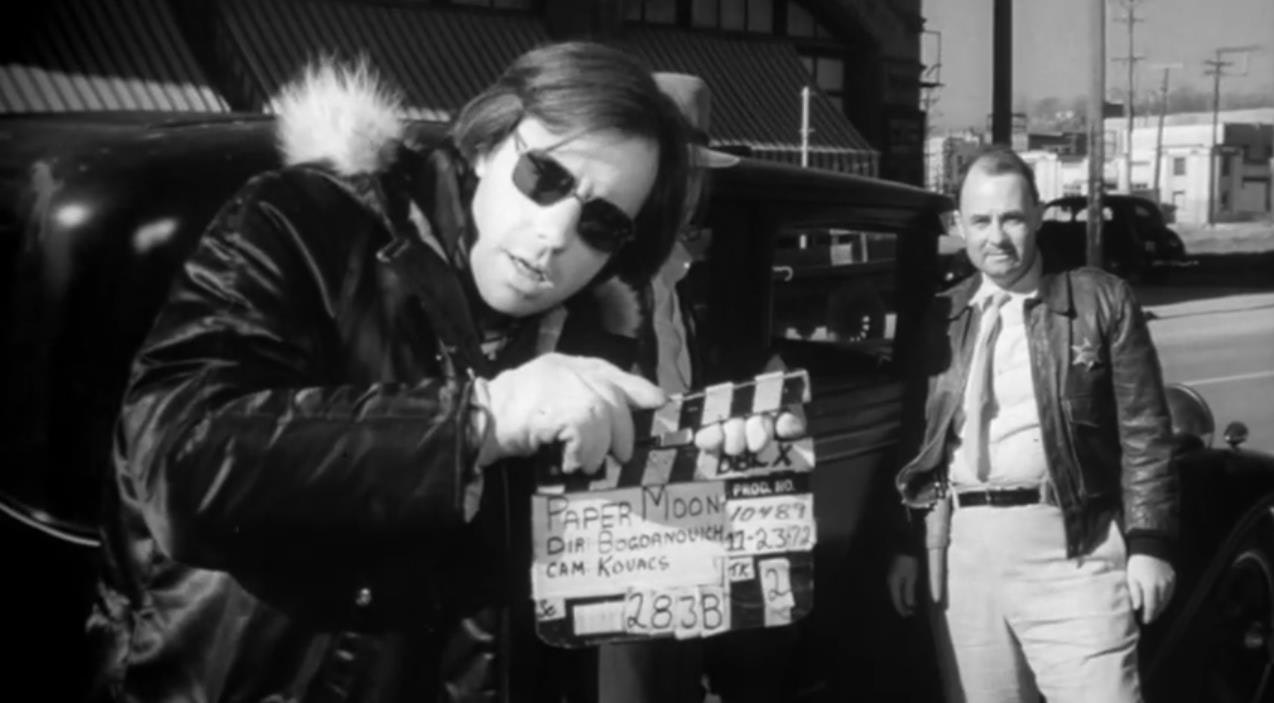
By now everybody knows that Ryan O’Neal and his real-life daughter, Tatum, play the man and the girl. But I wonder how many moviegoers will be prepared for the astonishing confidence and depth that Tatum brings to what’s really the starring role. I’d heard about how good she was supposed to be, but I nevertheless expected a kind of clever cuteness, like we got from Shirley Temple or young Elizabeth Taylor. Not at all. Tatum O’Neal creates a character out of thin air, makes us watch her every moment and literally makes the movie work (in the sense that this key role had to be well played). She has a scene in a Kansas hotel, for example, that isn’t at all easy. Moses has picked up a tart from a sideshow, one Trixie Delight by name, and has designs on her. Addie is jealous and makes a liaison with Trixie’s young black maid, Imogene (wonderfully played by P. J. Johnson). Together they concoct a scheme to lure the hotel clerk into Trixie’s room and then inform Moses.
Now this could have been a hotel-corridor farce scene, as Bogdanovich demonstrated he could direct quite well in “What’s Up, Doc?” But this time, the scene is played for pathos and for the understanding of the child’s earnestness, and the two young girls are perfectly matched to it.
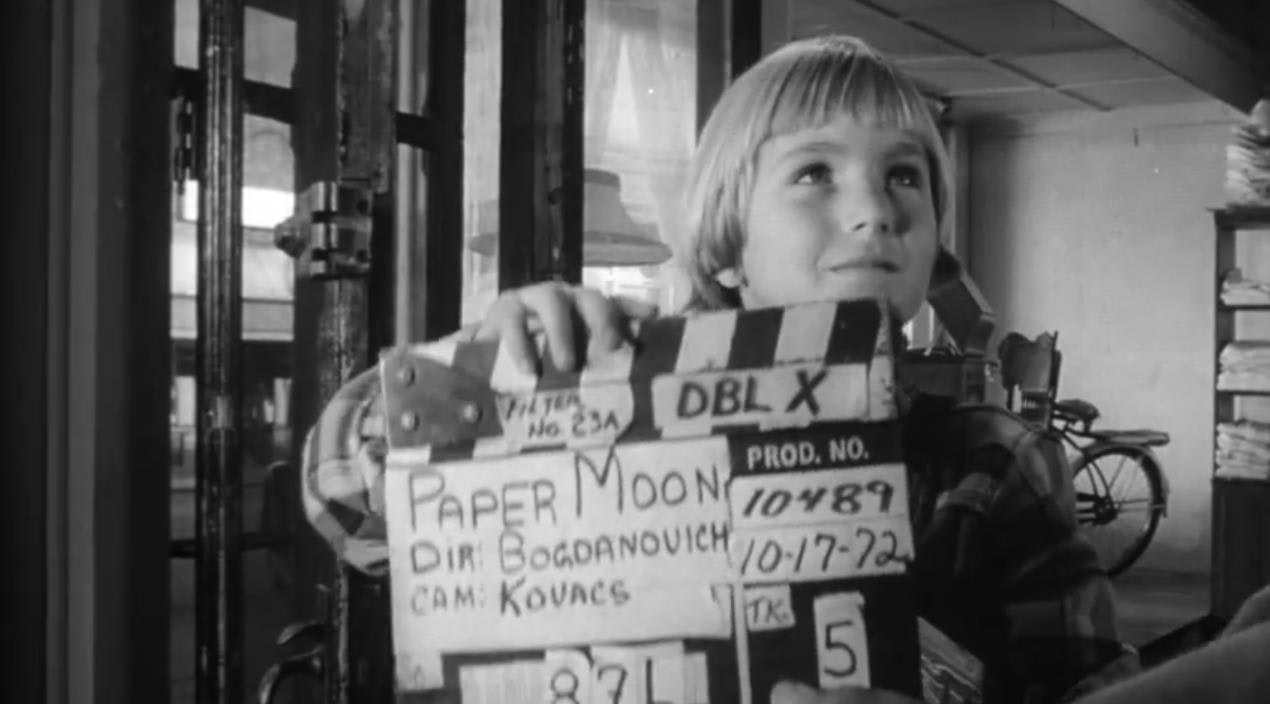
“Paper Moon” doesn’t come off, then, as a homage to earlier beloved directors and styles (as Bogdanovich’s “What’s Up, Doc?” did - and his “The Last Picture Show,” to a smaller extent). No, it achieves something quite different: a period piece that uses generic conventions only when they apply, so that we see the Depression through the eyes of characters who are allowed to be individuals. Whatever Addie and Moses do in this movie, we have the feeling it’s because they want to (or have to) and not that the ghost of some 1930s screenwriter is prompting them.
Roger Ebert, 1973
SUNSET BOULEVARD (NOVEMBER, 2021)
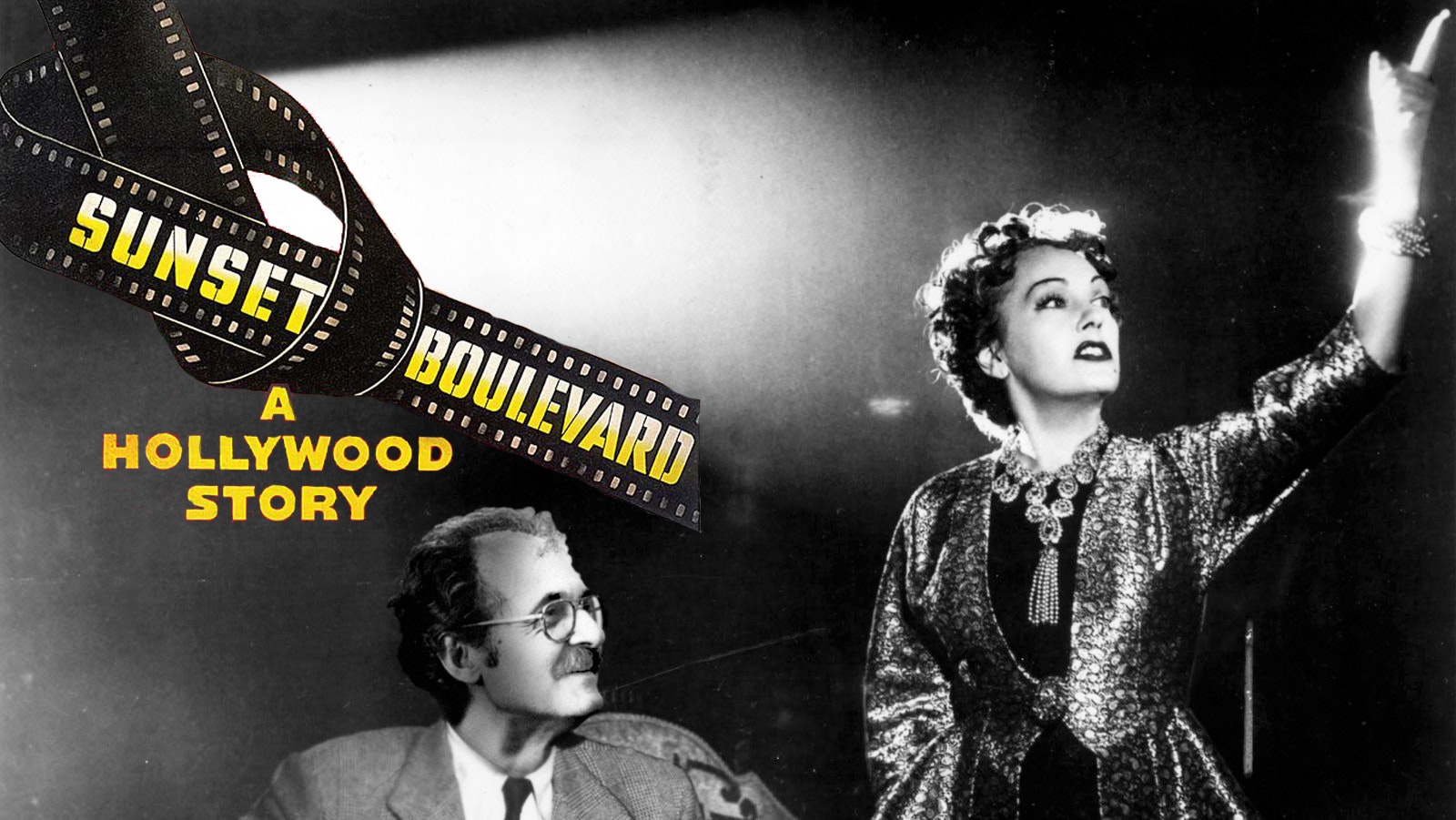
Billy Wilder's "Sunset Boulevard” is the portrait of a forgotten silent star, living in exile in her grotesque mansion, screening her old films, dreaming of a comeback. But it's also a love story, and the love keeps it from becoming simply a waxworks or a freak show. Gloria Swanson gives her greatest performance as the silent star Norma Desmond, with her grasping talons, her theatrical mannerisms, her grandiose delusions. William Holden tactfully inhabits the tricky role of the writer half her age, who allows himself to be kept by her. But the performance that holds the film together, that gives it emotional resonance and makes it real in spite of its gothic flamboyance, is by Erich von Stroheim, as Norma's faithful butler Max.
The movie cuts close to the bone, drawing so directly from life that many of the silent stars at the movie's premiere recognized personal details. In no character, not even Norma, does it cut closer than with Max von Mayerling, a once-great silent director, now reduced to working as the butler of the woman he once directed--and was married to. There are unmistakable parallels with von Stroheim, who directed Swanson in "Queen Kelly” (1928), whose credits included "Greed" and "The Merry Widow,” but who directed only two sound films and was reduced to playing Nazi martinets and parodies of himself in other people's films.
In "Sunset Boulevard,” Desmond screens one of her old silent classics for Joe Gillis, the young writer played by Holden. Max runs the projector. The scene is from “Queen Kelly.” For a moment Swanson and von Stroheim are simply playing themselves. Later, when Joe is moved into the big mansion, Max shows him to an ornate bedroom and explains, "It was the room of the husband.” Max is talking about himself; he was the first of her three husbands, and loved her so much he was willing to return as a servant, feeding her illusions, forging her fan mail, fiercely devoted to her greatness.
In one of the greatest of all film performances, Swanson's Norma Desmond skates close to the edge of parody; Swanson takes enormous chances with theatrical sneers and swoops and posturings, holding Norma at the edge of madness for most of the picture, before letting her slip over. We might not take her seriously. That's where Max comes in. Because he believes, because he has devoted his life to her shrine, we believe. His love convinces us there must be something worth loving in Norma, and that in turn helps explain how Joe can accept her.
Norma of course is not a wrinkled crone. She is only 50 in the film, younger than stars such as Susan Sarandon and Catherine Deneuve. There is a scene during Norma's beauty makeover when a magnifying glass is held in front of her eyes, and we are startled by how smooth Swanson's skin is. Swanson in real life was a health nut who fled from the sun, which no doubt protected her skin (she was 53 when she made the film), but the point in "Sunset Boulevard” is that she has aged not in the flesh but in the mind; she has become fixed at the moment of her greatness, and lives in the past.
Billy Wilder and his co-writer Charles Brackett knew the originals of the characters. What was unusual was how realistic Wilder dared to be. He used real names (Darryl Zanuck, Tyrone Power, Alan Ladd). He showed real people (Norma's bridge partners, cruelly called "the waxworks” by Gillis, are the silent stars Buster Keaton, Anna Q. Nilsson and H.B. Warner). He drew from life (when Norma visits Cecil B. De Mille at Paramount, the director is making a real film, "Samson and Delilah,” and calls Norma "little fellow,” which is what he always called Swanson). When Max the butler tells Joe, "There were three young directors who showed promise in those days, D.W. Griffith, Cecil B. De Mille and Max von Mayerling,” if you substituted von Stroheim for von Mayerling, it would be a fair reflection of von Stroheim's stature in the 1920s.
"Sunset Boulevard” remains the best drama ever made about the movies because it sees through the illusions, even if Norma doesn't. When the silent star first greets the penniless writer inside her mansion, they have a classic exchange. “You used to be big,” he says. Norma responds with the great line, "I am big. It's the pictures that got small.” Hardly anyone remembers Joe's next line: "I knew there was something wrong with them.”
The plot has supplied Joe with a lot of reasons to accept Norma's offer of a private screenwriting job. He's broke and behind on his rent, his car is about to be repossessed, and he doesn't want to go back to his job as a newspaperman in Dayton. He is also not entirely unwilling to prostitute himself; Holden projects subtle weakness and self-loathing into the role. He goes through the forms of saying he doesn't want Norma's gifts, but he takes them--the gold cigarette cases, the platinum watch, the suits, the shirts, the shoes. He claims to be surprised on New Year's Eve when she throws a party just for the two of them, but surely he has known from the first that she wants not only a writer, but a young man to reassure her that she is still attractive.
The thing about Norma is that life with her isn't all bad. She isn't boring. Her histrionics and dramaturgy are entertaining, and she has a charming side, as when she stages a pantomime for Joe, playing a Max Sennett bathing girl and then doing a passable version of Chaplin's Tramp. Joe is willing to be kept. The only thing the film lacks is more sympathy between Joe and Max, who have so much in common.
There is of course the young blond Paramount writer Betty (Nancy Olson), who Joe meets early in the picture. She's engaged to be married (to a young Jack Webb), but as Joe begins sneaking out of the mansion to collaborate on a screenplay with Betty, she falls in love with him. He's attracted, but pulls back, partly because he doesn't want her to discover the truth, but also because he likes the lifestyle with Norma. And ... maybe because, like Max, he has fallen under her spell? His dialogue is sharp-edged and can be cruel. (When she threatens suicide, he tells her, "Oh, wake up, Norma. You'd be killing yourself to an empty house. The audience left 20 years ago.”) But there's a certain pity, too. "Poor devil,” he says, "still waving proudly to a parade which had long since passed her by.”
I have seen "Sunset Boulevard” many times, and even analyzed it a shot at a time at the University of Virginia. But on this latest screening I was struck by its similarity with the 1964 Japanese drama "Woman in the Dunes." Both are about men who are trapped in the home, or lair, of a woman who simply will not let them out again. They struggle, they thrash a little, they look for the means of escape, but at some subterranean level they are content to be prisoners, and perhaps even enjoy it. Both women need a man to help them hold back the inexorable advance of the sands--in Norma's case, the sands of time.
Of all the great directors of Hollywood's golden age, has anybody made more films that are as fresh and entertaining to this day as Billy Wilder's? The credits are astonishing: “Double Indemnity,” “Ace in the Hole,” “Some Like It Hot,” “The Apartment,” “The Lost Weekend,” “Stalag 17,” “Witness for the Prosecution,” “Sabrina.” And who else can field two contenders among the greatest closing lines of all time? From “Some Like It Hot” there is “Nobody's perfect.” And from “Sunset Boulevard,” Norma Desmond's: “There's nothing else. Just us, and the cameras, and those wonderful people out there in the dark. All right, Mr. De Mille, I'm ready for my closeup.”
Roger Ebert, 1999
DON'T LOOK NOW (OCTOBER 2021)
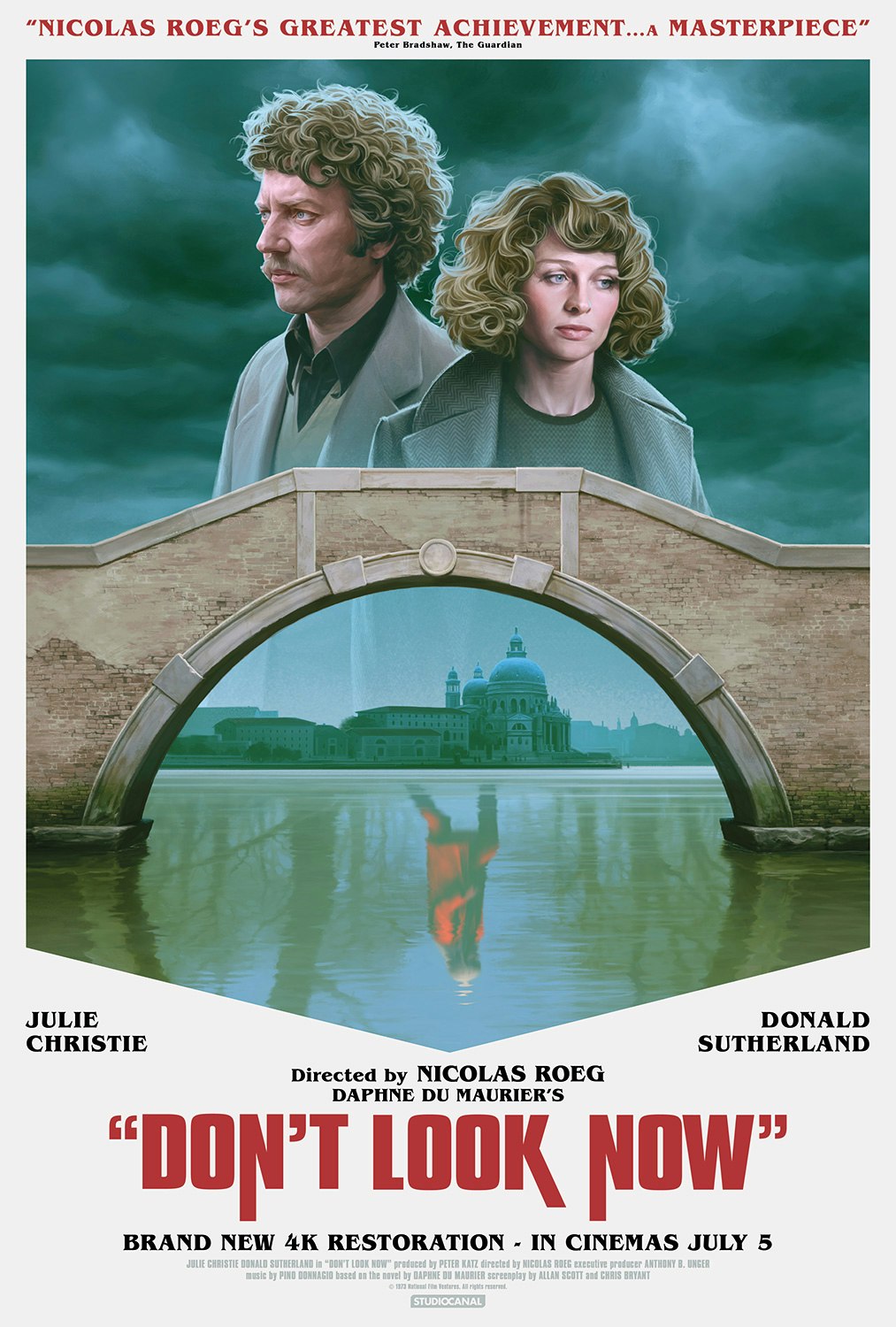
The hero of “Don’t Look Now” is a rational man who does not believe in psychics, omens or the afterlife. The film hammers down his skepticism and destroys him. It involves women who have an intuitive connection with the supernatural, and men who with their analytical minds are trapped in denial--men like the architect, the bishop and the policeman, who try to puzzle out the events of the story. The architect’s wife, the blind woman and her sister try to warn them, but cannot.
Nicolas Roeg’s 1973 film remains one of the great horror masterpieces, working not with fright, which is easy, but with dread, grief and apprehension. Few films so successfully put us inside the mind of a man who is trying to reason his way free from mounting terror. Roeg and his editor, Graeme Clifford, cut from one unsettling image to another. The movie is fragmented in its visual style, accumulating images that add up to a final bloody moment of truth.
The movie takes place entirely on late autumn days when everything is grey and damp and on the edge of frost. It opens in the country cottage of John and Laura Baxter (Donald Sutherland and Julie Christie), who are curled up before the fire, working, while their children play outside. There is never a moment when this scene in the British countryside seems safe or serene.
The little girl Christine, wearing a shiny red raincoat, plays near a pond. Inside, her father studies slides of Venetian churches. Her brother runs his bicycle over a pane of glass, breaking it. Her father looks up sharply, as if sensing the sound. Christine throws her ball into the pond. Her father spills a glass, and a blood-like stain spreads across the surface of a slide--a slide showing the red hood of a raincoat in a Venetian church. Shots show Christine’s raincoat reflected upside down in the pond. Something causes John to look up, and then run from the house, and then find his daughter’s body beneath the water and lift it up with an animal cry of grief.
This sequence not only establishes the loss that devastates the Baxters, but sets the visual themes of the movie. There will be shots that occur out of time, as characters anticipate future events, or impose past events on the present. There will be sharp intakes of psychic foresight. Christine’s death by water will lead in an obscure way to Venice, where John Baxter is restoring an old church, where a killer is loose, where the police pull a body from a canal, where a child’s doll lies drowned at the water’s edge.
The shiny red raincoat will be a connector all the way through. In Venice, Baxter will get glimpses of a little figure in red running away from him or hiding from him, and may wonder if this is the ghost of his daughter. We will see the red figure more often than he does, glimpsing it on a distant bridge, or as a boat passes behind two arches. And the precise tone of red will be a marker through the movie; Roeg’s palate is entirely in dark earth tones, except when he introduces bright red splashes--with a shawl, a scarf, a poster on a wall, a house front painted with startling brilliance. The color is a link between death past and future.
The marriage of John and Laura seems real and constant in the film, not just a convenience of the plot. The death of their daughter devastates them, and when we see them in Venice (an undetermined time later, but again in very late autumn), there is a sadness between them. Then in the restroom of a restaurant Laura meets two English sisters, Heather (Hilary Mason) and Wendy (Clelia Matania). Heather, who is blind, tells Laura she “saw” little Christine sitting with her parents at lunch, laughing and smiling: “She’s happy now!”
Laura at first doubts, then joyously believes. She collapses at the restaurant, but that night, probably for the first time since Christine’s death, the Baxters make love. This scene is celebrated for its passion and truthfulness, but its full emotional impact comes through the editing: The lovemaking is intercut with shots of John and Laura dressing afterwards, so that they are at once together and apart, now and later, passionate and preoccupied. There is a poignancy here beyond all reason; in a movie concerned with time, this is the sequence that insists that our future is contained in our present--that everything passes, even ecstasy.
Venice, that haunted city, has never been more melancholy than in “Don’t Look Now.” It is like a vast necropolis, its stones damp and crumbling, its canals alive with rats. The cinematography, by Anthony B. Richmond and an uncredited Roeg, drains it of people. There are a few shots, on busy streets or near the Grand Canal, when we see residents and tourists, but during the two sustained scenes where John and Laura are lost (first together, later separately) there is no one else about, and the streets, bridges, canals, dead ends and wrong turns fold in upon themselves. Walking in Venice, especially on a foggy winter light, is like walking in a dream.
The city is old and ominous. John struggles to raise a statue to its perch on a church wall, and then uncovers it to reveal a hideous gargoyle, sticking its tongue out at him. A church scaffold collapses beneath him. The hotel where the Baxters are staying is eager to close at the end of season; the lobby furniture is already shrouded. The canals yield drowned bodies. And John’s concern mounts as his wife listens to the two strange sisters, and becomes convinced their daughter is sending them messages. “She’s dead, Laura,” John says. “Our daughter is dead. Dead, dead, dead, dead, dead.”
But it is John who has second sight. “He has the gift, even if he doesn’t know it, even if he’s resisting it,” the sisters tell one another. And after Laura is called home to be with their son, who has had a minor accident at boarding school, John sees her and the sisters standing at the front of a motorboat passing him on the Grand Canal. How can she be here and there? Those who have been to Venice will recognize it as a funeral boat.
The plot of “Don’t Look Now,” if it were summarized in a realistic way, would be fairly standard horror stuff. The identification of the red-hooded figure is arbitrary and perhaps even unnecessary. It is the film’s visual style, acting, and mood that evoke its uncanny power. Like the recent films of M. Night Shyamalan, it works through apprehension, not plot or action. The “explanation”: is perfunctory but the dread is palpable.
The movie is based by a novel by Daphne Du Maurier. “Romantic sludge,” Michael Dempsey calls it in his Film Quarterly review, explaining how the screenplay extends and deepens it but does not improve on the device of the hooded red figure. Dempsey makes a key point about the film’s use of montage: Unlike Eisenstein, who suggests shots are linked, he says, Roeg and Clifford put together shots that might be linked. We are always as uncertain as John Baxter about the connections between what he sees, what exists, what will exist, what does not exist.
Roeg, born 1928, used a similar freedom of movement through time in his first two films, “Performance” (1970) and “Walkabout” (1971), and has continued to play with chronology. He doesn’t always enter his stories at the beginning and leave at the end, but rummages around in them, as if separated moments can shed light on one another.
I’ve been though the film a shot at a time, paying close attention to the use of red as a marker in the visual scheme. It is a masterpiece of physical filmmaking, in the way the photography evokes mood and the editing underlines it with uncertainty. The admitted weakness of the denouement is beside the point, and I have come to an accommodation with the revelations about the figure in the red raincoat. That figure need not be who and what it seems to be, or anything at all--except for the gargoyle that awaits us all at the end of time, sticking out its tongue.
ROGER EBERT, 2002
MISERY (OCTOBER 2021)
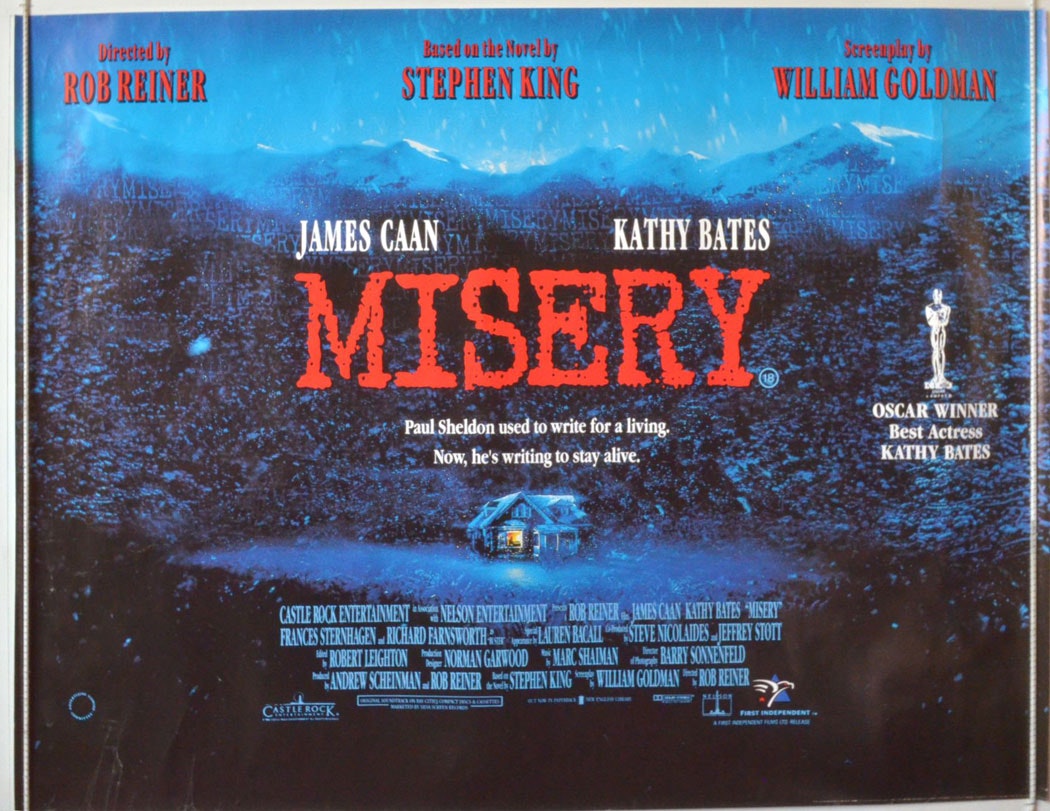
Any mixture of Stephen King, William Goldman and Rob Reiner ought to be out of the ordinary. If you add to that an Oscar-winning performance by a relatively unknown actress, you’ve got something reasonably special. It’s called Misery and you’d have to be churlish not to be entertained.
Predicated, like most Hollywood box-office swingers, on a one-line concept – famous writer gets kidnapped by number one fan – the film hasn’t any depth to speak of, but is consistently shrewd enough not to go totally obvious ways. And the audacity in casting Kathy Bates as the dotty fan pays considerable dividends.
Firstly, she is not a face we know, which aids rather than undermines conviction. Secondly, she is not your conventional American screen actress, glamorous unto death. She almost looks like a real person the sort you might find in a deserted area of Colorado in comfortable snow boots. Thirdly, she is a fine actress who knows that less in the way of a ‘performance’ is often more and that strong moments have to be severely rationed.
She plays Annie Wilks, a nurse with a murky past, who digs Paul Sheldon, famous romantic novelist, out of his crashed car in the icy wastes, nurses the badly crippled man back to something like health and then imposes her will on him. It is all to the good of the film that it is not sexual.
He’s just finished an as yet unpublished novel about his early days in the slums of Brooklyn, in total contrast to the romantic flim-flam that’s made him a fortune if not a very enduring reputation. She’s just finished his last tome starring Misery, the 17th century fictional heroine she is obsessed with.
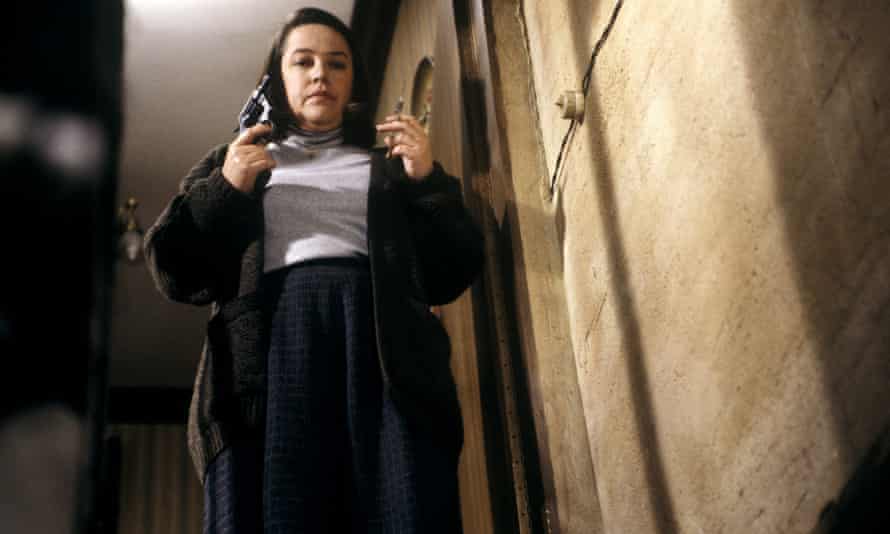
But, alas, he has killed her off, and committed the cardinal sin of profanity in his new book. He will be held captive until the new manuscript is burnt and Misery brought to life again in a new guise.
Bates pushes her character this way and that, dispensing kindness and threat in equal proportions. It’s clear she’s mad but, not at first, that she’s absolutely barking. Meanwhile, James Caan as Sheldon goes from pain-filled gratitude to anger and terror with all the aplomb of a man who started his career on screen a quarter of a century ago frightening an immobile Olivia De Havilland half to death in Lady In A Cage.
This performance is at least as good as Bates’, and Richard Farnsworth as the eccentric Sheriff, of sounder mind than he seems, is not far behind.
Reiner’s film, the perfect 90-minuter, is sometimes a little stretched at 107 minutes. Nevertheless it maintains its tension well, plays enough tricks on us so that we don’t ever treat anything quite seriously and Goldman’s script has enough good lines and situations to keep one interested in exactly what is coming next.
In racing parlance, it is by Whatever Happened To Baby Jane out of Fatal Attraction, and a good example of a popular film that doesn’t take its audience for granted.
THE HARDER THEY COME (OCTOBER 2021)

A brash bumpkin from the countryside comes to the city, dreaming of stardom. He cuts a record, gets ripped off, turns to trafficking drugs, is betrayed, and dies a folk hero at the hands of the police as his song becomes an anthem.
“The Harder They Come,” is a universal story set in a highly specific milieu. Powered by one of the most infectious scores in the history of cinema, it is also a pop classic — the movie that brought reggae to America and “launched a thousand spliffs,” as the New York Times critic Ben Brantley joked in a 2008 review of a theatrical version in London.
Inspired by the life of the Jamaican outlaw Ivanhoe “Rhygin” Martin, credited with the line that gives the movie its title, “The Harder They Come” was a vehicle for the reggae star Jimmy Cliff. It was independent Jamaica’s first homemade feature, as well as the first film directed by Perry Henzell, a scion of that nation’s white planter class. The distinguished black playwright Trevor Rhone co-wrote the script. (“The Harder They Come” is being shown in conjunction with the theatrical release of Henzell’s long-delayed follow-up, “No Place Like Home,” which is also at BAM.)
Beginner’s luck — or lack of same — might almost be the movie’s subject. Robbed upon arrival in Kingston, Ivan Martin (Cliff) founders at first in the urban maelstrom. Social conditions are manifest in documentary-type shots, filmed in 16 millimeter, of poverty and desperation. Ivan finds his footing only to mix it up with an assortment of predatory preachers, mercenary record producers, corrupt cops and miscellaneous hustlers. In the background, Toots & the Maytals, Desmond Dekker, Cliff and others sing a collective siren song of fame. Chased by the police, Ivan creates his own legend, leaving graffiti (“I am here — I am everywhere”) and imagining an audience for his last stand.
A movie of abrupt transitions, “The Harder They Come” appears to have been assembled piecemeal and shot off the cuff. Cliff, who wrote the title song, has described the film changing direction while in production. In an article published in The Caribbean Quarterly in 2015, the cinematographer Franklyn St. Juste said he never saw a script: “I really didn’t know what was happening — and what was going to happen from one scene to the next or from one setup to the next.” But the spontaneity proved a recipe for what St. Juste termed “happy accidents.”
The timing was also fortuitous. The film arrived on the international scene in the wake of “Shaft” (1971) and “Superfly” (1972), with a hero akin to the righteous outlaws in films like the Brazilian director Glauber Rocha’s “Antonio das Mortes” (1969), Melvin Van Peebles’s “Sweet Sweetback’s Baadasssss Song” (1971) and numerous Italian westerns. (It’s hardly coincidental that Ivan goes to see “Django,” Sergio Corbucci’s 1966 evergreen.) For early audiences, Ivan’s willingness to defy authority at the cost of his life evoked Bonnie and Clyde, the Black Panthers and Che Guevara.
After making a splash at the 1972 Venice Film Festival, “The Harder They Come” was picked up by Roger Corman’s New World Pictures; it opened (with English subtitles, because of the particularly thick Jamaican patois) to some success at a Broadway theater in February 1973 and enjoyed a second run as an exploitation film. (I saw it that summer in Florida on a double bill with the Pam Grier prison movie “Black Mama, White Mama.”) It would soon have a third life. In a 1974 piece titled “Films That Refuse to Fade Away,” the New York Times critic Vincent Canby noted the movie’s popularity as a midnight attraction.
As reported by Canby, “The Harder They Come” ran for 26 weeks at the Orson Welles Cinema in Cambridge, Mass., in 1973. A true cult film, it was brought back in 1974, where, as Jonathan Rosenbaum and I wrote in our book “Midnight Movies,” it remained another seven years. In April 1976, The Times ran an article, noting that “The Harder They Come” had played 80 consecutive weekends at the Elgin Theater in Chelsea. (The run would continue there for months.)
That film’s director, Franco Rosso, named “The Harder They Come” as his inspiration. “Babylon” (1980) might be a sequel, focusing on West Indian life in London. An immersive, verité-style movie following a disaffected young singer of a homegrown reggae group, it uses a constant flow of music to animate the struggle for survival in a hostile white world. “The movie is more interested in what feels right than what seems right,” the critic Wesley Morris wrote in his review for The Times.In his enthusiasm, Canby called “The Harder They Come” “a more revolutionary black film than any number of American efforts, including ‘Sweet Sweetback’s Baadasssss Song.’” In any case, “The Harder They Come” provided a model for later movies, most notably the 1980 British film “Babylon,” which belatedly opened in New York this spring and itself became a cult film. (It is on the Criterion Channel and can be streamed elsewhere.)
To join our mailing list email us at:
info@cine-real.com
THE THIRD MAN (SEPTEMBER 2021)
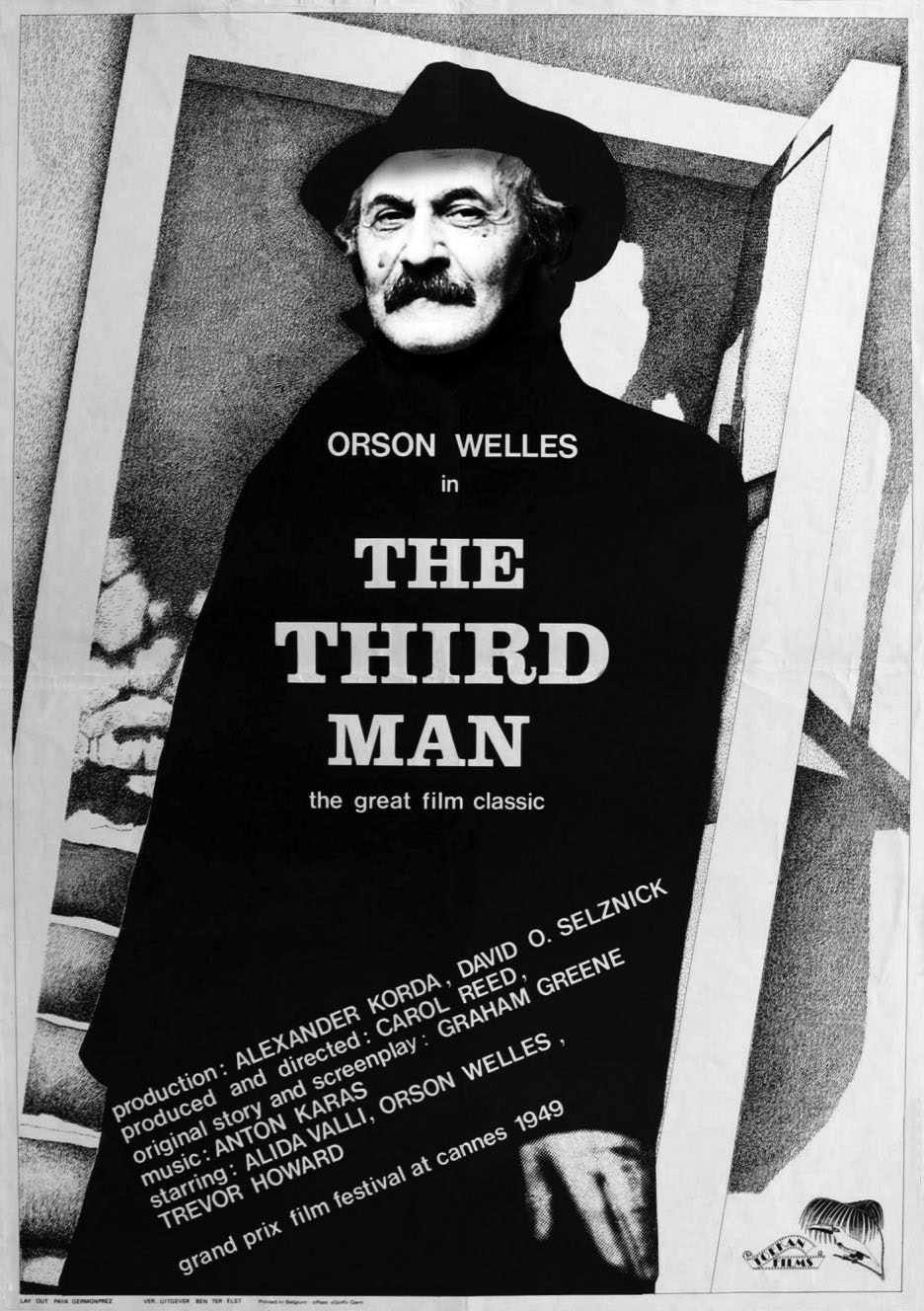
From the moment the first audiences saw the opening image of Anton Karas’s zither filling the screen with the nerve-jangling Harry Lime Theme (before, indeed, they had heard the word “zither”), they knew that with the second collaboration between director Carol Reed and author Graham Greene they were in for something special. At its end they recognised they’d seen a near-perfect work, what we now call a noir classic. The title rapidly entered the language and took on new meanings as the careers of Greene as wartime intelligence agent and Kim Philby as cold war traitor became linked.
The story features an evil, charismatic anti-hero who fakes his own death and makes his home in a Viennese sewer, and ends with its dull, perplexed leading man being silently snubbed by the beautiful, unsmiling heroine in a deserted cemetery. This new print does full justice to Robert Krasker’s dazzling, Oscar-winning black-and-white photography and its exhilaratingly forlorn postwar Vienna, and it’s accompanied by two excellent documentaries, one about the making of the movie and its afterlife, the other about the career of Greene, then at the height of his power as both a novelist and screenwriter.
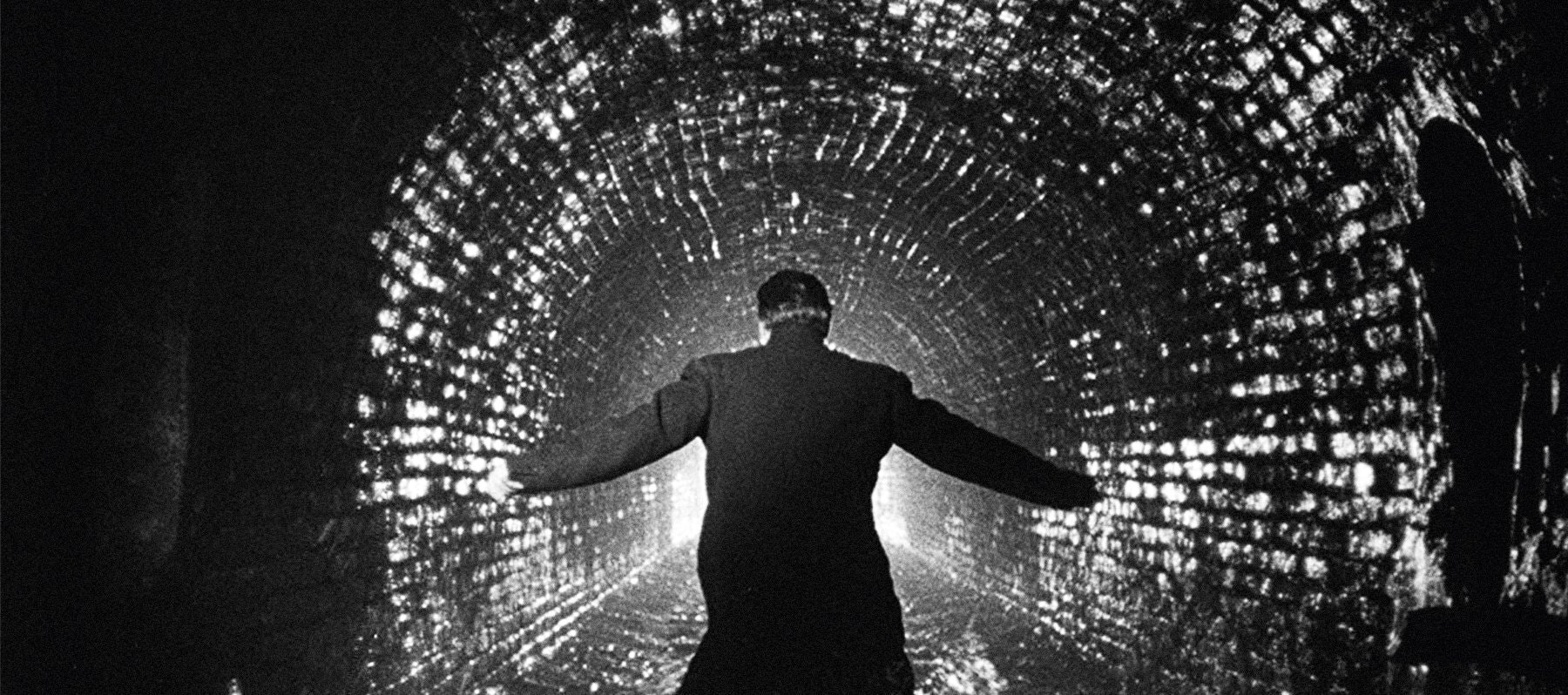
The Third Man is essentially Greene’s movie and it’s permeated with the art of Catholic beliefs, his feeling for immanent good and evil, his fascination with storytelling, with men in flight and pursuit, with life lived on what Robert Browning called (in a favourite quote of Greene’s) “the dangerous edge of things”. But this is a movie to which many contributed, and it has grown richer with the passing years. Producer Alexander Korda came up with the setting – a corrupt, politically divided Vienna – as the perfect location for Reed and Greene’s follow-up to The Fallen Idol, which he’d produced. Greene devised the plot, which had its origins in a single startling image he’d jotted down on the flap of an envelope: “I had paid my last farewell to Harry a week ago when his coffin was lowered into the frozen February ground, so that it was with incredulity that I saw him pass by without sign of recognition, among the host of strangers in the Strand.” Korda’s co-producer David Selznick provided money, the prospect of wide distribution in America, two stars from his own stable (Alida Valli and Joseph Cotten, who came to represent the soul of a surviving Europe and a dangerously innocent America), and an anti-Soviet undercurrent that Reed and Greene quietly buried, at least in the British version.
Reed used the time, while waiting for Welles to show up, to experiment with tilted cameras and surreal shadows
Then there’s Orson Welles as Harry Lime, leader of the gang peddling adulterated penicillin in Vienna. He dominates the film both by his presence and his absence. He was difficult to pin down, even for his brief appearances. Reed used the time shooting at night, while waiting for Welles to show up, to experiment with tilted cameras and surreal shadows in narrow, gleaming nocturnal streets that became one of the film’s hallmarks.
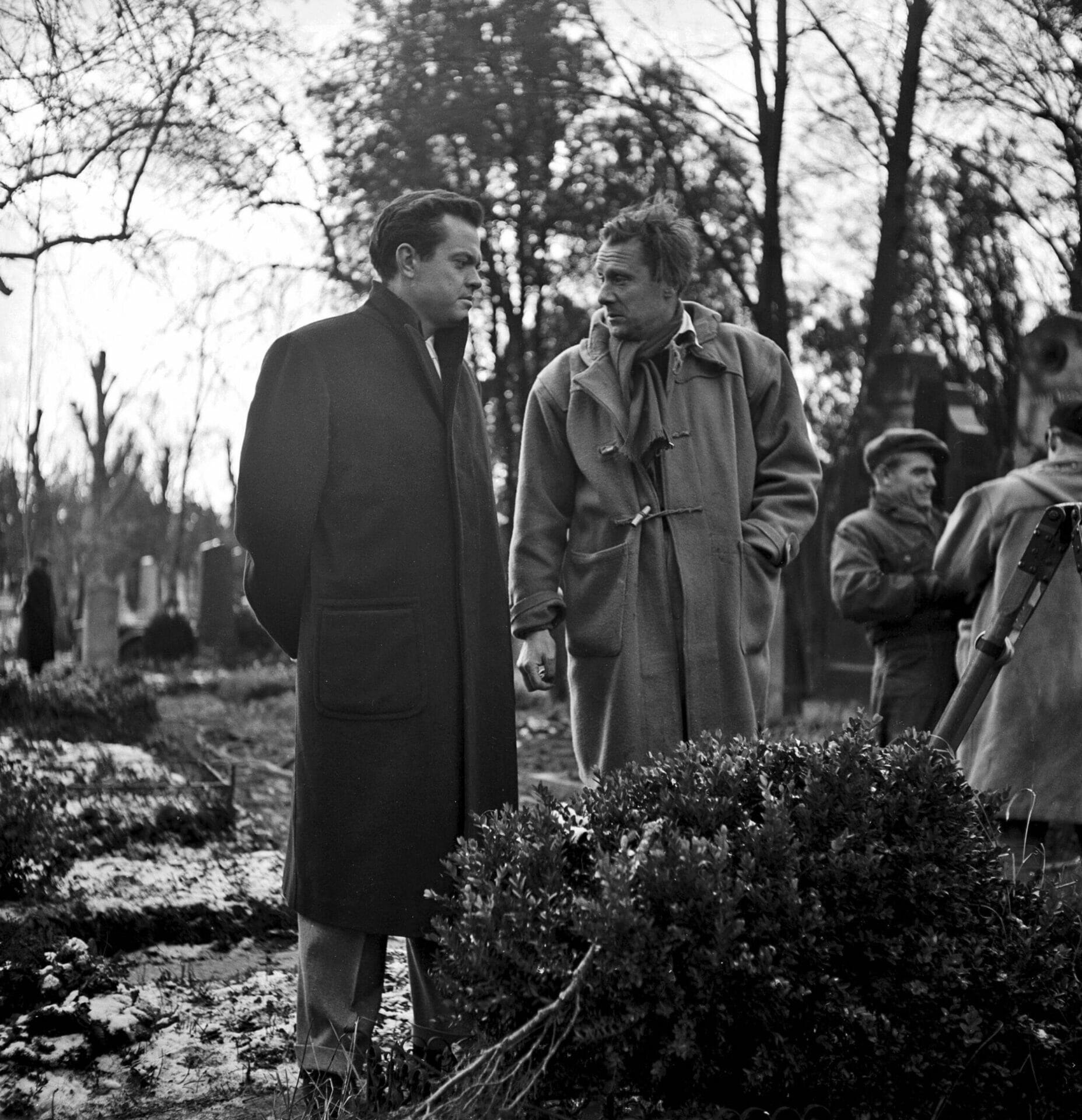
In 1979, during a BBC radio programme to mark Greene’s 75th birthday, I asked him which film based on his work had given him the greatest satisfaction. I expected him to say The Third Man. Instead he named The Fallen Idol, going on to explain that The Third Man was a director’s film, while The Fallen Idol was a writer’s picture. One can understand why, even while disagreeing with him. It was Carol Reed who was immediately fascinated on hearing Karas play the zither in a Viennese cafe and decided to bring the musician to London and settle for this single instrument. It was also Reed who decided to drop Greene’s original ending of a reconciliation between Holly Martins and Anna and opt for the bleak conclusion that the author thought audiences would find boring as they reached for hats under their seats. Reed also decided that there would be no subtitles to translate the German dialogue that Cotten’s Martins couldn’t understand: like him the audience would have to work out what people were saying.
There is perhaps another reason why Greene might have had certain reservations about The Third Man. Every time you see the film over the years you notice something new. You suddenly become aware, for instance, of the way the strings of the zither at the beginning are later echoed in the cables of the suspension bridge seen from above in the sequence in which the conspirators meet with Lime on the Danube, and later the wires of the Great Wheel in the Prater pleasure park, where Lime and Martins are to have their crucial meeting looking down on the world. Great spiders’ webs, perhaps, or the strings of giant marionettes?
Greene, despite the similarities between their works, had a loathing for Hitchcock’s films. But one notices the influence of The 39 Steps on the confrontation between Martins and Lime’s henchmen at the British Council lecture, and one also learns from Greene’s screenplay that the character of Crabbin (the cultural bureaucrat played by Wilfrid Hyde White) was originally written for Basil Radford and Naunton Wayne in the Charters and Caldicott personae created for Hitchcock’s The Lady Vanishes.
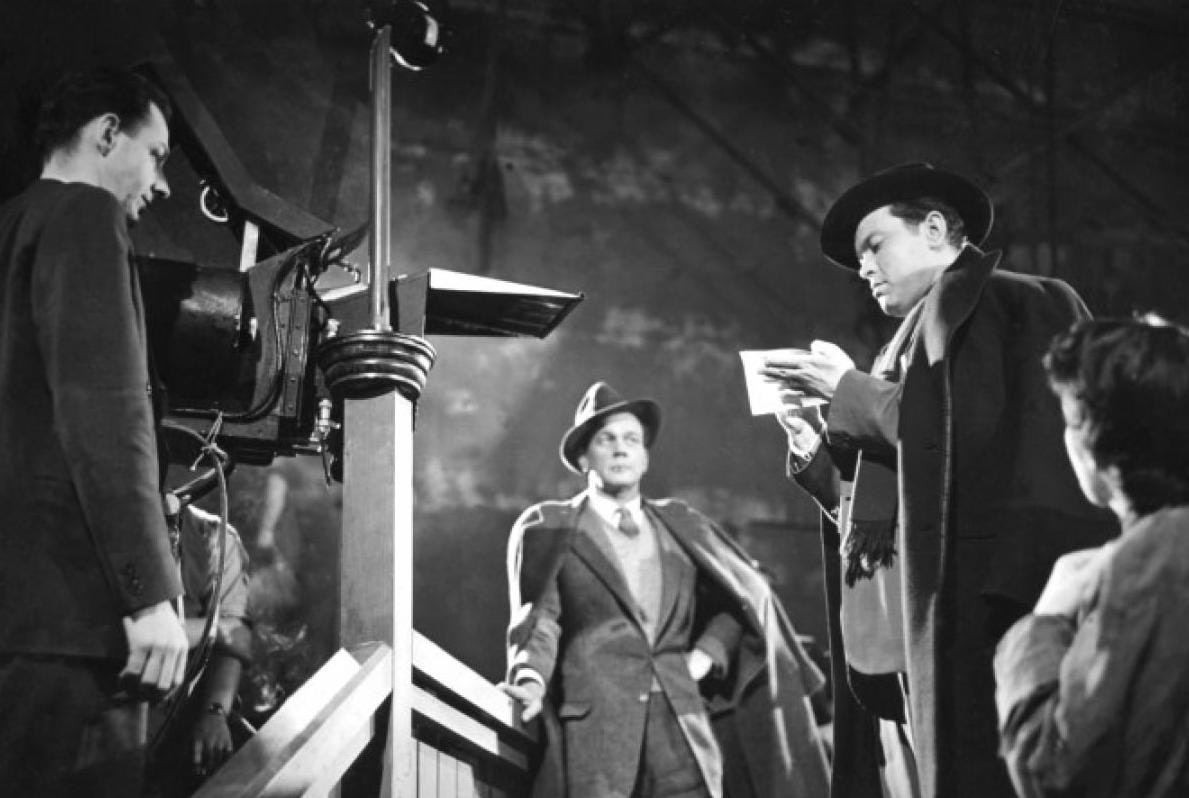
But the most striking influence that occurred to me only decades after first seeing The Third Man is its likely debt to Eric Ambler’s The Mask of Dimitrios, which turns upon a British thriller writer journeying to Istanbul to see a brilliant criminal who has disappeared after faking his death. There are several apparent allusions to Ambler’s book in the film (including one by Ambler’s friend, Carol Reed, to prewar Istanbul in the film’s stage-setting introduction), and Greene includes a chapter from The Mask of Dimitrios in his anthology, The Spies Bedside Book. During an onstage interview with Ambler at the National Film Theatre in he 1990s, I asked him if he’d ever noticed the resemblance. “I have indeed,” he replied, but sadly I never got around to pursuing the matter, and Ambler died soon afterwards.
The Germans have a term for movies set among the ruins of postwar cities – “Trümmerfilm” or “rubble films”. Notable in this sub-genre are such pictures of the 1940s as The Murderers Are Among Us (Wolfgang Staudte, 1946) and Germany Year Zero (Roberto Rossellini, 1948). The Third Man, deeply influenced by Italian neorealism, is arguably the most significant British example, though it has a close contender in Reed’s Odd Man Out (1947), shot on blitzed sites in Belfast, and Charles Crichton’s seminal Ealing comedy Hue and Cry (1947). Ken Adam, production designer on the early Bond movies, cut his teeth working on rubble films such as Obsession (1949) and Ten Seconds to Hell (1959).
Phillip French, The Guardian.
Further Reading: https://cinephiliabeyond.org/t...
PULP FICTION (AUGUST, 2021)
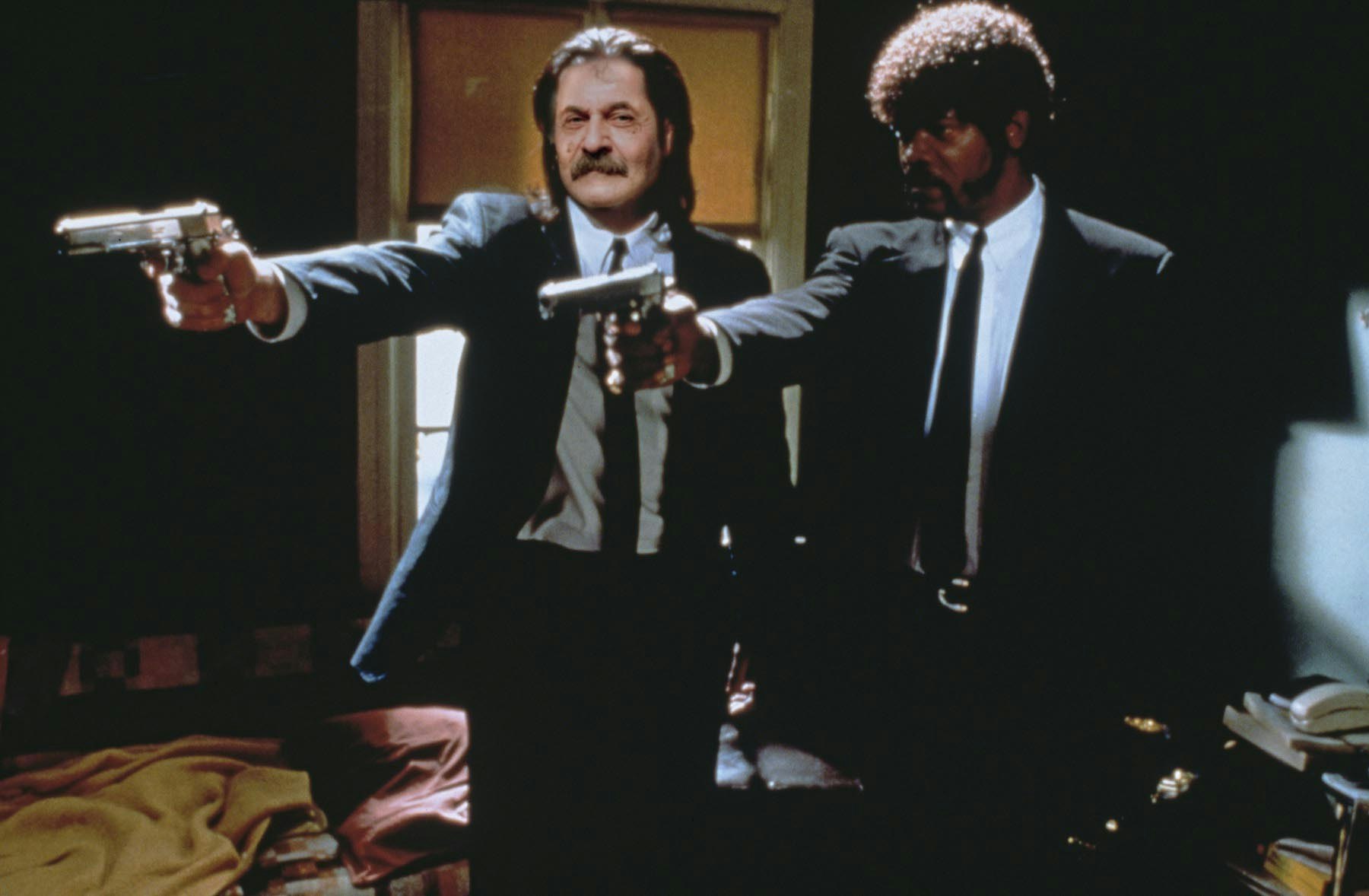
Quentin Tarantino is the Jerry Lee Lewis of cinema, a pounding performer who doesn't care if he tears up the piano, as long as everybody is rocking. His new movie "Pulp Fiction" is a comedy about blood, guts, violence, strange sex, drugs, fixed fights, dead body disposal, leather freaks, and a wristwatch that makes a dark journey down through the generations.
Seeing this movie last May at the Cannes Film Festival, I knew it was either one of the year's best films, or one of the worst.
Tarantino is too gifted a filmmaker to make a boring movie, but he could possibly make a bad one: Like Edward D. Wood Jr., proclaimed the Worst Director of All Time, he's in love with every shot - intoxicated with the very act of making a movie. It's that very lack of caution and introspection that makes "Pulp Fiction" crackle like an ozone generator: Here's a director who's been let loose inside the toy store, and wants to play all night.
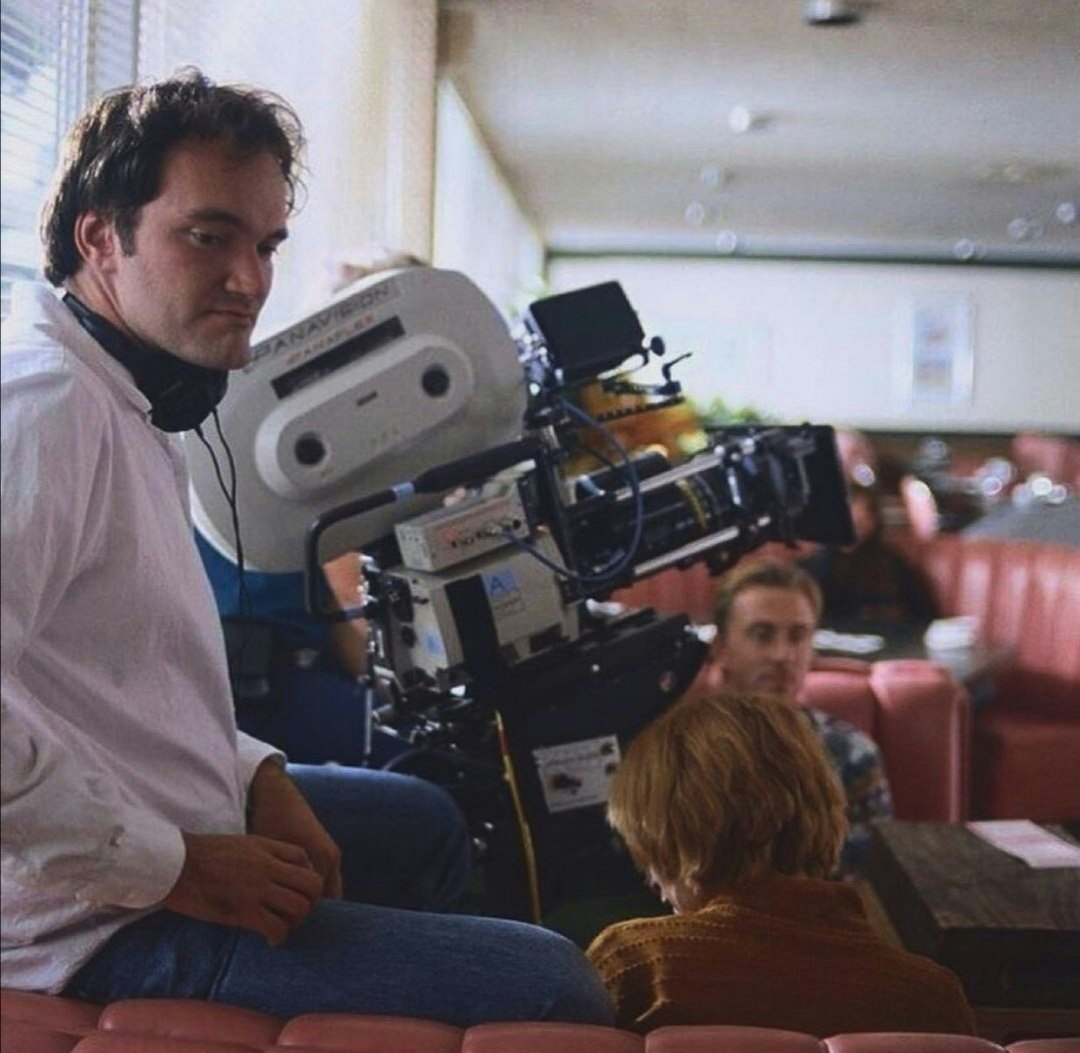
The screenplay, by Tarantino and Roger Avary, is so well-written in a scruffy, fanzine way that you want to rub noses in it - the noses of those zombie writers who take "screenwriting" classes that teach them the formulas for "hit films." Like "Citizen Kane," "Pulp Fiction" is constructed in such a nonlinear way that you could see it a dozen times and not be able to remember what comes next. It doubles back on itself, telling several interlocking stories about characters who inhabit a world of crime and intrigue, triple-crosses and loud desperation. The title is perfect. Like those old pulp mags named "Thrilling Wonder Stories" and "Official Detective," the movie creates a world where there are no normal people and no ordinary days - where breathless prose clatters down fire escapes and leaps into the dumpster of doom.
The movie resurrects not only an aging genre but also a few careers.
John Travolta stars as Vincent Vega, a mid-level hit man who carries out assignments for a mob boss. We see him first with his partner Jules (Samuel L. Jackson); they're on their way to a violent showdown with some wayward Yuppie drug dealers, and are discussing such mysteries as why in Paris they have a French word for Quarter Pounders. They're as innocent in their way as Huck and Jim, floating down the Mississippi and speculating on how foreigners can possibly understand each other.
Travolta's career is a series of assignments he can't quite handle. Not only does he kill people inadvertently ("The car hit a bump!") but he doesn't know how to clean up after himself. Good thing he knows people like Mr. Wolf (Harvey Keitel), who specializes in messes, and has friends like the character played by Eric Stoltz, who owns a big medical encyclopedia, and can look up emergency situations.
Travolta and Uma Thurman have a sequence that's funny and bizarre. She's the wife of the mob boss (Ving Rhames), who orders Travolta to take her out for the night. He turns up stoned, and addresses an intercom with such grave, stately courtesy Buster Keaton would have been envious. They go to Jack Rabbit Slim's, a 1950s theme restaurant where Ed Sullivan is the emcee, Buddy Holly is the waiter, and they end up in a twist contest. That's before she overdoses and Stoltz, waving a syringe filled with adrenaline, screams at Travolta, "YOU brought her here, YOU stick in the needle! When I bring an O.D. to YOUR house, I'LL stick in the needle!" Bruce Willis and Maria de Medeiros play another couple: He's a boxer named Butch Coolidge who is supposed to throw a fight, but doesn't. She's his sweet, naive girlfriend, who doesn't understand why they have to get out of town "right away." But first he needs to make a dangerous trip back to his apartment to pick up a priceless family heirloom - a wristwatch. The history of this watch is described in a flashback, as Vietnam veteran Christopher Walken tells young Butch about how the watch was purchased by his great-grandfather, "Private Doughboy Orion Coolidge," and has come down through the generations - and through a lot more than generations, for that matter. Walken's monologue builds to the movie's biggest laugh.
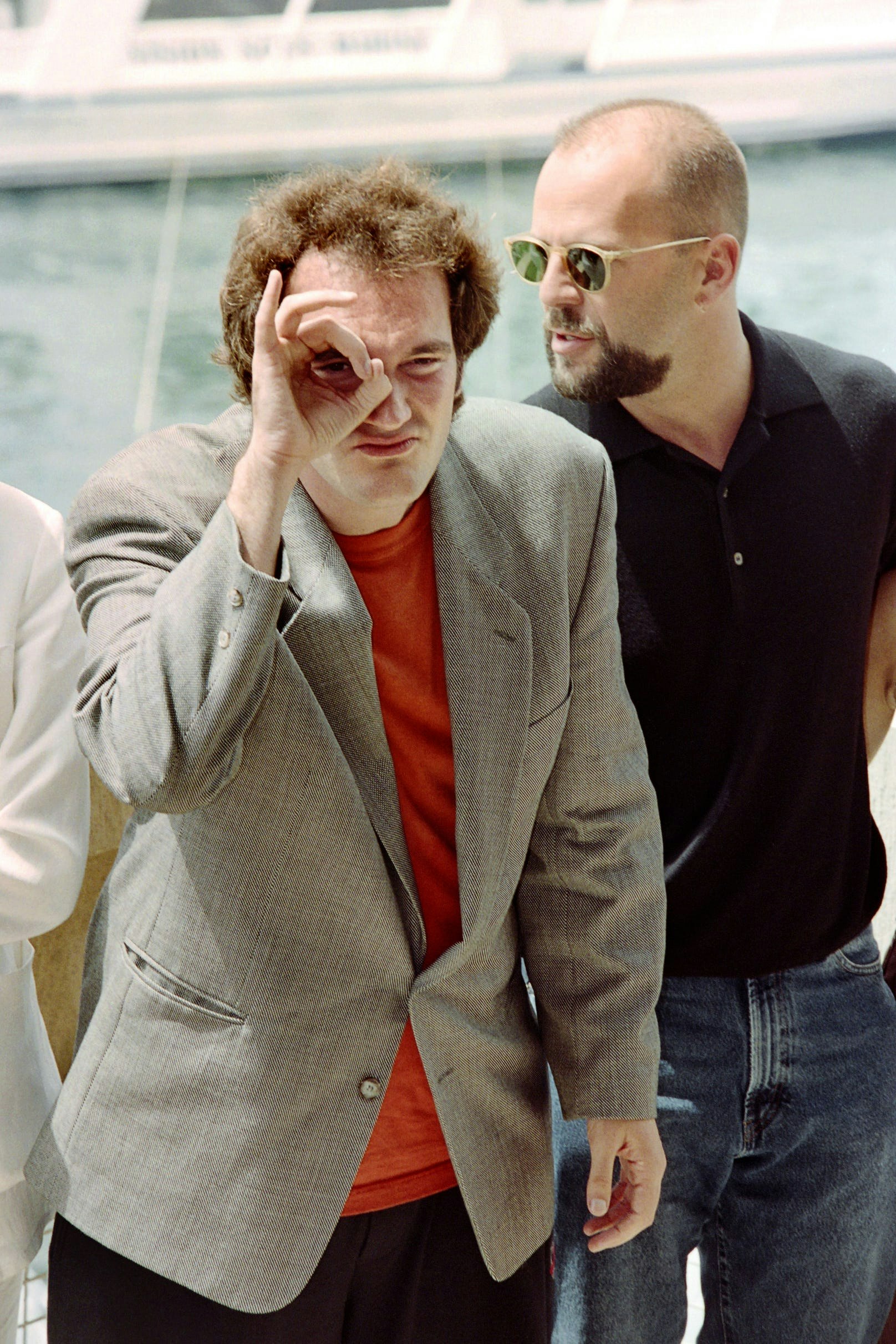
The method of the movie is to involve its characters in sticky situations, and then let them escape into stickier ones, which is how the boxer and the mob boss end up together as the captives of weird leather freaks in the basement of a gun shop. Or how the characters who open the movie, a couple of stick-up artists played by Tim Roth and Amanda Plummer, get in way over their heads. Most of the action in the movie comes under the heading of crisis control.
If the situations are inventive and original, so is the dialogue. A lot of movies these days use flat, functional speech: The characters say only enough to advance the plot. But the people in "Pulp Fiction" are in love with words for their own sake. The dialogue by Tarantino and Avary is off the wall sometimes, but that's the fun. It also means that the characters don't all sound the same: Travolta is laconic, Jackson is exact, Plummer and Roth are dopey lovey-doveys, Keitel uses the shorthand of the busy professional, Thurman learned how to be a moll by studying soap operas.
It is part of the folklore that Tarantino used to work as a clerk in a video store, and the inspiration for "Pulp Fiction" is old movies, not real life. The movie is like an excursion through the lurid images that lie wound up and trapped inside all those boxes on the Blockbuster shelves. Tarantino once described the old pulp mags as cheap, disposable entertainment that you could take to work with you, and roll up and stick in your back pocket. Yeah, and not be able to wait until lunch, so you could start reading them again.
ROGER EBERT, 1994
BRAZIL (JULY 2021)
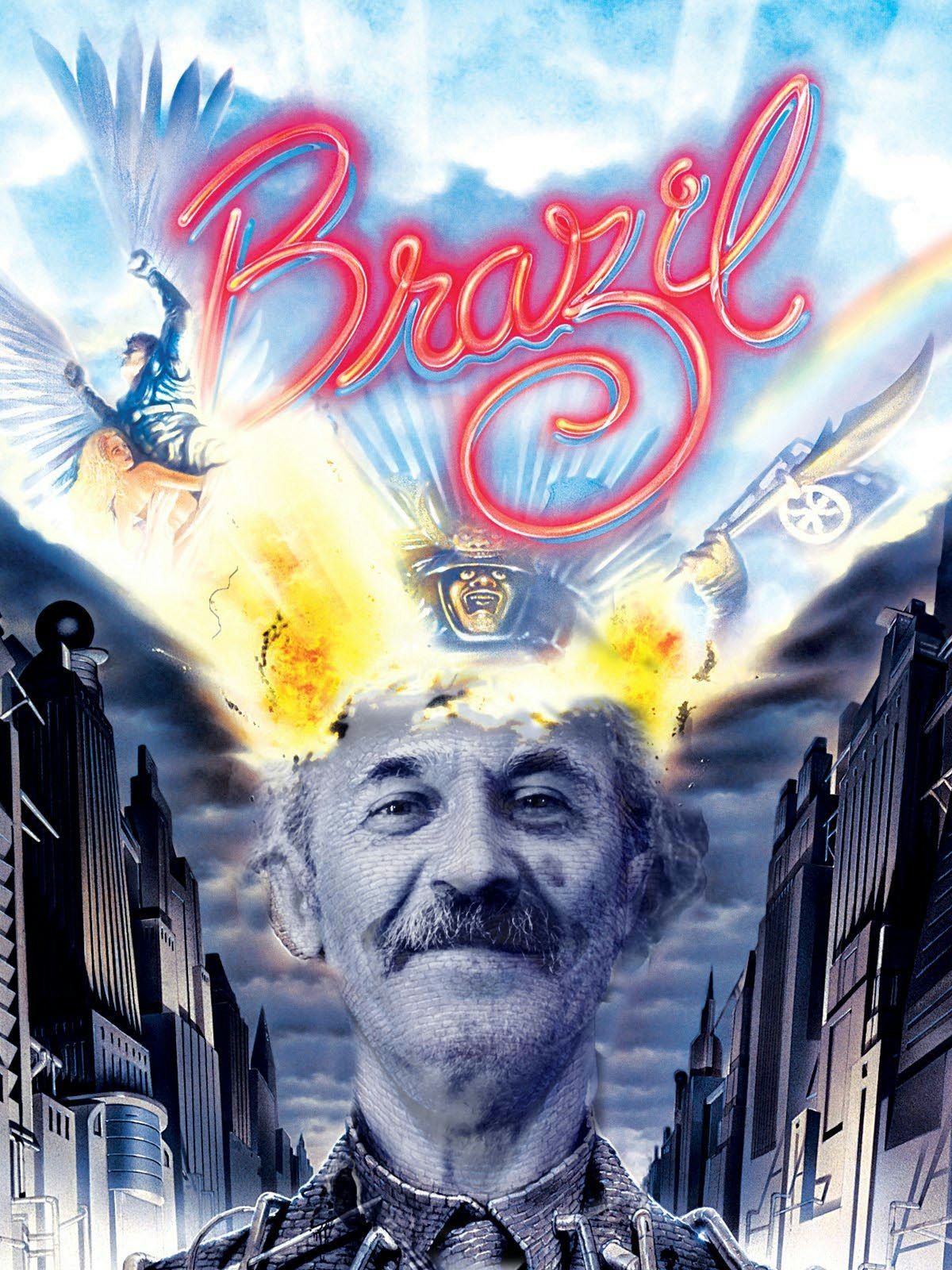
Just as George Orwell's 1984 is an alternate vision of the past, present and future, so "Brazil" is a variation of Orwell's novel. The movie happens in a time and place that seem vaguely like our own, but with different graphics, hardware and politics. Society is controlled by a monolithic organization, and citizens lead a life of paranoia and control. Thought police are likely to come crashing through the ceiling and start bashing dissenters. Life is mean and grim.
The hero of "Brazil" is Sam Lowry (Jonathan Pryce), a meek, desperate little man who works at a computer terminal all day.
Occasionally he cheats; when the boss isn't looking, he and his fellow workers switch the screens of their computers to reruns of exciting old TV programs. Sam knows his life is drab and lockstep, but he sees no way out of it. His only escape is into his fantasies - into glorious dreams of flying high above all the petty cares of the world, urged on by the vision of a beautiful woman.
His everyday life offers no such possibilities. Even the basic mechanisms of life support seem to be failing, and one scene early in the movie has Robert De Niro in a walk-on as an illegal free-lance repairman who defies the state by fixing things. De Niro makes his escape by sliding down long cables to freedom, like Spider-Man. For Sam, there seems to be no escape.
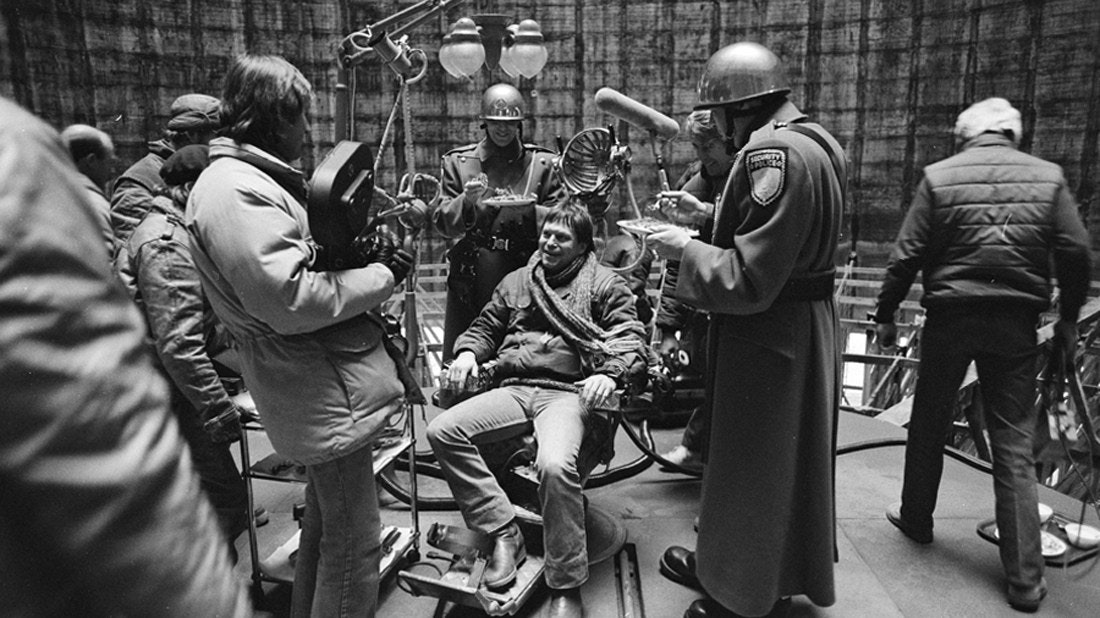
But then he gets involved in an intrigue that involves the girl of his dreams, the chief executive of the state and a shadowy band of dissenters. All of this is strangely familiar; the outlines of "Brazil" are much the same as those of 1984, but the approach is different.
While Orwell's lean prose was translated last year into an equally lean and dour film, "Brazil" seems almost like a throwback to the psychedelic 1960s, to an anarchic vision in which the best way to improve things is to blow them up.
The other difference between the two worlds - Orwell's and the one created here by director and co-writer Terry Gilliam - is that Gilliam apparently has had no financial restraints. Although "Brazil" has had a checkered history since it was made (for a long time, Universal Pictures seemed unwilling to release it), there was a lot of money available to make it. The movie is awash in elaborate special effects, sensational sets, apocalyptic scenes of destruction and a general lack of discipline. It's as if Gilliam sat down and wrote out all of his fantasies, heedless of production difficulties, and then they were filmed - this time, heedless of sense.
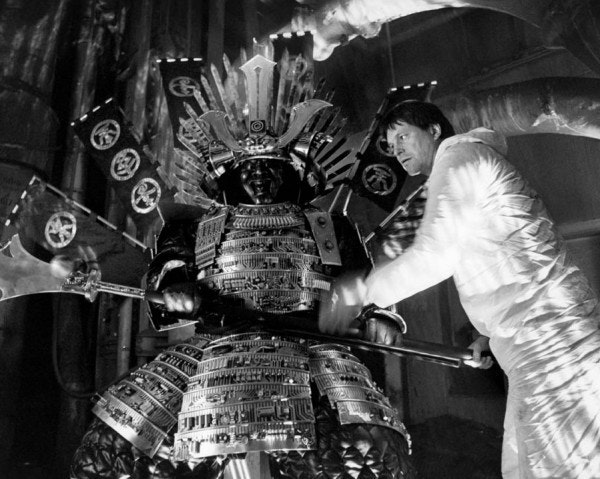
The movie is very hard to follow. I have seen it twice, and am still not sure exactly who all the characters are, or how they fit.
Perhaps it is not supposed to be clear; perhaps the movie's air of confusion is part of its paranoid vision. There are individual moments that create sharp images (shock troops drilling through a ceiling, De Niro wrestling with the almost obscene wiring and tubing inside a wall, the movie's obsession with bizarre duct work), but there seems to be no sure hand at the controls.
The best scene in the movie is one of the simplest, as Sam moves into half an office and finds himself engaged in a tug-of-war over his desk with the man through the wall. I was reminded of a Chaplin film, "Modern Times," and reminded, too, that in Chaplin economy and simplicity were virtues, not the enemy.
ROGER EBERT (1986)
To join our mailing list email us at:
info@cine-real.com
THE BIRDS (JUNE 2021)
Alfred Hitchcock has concocted an elaborate tease in The Birds, as if to prove that suspense and thrills can be induced as much by the expectation of horror as by horror itself. What audiences are expecting and shiveringly hoping for — after Psycho — is more of the same.Deliberately, Hitchcock prolongs his prelude to horror for more than half the film, playing with audience suspense with comedy and romance while he sets his stage. The horror, when it comes, is a hair-raiser, and audiences should take to the Universal release with satisfying response.
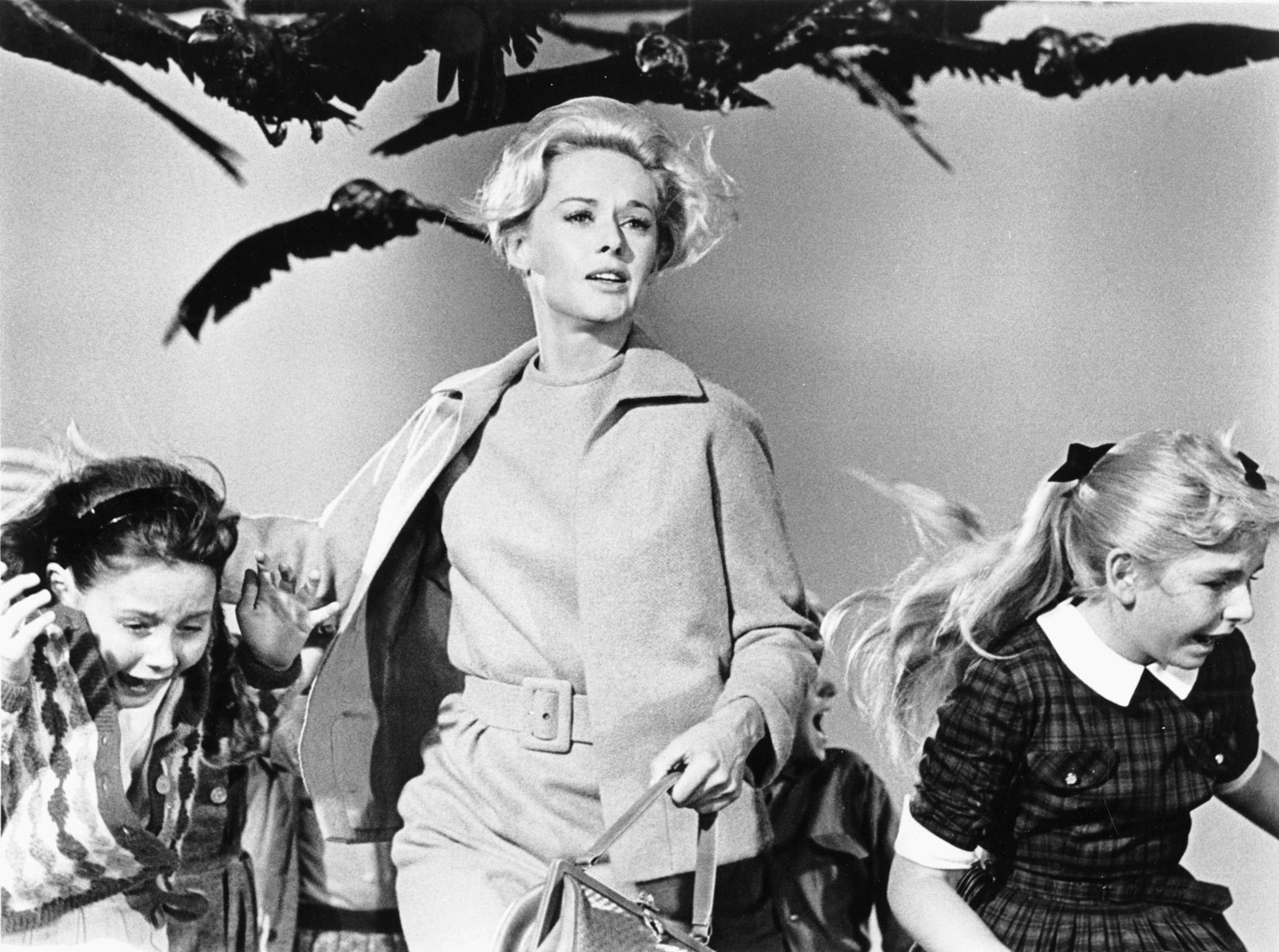
Based on a story by Daphne du Maurier, the Evan Hunter screenplay has for its premise an assault on the human race — or an isolated segment of it — by the birds, our feathered friends. The film starts with a sophisticated flirtation between Rod Taylor and “Tippi” Hedren in the glamor of San Francisco, then shifts to Taylor’s Northern California seaside home, a setting of quiet, pastoral beauty, for family complications.Characters and background are laid in with detail. The Birds up to the halfway mark might easily be a romantic comedy drama. The change comes when birds of all descriptions — principally, it seems, crows and sea gulls — begin to attack in flocks, the humans of the town. In the end the birds rout the humans and Hitchcock’s long, last shot (which exhibitors will probably compress) is of the birds in possession. Hitchcock and Hunter make no symbolism of their story.
Like most good horror stories it is based on a simple “what [if]” premise, with the abnormal substituted for the normal. The revolt of the birds, acting contrary to nature and their established habits, is convincingly presented. The fact that birds are the last element of nature one expects to turn on man only underlines the horror. If you can’t trust birds, who can you trust? There is only one chink in the premise.
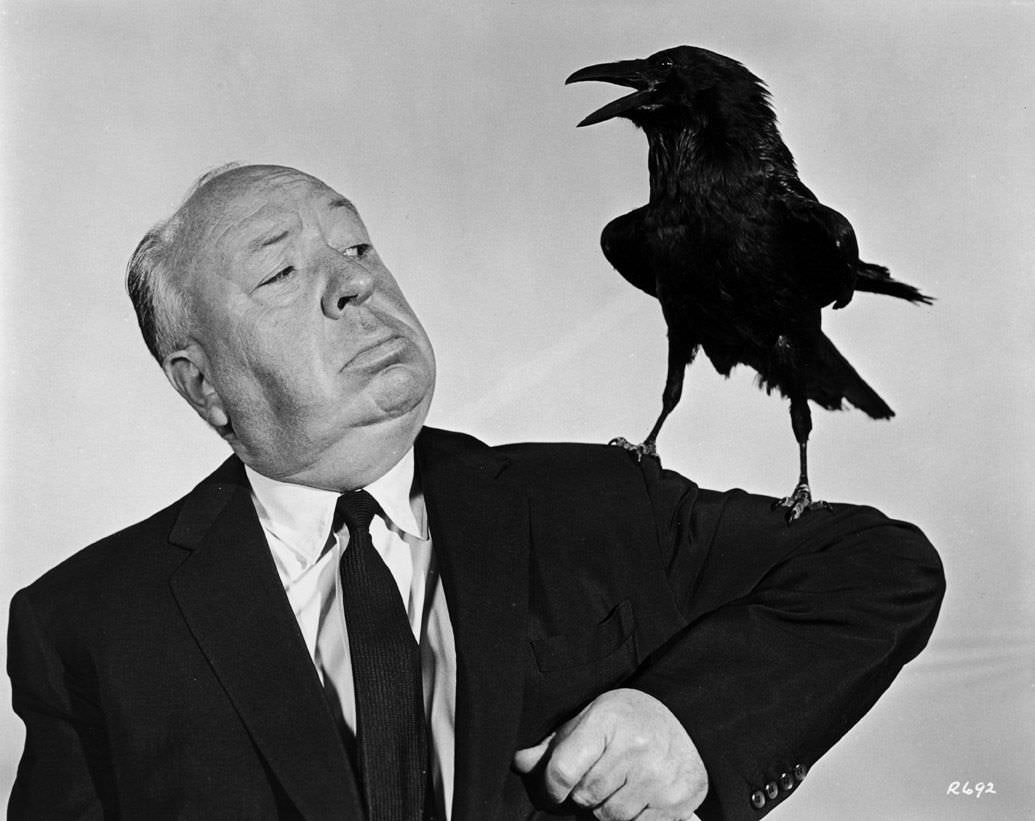
That is the unanswered and unposed question of why nobody ever gets a gun and blasts away at the winged assault. Rod Taylor and a newcomer, Miss Hedren, play the romantic leads. Taylor is strong and convincing. Miss Hedren, a cool, blond beauty in the Hitchcock tradition, handles herself with finesse and is promising. Jessica Tandy gives an outstanding performance as Taylor’s neurotic mother. Suzanne Pleshette is strong as Taylor’s former girlfriend. Veronica Cartwright is good as Taylor’s young sister. Ethel Griffies is specially memorable as a bird authority. Doreen Lang has a good cameo she handles with force. Others helpful include Charles McGraw, Ruth McDevitt, Joe Mantell, Karl Swenson, Malcolm Atterbury, Elizabeth Wilson, Lonny Chapman, John McGovern and Richard Deacon. Robert Burks’ Technicolor photography is fine, catching the serenity soon to be shattered of the Northern California locale. His menacing shots of crows thickly clustered on a children’s playground bristle with terror.
The “musical” score, an electronic composition by Remi Gassmann and Oskar Sala, gives aural life to the visual compositions.Sets chosen or designed by Robert Boyle, with set decoration by George Milo, are greatly helpful. Sound, by Waldon O. Watson and William Russell, is good, and George Tomasini’s editing insures the cumulative tempo. Edith Head, with the problem of designing a single costume for Miss Hedren to wear throughout, has surmounted the potential monotony neatly. — James Powers, originally published on March 28, 1963.
To join our mailing list email us at:
info@cine-real.com
DR STRANGELOVE (MAY, 2021)
Every time you see a great film, you find new things in it. Viewing Stanley Kubrick's "Dr. Strangelove" for perhaps the 10th time, I discovered what George C. Scott does with his face. His performance is the funniest thing in the movie--better even than the inspired triple performance by Peter Sellers or the nutjob general played by Sterling Hayden--but this time I found myself paying special attention to the tics and twitches, the grimaces and eyebrow archings, the sardonic smiles and gum-chewing, and I enjoyed the way Scott approached the role as a duet for voice and facial expression.
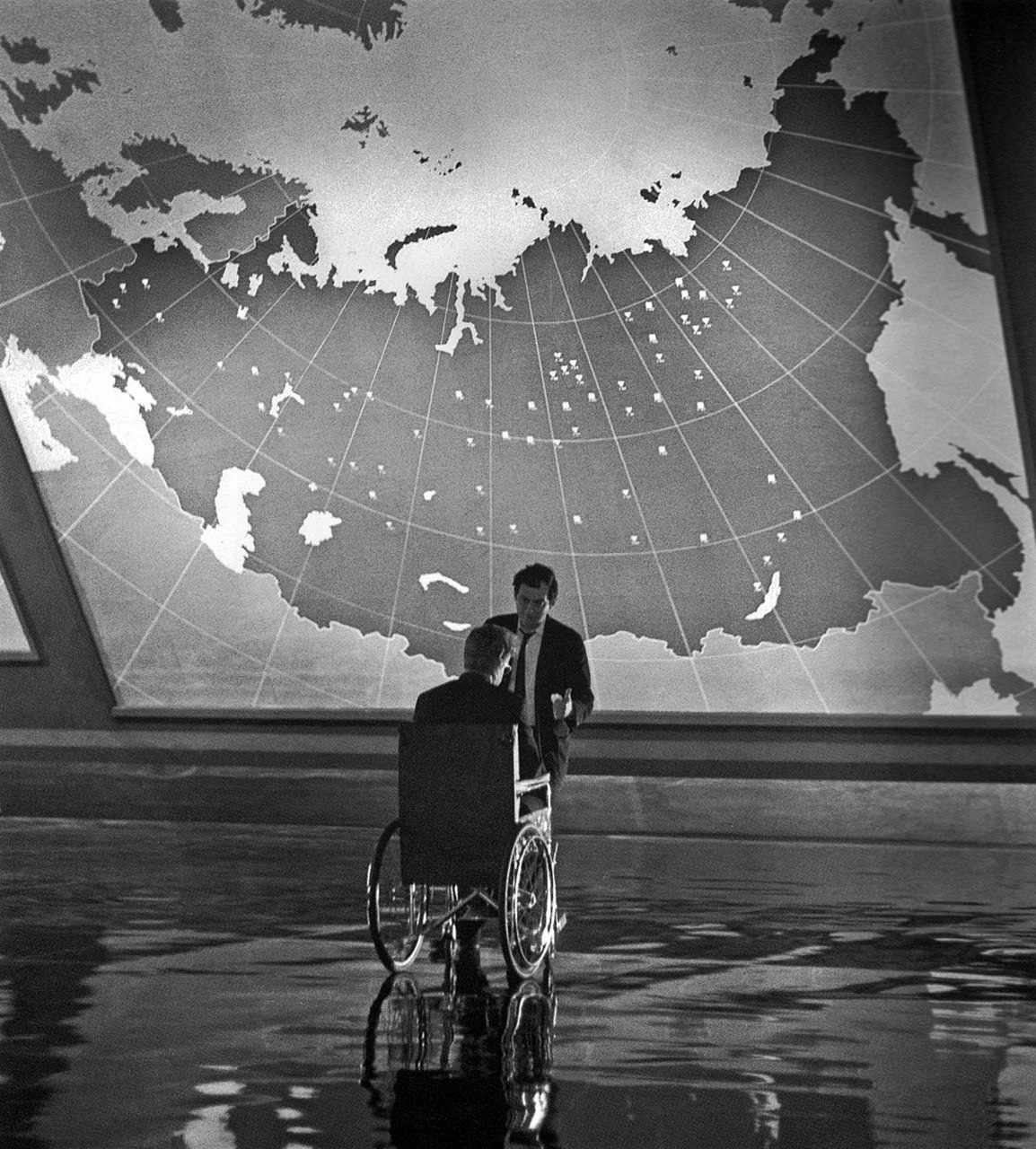
That can be dangerous for an actor. Directors often ask actors to underplay closer shots, because too much facial movement translates into mugging or overacting. Billy Wilder once asked Jack Lemmon for "a little less" so many takes in a row that Lemmon finally exploded: "Whaddya want! Nothing?" Lemmon recalls that Wilder raised his eyes to heaven: "Please God!" Kubrick, whose attention to the smallest detail in every frame was obsessive, would have been aware of George C. Scott's facial gymnastics, and yet he endorsed them, and when you watch "Strangelove" you can see why.
Scott's work is hidden in plain view. His face here is so plastic and mobile it reminds you of Jerry Lewis or Jim Carrey (in completely different kinds of movies). Yet you don't consciously notice his expressions because Scott sells them with the energy and conviction of his performance. He means what he says so urgently that the expressions accompany his dialogue instead of distracting from it. Consider the scene where his character, Gen. Buck Turgidson, is informing the president that it is quite likely a B-52 bomber will be able to fly under Russian radar and deliver its payload even though the entire Soviet air force knows where the plane is headed. "He can barrel in that baby so low!" Scott says, with his arms spread wide like wings, and his head shaking in admiration at how good his pilots are--so good one of them is about to bring an end to civilization.
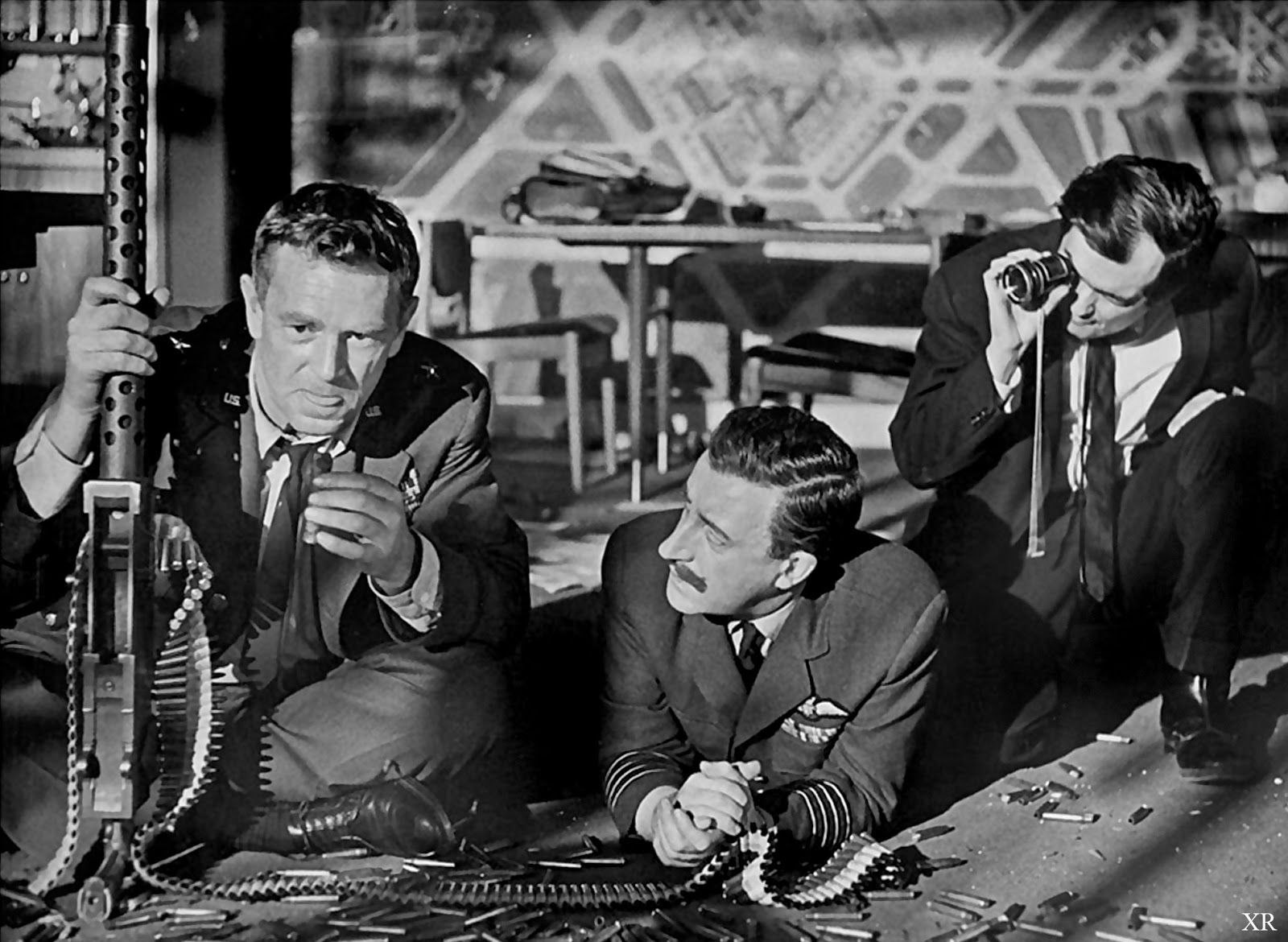
Another actor, waving his arms around, might look absurd. Scott embodies the body language so completely that it simply plays as drama (and comedy). In another scene, scurrying around the War Room, he slips, falls to a knee, rights himself, and carries on. Kubrick the perfectionist left the unplanned slip in the film, because Scott made it seem convincing, and not an accident.
"Dr. Strangelove" (1964) is filled with great comic performances, and just as well, because there's so little else in the movie apart from faces, bodies and words. Kubrick shot it on four principal locations (an office, the perimeter of an Air Force base, the "War Room," and the interior of a B-52 bomber). His special effects are competent but not dazzling (we are obviously looking at model planes over Russia). The War Room, one of the most memorable of movie interiors, was created by Ken Adam out of a circular desk, a ring of lights, some back-projected maps, and darkness. The headquarters of Gen. Jack D. Ripper, the haywire Air Force general, is just a room with some office furniture in it.
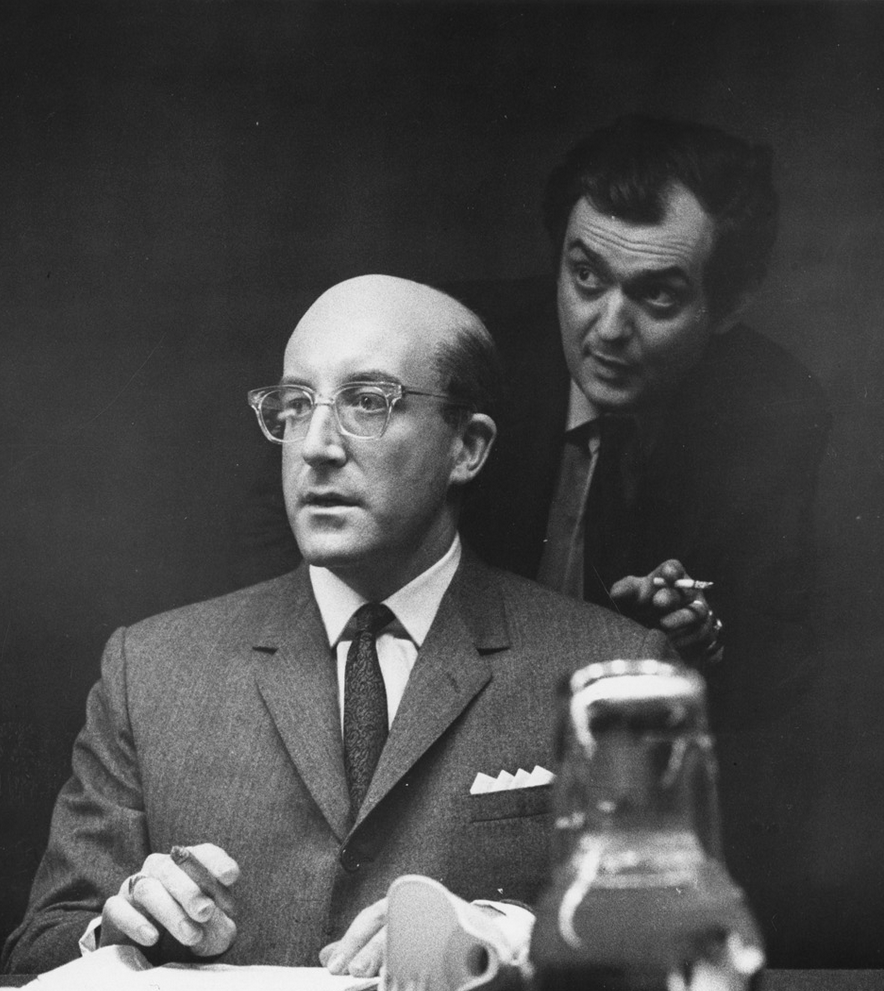
Yet out of these rudimentary physical props and a brilliant screenplay (which Kubrick and Terry Southern based on a novel by Peter George), Kubrick made what is arguably the best political satire of the century, a film that pulled the rug out from under the Cold War by arguing that if a "nuclear deterrent" destroys all life on Earth, it is hard to say exactly what it has deterred.
"Dr. Strangelove's" humor is generated by a basic comic principle: People trying to be funny are never as funny as people trying to be serious and failing. The laughs have to seem forced on unwilling characters by the logic of events. A man wearing a funny hat is not funny. But a man who doesn't know he's wearing a funny hat ... ah, now you've got something.
The characters in "Dr. Strangelove'' do not know their hats are funny. The film begins with Gen. Ripper (Sterling Hayden) fondling a phallic cigar while launching an unauthorized nuclear strike against Russia. He has become convinced that the commies are poisoning "the purity and essence of our natural fluids" by adding fluoride to the water supply. (Younger viewers may not know that in the 1950s this was a widespread belief.) Ripper's nuclear strike, his cigar technique and his concern for his "precious bodily fluids" are so entwined that they inspire unmistakable masturbatory associations.
The only man standing between Ripper and nuclear holocaust is a British liaison, Group Captain Mandrake (Sellers), who listens with disbelief to Rippers' rantings. Meanwhile, Ripper's coded message goes out to airborne B-52s to launch an attack against Russia. A horrified President Muffley (Sellers again) convenes his advisers in the War Room and is informed by Turgidson, bit by reluctant bit, of the enormity of the situation: The bombers are on the way, they cannot be recalled, Gen. Ripper cannot be reached, and so on. Eventually, Muffley calls the Russian premiere to confess everything ("Dimitri, we have a little problem ... ").
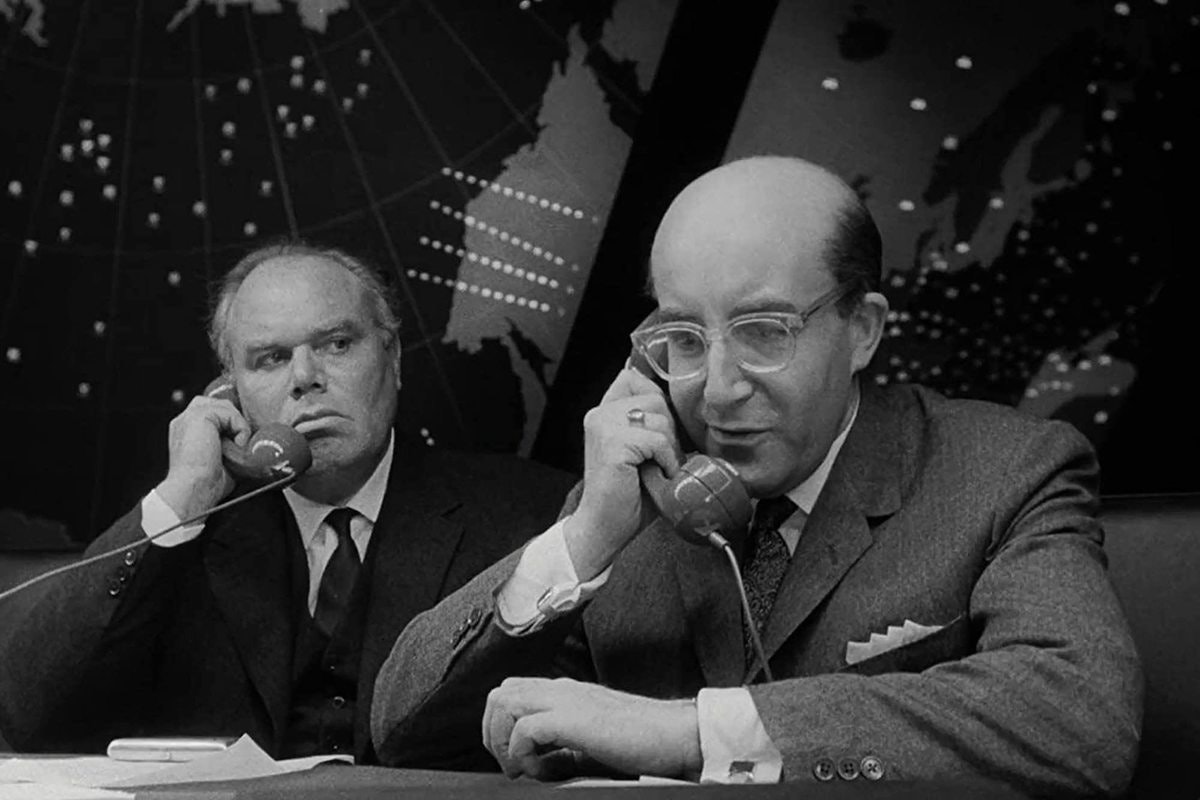
Other major players include the sinister strategist Dr. Strangelove (Sellers a third time), a character whose German accent now evokes Henry Kissinger, although in 1964 nuclear think-tanker Herman Kahn was the likely target. Strangelove's black-gloved right hand is an unruly weapon with a will of its own, springing into Nazi salutes and trying to throttle Strangelove to death. Action in the War Room and on the Air Force base is intercut with the B-52 cockpit, ruled by Major T.J. "King" Kong (Slim Pickens); when he's told by his radio man that the order to attack has come through, he tells them, "No horsin' around on the airplane!"
Major Kong was intended to be Sellers' fourth role, but he was uncertain about the cowboy accent. Pickens, a character actor from westerns, was brought in by Kubrick, who reportedly didn't tell him the film was a comedy. Pickens' patriotic speeches to his crew (and his promises of promotion and medals) are counterpoint to the desperate American efforts to recall the flight.
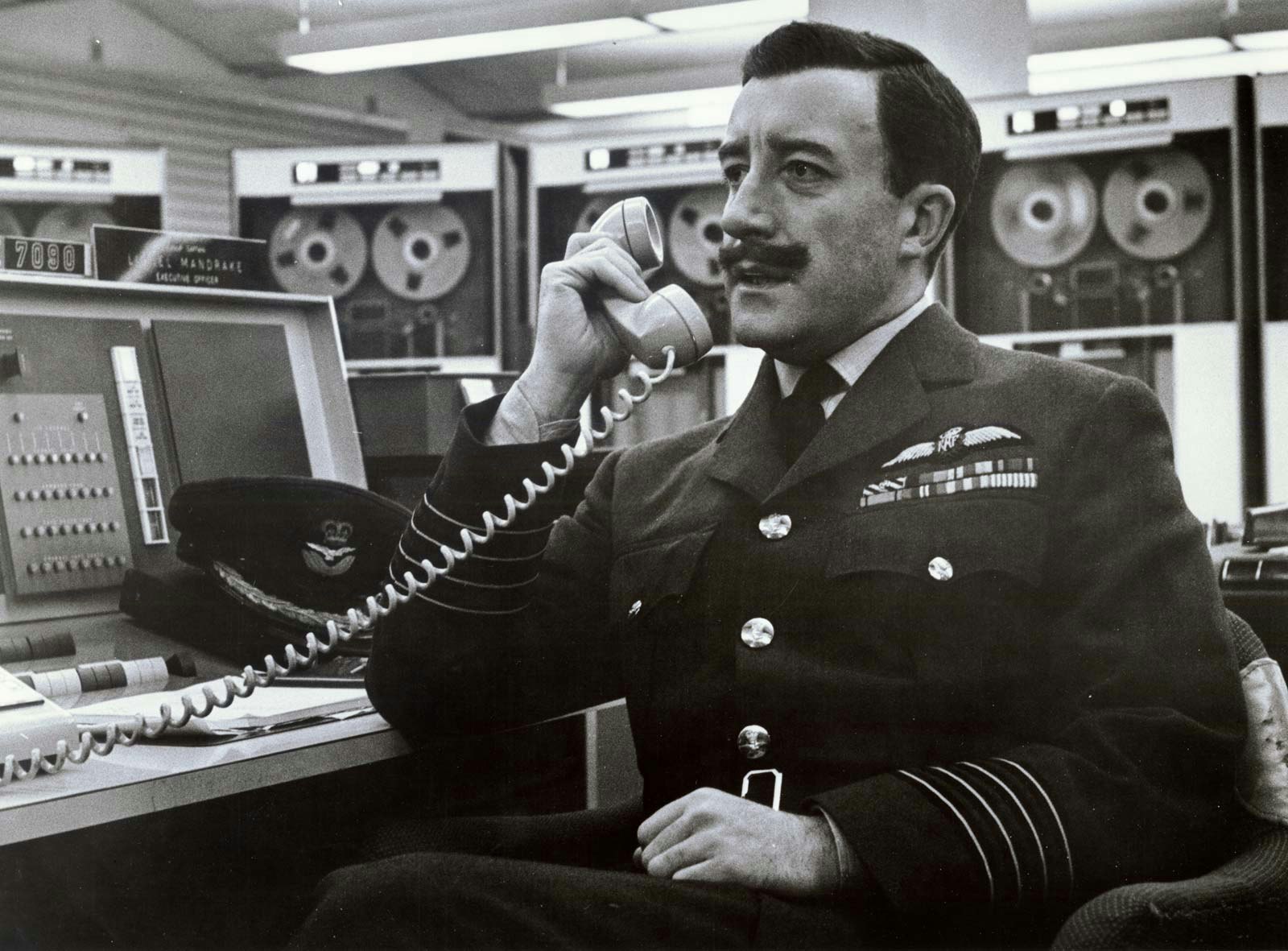
I've always thought the movie ends on an unsure note. After the first nuclear blast, Kubrick cuts back to the War Room, where Strangelove muses that deep mines could be used to shelter survivors, whose descendants could return to the surface in 90 years (Turgidson is intrigued by the 10-to-1 ratio of women to men). Then the film abruptly ends in its famous montage of many mushroom clouds, while Vera Lynn sings "We'll Meet Again."
It seems to me there should be no more dialogue after the first blast; Strangelove's survival strategy could be moved up to just before Slim Pickens' famous bareback ride to oblivion. I realize there would be a time lapse while Russian missiles responded to the attack, but I think the film would be more effective if the original blast brought an end to all further story developments. (Kubrick originally planned to end the film with a pie fight, and a table laden with pies can be seen in the background of the War Room, but he wisely realized that his purpose was satire, not slapstick.)
"Dr. Strangelove" and "2001: A Space Odyssey" (1968) are Kubrick's masterpieces. The two films share a common theme: Man designs machinery that functions with perfect logic to bring about a disastrous outcome. The U.S. nuclear deterrent and the Russian "doomsday machine" function exactly as they are intended, and destroy life on earth. The computer HAL 9000 serves the space mission by attacking the astronauts.
Stanley Kubrick himself was a perfectionist who went to obsessive lengths in order to get everything in his films to work just right. He owned his own cameras and sound and editing equipment. He often made dozens of takes of the same shot. He was known to telephone projectionists to complain about out-of-focus screenings. Are his two best films a nudge in his own ribs?
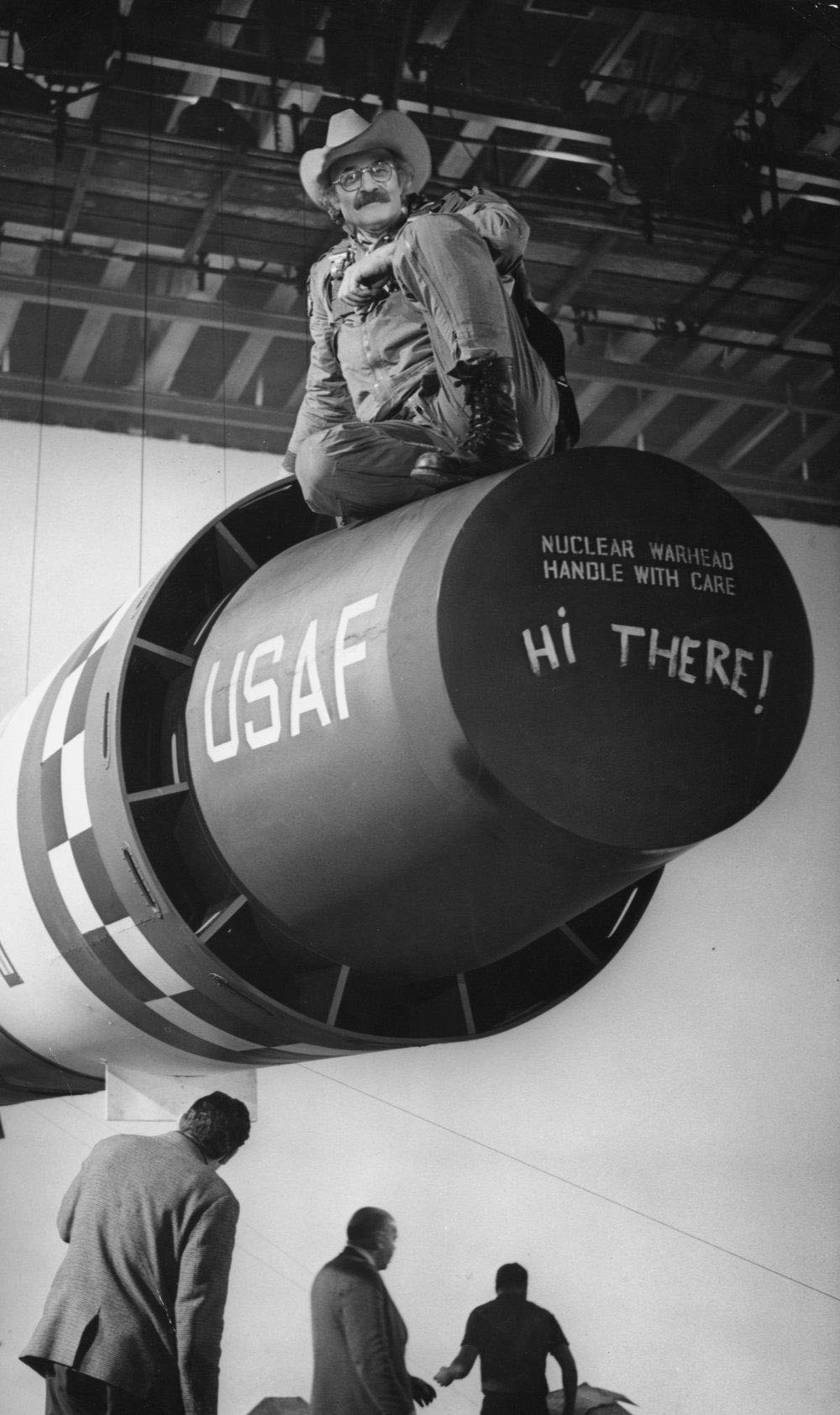
-----------------------------------------------
Our Halloween Special screenings were a wonderful Technicolour print of the Hammer Horror's DRACULA (1958) and Tobe Hooper's grizzly TEXAS CHAINSAW MASSACRE (1974) on a feature length super 8mm print all at the beautiful Castle Cinema.
DRACULA
For a Halloween treat, Ciné-Real are screening this lovely Technicolour print of the 1958 Hammer Dracula, a fierce melodrama directed by Terence Fisher with Christopher Lee tremendously charismatic as the unspeakable Count, and Peter Cushing playing his enemy, Professor Van Helsing. It's madly over-the-top, with Dracula's lovely brides resplendent in their naughty nighties and negligées, and there is much hammy "reaction" acting - one character reacts to the contents of Dracula's coffin as if he has been jabbed in the buttocks with an electric cattle-prod. But it's often entertainingly creepy in a twilit world of its own.
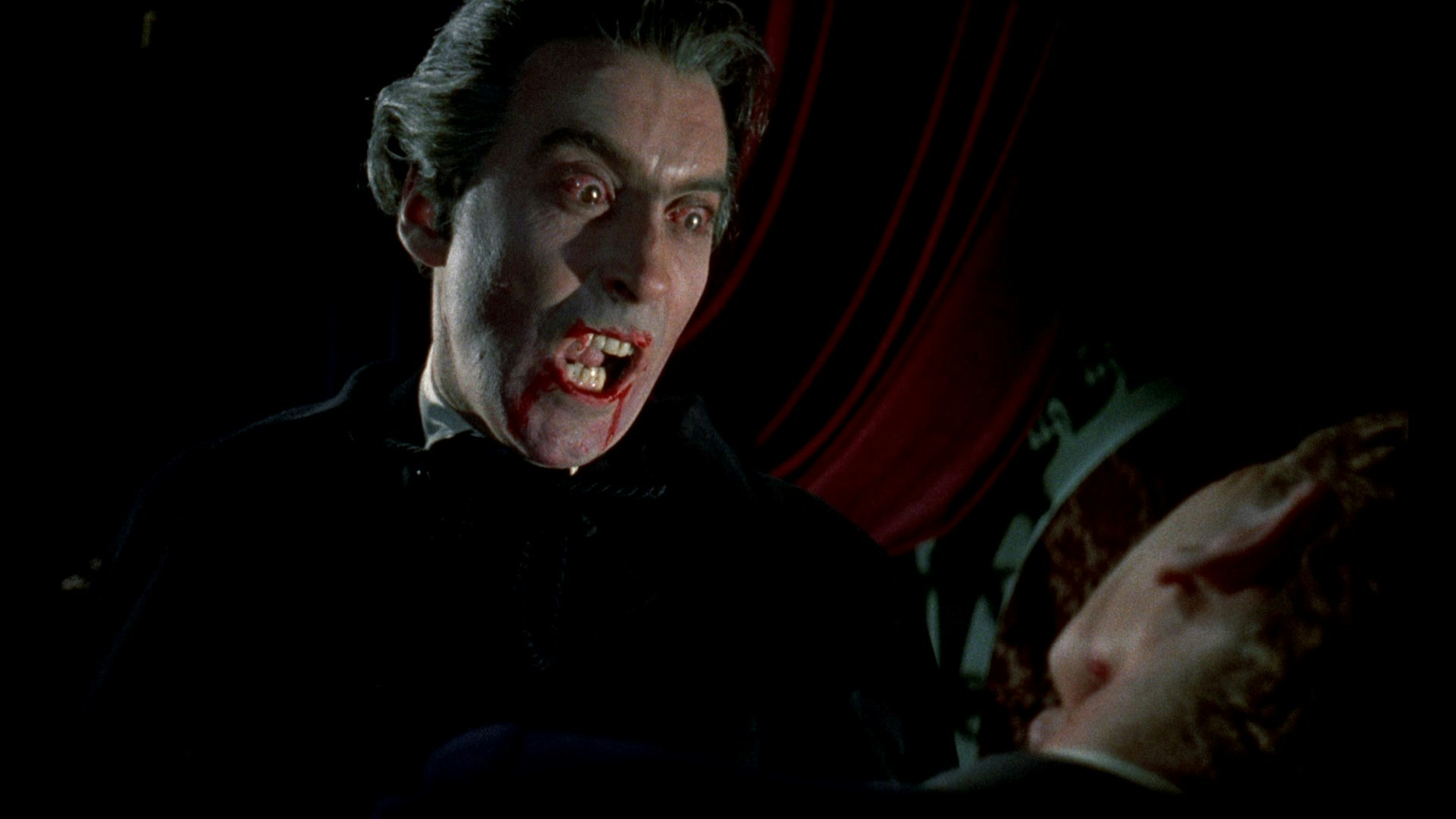
Jimmy Sangster pacily adapts Bram Stoker's novel, speeding matters up by placing Professor Van Helsing's base not in Yorkshire but in Germany, a country which here appears to have a very, very slackly policed border with the sovereign state of Transylvania. Character actor Miles Malleson has a strange cameo as an undertaker who has temporary charge of Dracula's casket. Interestingly, Sangster's script compares vampirism to drug addiction, explicitly bringing forward its metaphorical properties. For me it called to mind, yet again, Abel Ferrara's superb horror-comic movie about vampires: The Addiction. This Hammer classic will be good for a laugh, and some shivers. - Peter Bradshaw
TEXAS CHAINSAW MASSACRE (1974)
Now here’s a grisly little item. “The Texas Chainsaw Massacre” is as violent and gruesome and blood-soaked as the title promises -- a real Grand Guignol of a movie. It’s also without any apparent purpose, unless the creation of disgust and fright is a purpose. And yet in its own way, the movie is some kind of weird, off-the-wall achievement. I can’t imagine why anyone would want to make a movie like this, and yet it’s well-made, well-acted, and all too effective.
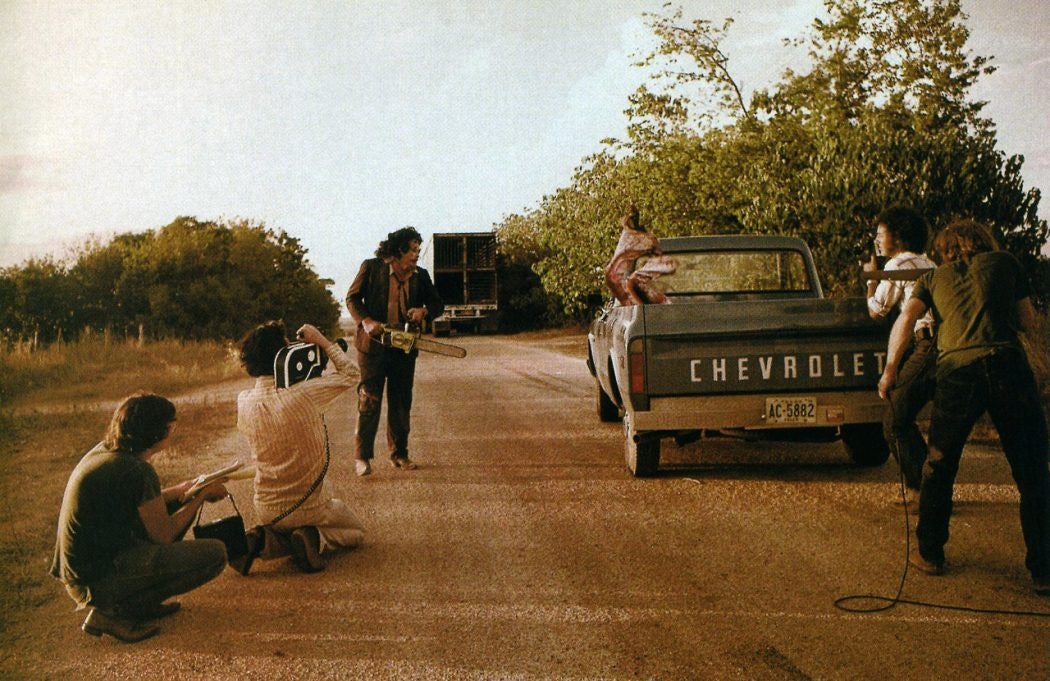
The movie’s based on factual material, according to the narration that opens it. For all I know, that’s true, although I can’t recall having heard of these particular crimes, and the distributor provides no documentation. Not that it matters. A true crime movie like Richard Brooks’ “In Cold Blood,” which studies the personalities and compulsions of two killers, dealt directly with documented material and was all the more effective for that. But “The Texas Chainsaw Massacre” could have been made up from whole cloth without any apparent difference. No motivation, no background, no speculation on causes is evident anywhere in the film. It’s simply an exercise in terror.
It takes place in an isolated area of Texas, which five young people (one of them in a wheelchair) are driving through in their camper van. They pick up a weirdo hitchhiker who carries his charms and magic potions around his neck and who giggles insanely while he cuts himself on the hand and then slices at the paraplegic. They get rid of him, so they think.
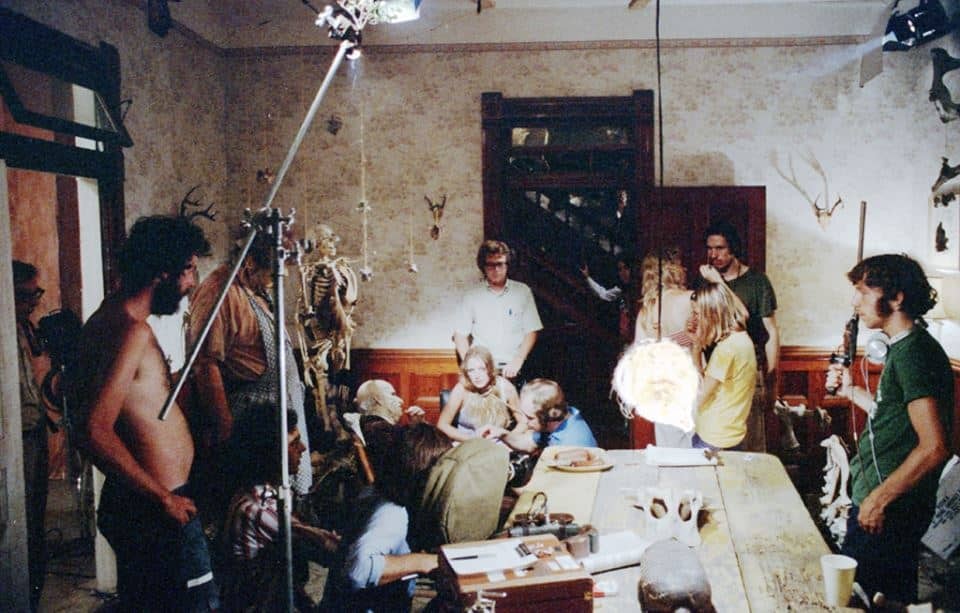
But then they take a side trip to a haunted-looking old house, which some of them had been raised in. The two girls laugh as they clamber through the litter on the floor, but one of the guys notices some strange totems and charms which should give him warning. They don’t. He and his girlfriend set off for the old swimming hole, find it dried up, and then see a farmhouse nearby. The guy goes to ask about borrowing some gasoline and disappears inside.
His girl gets tired of waiting for him, knocks on the door, and disappears inside, too. A lot of people are going to be disappearing into this house, and its insides are a masterpiece of set decoration and the creation of mood. We see the innocent victims being clubbed on the hand, hung from meat hooks, and gone after with the chainsaw.
We see rooms full of strange altars made from human bones, and rooms filled with chicken feathers and charms and weird relics. And gradually we realize that the house is inhabited by a demented family of retarded murderers and grave robbers. When they get fresh victims, they carve them up with great delight. What they do with the bodies is a little obscure, but, uh, they run a barbecue stand down by the road.
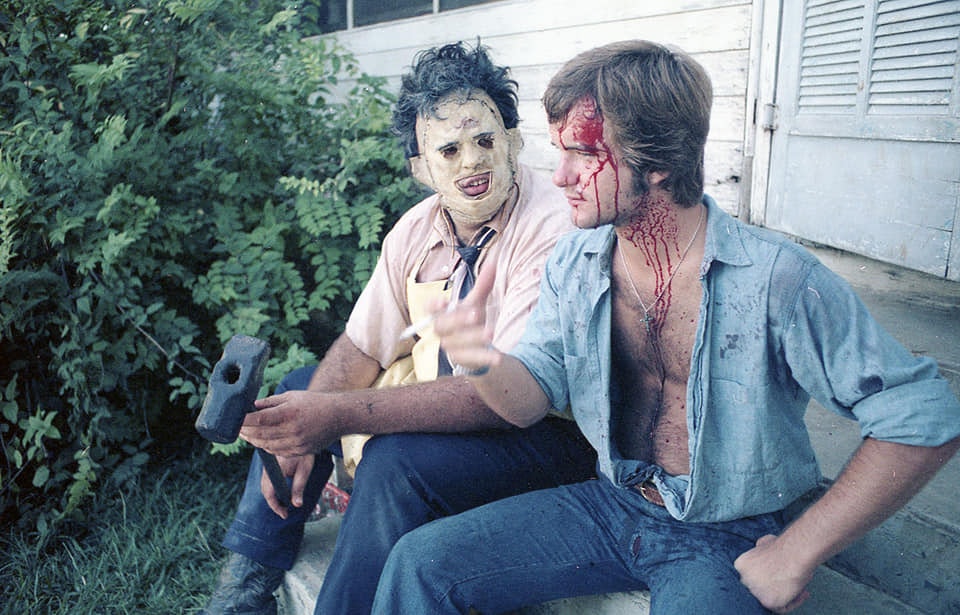
One way or another, all the kids get killed by the maniac waving the chain saw -- except one girl, who undergoes a night of panic and torture, who escapes not once but twice, who leaps through no fewer than two windows, and who screams endlessly. All of this material, as you can imagine, is scary and unpalatable. But the movie is good technically and with its special effects, and we have to give it grudging admiration on that level, despite all the waving of the chainsaw.
There is, for example, an effective montage of quick cuts of the last girl’s screaming face and popping eyeballs. There are bizarrely effective performances by the demented family (one of them, of course, turns out to be the hitchhiker, and Grandfather looks like Dustin Hoffman in “Little Big Man”). What we’re left with, though, is an effective production in the service of an unnecessary movie.
Horror and exploitation films almost always turn a profit if they’re brought in at the right price. So they provide a good starting place for ambitious would-be filmmakers who can’t get more conventional projects off the ground. “The Texas Chainsaw Massacre” belongs in a select company (with “Night of the Living Dead” and “Last House on the Left”) of films that are really a lot better than the genre requires. Not, however, that you’d necessarily enjoy seeing it.
Roger Ebert, 1974
JAWS (1975)
First things first; Jaws is not about a shark. It may have a shark in it – and indeed all over the poster, the soundtrack album, the paperback jacket and so on. It may have scared a generation of cinemagoers out of the water for fear of being bitten in half by the “teeth of the sea”. But the underlying story of Jaws is more complex than the simple terror of being eaten by a very big fish. As a novel, it reads like a morality tale about the dangers of extramarital sex and the inability of a weak father to control his family and his community. As a film, it has been variously interpreted as everything from a depiction of masculinity in crisis to a post-Watergate paranoid parable about corrupt authority figures. But as a cultural phenomenon, the real story of Jaws is how a B-movie-style creature-feature became a genre-defining blockbuster that changed the face of modern cinema. In the wake of the epochal opening of Jaws 40 years ago, the film industry would find itself on the brink of a brave new world wherein saturation marketing and mall-rat teen audiences were the keys to untold riches. To this day, many consider the template of contemporary blockbuster releases to have been laid down in the summer of 1975 by a movie that redefined the parameters of a “hit” – artistically, demographically, financially.
According to David Brown, one of the film’s producers: “Almost everyone remembers when they first saw Jaws. They say, I remember the theatre I was in, I remember what I did when I went home – I wouldn’t even draw the bathwater.” I was no exception. I first saw the movie at the ABC Turnpike Lane in north London at the age of 12. It was a Sunday afternoon and I’d had to catch two separate buses to get to the cinema. I sat on the right-hand side of the packed auditorium and I remember very clearly finding the opening sequence so alarming that I wasn’t sure I’d be able to get through the rest of the film. As I told director Steven Spielberg several decades later, watching poor Susan Backlinie being dragged violently back and forth by an unseen underwater assailant, screaming blue murder, I genuinely feared that I would lose control of my bodily functions (“I like that!” laughed the director).
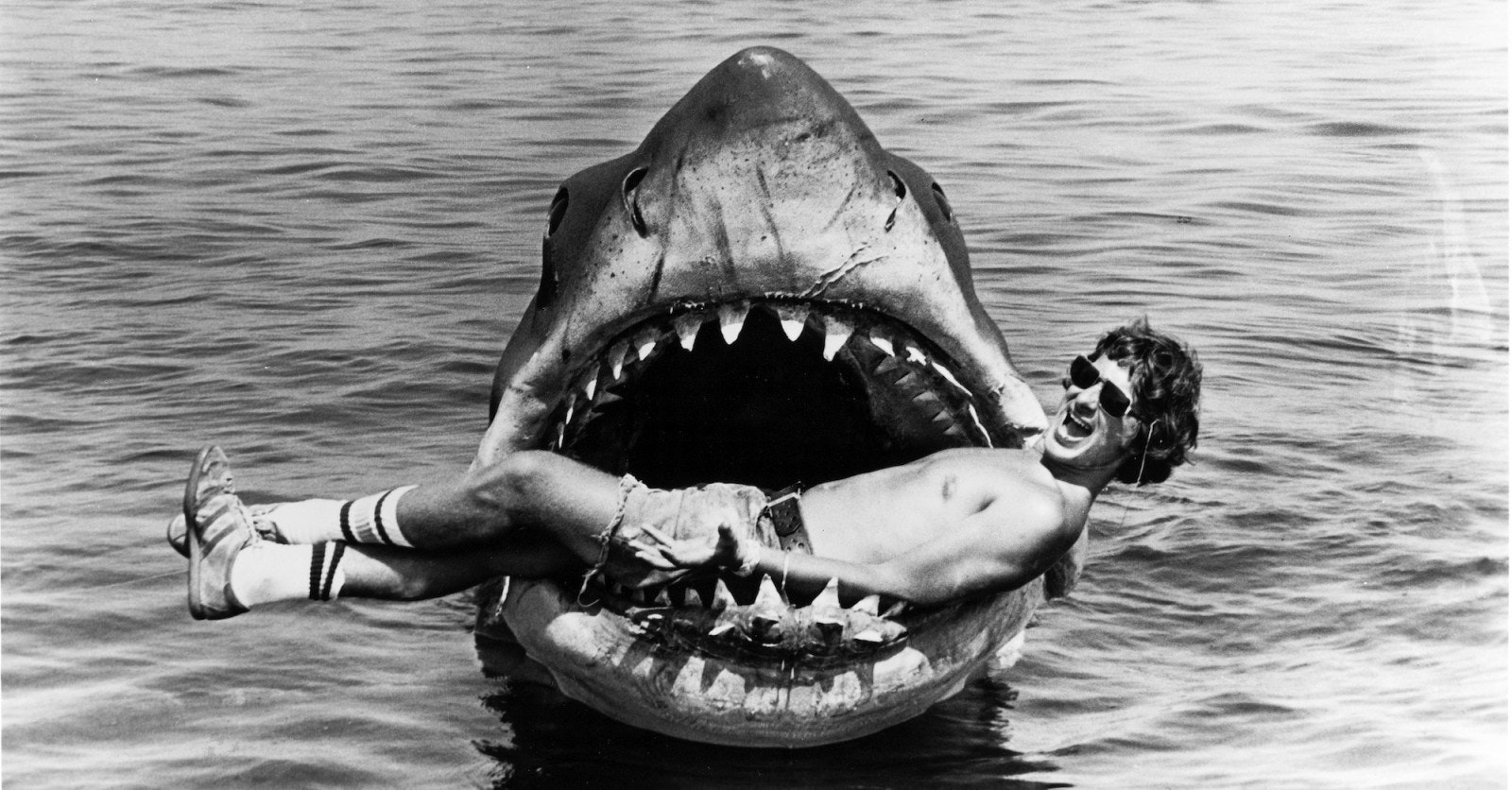
The lenient A certificate had meant that I’d been able to see the movie on my own, without an accompanying parent or guardian, merely the warning that “the film may be unsuitable for young children”. But the entire cinema seemed utterly traumatised by that unforgettable opening sequence, and in the wake of this ruthlessly efficient curtain-raiser (you see nothing, but fear everything), two people hurried to the exit. As they left, I remember whispering to myself in a state of sublime terror: “I am never going swimming again, I am never going swimming again…”
This, of course, had been the reaction of millions of cinemagoers in the US, where Jaws had become a summer movie sensation. In his influential essay, The New Hollywood, film historian Thomas Schatz notes that Jaws “recalibrated the profit potential of the Hollywood hit and redefined its status as a marketable commodity and cultural phenomenon as well”. Significantly, it achieved this success at a time when “most calculated hits were released during the Christmas holidays”. Not so Jaws, which according to David Brown was “deliberately delayed until people were in the water off the summer beach resorts”. Indeed, one of the film’s most memorable tag-lines was “See it before you go swimming!”. Yet it wasn’t just the resorts where Jaws showed its box‑office teeth.
Despite the fact that the summer months had traditionally been slow for cinemas (why go to the movies when the sun is shining?), Spielberg’s brilliantly constructed shocker struck a nerve with young audiences whose natural environment was not the beach but the shopping mall. Between 1965 and 1970, the number of malls in America had grown from 1,500 to 12,500 and Jaws rode high on the growing wave of multiplex cinemas that these urban meccas increasingly housed. Along with confirming “the viability of the summer hit, indicating an adjustment in seasonal release tactics”, Schatz also argues that Jaws struck a chord with a new generation of moviegoers who had “time and spending money and a penchant for wandering suburban shopping malls and for repeated viewings of their favourite films”. It didn’t hurt that these malls were air-conditioned, with the multiplex cinemas they increasingly housed providing a cool alternative to the sweltering summer heat.
In the wake of Jaws’s extraordinary success, film-makers and studios started to see the summer months not as dog days but as prime time, something that had previously only been true for the declining drive-in market. “The summer blockbuster was born on 20 June 1975, when Jaws opened wide,” wrote the Financial Times’s Nigel Andrews, adding: “In the years after Jaws, the entire release calendar changed.”
This change was apparently confirmed two years later by the May 1977 opening of George Lucas’s Star Wars, with its sequels The Empire Strikes Back and Return of the Jedi setting new benchmarks for seasonal franchise profitability. In the process, Steven Spielberg and George Lucas became two of the most influential people in Hollywood, the men who, according to popular folklore, had invented the “summer blockbuster”.

Jaws opened across North America on 464 screens amid an unprecedented publicity blitz: $2.5m was spent on promotion, a substantial chunk of which went on TV advertising, still a novelty at that time. Promotional tie-ins, including Jaws-themed ice-creams, were everywhere. I remember being on holiday in the Isle of Man long before the film’s UK opening (it didn’t arrive here until December) and buying the novel, the T-shirt and a garish Jaws pendant, all on the strength of the insane levels of news coverage that the film’s US opening provoked. “Lifeguards were falling asleep at their stations,” remembered the film’s other producer, Richard Zanuck, “because nobody was going in the water; they were on the beach reading their book”. In the first 38 days of its release, Jaws sold 25m tickets; its rentals in 1975 were a record-breaking $102.5m. When adjusted for inflation, the film’s total worldwide box office is now estimated at close to $2bn.
Such staggering success proved game-changing, establishing the financial merit of the “front-loading” strategy, which used saturation marketing to turn a movie into an event. According to Carl Gottlieb, who shares Jaws’s screenwriting credit with Peter Benchley: “That notion of selling a picture as an event, as a phenomenon, as a destination, was born with that release.”
Today, received wisdom has it that Jaws essentially redefined the economic models of Hollywood. This change led to some staggering box-office bonanzas, but it has come at a price. “My husband keeps citing this as the movie that changed the way movies are made,” says Jaws actress (and wife of former Universal boss Sid Sheinberg) Lorraine Gary (Ellen Brody) in the 1997 BBC documentary In the Teeth of Jaws. “It got us to where we are today, which is, if it’s not a hundred-million-dollar movie, it doesn’t get the kind of support it needs from the studio. It was a good thing at the time [but] it’s an awful legacy to now have everyone used to an enormous hit-you-over-the-head television campaign which costs so much money.”
Whether or not Jaws really did change the film industry for ever is one of the subjects to be debated at the Jaws 40th Anniversary Symposium at De Montfort University, Leicester, later in June. Here, prominent academics Peter Krämer and Sheldon Hall will go head to head on the still-heated question of whether Jaws was indeed the “first blockbuster” (Hall thinks not), while others debate subjects as esoteric as “masculinity and crisis in Jaws”, “Jaws and eco-feminism” and (most tantalisingly) “Jaws: the case of the archetypal American villain as queer dissident attacking the heteronormative”.
Conference convener Ian Hunter says that the purpose of the event is to investigate the movie’s progress from popcorn hit to cinema classic. “The thing about Jaws is that it’s open to so many interpretations,” says Hunter. “It can be about Watergate, or the bomb, or masculinity, or whatever. Some critics have claimed that it marks the point that Hollywood became more interested in archetypes than characters, but it was also the birth of a new kind of family film. I remember seeing it in Plymouth on Boxing Day 1975 and thinking that this was really a film for us, for the generation of The Towering Inferno and Earthquake, offering the kind of thrills that had previously been the domain of X-rated movies. For me, it remains one of the truly great and lasting classics of American cinema, a perfect piece of movie-making.”
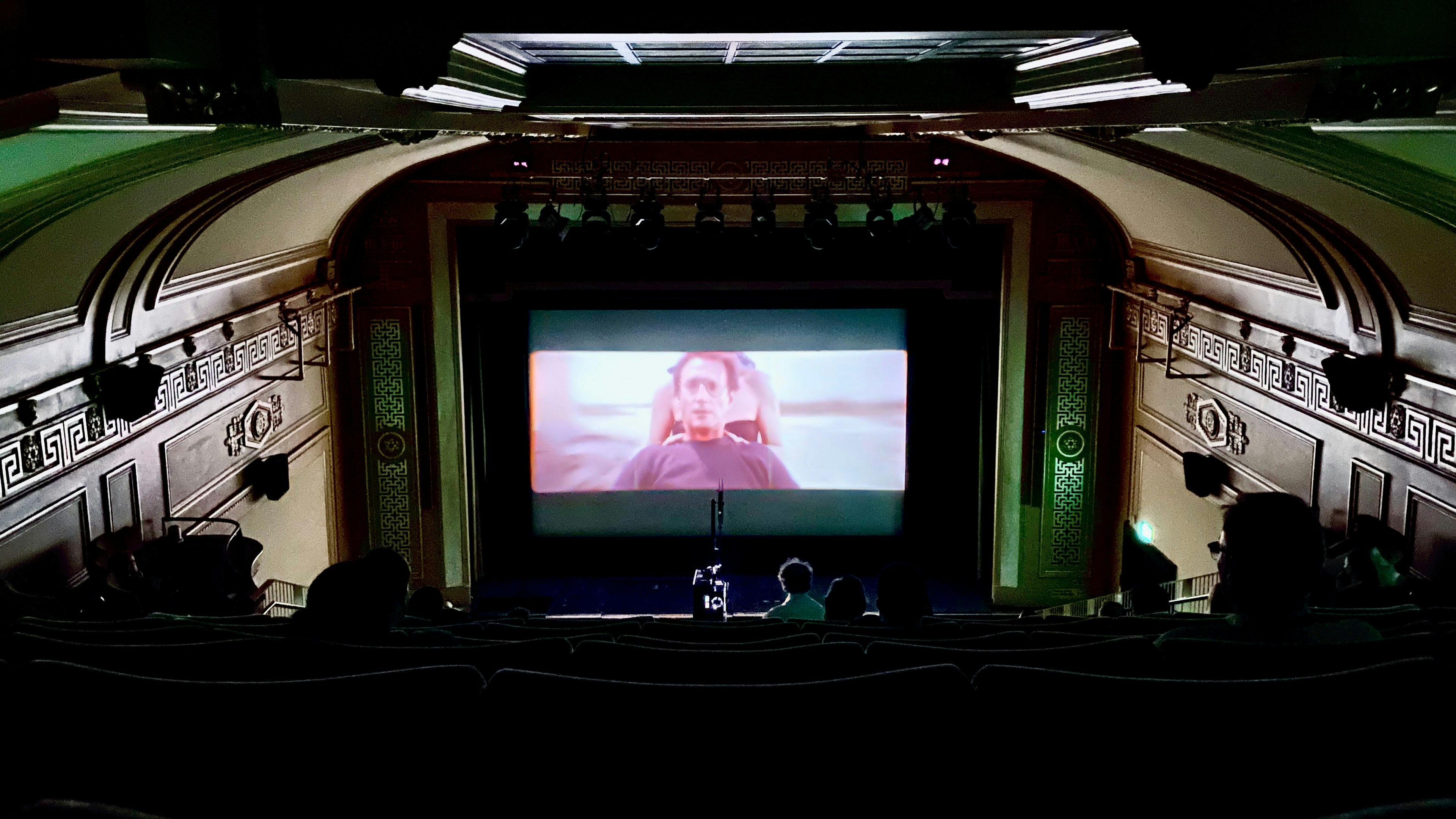
Jaws began life as a 1974 novel by Peter Benchley about a seaside resort named Amity that is terrorised by a great white shark. Police chief Martin Brody, played by Roy Scheider in the film, orders the beaches to be closed, but the mayor and local businessmen insist they stay open – with tragic results. Eventually, Brody is forced to take to the sea with professional shark hunter Quint (Robert Shaw) and ichthyologist Matt Hooper (Richard Dreyfuss) to hunt down the shark and save the town.
Film rights were secured by Zanuck and Brown for $150,000 (plus $25,000 for a first draft of the script) before the novel had been published (the book sold 5.5m copies before the movie opened). After potential director Dick Richards reportedly blew the assignment by repeatedly referring to the shark as “a whale”, the producers turned to rising director Steven Spielberg, who had just finished work on his feature debut, The Sugarland Express, and had made waves with the TV movie Duel, which pitted an emasculated Dennis Weaver against a giant, predatory truck.
“I always thought that Jaws was kind of like an aquatic version of Duel,” Spielberg told me in 2006, when I interviewed him for a BBC Culture Show special on the eve of his 60th birthday. “It was once again about a very large predator, you know, chasing innocent people and consuming them – irrationally. It was an eating machine. At the same time, I think it was also my own fear of the water. I’ve always been afraid of the water, I was never a very good swimmer. And that probably motivated me more than anything else to want to tell that story.”
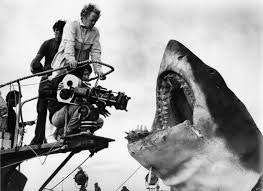
The production of Jaws proved problematic from the outset. First, there was the screenplay, which was still in flux when principal photography began in May 1974 (Richard Dreyfuss famously declared: “We started without a script, without a cast and without a shark”). Three drafts of the Jaws script were produced by Benchley before playwright Howard Sackler was brought in to do uncredited rewrites. But still things weren’t quite right and 10 days before the shoot Carl Gottlieb was enlisted to work with Spielberg on some dialogue scenes, bringing more warmth and “levity” to the often unlikable characters. Gottlieb would continue to do rewrites throughout the production, often incorporating material improvised in rehearsal by the cast, with added input from John Milius.
With a projected budget of between $3.5m and $4m, filming got under way at the Massachusetts resort of Martha’s Vineyard. Several residents were cast in minor roles, but a few feathers were ruffled by the prospect of a Hollywood production rolling into town. “Martha’s Vineyard is a very upmarket place,” says Nick Jones, producer/director of In the Teeth of Jaws. “There is a somewhat snobby element of the super-rich, but the businesses rely on tourist dollars. So there was a little tension between those who wanted the film crew there and those who didn’t. For example, when the production needed to build Quint’s shack on a vacant harbour lot, they were refused planning permission even though it was only a set. Finally, they were allowed to continue on the proviso that they put everything back exactly the way it was, including the trash!”
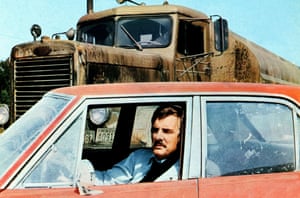
Nowadays, Martha’s Vineyard attracts a steady stream of tourists eager to visit the locations where Jaws was filmed. “It really is like walking around a movie set,” says Jones. “Before Jaws, there was a certain notoriety from the Ted Kennedy Chappaquiddick scandal, but the movie really eclipsed that. When we were making the documentary, we went with Lee Fierro [the Martha’s Vineyard resident who plays Mrs Kintner in the movie] to the stretch of coast where the beach scenes for Jaws were filmed. It’s very exciting to see those vistas that have become so iconic. And we got taken out to the wreck of the Orca [Quint’s boat], which was just a shell sticking out of the edge of the water. It was bizarre; we stood in it and touched it – it was like touching a piece of the true cross.”
The Jaws shoot was originally scheduled for 55 days, but the production swiftly turned into a logistical nightmare when the mechanical shark (three full-size, pneumatically animated models were constructed) consistently failed to play ball. Nicknamed Bruce after Spielberg’s lawyer, Bruce Ramer, the shark had been built by Bob Mattey, who had created the giant squid for 20,000 Leagues Under the Sea. The models worked fine in the warehouse, but the minute they were dumped into seawater, they started to malfunction. Day after day went by without any usable footage being shot, storms and seasickness the film-makers’ only reward.
Recalling the ordeal of the shoot, Spielberg told me: “Jaws to me was a near-death experience – and a ‘career death’ experience! I went to a party on Martha’s Vineyard and a very well-known actress came over to me and said, ‘I just came back from LA and everybody says this picture is a complete stinker. It’s a total failure and nobody will ever hire you again because you’re profligate in your spending and you’re irresponsible. Everybody’s calling you irresponsible!’ I had never heard the scuttle before, I didn’t ever hear the noise that was coming from Hollywood about me. So I was halfway through shooting the picture and this person tells me that my movie’s a disaster, and I am a disaster, and it’s over. And I really believed for the second half of the film that this was the last time I was ever going to shoot a film on 35mm.”
The lengthy shoot took its toll on the cast too. In particular, tensions emerged between Dreyfuss and Shaw to match those between their respective characters, ichthyologist Matt Hooper and crusty shark-hunter Quint. Partly modelled on local character Craig Kingsbury (who has a small role in the movie as the ill-fated Ben Gardner), Quint is a hard-drinking troublemaker who takes pleasure in taunting his city boy colleagues. It was a role into which Shaw threw himself with scene-stealing gusto, to the alarm of Dreyfuss. “There was a kind of sparring that went on between us,” Dreyfuss told the BBC in 1997. “It was both playful and – on my part – desperate. [Shaw] knew how to dish it out so you had to learn how to dish it back. He could be very vicious and his humour could be very cutting.” And, like his character, Shaw enjoyed a drink.
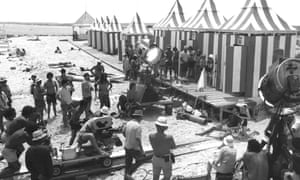
But while Shaw proved a somewhat volatile presence, his work on screen was note-perfect, which was more than could be said for the shark. By the time the film-makers had enough usable footage in the can, the production was more than 100 days over schedule, with the budget spiralling toward the $9m mark, $3m of which had been blown on what Spielberg derisively called “the special defects department”. Yet Bruce’s failure to function proved the making of the film. Unable to get the shark action shots he wanted, Spielberg was forced to take a more Hitchcockian approach, working with editor Verna Fields to conjure tense sequences in which what we don’t see is more important that what we do. Meanwhile, composer John Williams filled in the gaps where the shark should be with an ominous score that has become as synonymous with screen terror as Bernard Herrmann’s themes from Psycho. The result was pure magic, causing Spielberg to concede that “had the shark been working, perhaps the film would have made half the money and been half as scary”.
It wasn’t until Jaws was test-screened at the Medallion theatre, Dallas, in March 1975 that the film-makers got the sense that they were on to a hit. “That was the first time I realised that the shark worked, the movie worked, everything about it worked,” Spielberg told me. “The audience came out of their seats. Popcorn was flying in front of the screen twice during the movie. And then I got greedy and thought, gee, could I make the popcorn fly out of their boxes three times? And that’s when I shot that scene in my editor Verna’s pool. I had this idea that maybe when Richard [Dreyfuss] goes underwater to dig the tooth out [of the sunken boat], what if Ben Gardner’s entire head comes out of the hole? And so I shot it in her pool with a prosthetic head and a plywood boat.”
The scene of Ben Gardner’s mutilated head floating into view did indeed prove a showstopper. It was just one of a number of intense, gory sequences that earned Jaws the reputation of being the most shocking movie ever to be awarded a family-friendly PG rating in the US. Writing in the Los Angeles Times, critic Charles Champlin complained that “the PG rating is grievously wrong and misleading… Jaws is too gruesome for children and likely to turn the stomach of the impressionable at any age.” (The Motion Picture Association of America defended its lenient rating by pointing out that “nobody ever got mugged by a shark”.)
All of which brings us back to the thorny question of what Jaws is really about. For years, I have insisted that Jaws is a classic monster movie “morality tale” in which the watery fate of potential victims is sealed by their on-land behaviour. Stephen King memorably wrote: “Within the frame of most horror tales we find a moral code so strong it would make a Puritan smile”, and that certainly seems to apply to Jaws. Key to this reading is the character of Hooper, who [plot spoilers ahead!] dies in the novel after having a sordid fling with Brody’s wife, Ellen, but miraculously survives on screen, largely because the affair doesn’t happen in the film. Benchley, who makes a cameo appearance in the movie as a news reporter, remembers that the very first thing Zanuck told him when writing the script was to lose “that love story, the whole sex nonsense”. Spielberg agreed, confirming to me that “my first impulse was to get rid of the melodrama and the soap opera aspects of the novel, the whole love affair with the ichthyologist and the police chief’s wife”. Instead, he wanted to “go right for that third act”, cutting to the chase with dramatic results. But once the affair had been removed, so too was the subtextual justification for Hooper’s violent death.
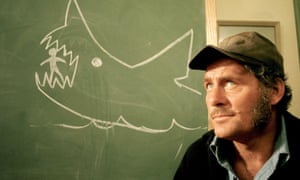
Although the official explanation for Hooper surviving the shark-cage attack was the unplanned wrecking of the empty cage by a real-life predator (and stuntman Carl Rizzo’s understandable reluctance to get back in the water), it seemed clear to me that without the infidelity subplot Hooper became a heroic character who had to live. When I interviewed Spielberg in 2006, he reluctantly conceded that there was some logic in this. But by the time I spoke to him again in 2012, for BBC Radio 5 Live, he wasn’t buying it.
“The shark doesn’t care whether you’re married or single,” he laughed. “It just wants to eat ya!” But what about Hooper’s survival? I insisted. Surely that only makes sense because you cut out the affair? “Well, I cut the soap opera because I wanted to go out and do a sea-hunt movie,” Spielberg demurred. “I wasn’t interested in doing Peyton Place.”
So, Jaws isn’t a film about infidelity? (Or masculinity? Or Watergate? Or whatever?)
“No,” replied Spielberg definitively. “It’s a film about a shark.”
Restoration of our 16mm Print (Courtesy of Svein Sveinsson)
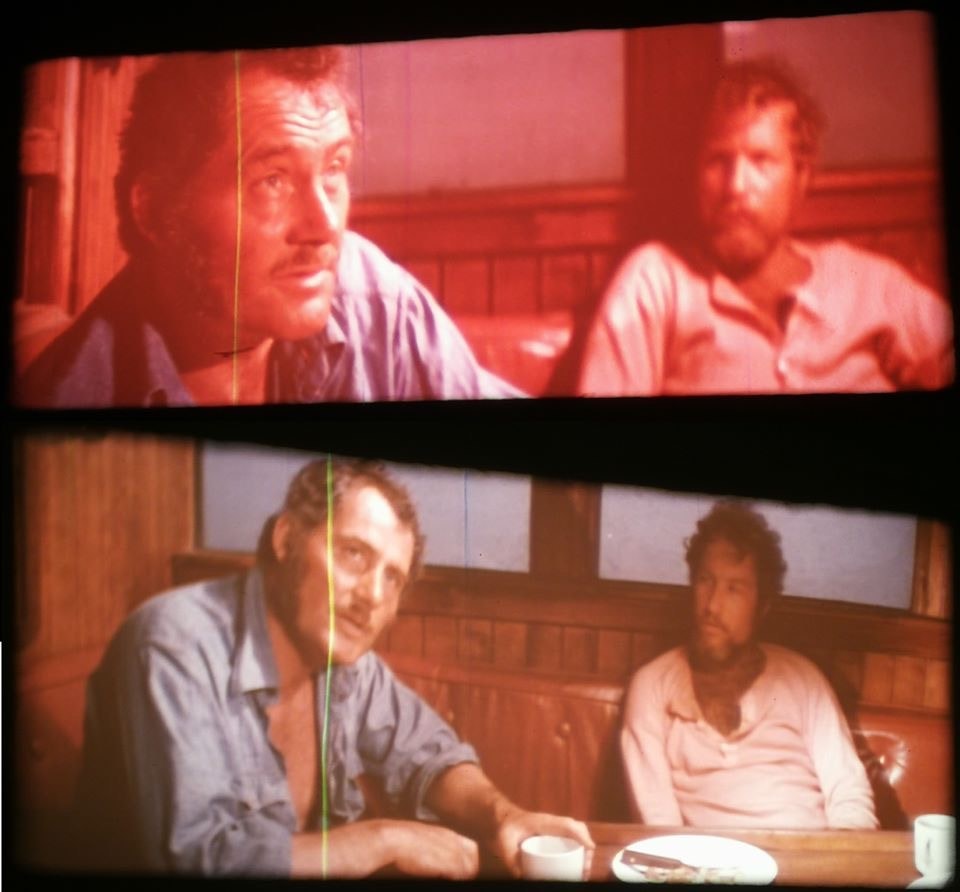
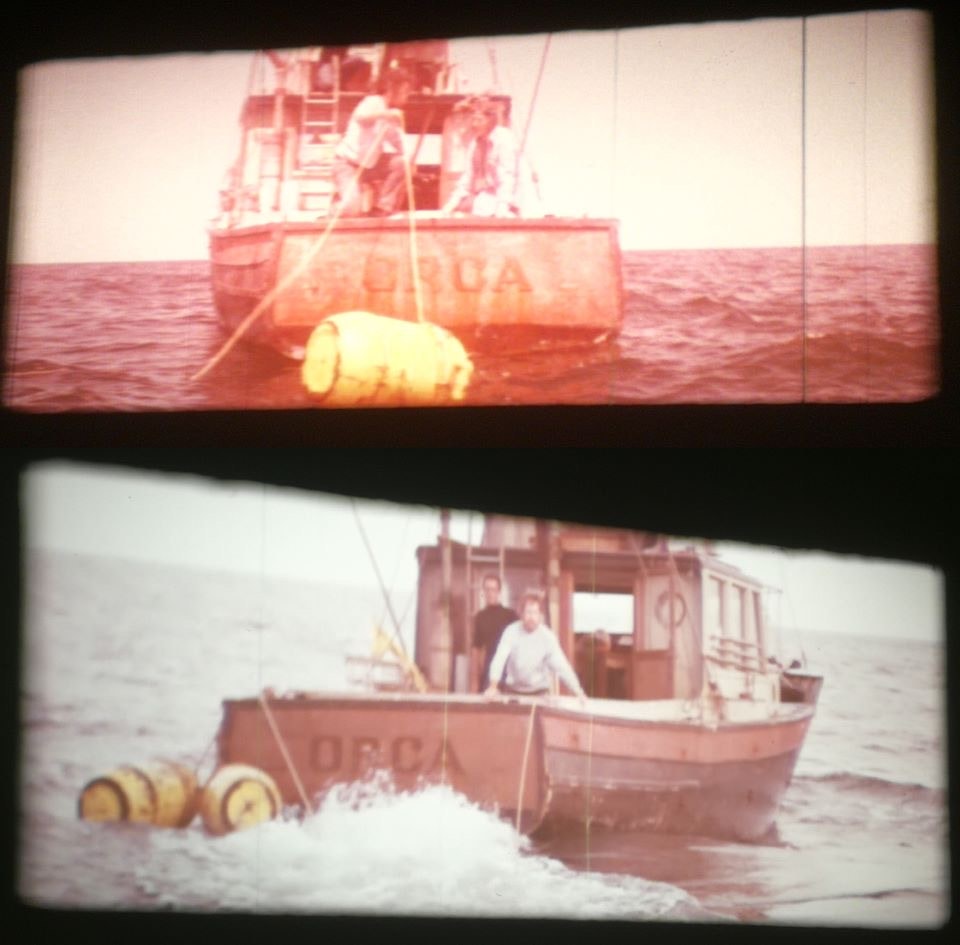
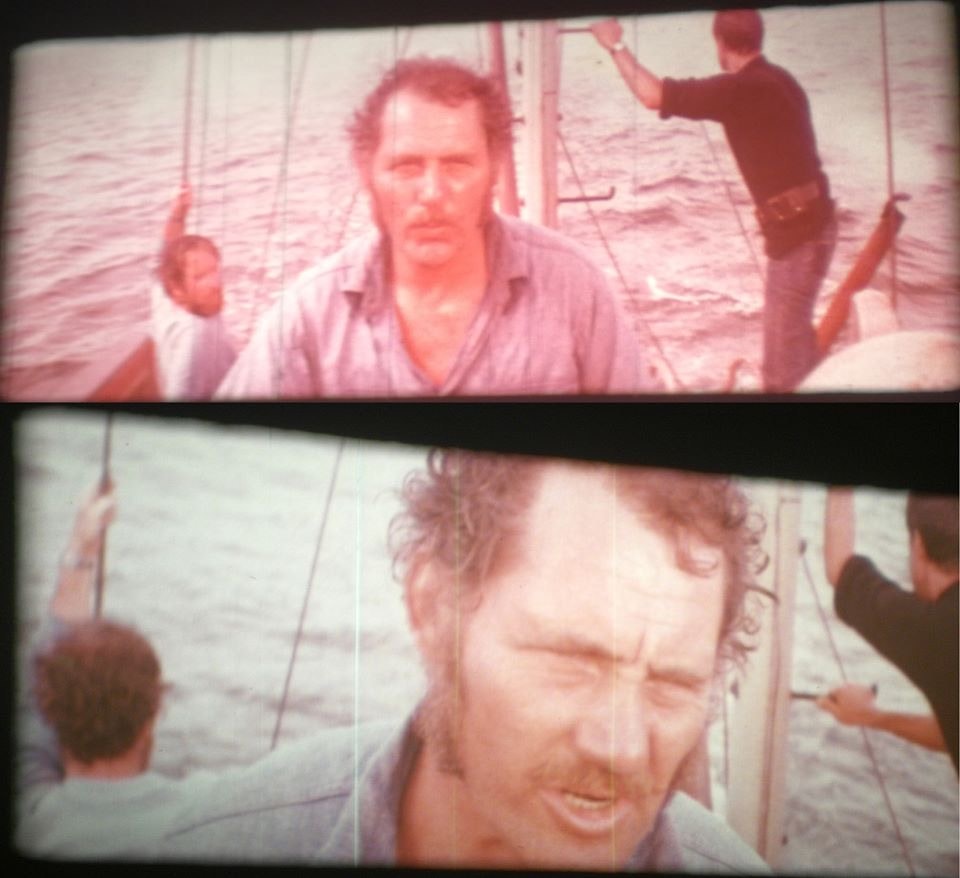
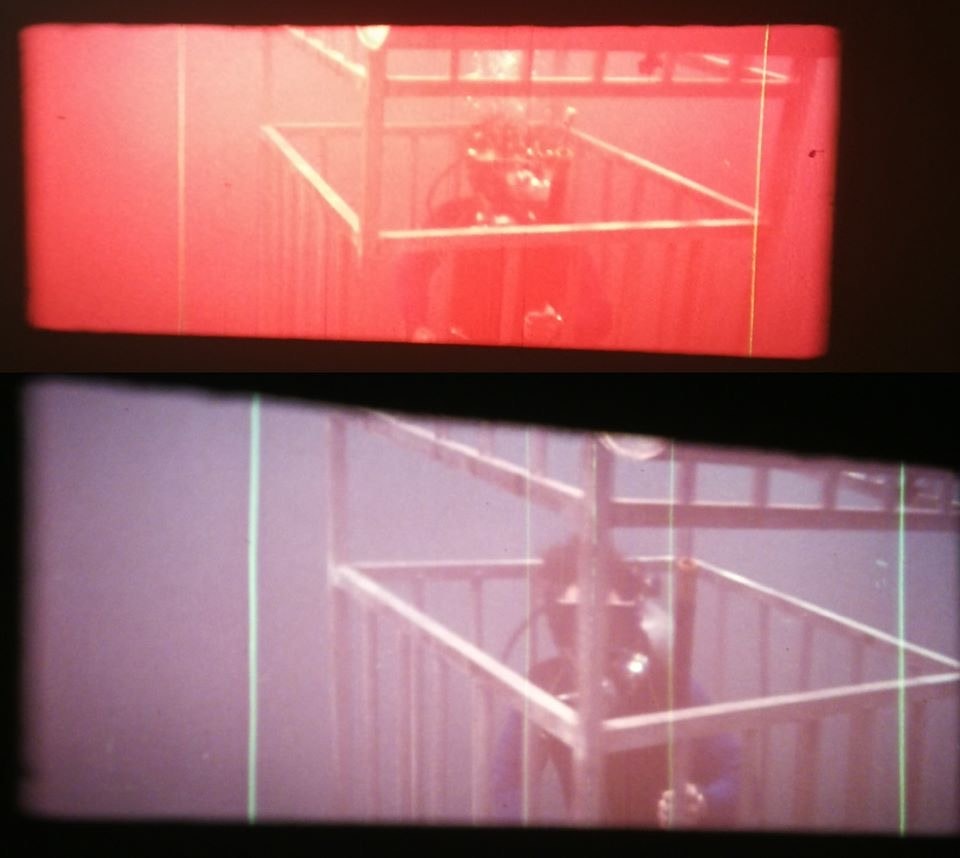
King Kong
King Kong is one of the seminal films of the sound era and this early monster movie pointed the way toward the current era of special effects, science fiction, cataclysmic destruction, and nonstop shocks. "King Kong" is the father of "Jurassic Park," the "Alien" movies and countless other stories in which heroes are terrified by skillful special effects.
I've seen "King Kong" (1933) many times, most memorably in its re-release in the 1950s, when it did indeed scare me. In recent years I have focused on the remarkable special effects, based by Willis O'Brien and others on his f/x work in "The Lost World" (1925) but achieving a sophistication and beauty that eclipsed anything that went before. The movie plunders every trick in the book to create its illusions, using live action, back projection, stop-motion animation, miniatures, models, matte paintings and sleight-of-hand. And it is not stingy with the effects; after a half-hour of slightly lumbering dialogue and hammy acting, the movie introduces Kong and rarely cuts away from sequences requiring one kind of trickery or another.
But "King Kong" is more than a technical achievement. It is also a curiously touching fable in which the beast is seen, not as a monster of destruction, but as a creature that in its own way wants to do the right thing. Unlike the extraterrestrial spiders in the "Alien" pictures, which embody single-minded aggression, Kong cares for his captive human female, protects her, attacks only when provoked, and would be perfectly happy to be left alone on his Pacific Island. It is the greed of a Hollywood showman that unleashes Kong's rage, and anyone who thinks to exhibit the beast on a New York stage in front of a live audience deserves what he gets--indeed, more than he gets.
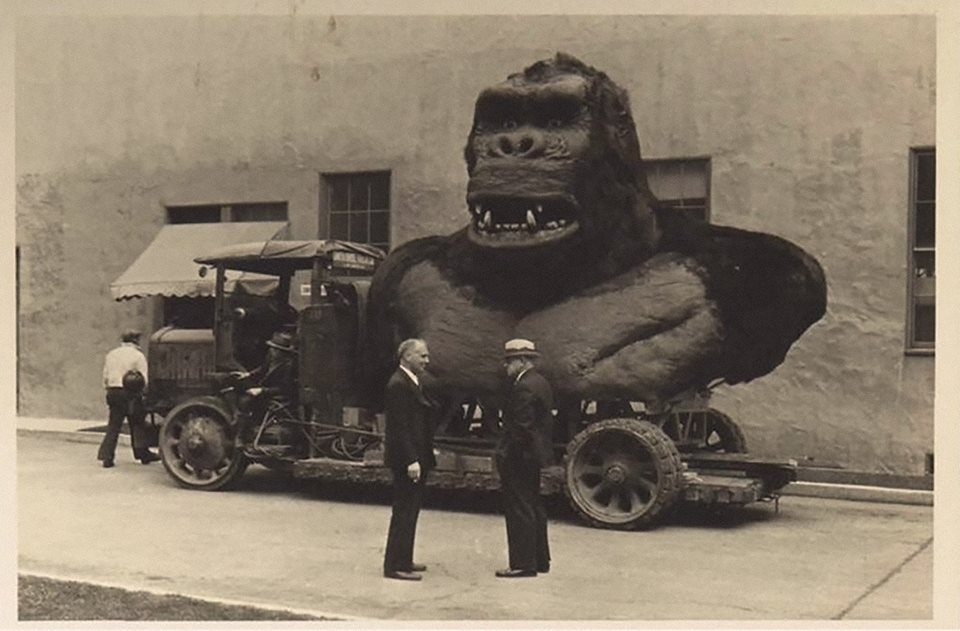
The movie was directed by Merian C. Cooper and Ernest Scheodsack, and produced by them with the legendary David O. Selznick, then head of RKO Radio Pictures. Selznick took little credit for the film, saying his key contribution was to put O'Brien's f/x techniques together with Cooper and Schoedsack's story ideas.
Although it has the scope and feel of an expensive epic, "Kong" had a relatively moderate budget of about $600,000. Sequences that would take weeks these days--such as when Kong shakes a log to dislodge the men clinging to it--were done in two days, and the giant wall that separates the island villagers from the monster was a set originally built as the Temple of Jerusalem for Cecil B. DeMille's "King of Kings" (1927). Although Fay Wray had been in movies since 1923 and was a B-list star, her leading man, Bruce Cabot, was appearing in his first picture after having been spotted by Cooper as the doorman in a Hollywood club.
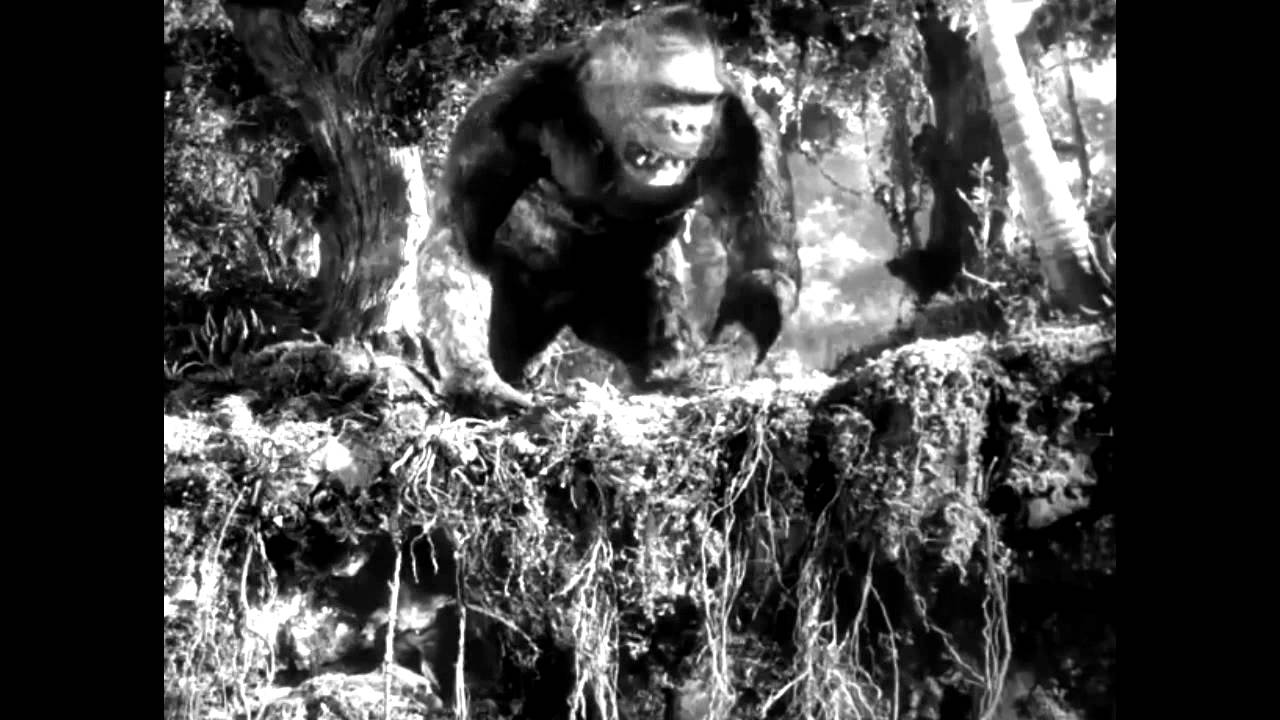
The story is not sophisticated. A movie director (Robert Armstrong) hires a ship, recruits his leading lady from off the streets of New York at the last moment, and sails for a mysterious Pacific island he heard about in Singapore. The island contains a legendary giant ape, which he hopes to use as the star of his movie. Fay Wray plays Ann Darrow, Kong's co-star, and Cabot is the sailor who falls in love with her and saves her from Kong.
Modern viewers will shift uneasily in their seats during the stereotyping of the islanders in a scene where a bride is to be sacrificed to Kong (it is rare to see a coconut brassiere in a non-comedy), but from the moment Kong appears on the screen the movie essentially never stops for breath. In an astonishing outpouring of creative energy, O'Brien and his collaborators (including RKO's legendary visual effects artist Linwood Dunn and sound man Murray Spivack) show Kong in battle with two dinosaurs, a giant snake, a flying reptile and a Tyrannosaurus rex. Later, in New York, he will climb to the top of the Empire State Building and bat down a biplane with his bare hand.
The visual techniques are explained by film historian Ron Haver, whose commentary track on the 1985 Criterion laser disc was one of the first ever recorded. He is amusing in describing how some live-action scenes were miniaturized to make the Kong model look larger; searching for the right screen to project them on, the filmmakers hit on a screen made of condoms, to the consternation of a nearby druggist who could not understand their orders for a gross at a time. Haver also observes how Kong's fur seems to crawl during several scenes; the model was covered with rabbit fur, and the fingers of the stop-action animators disturbed it between every stop-action shot. The effect, explained by the filmmakers as "muscles rippling," is oddly effective.
From the moment of its making, "King Kong" fell under the censors' scissors. Cooper himself removed one notorious sequence after the world premiere: The men shaken from the log fell into a chasm where they were devoured by giant spiders, but the effect “stopped the picture in its tracks,” people walked out, and Cooper cut it. Another scene was taken out after the Motion Picture Code came into being. It shows Kong curiously removing some of Wray's clothes, tickling her, and sniffing his fingers. Closeups of humans being crunched between Kong's jaws were also cut for various versions, but now the movie is intact again--except for the spiders.
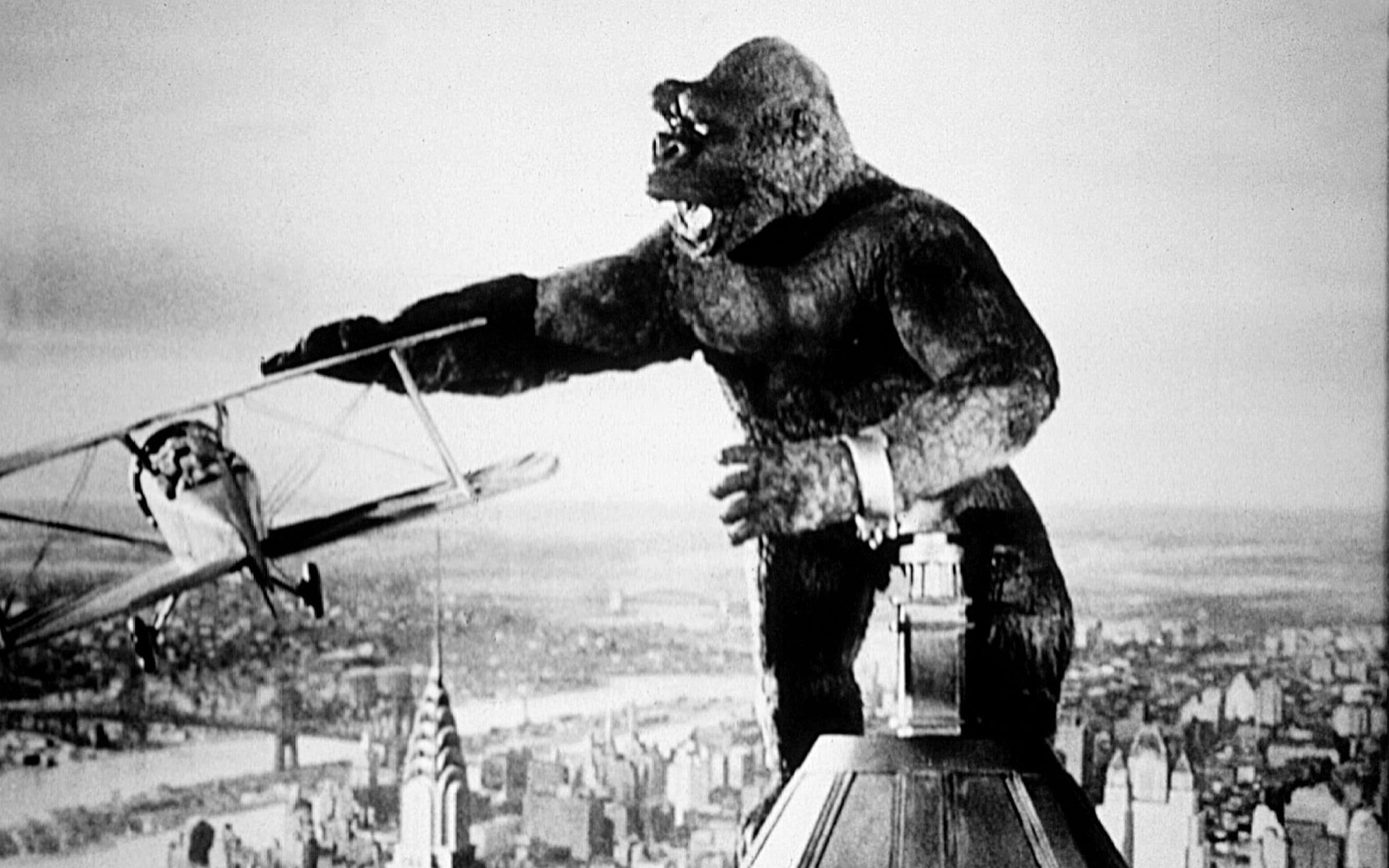
How terrifying was it, really? Variety's original 1933 review conceded that "after the audience becomes used to the machinelike movements and other mechanical flaws in the gigantic animals on view, and become accustomed to the phony atmosphere, they may commence to feel the power." The showbiz Bible Variety complained, however, "it's a film-long screaming session for [Wray], too much for any actress and any audience." Yes, but nobody has ever forgotten that performance. (At a Hollywood party in 1972, I saw Hugh Hefner introduced to Fay Wray. "I loved your movie," he told her. "Which one?" she asked.)
Variety then and now was hard to impress, but my guess, based upon my first viewing as a teenager, is that audiences found it plenty scary. In modern times the movie has aged, as critic James Berardinelli observes, and "advances in technology and acting have dated aspects of the production." Yes, but in the very artificiality of some of the special effects, there is a creepiness that isn't there in today's slick, flawless, computer-aided images.
In "Jurassic Park" you are looking, more or less, at a real dinosaur. In "King Kong," you are looking at anideaof a dinosaur, created by hand by technicians who are working with their imaginations. When Kong battles the large flesh-eating dinosaur in his first big battle scene, there is a moment when he forces its jaws apart, and the bones crack, and blood drips from the gaping throat, and something immediate happens that is hard to duplicate on any computer.
There are of course questions we cannot help asking. Haver asks one: Why did the natives build a door in their wall, so that Kong could come through? Common sense asks another: How tall is Kong, really? (The filmmakers take poetic license: He's 18 feet tall on the island, 24 feet on stage, 50 feet on the Empire State Building.) Even allowing for its slow start, dated acting and wall-to-wall screaming, there is something ageless and primeval about "King Kong" that still somehow works.
Roger Ebert, 2002
THE KILLING
Kubrick considered "The Killing" (1956) to be his first mature feature, after a couple of short warm-ups. He was 28 when it was released, having already been an obsessed chess player, a photographer for Look magazine and a director of "March of Time" newsreels. It's tempting to search here for themes and a style he would return to in his later masterpieces, but few directors seemed so determined to make every one of his films an individual, free-standing work. Seeing it without his credit, would you guess it was by Kubrick? Would you connect "Dr. Strangelove" with "Barry Lyndon?"
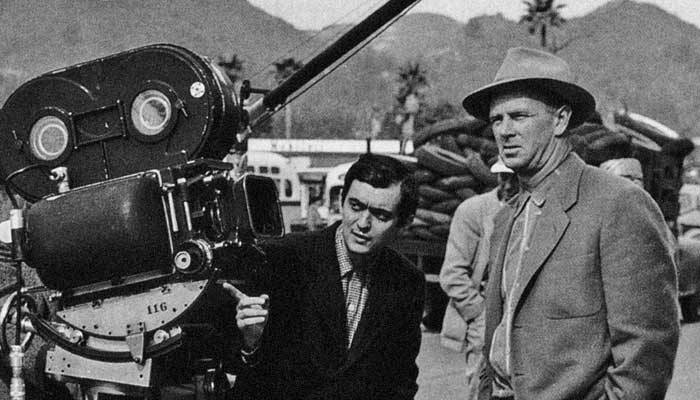
This is a heist movie. Like horror films, heists are a genre that make stars not so necessary. The durable form inspires directors to create plots that are baffling in their complexity or bold in their simplicity. In "Bonnie and Clyde," the gang parks in front of a bank, walks in with guns, and walks out (in theory) with the loot. In David Mamet's "Heist," the characters are involved in interlocking levels of cons being pulled on each other. In "Rififi," a theft involves a plan of almost unnecessary acrobatic ingenuity. Kubrick's plan here for a race track robbery involves two of those plot aspects; not so much the acrobatics. His narrative approach seems blunt, but the narrative itself is so labyrinthine we abandon any hope of trying to piece it together and just abandon ourselves to letting it happen. We feel in safe hands.
Perhaps a motif can be found in the movie's storefront chess club which, I learn, Kubrick frequented as a kid. His gang leader Johnny Clay (Sterling Hayden) goes there to meet a professional wrestler named Maurice, played by a professional wrestler named Kola Kwariani. Maurice is big and strong and is needed to start a fight at the race track bar to divert attention during the heist. Like all the members of Johnny's team, he has no idea of the overall plot. He just knows his role and his payoff, and knows Johnny enough to trust him.
The game of chess involves holding in your mind several alternate possibilities. The shifting of one piece can result in a radically different game. Johnny Clay has devised a strategy seemingly as flawless as Bobby Fischer's "Perfect Games," but it depends on all the players making the required moves on schedule. If a piece shifts, everything changes, a possibility Johnny should have given more thought to.
The movie is narrated in an exact, passionless voice by the uncredited Art Gilmore, a veteran radio announcer. He places great emphasis on precise dates and times of day, although really only one day and time are crucial--4 p. m., the starting time of a $100,000 high stakes horse race. The rest of his narration serves only to confirm what we can see for ourselves, that the events on screen are not happening in chronological order. The plot jumps around like a chess player's mind: "If he does this, and I do that, and then he.."
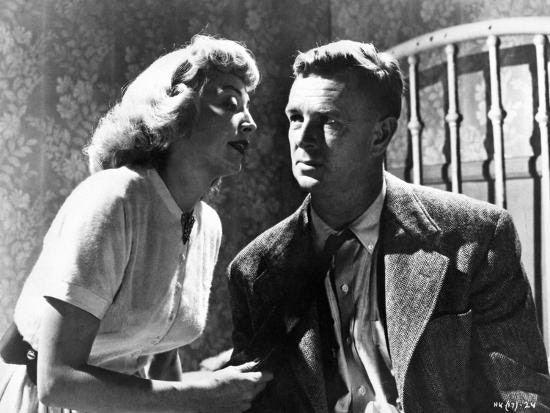
In the few days before the heist, Johnny makes the rounds of his team members. We meet them at the same time. There's a large cast, made easy to follow because of typecasting and the familiar faces of many supporting players. Let's see. In no particular order (which would please the narrator), there are Fay (Coleen Gray), Johnny's girl; Marvin Unger (Jay C. Flippen), an old friend who is putting up the cost of the operation; Randy Kennan (Ted de Corsia), a crooked cop; Sherry Peatty (Marie Windsor), a gold-digging floozy; her husband George Peatty (Elisha Cook), a weakling race track cashier who hopes to buy her affection; Val Cannon (Vince Edwards), Sherry's actual lover; Mike O'Reilly (Joe Sawyer), the racetrack bartender who needs money for his sick wife; Nikki Arcane (Timothy Carey), a rifle sharpshooter; Leo the Loan shark (Jay Adler), and assorted others. Kubrick brings all these types onscreen, makes it clear who they are and sees that we will remember them, while only gradually revealing their roles in the heist.
Filmed largely in San Mateo and Venice, Calif., and at the Bay Meadows Racetrack, the movie has the look and feel of glorious 1950s black and white film noir. On a budget of $230,000, Kubrick uses a lot of actual locations. We see a shabby motel with residential rooms by the week or month, the low-rent "luxury" of the Peatty's apartment, the sun-washed streets. Many heist movies feature a chalk talk in which the leader explains the scenario to his gang so that we can visualize it; Jean-Pierre Melville's version of this scene adds immeasurably to "Bob le Flambeur." Kubrick puts his pieces in place but only when the actual plan is underway do we understand them. We go in like a chess player who knows what the Rook, Knight and Queen do, but doesn't know what will happen in the game. Nor, it turns out, do they all know the rules.
I wouldn't think of giving away the game. The writing and editing are the keys to how this film never seems to be the deceptive assembly that it is, but appears to be proceeding on schedule, whatever that schedule is. We accept even action that makes absolutely no sense, as in a crucial moment involving Nikki the sharpshooter. Required to hit a moving target with a rifle with telescopic sights, he inexplicably parks his sports car, a convertible with the top down, in plain view in a parking lot so that anyone can see him take out the rifle, aim and fire. In theory they're looking elsewhere. In practice his personality gets him in trouble.
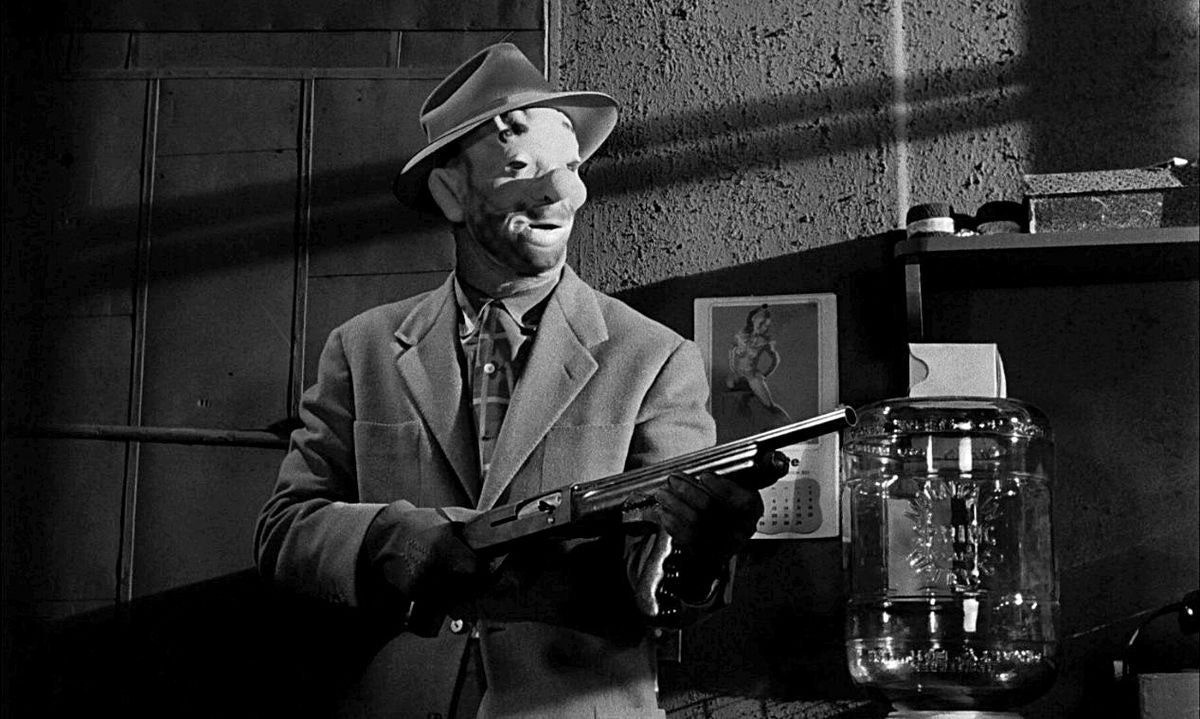
Sterling Hayden was a considerable screen presence with his tough guy face and his pouting lower lip. His gravel voice lays out instructions and requirements in a flat, factual manner; his gang members take them at face value. He never displays much emotion, not even at the end, when a great deal might be justified. We don't see passion, fear, greed. He could be a chess player in the Zone. He has a streak of nihilism. The most colorful players are Marie Windsor, famously known as Marie Windsor, and Elisha Cook, famous for playing milquetoasts and chumps in the movies of four decades. She wraps him around her little finger, and he comes back for more.
Considering that it cheerfully abandons any attempt at chronological suspense, "The Killing" is an unreasonable success. The prize will be $2 million--the day's expected total receipts at the track. This heist is worth a lot of planning, and Johnny has gone the distance. In his mind his plan is superb. All it depends upon is everybody doing exactly what is required of them, exactly when and where. The word that occurs to me in describing Kubrick's approach to Johnny and the film, is "control." That may suggest the link between this first mature feature and Kubrick's later films, so varied and brilliant.
In his films, he had the plan in his mind. He knew where everyone should be and what they should do. Such a perfectionist was Kubrick that he knew every theater his films were opening in, and the daily grosses. It's said that a projectionist in Kansas City received a phone call from Kubrick in England, informing him that the picture was out of focus. Is that story apocryphal? I've never thought so.
THE MALTESE FALCON
Among the movies we not only love but treasure, “The Maltese Falcon” stands as a great divide. Consider what was true after its release in 1941 and was not true before:
(1) The movie defined Humphrey Bogart's performances for the rest of his life; his hard-boiled Sam Spade rescued him from a decade of middling roles in B gangster movies and positioned him for “Casablanca,” “Treasure of the Sierra Madre,” “The African Queen” and his other classics.
(2) It was the first film directed by John Huston, who for more than 40 years would be a prolific maker of movies that were muscular, stylish and daring.
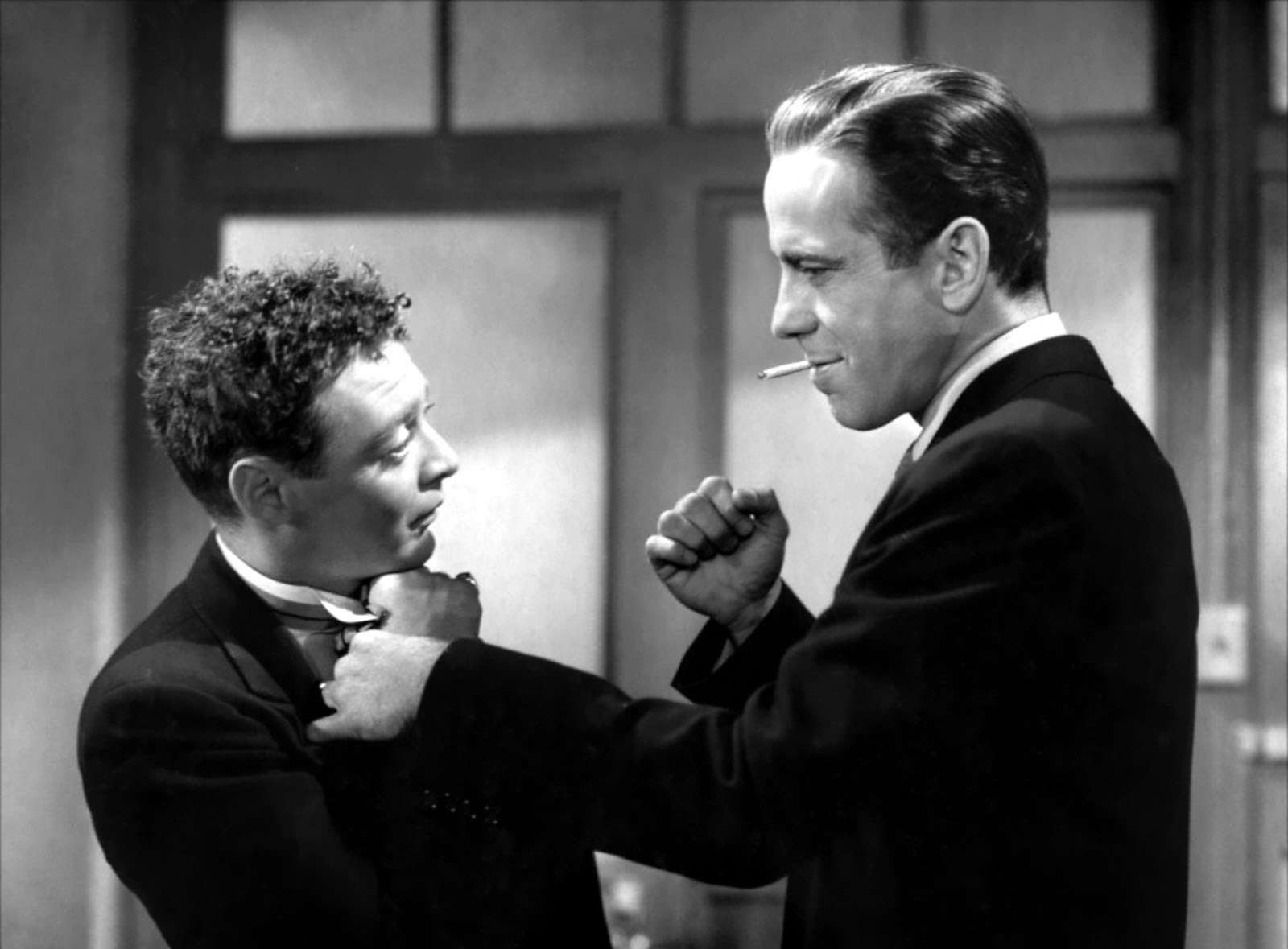
(3) It contained the first screen appearance of Sydney Greenstreet, who went on, in “Casablanca” and many other films, to become one of the most striking character actors in movie history.
(4) It was the first pairing of Greenstreet and Peter Lorre, and so well did they work together that they made nine other movies, including “Casablanca” in 1942 and “The Mask of Dimitrios” (1944), in which they were not supporting actors but actually the stars.
(5) And some film histories consider “The Maltese Falcon” the first film noir. It put down the foundations for that native American genre of mean streets, knife-edged heroes, dark shadows and tough dames.
Of course film noir was waiting to be born. It was already there in the novels of Dashiell Hammett, who wrote The Maltese Falcon, and the work of Raymond Chandler, James M. Cain, John O'Hara and the other boys in the back room. “Down these mean streets a man must go who is not himself mean,” wrote Chandler, and that was true of his hero Philip Marlowe (another Bogart character). But it wasn't true of Hammett's Sam Spade, whowasmean, and who set the stage for a decade in which unsentimental heroes talked tough and cracked wise.
The moment everyone remembers from “The Maltese Falcon” comes near the end, when Brigid O'Shaughnessy (Mary Astor) has been collared for murdering Spade's partner. She says she loves Spade. She asks if Sam loves her. She pleads for him to spare her from the law. And he replies, in a speech some people can quote by heart, “I hope they don't hang you, precious, by that sweet neck. . . . The chances are you'll get off with life. That means if you're a good girl, you'll be out in 20 years. I'll be waiting for you. If they hang you, I'll always remember you.”
Cold. Spade is cold and hard, like his name. When he gets the news that his partner has been murdered, he doesn't blink an eye. Didn't like the guy. Kisses his widow the moment they're alone together. Beats up Joel Cairo (Lorre) not just because he has to, but because he carries a perfumed handkerchief, and you know what that meant in a 1941 movie. Turns the rough stuff on and off. Loses patience with Greenstreet, throws his cigar into the fire, smashes his glass, barks out a threat, slams the door and then grins to himself in the hallway, amused by his own act.
If he didn't like his partner, Spade nevertheless observes a sort of code involving his death. “When a man's partner is killed,” he tells Brigid, “he's supposed to do something about it.” He doesn't like the cops, either; the only person he really seems to like is his secretary, Effie (Lee Patrick), who sits on his desk, lights his cigarettes, knows his sins and accepts them. How do Bogart and Huston get away with making such a dark guy the hero of a film? Because he does his job according to the rules he lives by, and because we sense (as we always would with Bogart after this role) that the toughness conceals old wounds and broken dreams.
John Huston had worked as a writer at Warner Bros. before convincing the studio to let him direct. “The Maltese Falcon” was his first choice, even though it had been filmed twice before by Warners (in 1931 under the same title and in 1936 as “Satan Met a Lady”). “They were such wretched pictures,” Huston told his biographer, Lawrence Grobel. He saw Hammett's vision more clearly, saw that the story was not about plot but about character, saw that to soften Sam Spade would be deadly, fought the tendency (even then) for the studio to pine for a happy ending.
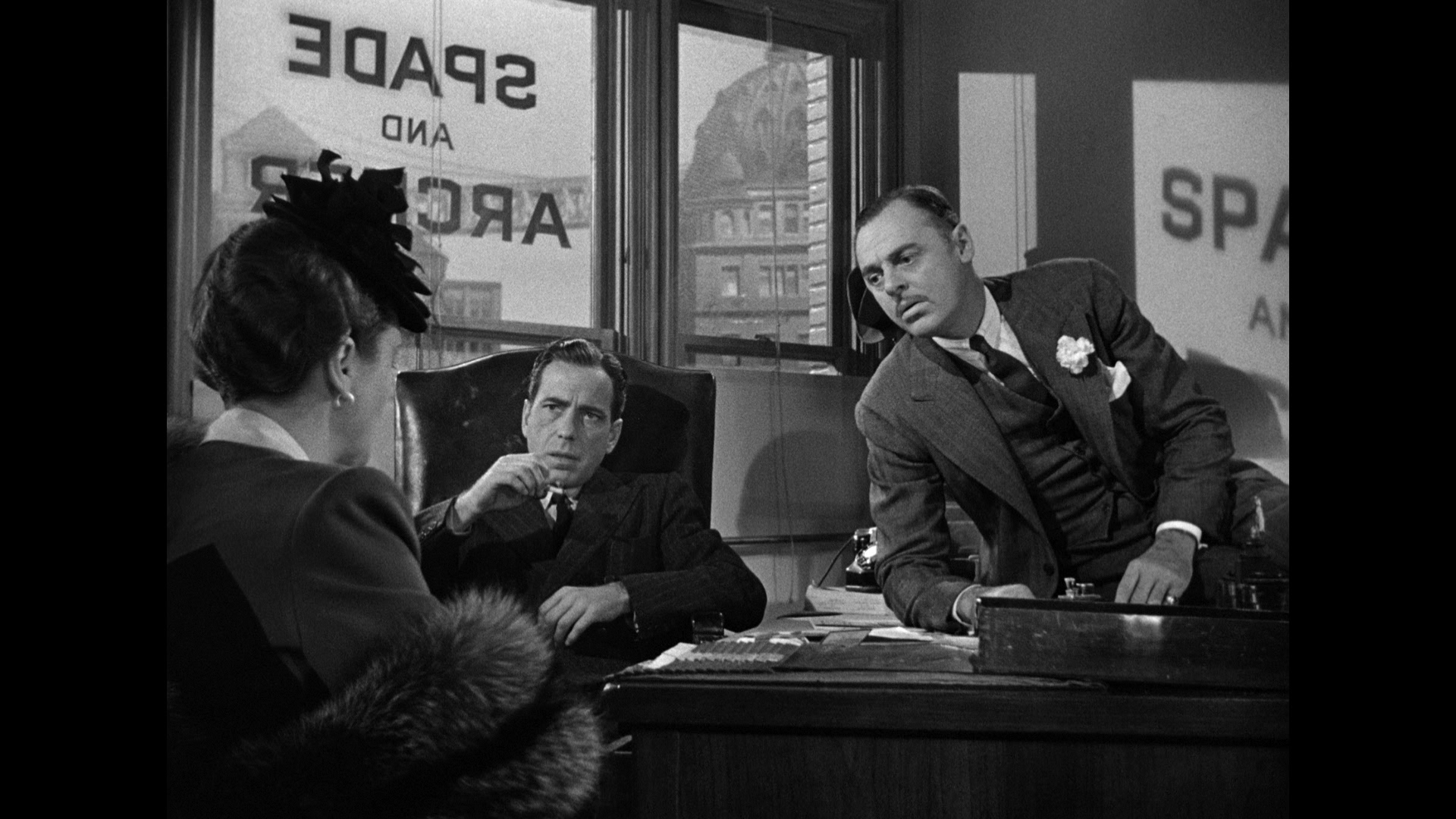
When he finished his screenplay, he set to work story-boarding it, sketching every shot. That was the famous method of Alfred Hitchcock, whose “Rebecca” won the Oscar as the best picture of 1940. Like Orson Welles, who was directing “Citizen Kane” across town, Huston was excited by new stylistic possibilities; he gave great thought to composition and camera movement. To view the film in a stop-action analysis, as I have, is to appreciate complex shots that work so well they seem simple. Huston and his cinematographer, Arthur Edeson, accomplished things that in their way were as impressive as what Welles and Gregg Toland were doing on “Kane.”
Consider an astonishing unbroken seven-minute take. Grobel's bookThe Hustonsquotes Meta Wilde, Huston's longtime script supervisor: “It was an incredible camera setup. We rehearsed two days. The camera followed Greenstreet and Bogart from one room into another, then down a long hallway and finally into a living room; there the camera moved up and down in what is referred to as a boom-up and boom-down shot, then panned from left to right and back to Bogart's drunken face; the next pan shot was to Greenstreet's massive stomach from Bogart's point of view. . . . One miss and we had to begin all over again.”
Was the shot just a stunt? Not at all; most viewers don't notice it because they're swept along by its flow. And consider another shot, where Greenstreet chatters about the falcon while waiting for a drugged drink to knock out Bogart. Huston's strategy is crafty. Earlier, Greenstreet has set it up by making a point: “I distrust a man who says 'when.' If he's got to be careful not to drink too much, it's because he's not to be trusted when he does.” Now he offers Bogart a drink, but Bogart doesn't sip from it. Greenstreet talks on, and tops up Bogart's glass. He still doesn't drink. Greenstreet watches him narrowly. They discuss the value of the missing black bird. Finally, Bogart drinks, and passes out. The timing is everything; Huston doesn't give us closeups of the glass to underline the possibility that it's drugged. He depends on the situation to generate the suspicion in our minds. (This was, by the way, Greenstreet's first scene in the movies.)
The plot is the last thing you think of about “The Maltese Falcon.” The black bird (said to be made of gold and encrusted with jewels) has been stolen, men have been killed for it, and now Gutman (Greenstreet) has arrived with his lackeys (Lorre and Elisha Cook Jr.) to get it back. Spade gets involved because the Mary Astor character hires him to--but the plot goes around and around, and eventually we realize that the black bird is an example of Hitchcock's “MacGuffin”--it doesn't matter what it is, so long as everyone in the story wants or fears it.
To describe the plot in a linear and logical fashion is almost impossible. That doesn't matter. The movie is essentially a series of conversations punctuated by brief, violent interludes. It's all style. It isn't violence or chases, but the way the actors look, move, speak and embody their characters. Under the style is attitude: Hard men, in a hard season, in a society emerging from Depression and heading for war, are motivated by greed and capable of murder. For an hourly fee, Sam Spade will negotiate this terrain. Everything there is to know about Sam Spade is contained in the scene where Bridget asks for his help and he criticizes her performance: “You're good. It's chiefly your eyes, I think--and that throb you get in your voice when you say things like, 'be generous, Mr. Spade.' “ He always stands outside, sizing things up. Few Hollywood heroes before 1941 kept such a distance from the conventional pieties of the plot.
E.T.
This movie made my heart glad. It is filled with innocence, hope, and good cheer. It is also wickedly funny and exciting as hell. "E.T. The Extra-Terrestrial" is a movie like "The Wizard of Oz," that you can grow up with and grow old with, and it won't let you down. It tells a story about friendship and love. Some people are a little baffled when they hear it described: It's about a relationship between a little boy and a creature from outer space that becomes his best friend. That makes it sound like a cross between "The Thing" and "National Velvet." It works as science fiction, it's sometimes as scary as a monster movie, and at the end, when the lights go up, there's not a dry eye in the house.
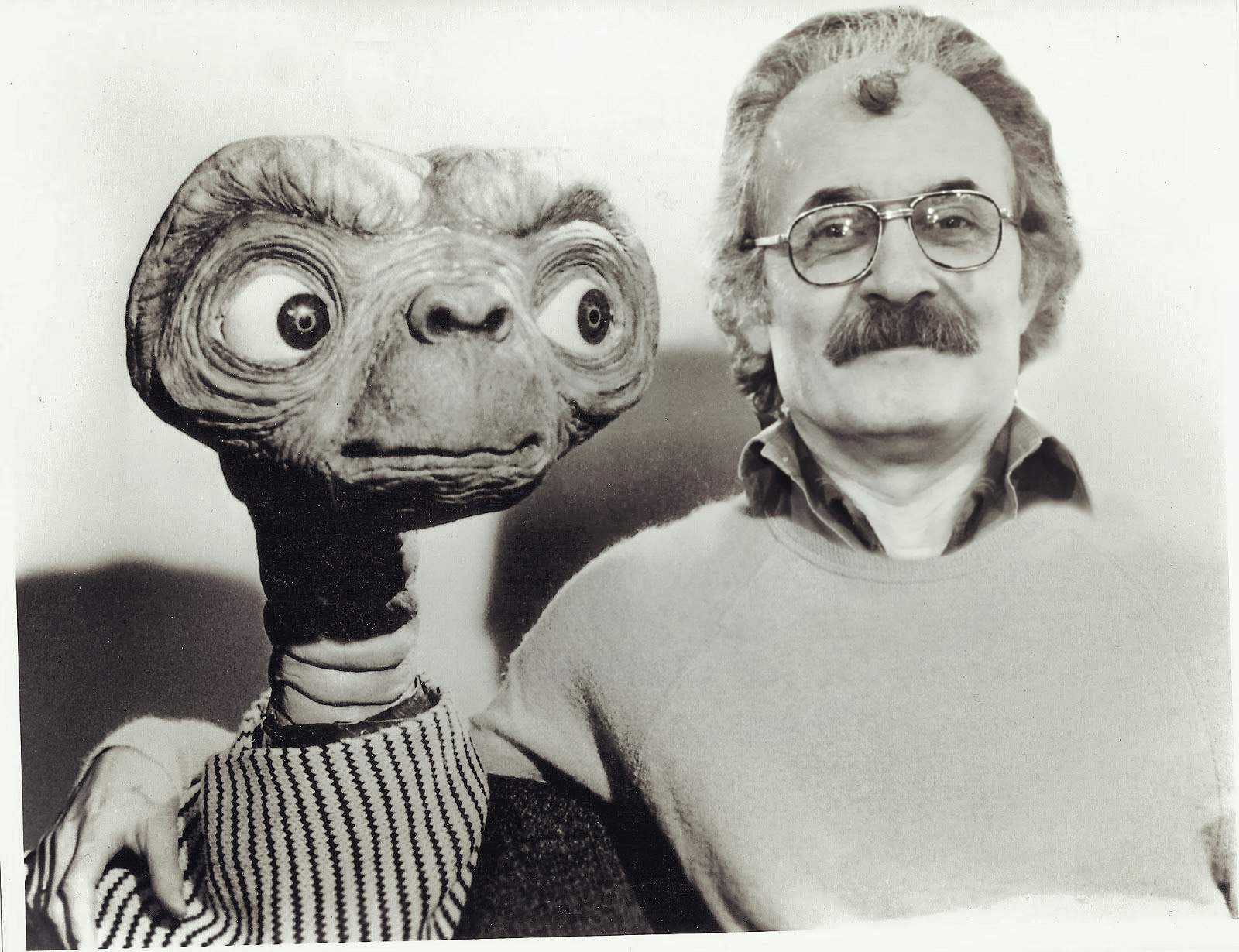
The Great Movies Read Ebert's essay on what makes "E.T." one of the great movies. "E.T." is a movie of surprises, and I will not spoil any of them for you. But I can suggest some of the film's wonders. The movie takes place in and around a big American suburban development. The split-level houses march up and down the curved drives, carved out of hills that turn into forest a few blocks beyond the backyard. In this forest one night, a spaceship lands, and queer-looking little creatures hobble out of it and go snuffling through the night, looking for plant specimens, I guess. Humans arrive-authorities with flashlights and big stomping boots. They close in on the spaceship, and it is forced to take off and abandon one of its crew members. This forlorn little creature, the E.T. of the title, is left behind on Earth--abandoned to a horrendous world of dogs, raccoons, automobile exhausts and curious little boys.
The movie's hero is one particular little boy named Elliott. He is played by Henry Thomas in what has to be the best little boy performance I've ever seen in an American film. He doesn't come across as an overcoached professional kid; he's natural, defiant, easily touched, conniving, brave and childlike. He just knows there's something living out there in the backyard, and he sits up all night with his flashlight, trying to coax the creature out of hiding with a nearly irresistible bait: Reese's Pieces. The creature, which looks a little like Snoopy but is very, very wise, approaches the boy. They become friends. The E.T. moves into the house, and the center section of the film is an endless invention on the theme of an extra-terrestrial's introduction to bedrooms, televisions, telephones, refrigerators and six-packs of beer. The creature has the powers of telepathy and telekinesis, and one of the ways it communicates is to share its emotions with Elliott. That's how Elliott knows that the E.T. wants to go home.
And from here on out, I'd better not describe what happens. Let me just say that the movie has moments of sheer ingenuity, moments of high comedy, some scary moments and a very sad sequence that has everybody blowing their noses.
What is especially wonderful about all of those moments is that Steven Spielberg, who made this film, creates them out of legitimate and fascinating plot developments. At every moment from its beginning to its end, "E.T." is really about something. The story is quite a narrative accomplishment. It reveals facts about the E.T.'s nature; it develops the personalities of Elliott, his mother, brother and sister; it involves the federal space agencies; it touches on extra-terrestrial medicine, biology and communication, and still it inspires genuine laughter and tears.
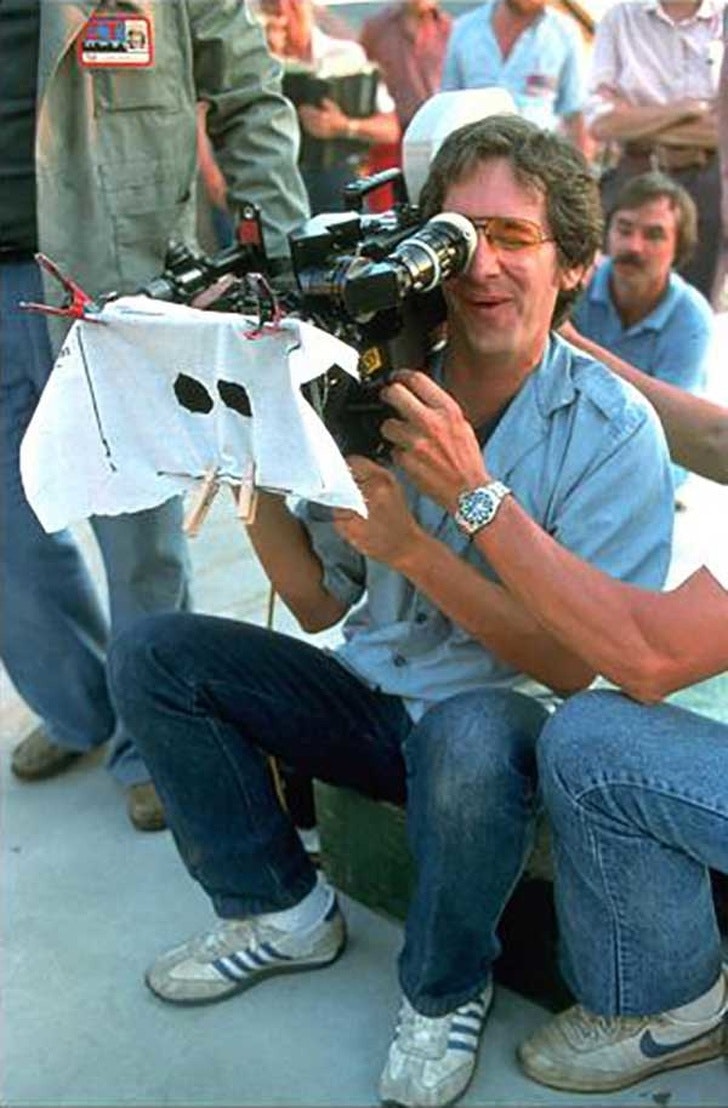
A lot of those achievements rest on the very peculiar shoulders of the E.T. itself. With its odd little walk, its high-pitched squeals of surprise, its tentative imitations of human speech, and its catlike but definitely alien purring, E.T. becomes one of the most intriguing fictional creatures I've ever seen on a screen. The E.T. is a triumph of special effects, certainly; the craftsmen who made this little being have extended the boundaries of their art. But it's also a triumph of imagination, because the filmmakers had to imagine E.T., had to see through its eyes, hear with its ears, and experience this world of ours through its utterly alien experience in order to make a creature so absolutely convincing. The word for what they exercised is empathy.
"E.T. The Extra-Terrestrial" is a reminder of what movies are for. Most movies are not for any one thing, of course. Some are to make us think, some to make us feel, some to take us away from our problems, some to help us examine them. What is enchanting about "E.T." is that, in some measure, it does all of those things.
THE GRADUATE (NOVEMBER 2019)
If ever a movie captured the audience’s imagination with its musical soundtrack, it was The Graduate, that irresistibly watchable 1967 classic, starring Anne Bancroft as the sexy and jaded fortysomething Mrs Robinson, who seduces 21-year-old Ben, played by the young Dustin Hoffman – that muddled young man whose sentimental education begins only after he graduates college.
Simon and Garfunkel’s eerie and sublime The Sound of Silence perfectly captures both Ben’s alienation and bewilderment about what he should do with his life, and then his postcoital disenchantment and self-loathing. And Here’s to You Mrs Robinson, with its gentle reassurance that Jesus loves her, provides a note of final gentleness and forgiveness for this character that is really nowhere in the script. It is, incidentally, very different from Billy Paul’s woozily sensual soul song Me and Mrs Jones, which came out four years later.
The Graduate itself does not seem the same in 2017 as it did in 1967. Then the emphasis was on sophisticated black comedy with a hint of 60s radicalism and student discontent – mediated through the older generation of suburbanites. It was a guy’s fantasy: Ben gets the older woman and his own Alfa Romeo (the “little red wop car” as his father’s friend charmlessly puts it).
Watched in the present day, the element of predatory abuse is inescapable. You cannot see it without wondering how it might look and feel if the sexual roles were reversed. But a modern audience might also, paradoxically, be much less content with the villainous role the film finally assigns to Mrs Robinson, be more sympathetic to her midlife crisis, and remember the pathos of her abandoned interest in art. Calder Willingham and Buck Henry’s screenplay, adapted from Charles Webb’s 1963 novel, cleverly allows you to wonder if Mr Robinson was, in some conscious or subconscious way, complaisant in his wife’s adventure. The excellence of Katherine Ross as Mrs Robinson’s daughter, Elaine, is often overlooked. A hugely pleasurable film.
THE EXORCIST
The year 1973 began and ended with cries of pain. It began with Ingmar Bergman’s “Cries and Whispers,” and it closed with William Friedkin’s “The Exorcist.” Both films are about the weather of the human soul, and no two films could be more different. Yet each in its own way forces us to look inside, to experience horror, to confront the reality of human suffering. The Bergman film is a humanist classic. The Friedkin film is an exploitation of the most fearsome resources of the cinema. That does not make it evil, but it does not make it noble, either.
The difference, maybe, is between great art and great craftsmanship. Bergman’s exploration of the lines of love and conflict within the family of a woman dying of cancer was a film that asked important questions about faith and death, and was not afraid to admit there might not be any answers. Friedkin’s film is about a twelve-year-old girl who either is suffering from a severe neurological disorder or perhaps has been possessed by an evil spirit. Friedkin has the answers; the problem is that we doubt he believes them.

We don’t necessarily believe them ourselves, but that hardly matters during the film’s two hours. If movies are, among other things, opportunities for escapism, then “The Exorcist” is one of the most powerful ever made. Our objections, our questions, occur in an intellectual context after the movie has ended. During the movie there are no reservations, but only experiences. We feel shock, horror, nausea, fear, and some small measure of dogged hope.
Rarely do movies affect us so deeply. The first time I saw “Cries and Whispers,” I found myself shrinking down in my seat, somehow trying to escape from the implications of Bergman’s story. “The Exorcist” also has that effect--but we’re not escaping from Friedkin’s implications, we’re shrinking back from the direct emotional experience he’s attacking us with. This movie doesn’t rest on the screen; it’s a frontal assault.
The story is well-known; it’s adapted, more or less faithfully, by William Peter Blatty from his own bestseller. Many of the technical and theological details in his book are accurate. Most accurate of all is the reluctance of his Jesuit hero, Father Karras, to encourage the ritual of exorcism: “To do that,” he says, “I’d have to send the girl back to the sixteenth century.” Modern medicine has replaced devils with paranoia and schizophrenia, he explains. Medicine may have, but the movie hasn’t. The last chapter of the novel never totally explained in detail the final events in the tortured girl’s bedroom, but the movie’s special effects in the closing scenes leave little doubt that an actual evil spirit was in that room, and that it transferred bodies. Is this fair? I guess so; in fiction the artist has poetic license.

It may be that the times we live in have prepared us for this movie. And Friedkin has admittedly given us a good one. I’ve always preferred a generic approach to film criticism; I ask myself how good a movie is of its type. “The Exorcist” is one of the best movies of its type ever made; it not only transcends the genre of terror, horror, and the supernatural, but it transcends such serious, ambitious efforts in the same direction as Roman Polanski’s “Rosemary’s Baby.” Carl Dreyer’s “The Passion of Joan of Arc” is a greater film--but, of course, not nearly so willing to exploit the ways film can manipulate feeling.
“The Exorcist” does that with a vengeance. The film is a triumph of special effects. Never for a moment--not when the little girl is possessed by the most disgusting of spirits, not when the bed is banging and the furniture flying and the vomit is welling out--are we less than convinced. The film contains brutal shocks, almost indescribable obscenities. That it received an R rating and not the X is stupefying.
The performances are in every way appropriate to this movie made this way. Ellen Burstyn, as the possessed girl’s mother, rings especially true; we feel her frustration when doctors and psychiatrists talk about lesions on the brain and she knows there’s something deeper, more terrible, going on. Linda Blair, as the little girl, has obviously been put through an ordeal in this role, and puts us through one. Jason Miller, as the young Jesuit, is tortured, doubting, intelligent.

And the casting of Max von Sydow as the older Jesuit exorcist was inevitable; he has been through so many religious and metaphysical crises in Bergman’s films that he almost seems to belong on a theological battlefield the way John Wayne belonged on a horse. There’s a striking image early in the film
that has the craggy von Sydow facing an ancient, evil statue; the image doesn’t so much borrow from Bergman’s famous chess game between von Sydow and Death (in “The Seventh Seal”) as extend the conflict and raise the odds.
I am not sure exactly what reasons people will have for seeing this movie; surely enjoyment won’t be one, because what we get here aren’t the delicious chills of a Vincent Price thriller, but raw and painful experience. Are people so numb they need movies of this intensity in order to feel anything at all? It’s hard to say.
Even in the extremes of Friedkin’s vision there is still a feeling that this is, after all, cinematic escapism and not a confrontation with real life. There is a fine line to be drawn there, and “The Exorcist” finds it and stays a millimeter on this side.
FRIDAY The 13th
It may be hard to remember, but there was a time when the name Jason Vorhees wasn’t part of the horror lexicon. In 1980 director Sean S. Cunningham unleashed the original Friday the 13th, a film that would go on to define the slasher era through sequel after profitable sequel (though Jason’s iconic hockey mask wouldn’t actually show up until the third installment in 1982). On May 9, 1980, The Hollywood Reporter published its review of the film:
Gruesome violence, in which throats are slashed and heads are split open in realistic detail, is the sum content of Friday the 13th, a sick and sickening low budget feature that is being released by Paramount. It’s blatant exploitation of the lowest order.
Produced and directed by Sean S. Cunningham through Georgetown Prods., there is nothing to recommend about this ghastly effort, which simply details a series of grisly murders. The script by Victor Miller introduces a group of young people who are working to reopen a summer camp, which had earlier been the scene of several unexplained murders and which is called Camp Blood by the locals. From there on out, the kids are knocked off one by one, with the killer and cliched motivation finally being revealed in the final sequence.
Cunningham seems obsessed with shock value, which is the only thing he achieves during the 91-minute running time. The performances are credible, although no real acting is required, and the technical production is slick, including Barry Abrams’ photography and Bill Freda’s editing, which allows the full impact of the mutilations but which mercifully cuts away quickly.
ALPHAVILLE (September, 2019)
At a time when 10,000 of the world's leading physicists are holed up in a Swiss bunker engaged on a project that may one day enable them to pretend they understand the nature of the universe, Alphaville has never seemed more timely.
Jean-Luc Godard's film – "a science fiction film without special effects" in the words of the critic Andrew Sarris; "a fable on a realistic ground" in Godard's own description – is a cry of protest aimed at the worshippers of science and logic. Unlike Stanley Kubrick's 2001: A Space Odyssey, which now resembles a picturesque relic of long-abandoned aspirations, Alphaville still seems to be watching the world come to meet it. And the world is very much closer to the director's creation than it was back in 1965.
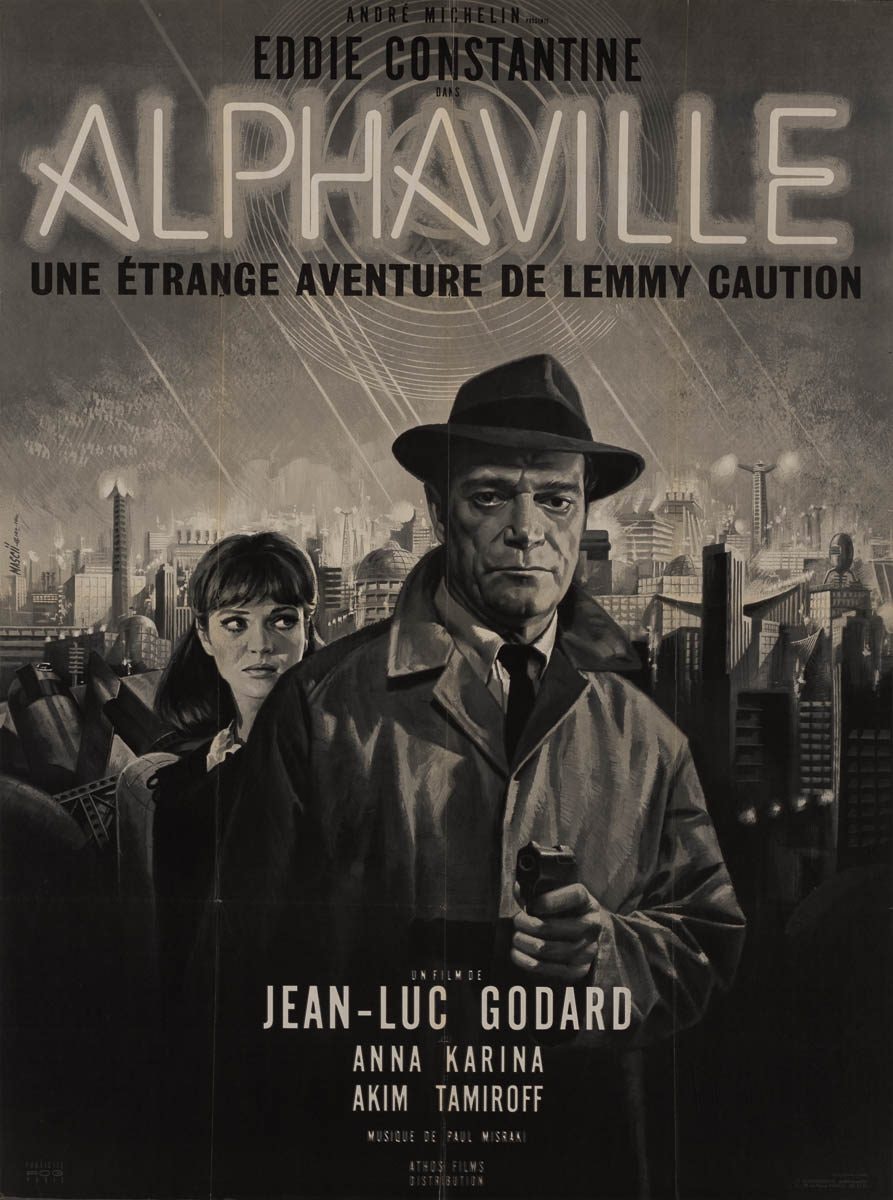
To have seen it in its time – in my case at the Moulin Rouge cinema in Nottingham, which alternated the latest from Godard, Truffaut, Antonioni and Fellini with the creampuff-porn nudist flicks of the pre-Confessions era – was to have been astonished and delighted. The passage of almost half a century has done nothing to dim its stylishness, blunt its humour or extinguish its piercing message.
Eddie Constantine, the expatriate American actor, had already played the weatherbeaten FBI agent Lemmy Caution in several French films based on a series of novels by the British writer Peter Cheyney (sample titles: Dames Get Along and This Man Is Dangerous). Godard invited Constantine to reprise the role and sent Caution into the future, keeping the B-movie conventions intact along with his personal accoutrements – American car, Zippo lighter, raincoat, trilby, button-down shirt. Caution arrives in Alphaville on a mission to find a lost agent and assassinate Professor von Braun, the architect of a state whose people are ruled by logic and science and have been purged of emotion.
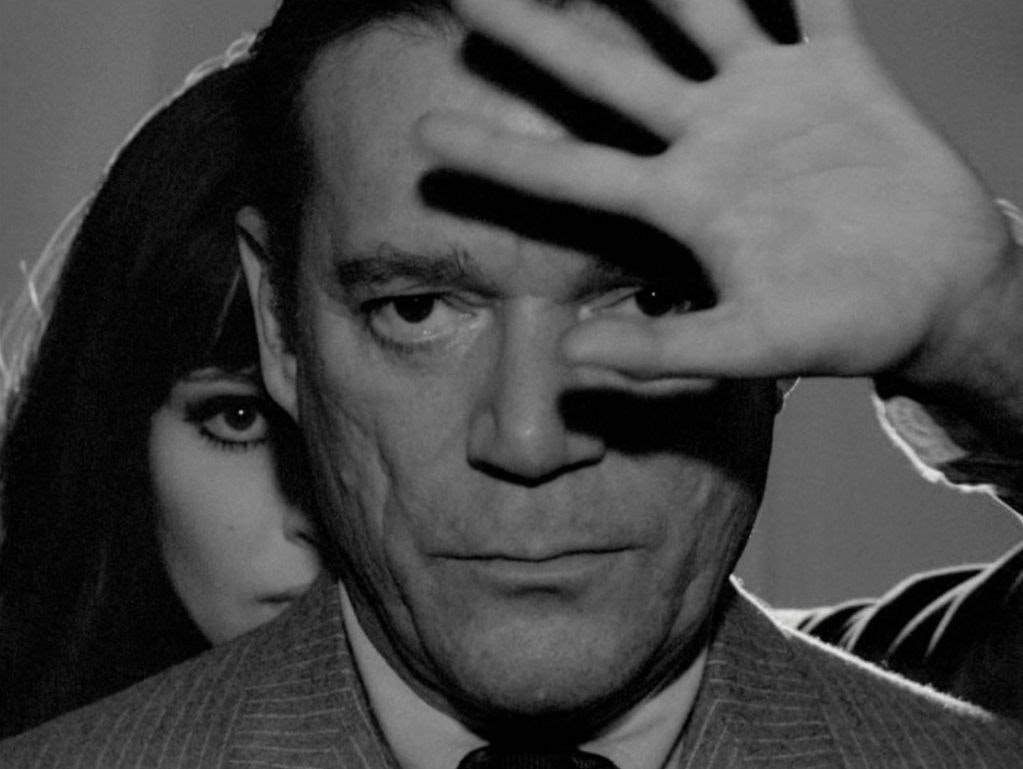
All the elements combine beautifully. Raoul Coutard's black-and-white photography turns everyday objects and settings – a hotel lobby, a swimming pool, a room full of mainframe computers, a jukebox, a Kodak Instamatic, the Paris suburbs at night – into the props of a convincingly dystopian futureworld whose philosophy is outlined in voiceover by the grating, inhuman tones of Alpha 60, the computer that regulates life in Alphaville. (Godard had the lines intoned by an actor who had lost his larynx and spoke through an artificial voice-box.) Paul Misraki's excellent score enhances moments of tension with warning stabs of low brass.
Anna Karina, meanwhile, is at her most darkly luminous as Natacha von Braun, the great leader's daughter. Her programmed responses slowly break down as the hardboiled detective gives his "pretty sphinx" a copy of poet Paul Eluard's Capital of Pain and introduces her to the concepts of "conscience" and "love" – words with which she is unfamiliar, since they have been progressively redacted from the dictionary that is the Bible of her father's totalitarian state. "Nearly every day, words disappear because they are forbidden," she tells him. "They are replaced by new words expressing new ideas." Orwell hovers around this film, along with Borges and Céline.
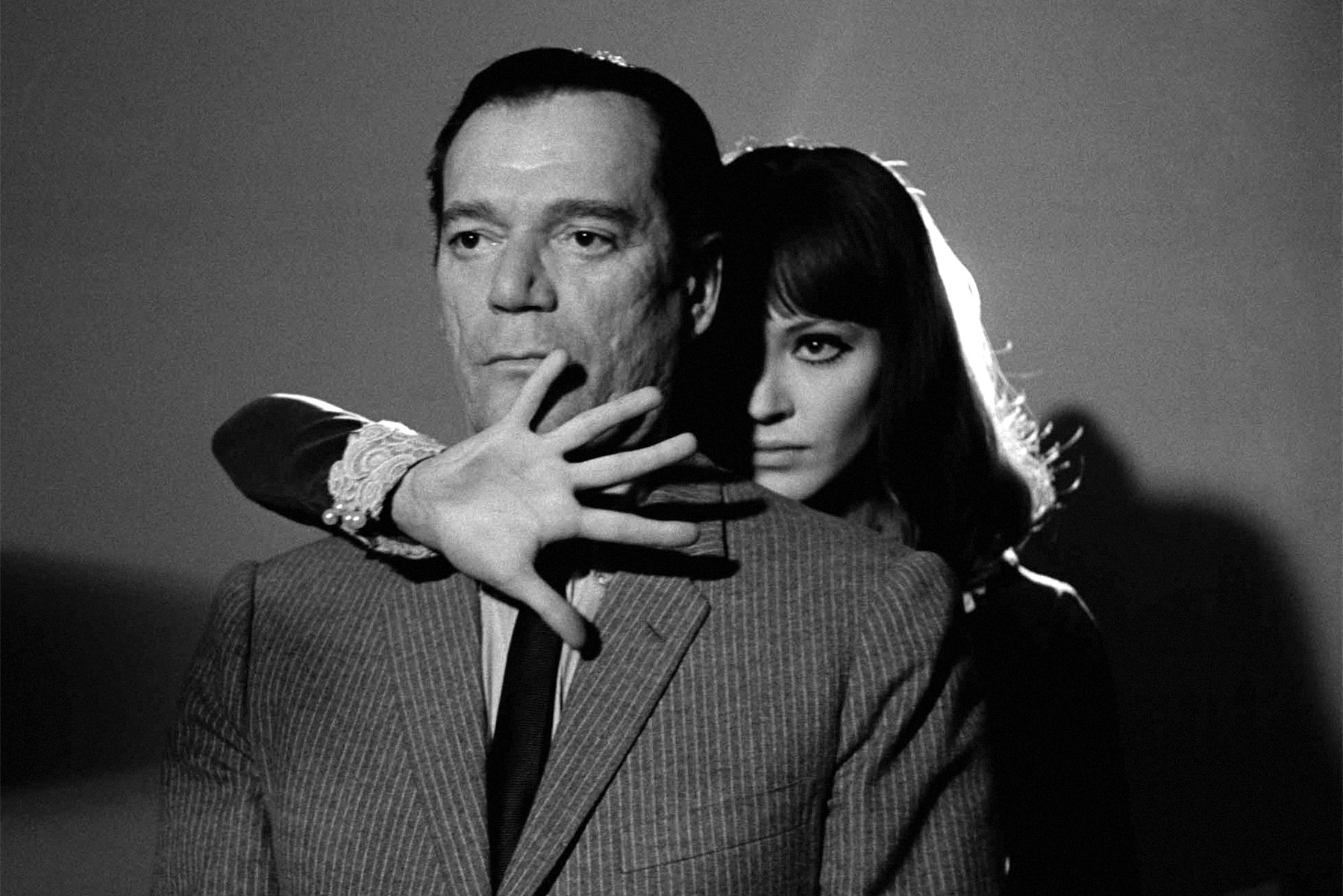
This was Godard's ninth feature film in six years, a rate of production resembling that of Beatles albums. There are signs of haste and improvisation, so Alphaville is much the better for its ability to make us think and trigger our feelings. At times it is a cartoon (the shootings, the use of negative images to convey disorientation) but at others it is more chillingly prescient than ever.
Yet Godard ends the piece on a note of romantic optimism, with Lemmy and Natasha escaping their pursuers and a dying world, fleeing to safety through intersidereal space (otherwise known as the Boulevard Périphérique) as the girl learns a new phrase: "Je vous aime ..."
KILL BILL Vol.1 (August, 2019)
"Kill Bill, Volume 1" shows Quentin Tarantino so effortlessly and brilliantly in command of his technique that he reminds me of a virtuoso violinist racing through "Flight of the Bumble Bee" -- or maybe an accordion prodigy setting a speed record for "Lady of Spain." I mean that as a sincere compliment. The movie is not about anything at all except the skill and humor of its making. It's kind of brilliant.
His story is a distillation of the universe of martial arts movies, elevated to a trancelike mastery of the material. Tarantino is in the Zone. His story engine is revenge. In the opening scene, Bill kills all of the other members of a bridal party, and leaves The Bride (Uma Thurman) for dead. She survives for years in a coma and is awakened by a mosquito's buzz. Is QT thinking of Emily Dickinson, who heard a fly buzz when she died? I am reminded of Manny Farber's definition of the auteur theory: "A bunch of guys standing around trying to catch someone shoving art up into the crevices of dreck." The Bride is no Emily Dickinson. She reverses the paralysis in her legs by "focusing." Then she vows vengeance on the Deadly Viper Assassination Squad, and as "Volume 1" concludes, she is about half-finished. She has wiped out Vernita Green (Vivica A. Fox) and O-Ren Ishii (Lucy Liu), and in "Volume 2" will presumably kill Elle Driver (Daryl Hannah), Budd (Michael Madsen) and of course Bill (David Carradine). If you think I have given away plot details, you think there can be doubt about whether the heroine survives the first half of a two-part action movie, and should seek help.
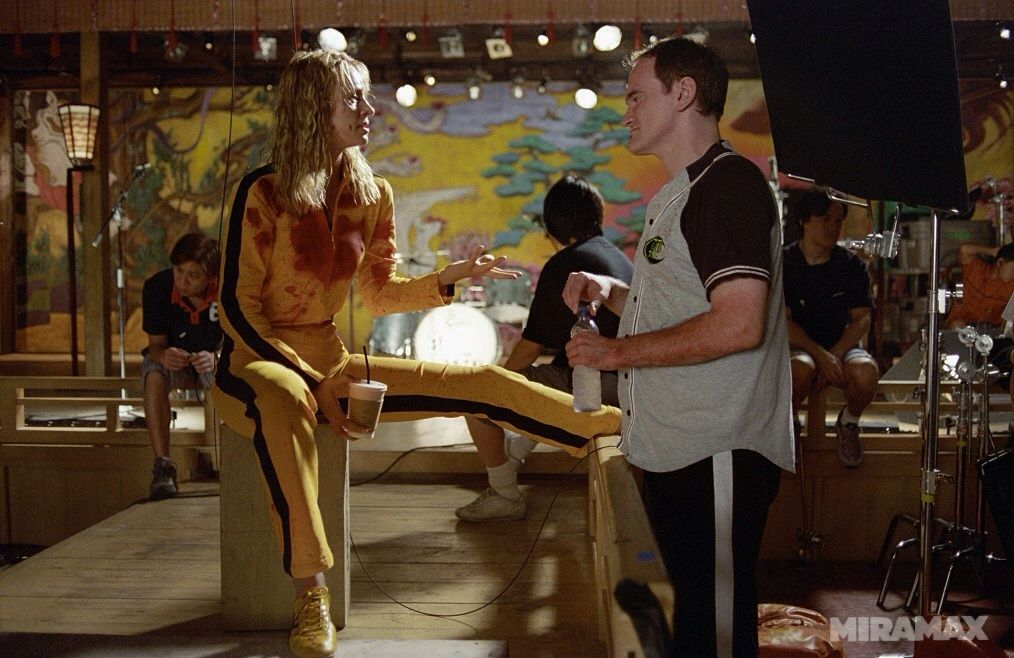
The movie is all storytelling and no story. The motivations have no psychological depth or resonance, but are simply plot markers. The characters consist of their characteristics. Lurking beneath everything, as it did with "Pulp Fiction," is the suggestion of a parallel universe in which all of this makes sense in the same way that a superhero's origin story makes sense. There is a sequence here (well, it's more like a third of the movie) where The Bride single-handedly wipes out O-Ren and her entire team, including the Crazy 88 Fighters, and we are reminded of Neo fighting the clones of Agent Smith in "The Matrix Reloaded," except the Crazy 88 Fighters are individual human beings, I think. Do they get their name from the Crazy 88 blackjack games on the Web, or from Episode 88 of the action anime "Tokyo Crazy Paradise," or should I seek help? The Bride defeats the 88 superb fighters (plus various bodyguards and specialists) despite her weakened state and recently paralyzed legs because she is a better fighter than all of the others put together. Is that because of the level of her skill, the power of her focus, or the depth of her need for vengeance? Skill, focus and need have nothing to do with it: She wins because she kills everybody without getting killed herself. You can sense Tarantino grinning a little as each fresh victim, filled with foolish bravado, steps forward to be slaughtered. Someone has to win in a fight to the finish, and as far as the martial arts genre is concerned, it might as well be the heroine. (All of the major characters except Bill are women, the men having been emasculated right out of the picture.) "Kill Bill, Volume 1" is not the kind of movie that inspires discussion of the acting, but what Thurman, Fox and Liu accomplish here is arguably more difficult than playing the nuanced heroine of a Sundance thumb-sucker. There must be presence, physical grace, strength, personality and the ability to look serious while doing ridiculous things. The tone is set in an opening scene, where The Bride lies near death and a hand rubs at the blood on her cheek, which will not come off because it is clearly congealed makeup. This scene further benefits from being shot in black and white; for QT, all shots in a sense are references to other shots -- not particular shots from other movies, but archetypal shots in our collective moviegoing memories.
There's B&W in the movie, and slo-mo, and a name that's bleeped entirely for effect, and even an extended sequence in anime. The animated sequence, which gets us to Tokyo and supplies the backstory of O-Ren, is sneaky in the way it allows Tarantino to deal with material that might, in live action, seem too real for his stylized universe. It deals with a Mafia kingpin's pedophilia. The scene works in animated long shot; in live action closeup, it would get the movie an 18.
Before she arrives in Tokyo, The Bride stops off to obtain a sword from Hattori Hanzo ("special guest star" Sonny Chiba). He has been retired for years, and is done with killing. But she persuades him, and he manufactures a sword that does not inspire his modesty: "This my finest sword. If in your journey you should encounter God, God will be cut." Later the sword must face the skill of Go Go Yubari (Chiaki Kuriyama), O-Ren's teenage bodyguard and perhaps a major in medieval studies, since her weapon of choice is the mace and chain. This is in the comic book tradition by which characters are defined by their weapons.
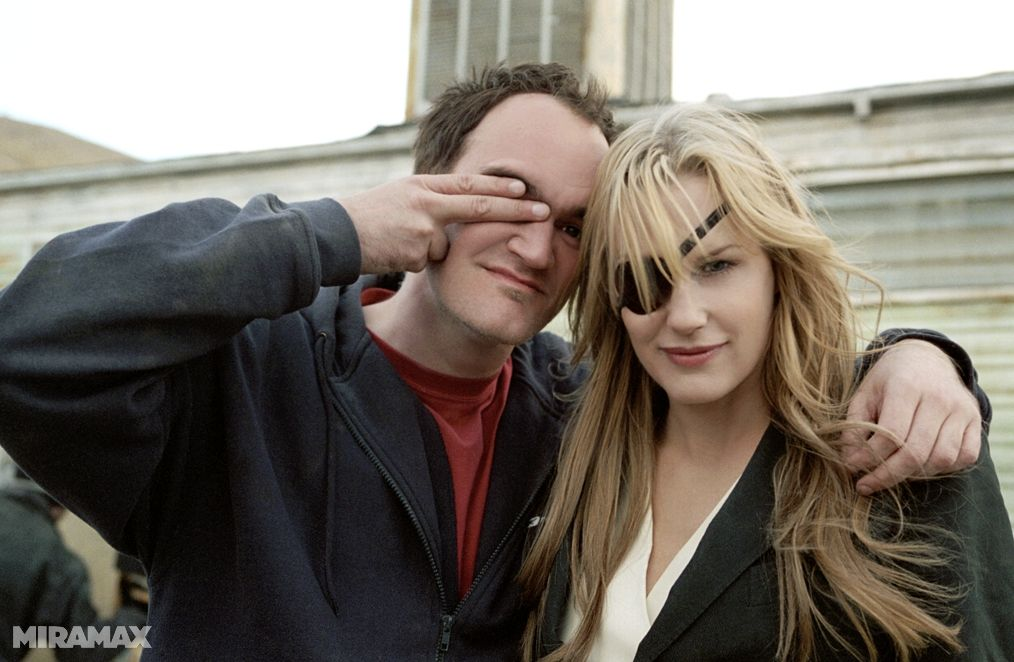
To see O-Ren's God-slicer and Go-Go's mace clashing in a field of dead and dying men is to understand how women have taken over for men in action movies. Strange, since women are not nearly as good at killing as men are. Maybe they're cast because the liberal media wants to see them succeed. The movie's women warriors reminds me of Ruby Rich's defense of Russ Meyer as a feminist filmmaker (his women initiate all the sex and do all the killing).
There is a sequence in which O-Ren Ishii takes command of the Japanese Mafia and beheads a guy for criticizing her as half-Chinese, female and American. O-Ren talks Japanese through a translator but when the guy's head rolls on the table everyone seems to understand her. Soon comes the deadly battle with The Bride, on a two-level set representing a Japanese restaurant. Tarantino has the wit to pace this battle with exterior shots of snowfall in an exquisite formal garden. Why must the garden be in the movie? Because gardens with snow are iconic Japanese images, and Tarantino is acting as the instrument of his received influences.
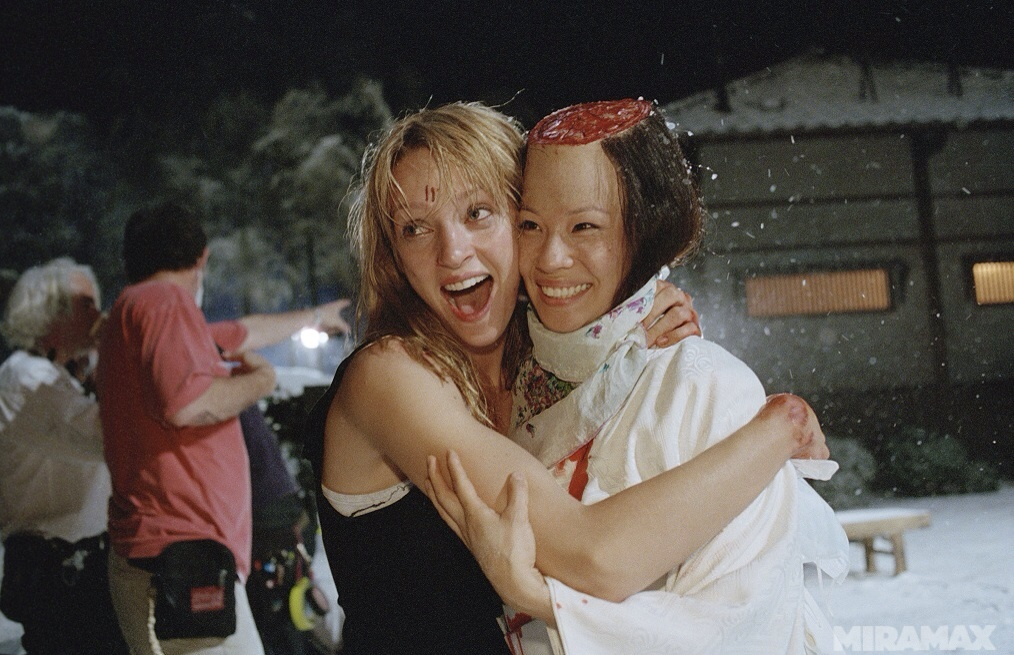
By the same token, Thurman wears a costume identical to one Bruce Lee wore in his last film. Is this intended as coincidence, homage, impersonation? Not at all. It can be explained by quantum physics: The suit can be in two movies at the same time. And when the Hannah character whistles the theme from "Twisted Nerve" (1968), it's not meant to suggest she is a Hayley Mills fan but that leakage can occur between parallel universes in the movies.
THE STING (July, 2019)
THE STING reunites the co-stars and the director of "Butch Cassidy and the Sundance Kid," a movie I thought was overrated.
The director is George Roy Hill, and the stars are those two good old buddies Paul Newman and Robert Redford. This time, they play con men who methodically and with great ingenuity fleece a rich mark (Robert Shaw). Their methods are incredibly complex (it would take all of today's space to attempt to explain them.) A lot of the fun in the movie is watching Hill and his screenwriter, David S. Ward, keep the plot straight.
The movie is set in Chicago of the 1930s, and many of the outdoor scenes were shot here (including an effective platform shot at Union Station). We see a big, confused, lusty, brawling city where the big guys with the muscle are somehow always losing to the guys with the confidence angles. Robert Shaw never figures out what hit him. Shaw is a high-stakes gambler who first gets hooked during a poker game between New York and Chicago on the 20th Century Limited. Newman and Redford spot him, mark him and begin to manipulate him. He never figures out they even know each other, and that's part of the charm: They have to play a lot of scenes for him as complete strangers, as Redford casually lets drop that he knows the location of the biggest wire room in Chicago.
The idea, Redford explains, is to allow Shaw to win big on a fixed horse race in order to . . . but I wasn't kidding when I said the scheme is complicated. Paul Newman operates the wire room. Or should we say it appears to be operated by Newman. Or, more accurately, it appears to be a wire room, because the entire operation is simply a theatrical set, and everybody in the room is an actor, and the "broadcasts" from the track actually are being made up by an announcer in the back room.
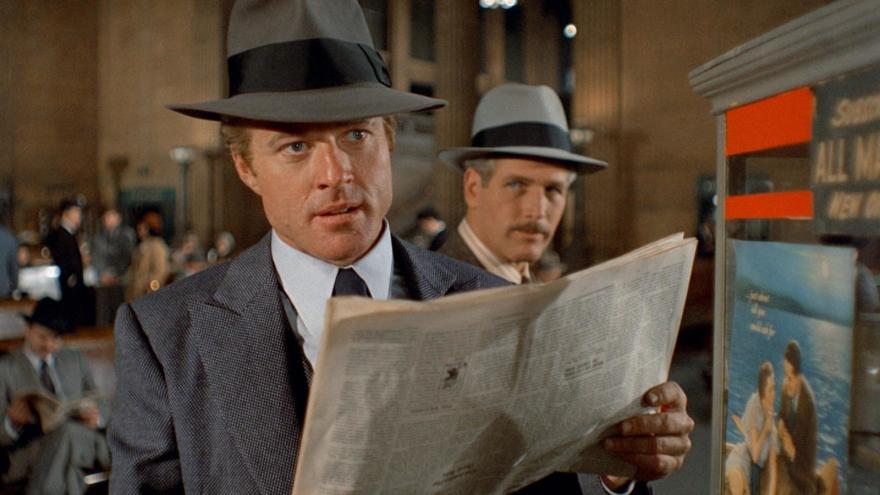
The movie has a nice, light-fingered style to it. Hill gently kids the 1930s with his slight exaggerations of fashions and styles. He tells his story episodically, breaking the movie down into the various plateaus of the con game. And he's awfully good at maintaining a kind of off-balance pacing; we can never quite pin Newman and Redford down. They're always sort of angling into scenes, making enigmatic statements under their breath and staying at least a step ahead of us. Hill's visual style is oblique; instead of stationing his actors in the frame and recording the action, he seems to sneak up on it. Newman and Redford almost seem on their way to another movie. If that sounds like a criticism, it's not meant as one: The style here is so seductive and witty it's hard to pin down. It's like nothing else I've seen by Hill, and at times, it almost reminds me of Jacques Tati crossed with Robert Altman. It's good to get a crime movie more concerned with humor and character than with blood and gore; here's one, as we say, for the whole family.
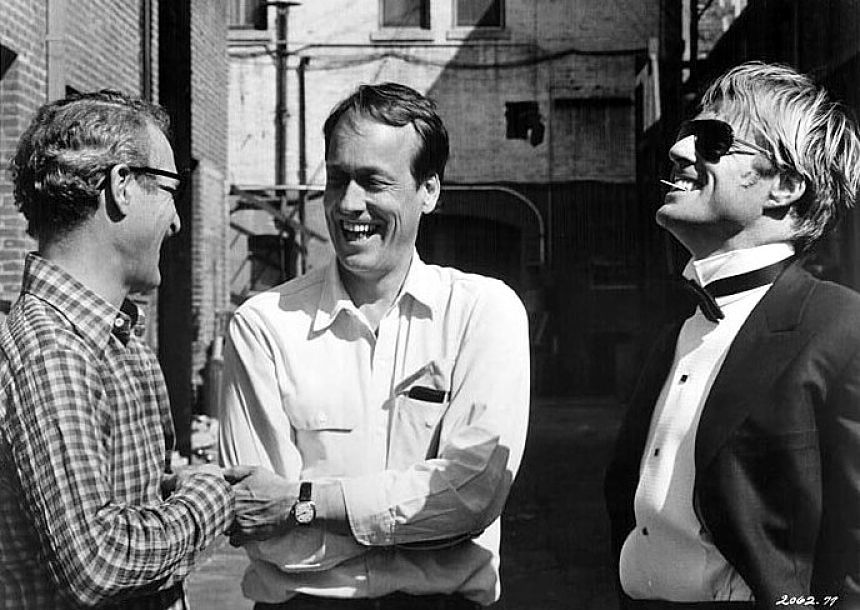
STRANGERS ON A TRAIN (June, 2019)
The abiding terror in Alfred Hitchcock's life was that he would be accused of a crime he did not commit. This fear is at the heart of many of his best films, including "Strangers on a Train" (1951), in which a man becomes the obvious suspect in the strangulation of his wife. He makes an excellent suspect because of the genius of the actual killer's original plan: Two strangers will "exchange murders," each killing the person the other wants dead. They would both have airtight alibis for the time of the crime, and there would be no possible connection between killer and victim.
It is a plot made of ingenuity and amorality, based on the first novel by Patricia Highsmith (1921-1995), who in her Ripley novels and elsewhere was fascinated by brainy criminals who functioned not out of passion but from careful calculation, and usually got away with their crimes. The "criss-cross" murder deal in "Strangers on a Train" indeed would have worked perfectly -- except for the detail that only one of the strangers agrees to it.
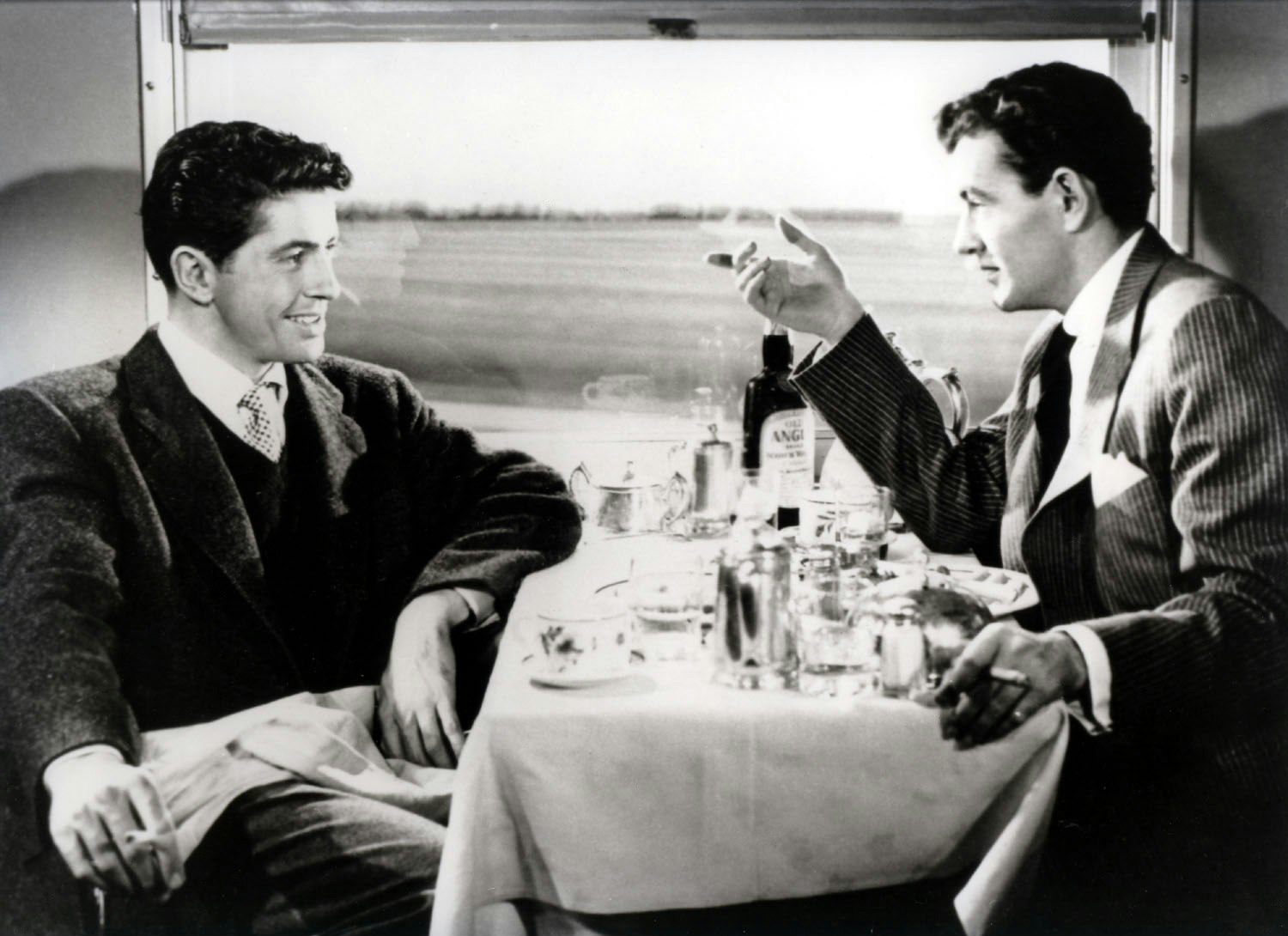
Guy Haines, a famous tennis player, is recognized on a train by Bruno Anthony, whose conversation shows a detailed knowledge of Guy's private life. Guy wants a divorce from his cheating wife, Miriam (Kasey Rogers), in order to marry Anne Morton (Ruth Roman), the daughter of a U.S. senator. Over lunch in his private compartment, Bruno reveals that he wants his father dead, and suggests a "perfect crime" in which he would murder Guy's wife, Guy would murder Bruno's father, and neither would ever be suspected.
Bruno's manner is pushy and insinuating, with homoerotic undertones. Guy is offended by the references to his private life, but inexplicably doesn't break off the conversation -- which ends on an ambiguous note, with Bruno trying to get Guy to agree to the plan, and Guy trying to jolly him along and get rid of him.
But Bruno does murder Guy's wife, and then demands that Guy keep his half of the bargain. As a plot, this has a neatness that Hitchcock must have found irresistible -- especially since Guy has a motive to murder his wife, was seen in a public fight with her earlier on the day of her death, and even told his fiancée he would like to "strangle" Miriam.
Hitchcock said that correct casting saved him a reel in storytelling time, since audiences would sense qualities in the actors that didn't need to be spelled out. Certainly the casting of Farley Granger as Guy and Robert Walker as Bruno is crucial. Hitchcock allegedly wanted William Holden for the role of Guy ("he's stronger," he told Francois Truffaut), but Holden would have been all wrong -- too sturdy, too put off by Bruno (despite the way Holden allowed an aging actress to manipulate him in "Sunset Boulevard").
Granger is softer and more elusive, more convincing as he tries to slip out of Bruno's conversational web instead of flatly rejecting him. Walker plays Bruno as flirtatious and seductive, sitting too close during their first meeting, and then reclining at full length across from Guy in the private compartment. The meeting on the train, which was probably planned by Bruno, plays more like a pickup than a chance encounter.
It is this sense of two flawed characters -- one evil, one weak, with an unstated sexual tension -- that makes the movie intriguing and halfway plausible, and helps explain how Bruno could come so close to carrying out his plan. Highsmith was a lesbian whose novels have uncanny psychological depth; Andrew Wilson's 2003 biography says she often fell in love with straight women, and her stories frequently use a buried subtext of unstated gay attraction -- as in "The Talented Mr. Ripley," made into a 1999 movie in which her criminal hero Tom Ripley falls in love not so much with his quarry Dickie Greenleaf as with his identity and lifestyle.
Although homosexuality still dared not speak its name very loudly in 1951, Hitchcock was quite aware of Bruno's orientation, and indeed edited separate American and British version of the film -- cutting down the intensity of the "seductiveness" in the American print. It's worth noticing that Hitchcock also cast Granger in "Rope" (1948), based on the Leopold-Loeb case; it was another story about a murder pact with a homosexual subtext.
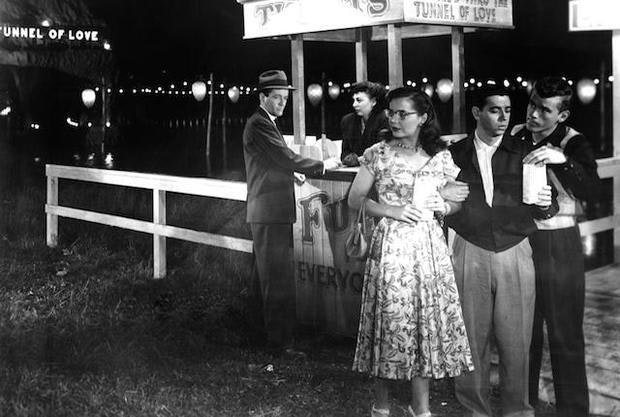
"Strangers on a Train" is not a psychological study, however, but a first-rate thriller with odd little kinks now and then. It proceeds, as Hitchcock's films so often do, with a sense of private scores being settled just out of sight. His obsession with being wrongly accused no doubt refers to a traumatic episode in his childhood, when his father sent naughty little Alfred to the police station with a note asking the sergeant to lock him up until called for. Interesting, in this context, is Hitchcock's casting of his own daughter, Patricia, as the outspoken young Barbara Morton, kid sister of Guy's fiancée Anne. Patricia Hitchcock and Kasey Rogers look a little alike and wear very similar eyeglasses; Bruno is playfully demonstrating strangling techniques at a party when he sees Barbara, flashes back to the murder, and flips out. The kid sister gets the creepiest lines in "Strangers on a Train," especially during an early meeting involving Guy and the senator's whole family; she keeps blurting out what everyone is afraid to say.
Hitchcock was above all the master of great visual set pieces, and there are several famous sequences in "Strangers on a Train." Best known is the one where Guy scans the crowd at a tennis match and observes that all of the heads are swiveling back and forth to follow the game -- except for one head, Bruno's, which is looking straight ahead at Guy. (The same technique was used in Hitchcock's "Foreign Correspondent," where all the windmills rotate in the same direction -- except one.)
Another effective scene shows Guy floating in a little boat through the Tunnel of Love at a carnival; Miriam and two boyfriends are in the boat ahead, and shadows on the wall make it appear Bruno has overtaken them. In a scene where Guy goes upstairs in the dark in Bruno's house, Hitchcock told Truffaut, he hit on the inspiration of a very large dog to distract the audience from what he would probably find at the top.
Then there's the famous sequence involving a runaway merry-go-round, on which Guy and Bruno struggle as a carnival worker crawls on his stomach under the revolving ride to get to the controls. (This shot was famously unfaked, and the stunt man could have been killed; Hitchcock said he would never take such a chance again.) Another great shot shows Bruno's face in the shadow of his hat brim, only the whites of his eyes showing.
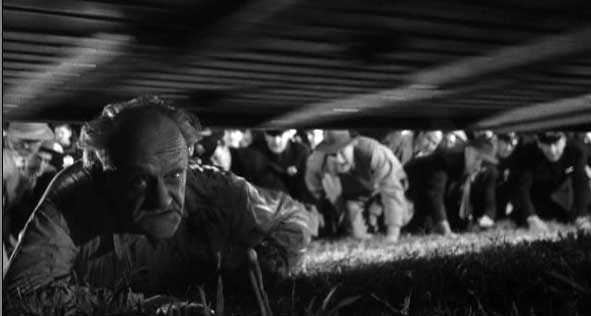
Hitchcock was a classical technician in controlling his visuals, and his use of screen space underlined the tension in ways the audience is not always aware of. He always used the convention that the left side of the screen is for evil and/or weaker characters, while the right is for characters who are either good, or temporarily dominant. Consider the scene where Guy is letting himself into his Georgetown house when Bruno whispers from across the street to summon him. Bruno is standing behind an iron gate, the bars casting symbolic shadows on his face, and Guy stands to his right, outside the gate. Then a police car pulls up in front of Guy's house, and he quickly moves behind the gate with Bruno; they're now both behind bars as he says, "You've got me acting like I'm a criminal."
The Robert Walker performance benefits from a subtle tense urgency that perhaps reflected events in his private life; he had a nervous breakdown shortly after filming was completed, was institutionalized for treatment, and died of an accidental overdose of tranquilizers. (Leftover closeups from this film were used to finish his final film, "My Son John.") Although Hitchcock said in Francois Truffaut's book-length interview that he didn't much like either of the actors, Walker's Bruno has been called one of Hitchcock's best villains, and Hitch agreed with Truffaut that the audience sympathy was more with him than with Granger's playboy.
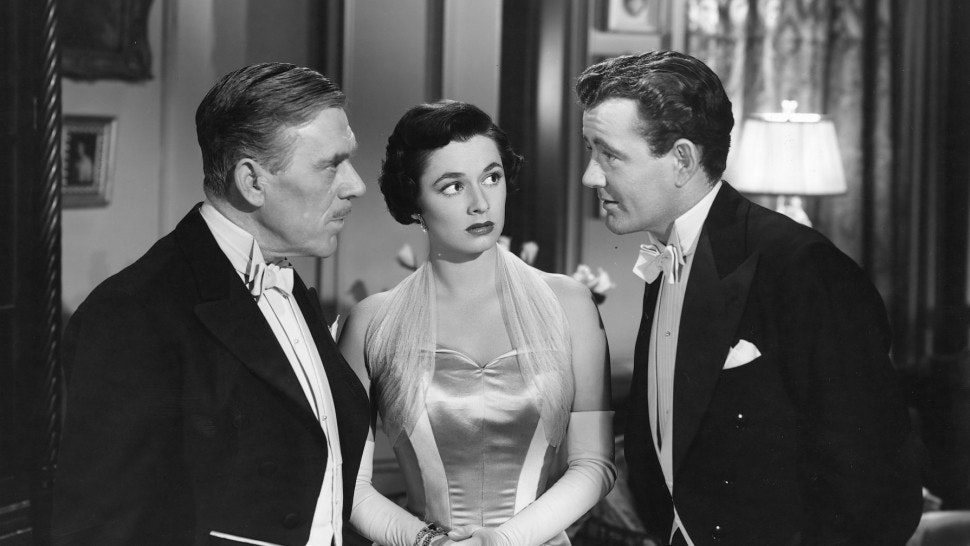
The movie is usually ranked among Hitchcock's best (I would put it below only "Vertigo," "Notorious," "Psycho" and perhaps "Shadow of a Doubt"), and its appeal is probably the linking of an ingenious plot with insinuating creepiness. That combination came in the first place from Highsmith, whose novels have been unfairly shelved with crime fiction when she actually writes mainstream fiction about criminals.
There's an intriguing note from a user of the Internet Movie Database, claiming to have spotted Highsmith in a cameo in the film. She's behind Miriam in the early scene in the record store, writing something in a notebook. No Highsmith cameo has even been reported in the movie's lore (all the attention goes to Hitchcock's trademark cameo) but you can look for yourself. To think she may have been haunting it all of these years.
ROGER EBERT
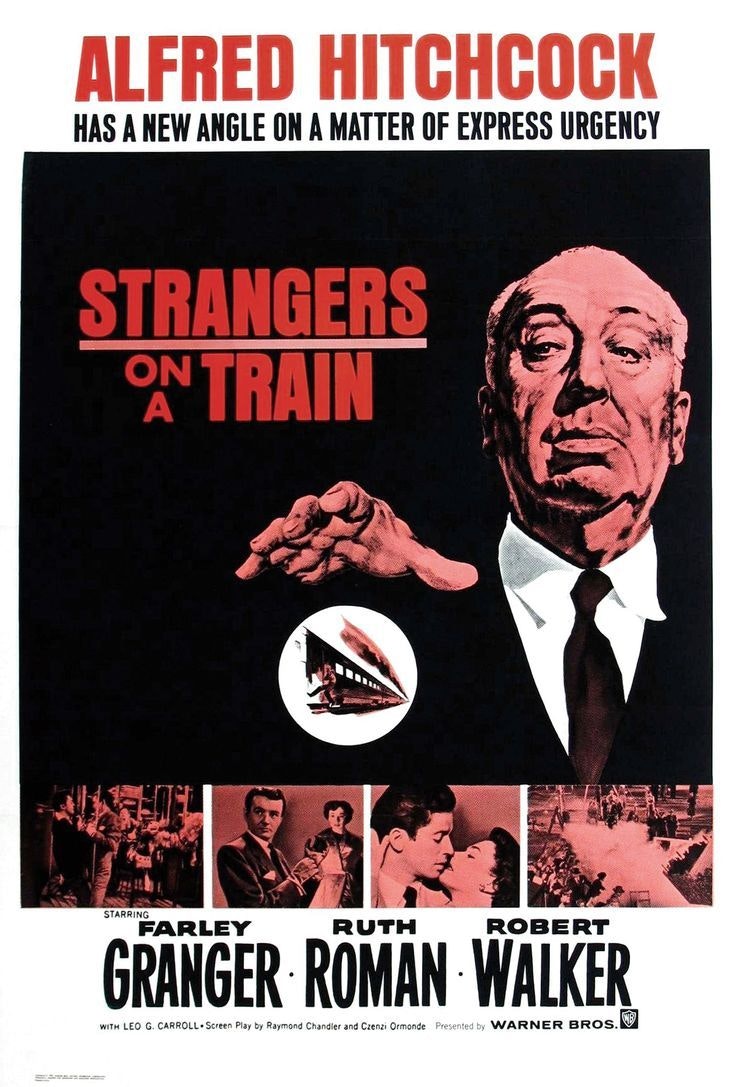
CASABLANCA (May, 2019)
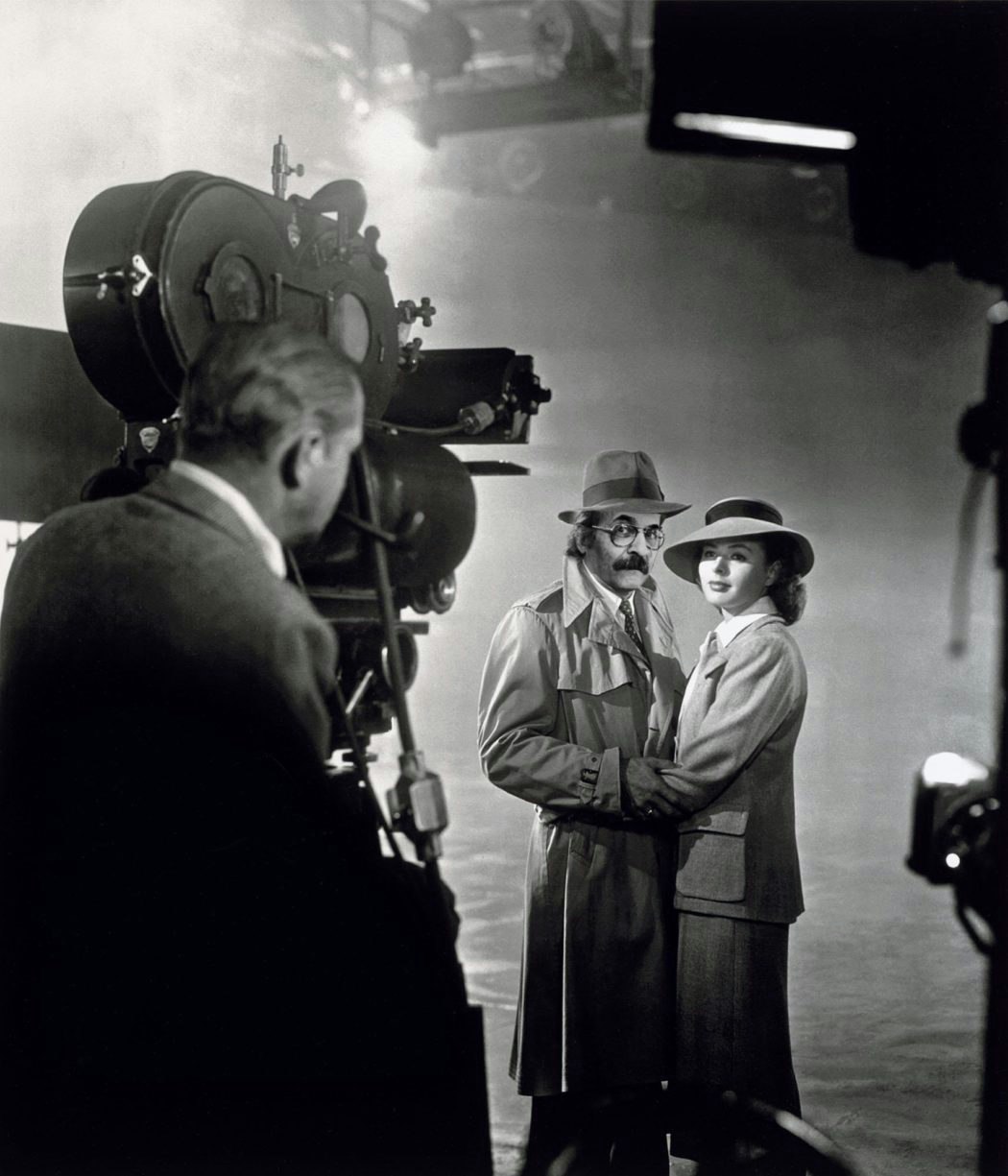
If we identify strongly with the characters in some movies, then it is no mystery that “Casablanca” is one of the most popular films ever made. It is about a man and a woman who are in love, and who sacrifice love for a higher purpose. This is immensely appealing; the viewer is not only able to imagine winning the love of Humphrey Bogart or Ingrid Bergman, but unselfishly renouncing it, as a contribution to the great cause of defeating the Nazis.
No one making “Casablanca” thought they were making a great movie. It was simply another Warner Bros. release. It was an “A list” picture, to be sure (Bogart, Bergman and Paul Henreid were stars, and no better cast of supporting actors could have been assembled on the Warners lot than Peter Lorre, Sidney Greenstreet, Claude Rains and Dooley Wilson). But it was made on a tight budget and released with small expectations. Everyone involved in the film had been, and would be, in dozens of other films made under similar circumstances, and the greatness of “Casablanca” was largely the result of happy chance.
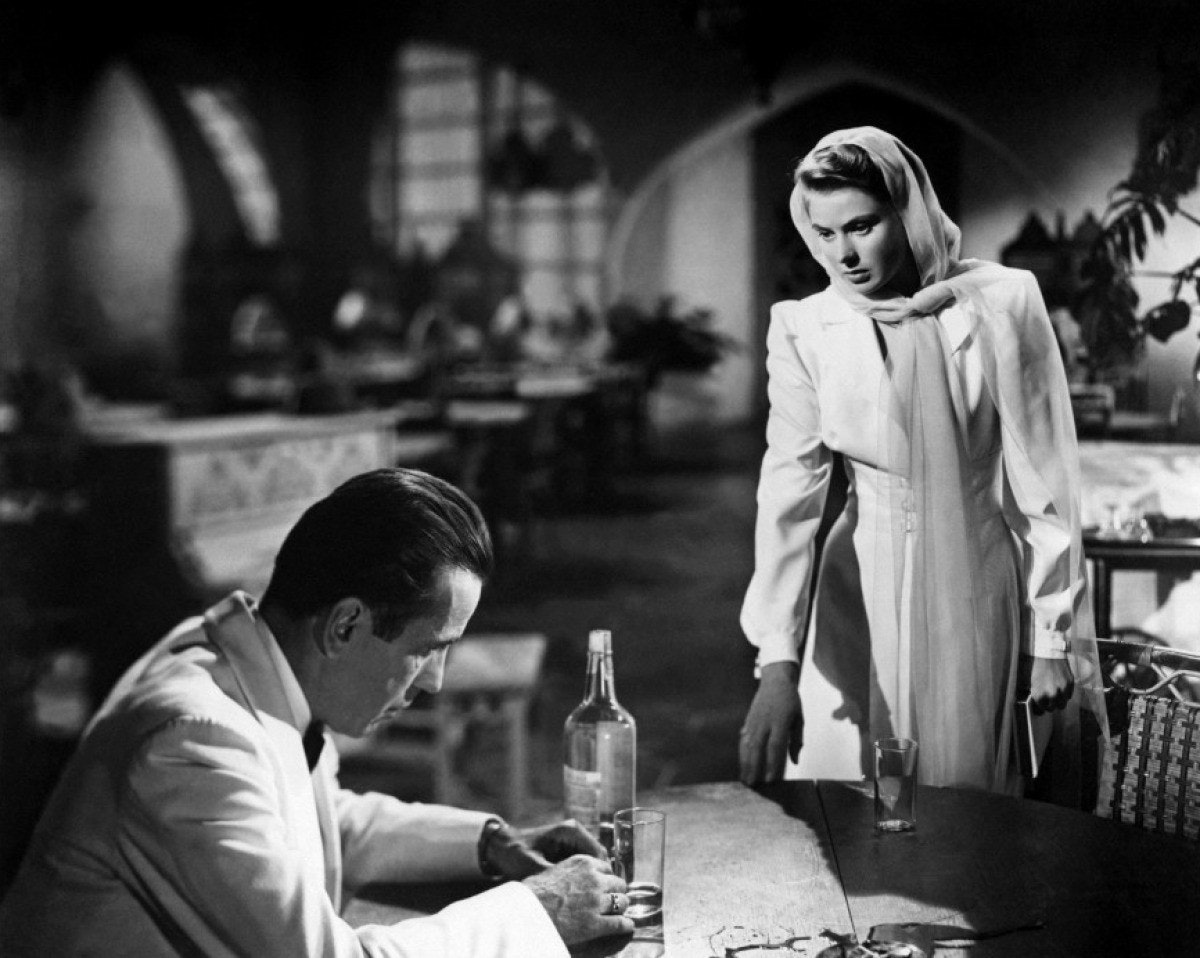
The screenplay was adapted from a play of no great consequence; memoirs tell of scraps of dialogue jotted down and rushed over to the set. What must have helped is that the characters were firmly established in the minds of the writers, and they were characters so close to the screen personas of the actors that it was hard to write dialogue in the wrong tone.
Humphrey Bogart played strong heroic leads in his career, but he was usually better as the disappointed, wounded, resentful hero. Remember him in “The Treasure of the Sierra Madre,” convinced the others were plotting to steal his gold. In “Casablanca,” he plays Rick Blaine, the hard-drinking American running a nightclub in Casablanca when Morocco was a crossroads for spies, traitors, Nazis and the French Resistance.
The opening scenes dance with comedy; the dialogue combines the cynical with the weary; wisecracks with epigrams. We see that Rick moves easily in a corrupt world. “What is your nationality?” the German Strasser asks him, and he replies, “I'm a drunkard.” His personal code: “I stick my neck out for nobody.”
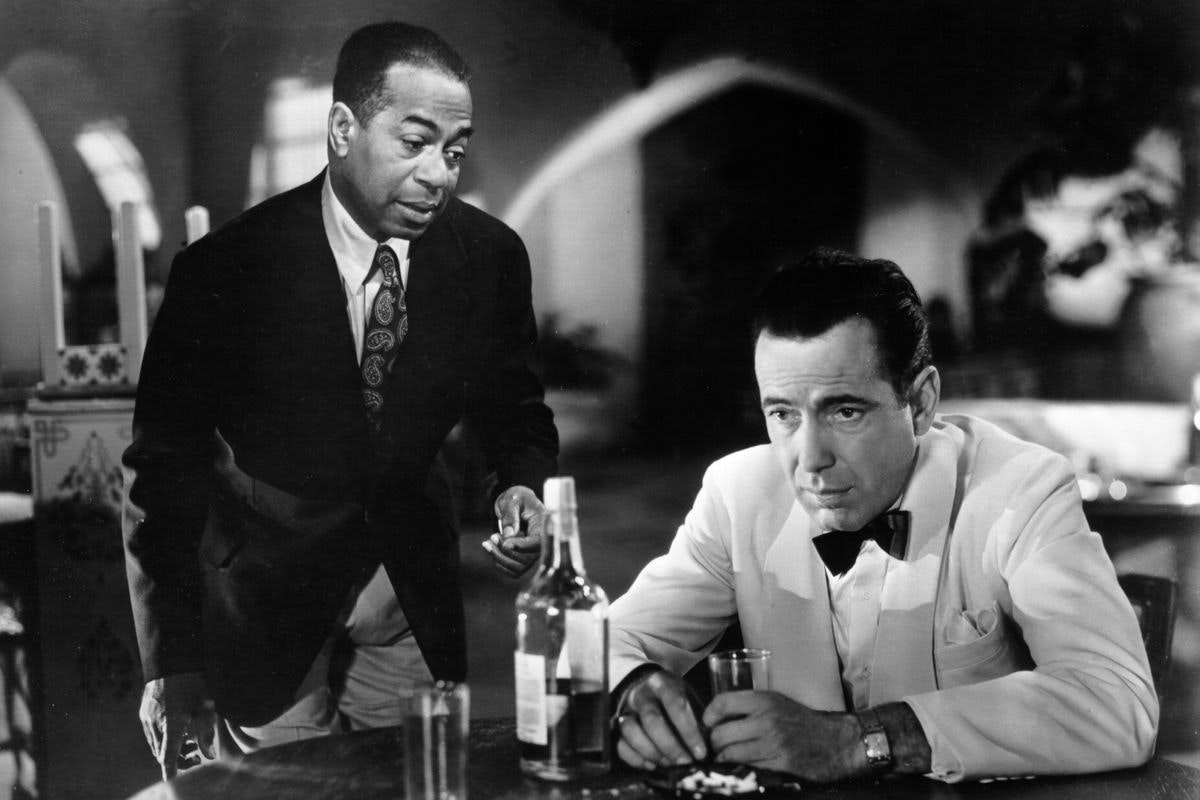
Then “of all the gin joints in all the towns in all the world, she walks into mine.” It is Ilsa Lund (Bergman), the woman Rick loved years earlier in Paris. Under the shadow of the German occupation, he arranged their escape, and believes she abandoned him--left him waiting in the rain at a train station with their tickets to freedom. Now she is with Victor Laszlo (Henreid), a legendary hero of the French Resistance.
All this is handled with great economy in a handful of shots that still, after many viewings, have the power to move me emotionally as few scenes ever have. The bar's piano player, Sam (Wilson), a friend of theirs in Paris, is startled to see her. She asks him to play the song that she and Rick made their own, “As Time Goes By.” He is reluctant, but he does, and Rick comes striding angrily out of the back room (“I thought I told you never to play that song!”). Then he sees Ilsa, a dramatic musical chord marks their closeups, and the scene plays out in resentment, regret and the memory of a love that was real. (This scene is not as strong on a first viewing as on subsequent viewings, because the first time you see the movie you don't yet know the story of Rick and Ilsa in Paris; indeed, the more you see it the more the whole film gains resonance.)
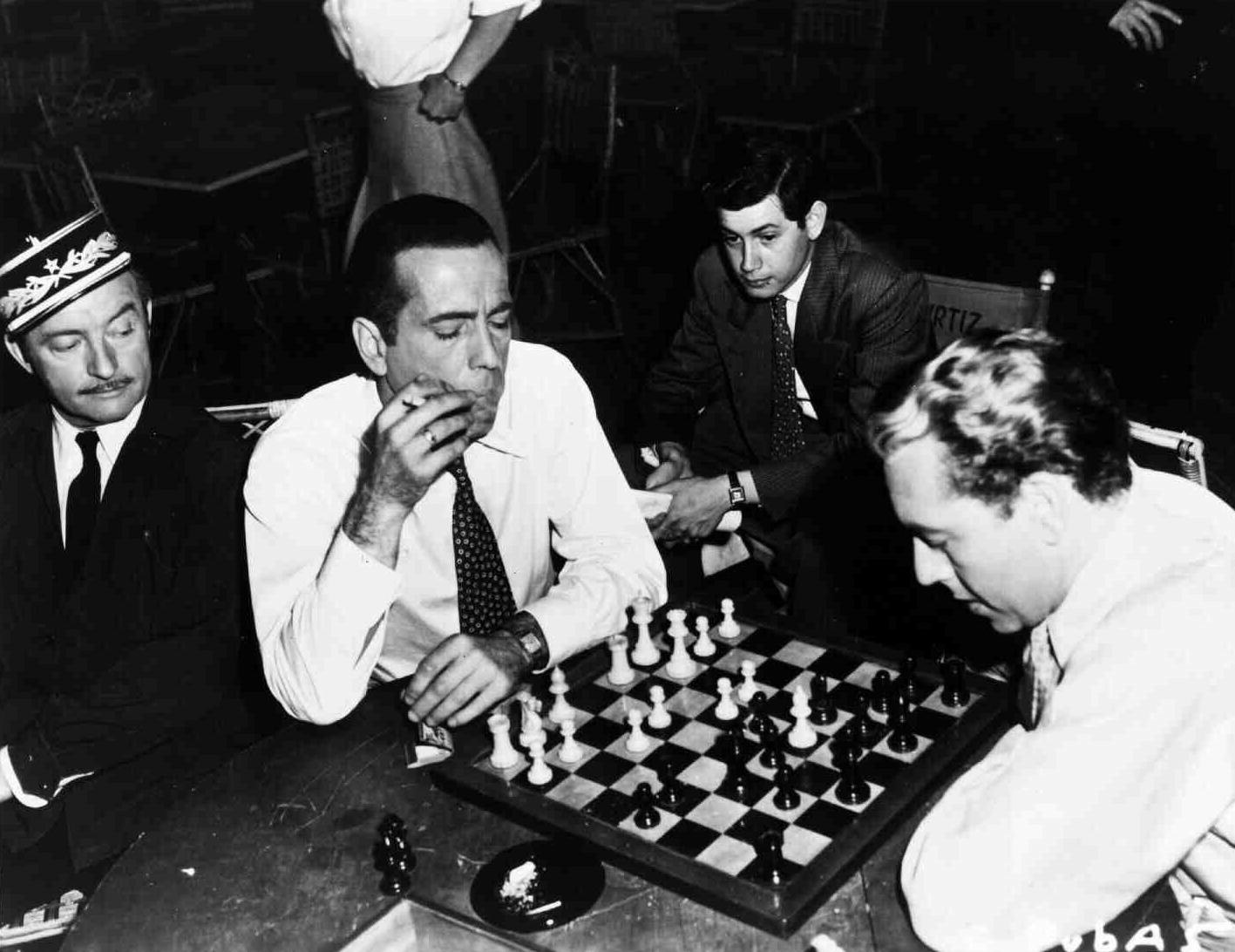
The plot, a trifle to hang the emotions on, involves letters of passage that will allow two people to leave Casablanca for Portugal and freedom. Rick obtained the letters from the wheedling little black-marketeer Ugarte (Peter Lorre). The sudden reappearance of Ilsa reopens all of his old wounds, and breaks his carefully cultivated veneer of neutrality and indifference. When he hears her story, he realizes she has always loved him. But now she is with Laszlo. Rick wants to use the letters to escape with Ilsa, but then, in a sustained sequence that combines suspense, romance and comedy as they have rarely been brought together on the screen, he contrives a situation in which Ilsa and Laszlo escape together, while he and his friend the police chief (Claude Rains) get away with murder. (“Round up the usual suspects.”)
What is intriguing is that none of the major characters is bad. Some are cynical, some lie, some kill, but all are redeemed. If you think it was easy for Rick to renounce his love for Ilsa--to place a higher value on Laszlo's fight against Nazism--remember Forster's famous comment, “If I were forced to choose between my country and my friend, I hope I would be brave enough to choose my friend.”
From a modern perspective, the film reveals interesting assumptions. Ilsa Lund's role is basically that of a lover and helpmate to a great man; the movie's real question is, which great man should she be sleeping with? There is actually no reason why Laszlo cannot get on the plane alone, leaving Ilsa in Casablanca with Rick, and indeed that is one of the endings that was briefly considered. But that would be all wrong; the “happy” ending would be tarnished by self-interest, while the ending we have allows Rick to be larger, to approach nobility (“it doesn't take much to see that the problems of three little people don't amount to a hill of beans in this crazy world”). And it allows us, vicariously experiencing all of these things in the theater, to warm in the glow of his heroism.
In her closeups during this scene, Bergman's face reflects confusing emotions. And well she might have been confused, since neither she nor anyone else on the film knew for sure until the final day who would get on the plane. Bergman played the whole movie without knowing how it would end, and this had the subtle effect of making all of her scenes more emotionally convincing; she could not tilt in the direction she knew the wind was blowing.
Stylistically, the film is not so much brilliant as absolutely sound, rock-solid in its use of Hollywood studio craftsmanship. The director, Michael Curtiz, and the writers (Julius J. Epstein, Philip G. Epstein and Howard Koch) all won Oscars. One of their key contributions was to show us that Rick, Ilsa and the others lived in a complex time and place. The richness of the supporting characters (Greenstreet as the corrupt club owner, Lorre as the sniveling cheat, Rains as the subtly homosexual police chief and minor characters like the young girl who will do anything to help her husband) set the moral stage for the decisions of the major characters. When this plot was remade in 1990 as “Havana,” Hollywood practices required all the big scenes to feature the big stars (Robert Redford and Lena Olin) and the film suffered as a result; out of context, they were more lovers than heroes.
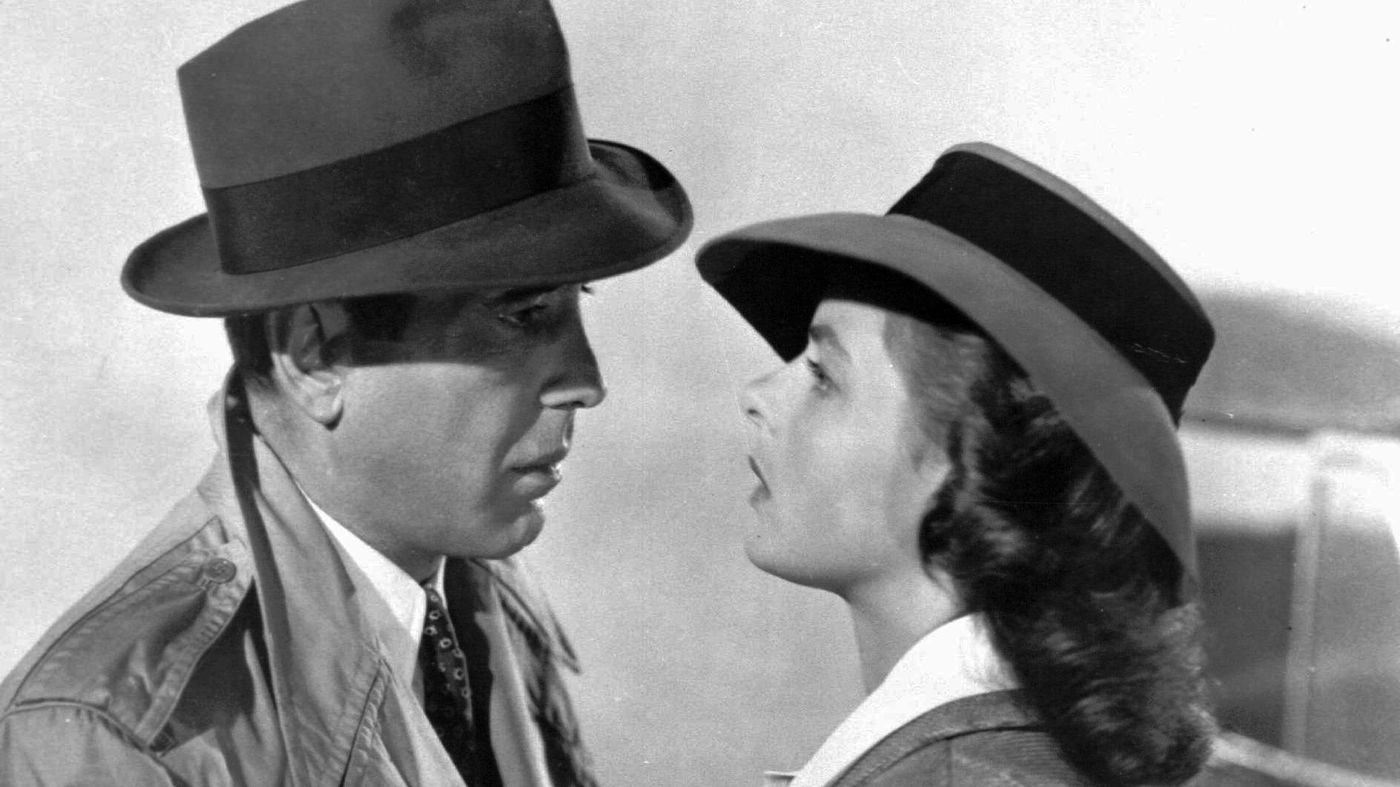
Seeing the film over and over again, year after year, I find it never grows over-familiar. It plays like a favorite musical album; the more I know it, the more I like it. The black-and-white cinematography has not aged as color would. The dialogue is so spare and cynical it has not grown old-fashioned. Much of the emotional effect of “Casablanca” is achieved by indirection; as we leave the theater, we are absolutely convinced that the only thing keeping the world from going crazy is that the problems of three little people do after all amount to more than a hill of beans. (ROGER EBERT).
BEING THERE (April, 2019)
On the day that Kasparov was defeated by Deep Blue, I found myself thinking of the film "Being There'' (1979). The chess champion said there was something about the computer he did not understand, and it frightened him. There were moments when the computer seemed to be . . . thinking. Of course, chess is not a game of thought but of mathematical strategy; Deep Blue has demonstrated it is possible to be very good at it without possessing consciousness
The classic test of Artificial Intelligence has been: Can a computer be programmed to conduct a conversation that seems human to another human? "Being There'' is a film about a man whose mind works like a rudimentary A.I. program.
His mind has been supplied with a fund of simplistic generalizations about the world, phrased in terms of the garden where he has worked all his adult life. But because he presents himself as a man of good breeding (he walks and talks like the wealthy older man whose house he lived in, and wears the man's tailored suits) his simplicity is mistaken for profundity, and soon he is advising presidents and befriending millionaires.
The man's name is Chance. We gather he has lived all of his life inside the townhouse and walled garden of a rich recluse (perhaps he is his son). He knows what he needs to know for his daily routine: Where his bedroom and bathroom are, and how to tend the plants of the garden. His meals are produced by Louise, the cook. The movie provides no diagnosis of his condition. He is able to respond to given cues, and can, within limits, adapt and learn.
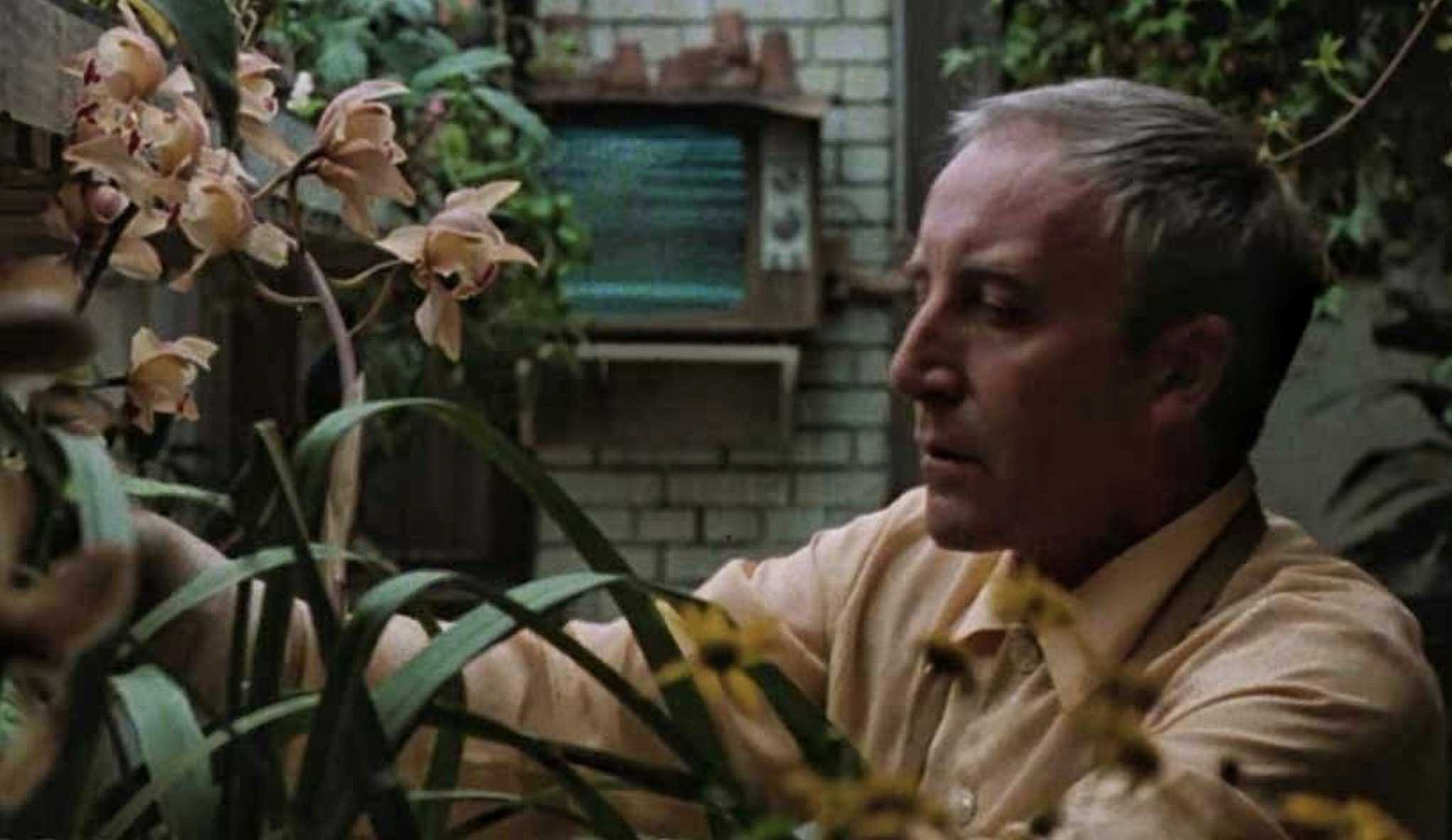
Early in the film he introduces himself as "Chance . . . the gardener,'' and is misunderstood as having said "Chauncey Gardener.'' Just the sort of WASP name that matches his clothing and demeanor, and soon he is telling the President: "Spring, summer, autumn, winter . . . then spring again.'' Indeed.
Chance is played by Peter Sellers, an actor who once told me he had "absolutely no personality at all. I am a chameleon. When I am not playing a role, I am nobody.'' Of course, he thought himself ideal for this role, which comes from a novel by Jerzy Kosinski. Sellers plays Chance as a man at peace with himself. When the old man dies, the household is broken up and Chance is evicted, there is a famous scene where he is confronted by possible muggers, and simply points a channel changer at them, and clicks. He is surprised when they do not go away.
Sellers plays Chance at exactly the same note for the entire film. He is detached, calm, secure in his own knowledge, unaware of his limitations. Through a series of happy chances, he is taken into the home of a dying millionaire named Benjamin Rand (Melvyn Douglas). The millionaire's wife Eve (Shirley MacLaine) establishes Chance in a guest suite, where he is happy to find a television (his most famous line is, "I like to watch.'')
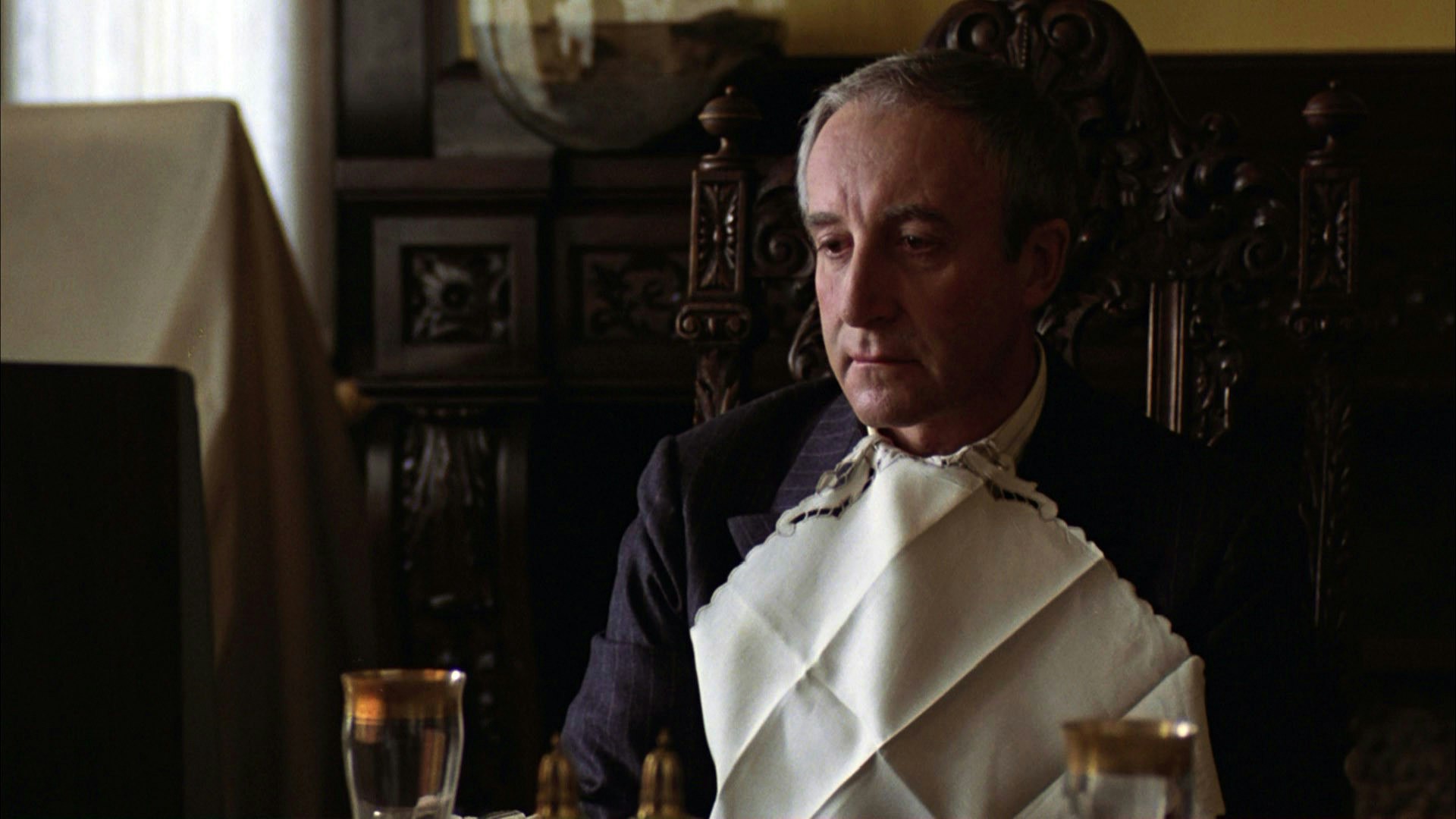
Soon the rich man grows to treasure his reassuring friend. The family doctor (Richard Dysart) is perceptive, and begins to have doubts about Chance's authenticity, but silences himself when his patient says Chauncey "has made the thought of dying much easier.'' Chauncey is introduced by Ben to the president (Jack Warden), becomes an unofficial advisor, and soon is being interviewed on television, where his insights fit nicely into the limited space available for sound bites.
Satire is a threatened species in American film, and when it does occur, it's usually broad and slapstick, as in the Mel Brooks films. "Being There,'' directed by Hal Ashby, is a rare and subtle bird that finds its tone and stays with it. It has the appeal of an ingenious intellectual game, in which the hero survives a series of challenges he doesn't understand, using words that are both universal and meaningless. But are Chance's sayings noticeably less useful than when the president tells us about a "bridge to the 21st century?'' Sensible public speech in our time is limited by (1) the need to stay within the confines of the 10-second TV sound bite; (2) the desire to avoid being pinned down to specific claims or promises; and (3) the abbreviated attention span of the audience, which, like Chance, likes to watch but always has a channel-changer poised.
If Chance's little slogans reveal how superficial public utterance can be, his reception reveals still more. Because he is WASP, middle-aged, well-groomed, dressed in tailored suits, and speaks like an educated man, he is automatically presumed to be a person of substance. He is, in fact, socially naive ("You're always going to be a little boy,'' Louise tells him). But this leads to a directness than can be mistaken for confidence, as when he addresses the president by his first name, or enfolds his hand in both of his own. The movie argues that if you look right, sound right, speak in platitudes and have powerful friends, you can go far in our society. By the end of the film, Chance is being seriously proposed as a presidential candidate. Well, why not? I once watched Lamar Alexander for 45 minutes on C-SPAN, as he made small talk in a New Hampshire diner, and heard nothing that Chance could not have said.
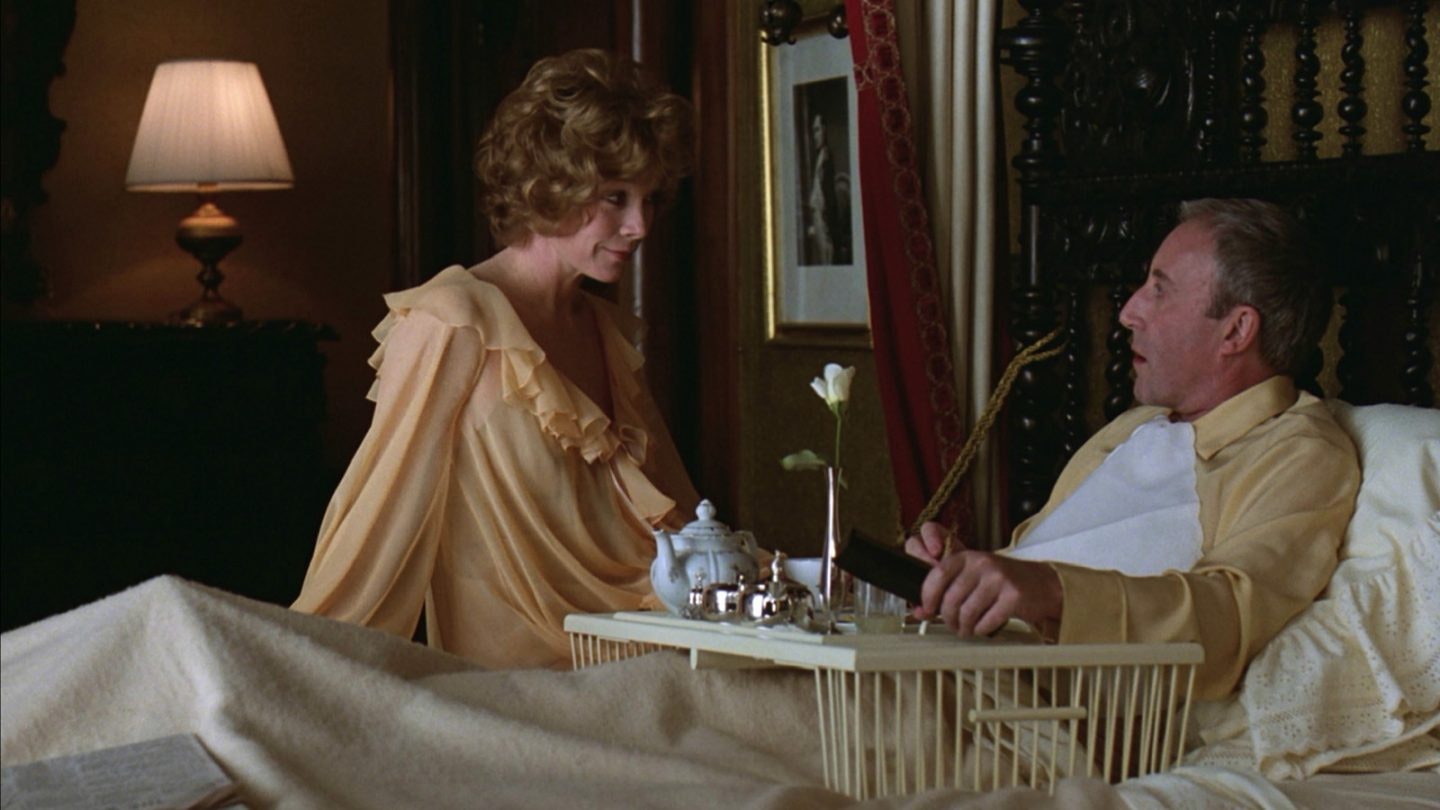
The film is not flawless. There are two sex-oriented subplots, and neither one is necessary. The story of the president's impotence could have been completely dispensed with. And the seduction attempt by Shirley MacLaine, as the millionaire's wife, requires her to act in a less intelligent way than she should. MacLaine projects brains; she, like the doctor, should have caught on, and that would have created more intriguing scenes than her embarrassing poses on a bear rug.
In the much-discussed final sequence of "Being There,'' Chance casually walks onto the surface of a lake. We can see that he is really walking on the water, because he leans over curiously and sticks his umbrella down into it.
When I taught the film, I had endless discussions with my students over this scene. Many insisted on explaining it: He is walking on a hidden sandbar, the water is only half an inch deep, there is a submerged pier, etc. "Not valid!'' I thundered. "The movie presents us with an image, and while you may discuss the meaning of the image it is not permitted to devise explanations for it. Since Ashby does not show a pier, there is no pier--a movie is exactly what it shows us, and nothing more,'' etc.
So what does it show us? It shows us Chance doing something that is primarily associated with only one other figure in human history. What are we to assume? That Chance is a Christ figure? That the wisdom of great leaders only has the appearance of meaning? That we find in politics and religion whatever we seek? That like the Road Runner (who also defies gravity) he will not sink until he understands his dilemma?
The movie's implications are alarming. Is it possible that we are all just clever versions of Chance the gardener? That we are trained from an early age to respond automatically to given words and concepts? That we never really think out much of anything for ourselves, but are content to repeat what works for others in the same situation?
The last words in the movie are, "Life is a state of mind." So no computer will ever be alive. But to the degree that we are limited by our programming, neither will we. The question is not whether a computer will ever think like a human, but whether we choose to free ourselves from thinking like computers.(Roger Ebert, 1997).
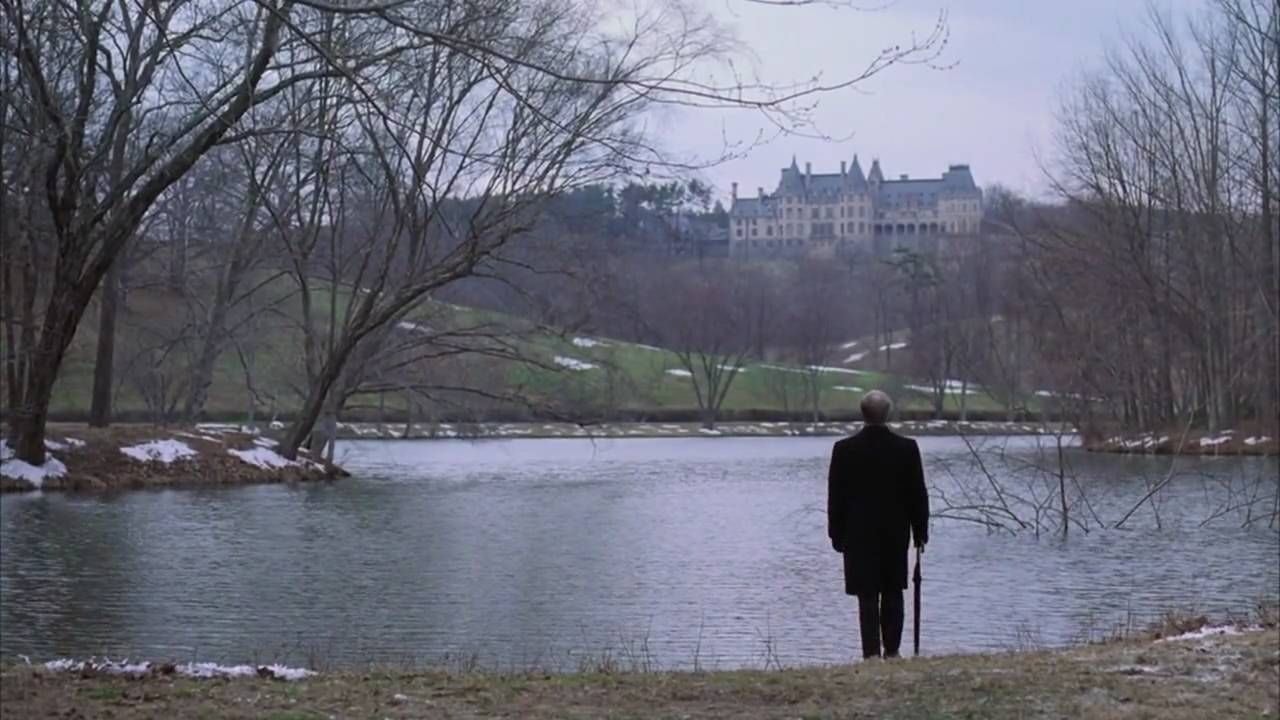
DIAL M FOR MURDER (March, 2019)
Note: The following review discusses the anatomy of one crucial scene, but does not give away the ending to the film.
In the early 1950s, Warner Bros. had gone crazy for 3-D, and mogul Jack Warner wanted Alfred Hitchcock to experiment in the effect. Hitchcock, of course, had been experimenting in film style for years: the long-take, highly specialized and wholly unique camera movements, confined quarters, unreliable narrators, etc. It seem like the director who would seemingly try anything would embrace the opportunity to work with new technology, but he was smart enough to tell the difference between cinematic possibility and fleeting fad.
Despite his healthy skepticism, he signed on to produce Dial M for Murder utilizing the 3-D effect, chiefly because he knew fulfilling a certain favor could keep the shifty eyes of the studio off his back and let him work uninterrupted. In the fall of 1952, while in New York, he had seen British playwright Frederick Knott's stage play of the same name, about a man who plots to have his adulterous wife murdered in order to secure her hefty fortune. The murder goes awry, and the husband has to cover up his steps – the kind of story right up Hitchcock's alley. And, to add icing to the cake, Cary Grant was interested in playing the husband.
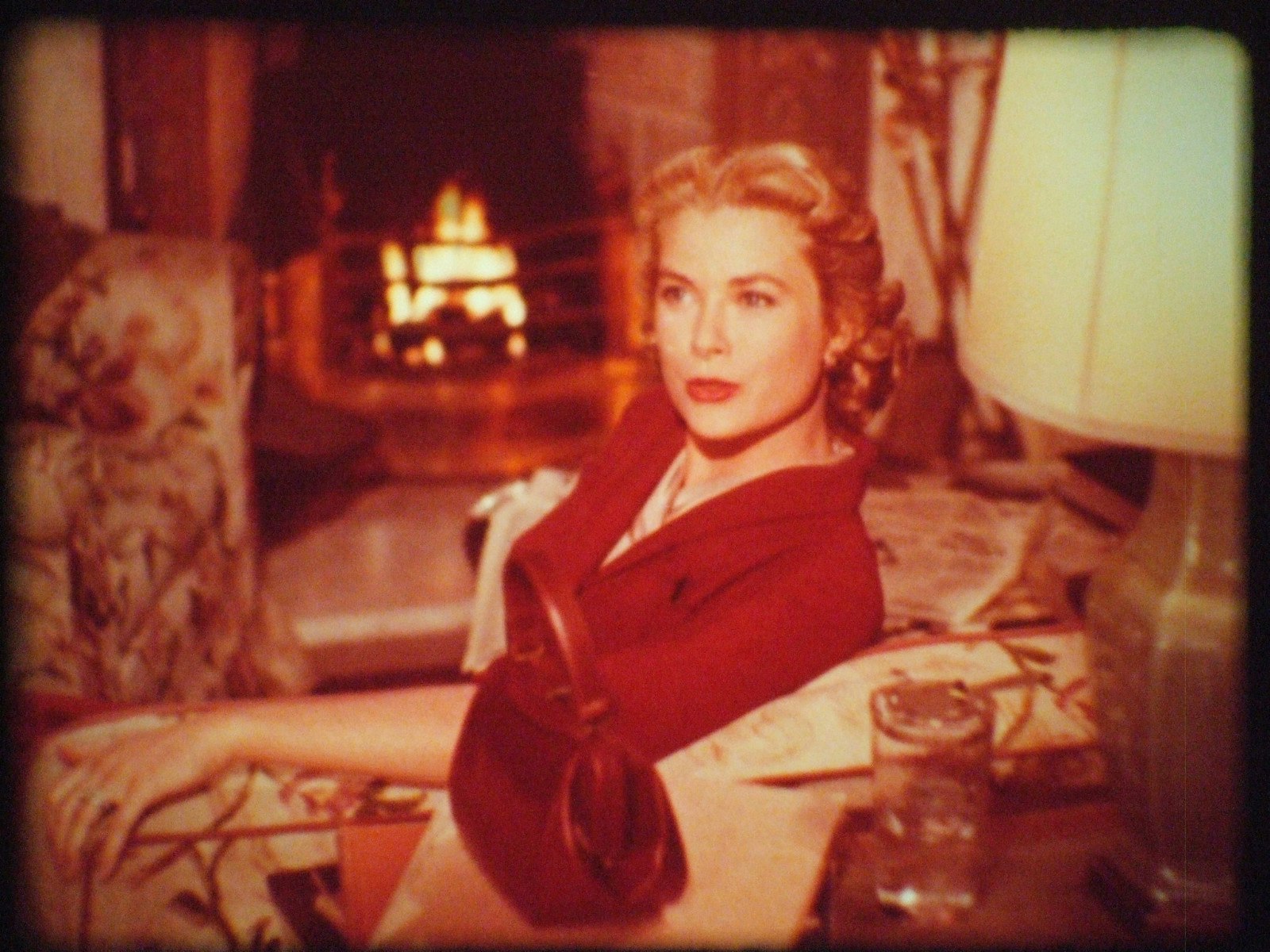
But like the murder itself, things began to slide off the tracks from the very beginning. The budget for Dial M for Murder was extraordinarily tight, and nearly all of Hitchcock's concessions were due to money. Warner vetoed filming on location in London (he didn't want the studio's only 3-D camera traveling overseas), and Warner vetoed Grant (too expensive, plus he claimed audiences wouldn't buy the shift away from lighter fare, which completely ignores Suspicion and Notorious). Production had to begin quickly and end quickly, so there was no time to get into Knott's play and re-tool it extensively for a cinematic rebirth, which left the setting to be very much a "stage." And even though Hitchcock had lost Grant, there still wasn't room in the budget for the lead actress to be anyone greater than a virtual unknown.
Yet what makes Hitchcock great is that when things began to slide away from him, nine times out of ten he could get away with it nevertheless. Dial M for Murder isn't among his banner productions, and it's only referenced in passing in his interviews or writings on him, but it is a remarkable film in many ways, one of his abandoned darlings that teaches us a great deal about what kind of filmmaker he was and happens to be quite entertaining in the process. From a purely cinematic vantage, part of its immense joy is how little the story is changed from the original theatrical production and how Hitchcock and cinematographer Robert Burks literally seem to stage a play. A filmed play is, technically, the best way to describe Dial M for Murder, although its triumph is that it doesn't feel like it. (Note how each time Hitchcock filmed something in a small, enclosed space – Lifeboat, Rope, Rear Window – he filmed it differently.)
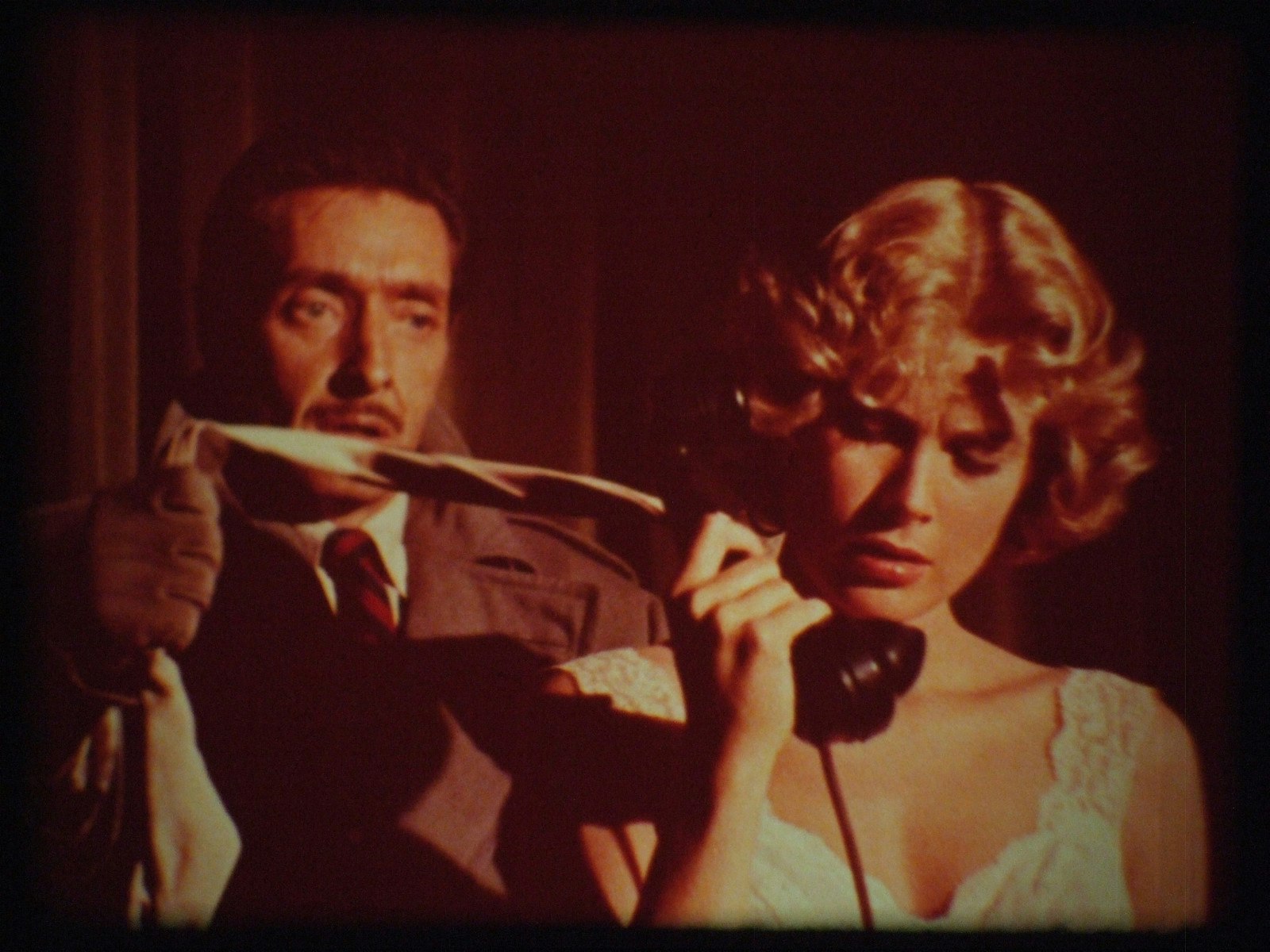
With Grant out of reach, the lead role of former tennis star Tony Wendice went to Ray Milland, who in my opinion is perpetually underrated. Tony has left the sport at the request of his wife Margot (Grace Kelly, at the time still relatively unknown), and their marriage can't be described in any way as truly satisfying. Margot is unaware that Tony knows of a previous relationship she had with a crime writer named Mark (Robert Cummings, who played lead in Saboteur). Tony blackmails a former classmate of his going by the name Lesgate (Anthony Dawson, who played the same role in the New York stage production) to kill Margot. When Margot survives, Tony has to juggle Margot, Mark, and a curious and determined inspector.
The story is tight, and overall the film is gripping, if not slightly long. Milland is grand and meticulous, even though Cummings is ... well, Cummings. In the twelve years that passed between Saboteur and Dial M for Murder, Cummings didn't become spectacularly telegenic, and when stacked against Milland, it's easy to tell which of the two had won an Oscar for Best Actor. The real draw to Kelly, who is lovely in Technicolor, in her first of three consecutive Hitchcock roles. Margot doesn't have as prominent of a role in the play as Tony or Mark, so it does feel like there is a large empty space on screen sometimes when Kelly isn't there. (But that's what generally happens when a mesmerizing actor or actress isn't there.) Because of the small sets (and the 3-D process), it was necessary for the camerawork to be as nimble, and Dial M for Murder is a great example of a Hitchcock film where you can detect the director's slightest presence in every shot, particularly the ones that seem to explode across the screen with his typical and artful delicacy.
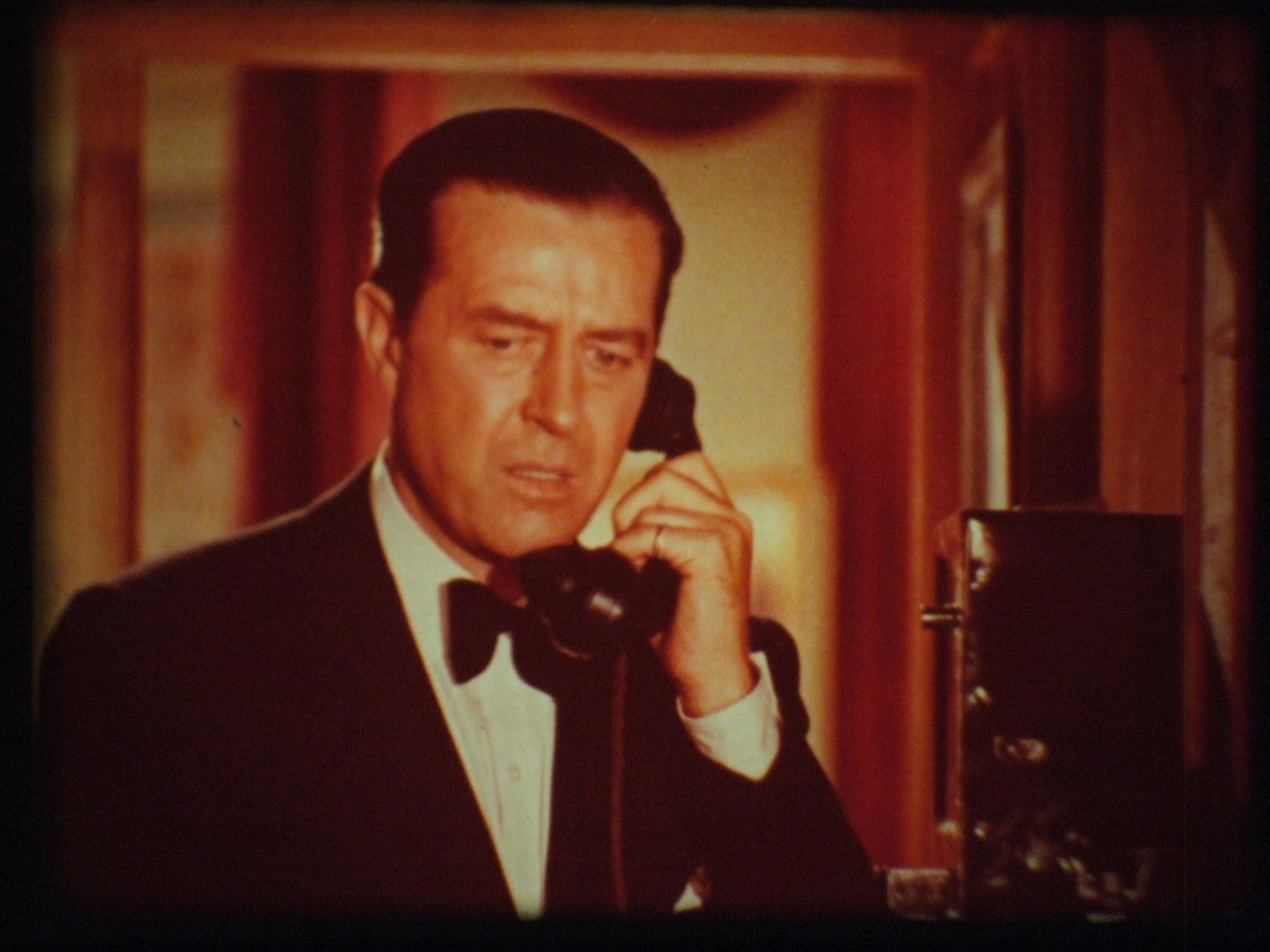
When Dial M for Murder premiered in May of 1954, Hitchcock's dismissive attitude of 3-D as a mere fad had proved clairvoyant. Almost as soon as it had exploded in popularity, it had imploded and shrunk away lusterless. Dial M for Murder only played in 3-D in selected theaters upon its first run, but subsequent revivals have brought it back to be shown as it was intended. I've never seen it in 3-D, and look forward to the day I might be able to, but what I've read about it normally concludes the same thing you'd be able to tell from the film being shown on your television at home: that Hitchcock used the technology carefully and judiciously, aiming mostly at creating subtle depth on the primary set of the Wendice house. Many objects (such as lamps and furniture) are placed in front of the camera and supposedly "pop." The one grand exception is during the attempted murder scene, where Margot struggles against Lesgate and suddenly reaches her hand out (and directly toward the camera) for something to fend him off, translating into the effect of her "reaching out into the audience." Even on a two-dimensional space, though, the violent jerk of her arm and hand is rather startling.
Although not as beloved as some of Hitchcock's other masterful films, I have a theory that Dial M for Murder is necessary viewing for anyone seeking to prove why the director is cited as among the best. There's a moment of luminousness where the pacing, the camera, the script, and the editing all merge together and form a cohesive and brilliant scene. It occurs in the moment of the attempted murder, and it's a tour de force sequence; although it appears so simple and elegant in execution, in terms of suspense and skill it matches the sophistication and complexity of any scene from Hitchcock's acclaimed masterpieces. The success of the moment alone makes me wonder why Hitchcock would prove so discursive on the subject of the film later in his life.
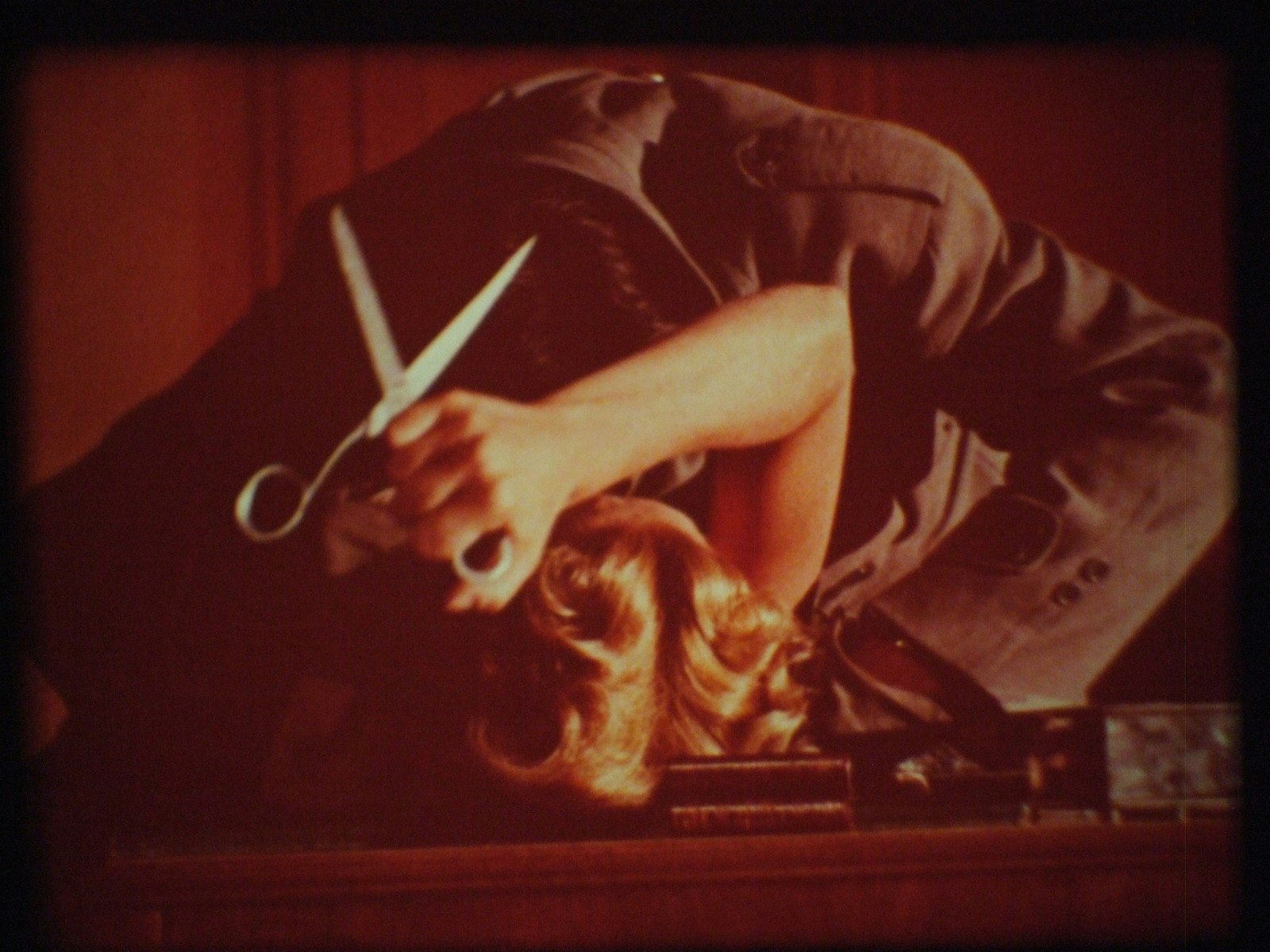
But first, to appreciate the sequence in all its cinematic glory, it's necessary to note here that Dial M for Murder was re-adapted in the late 1990s as A Perfect Murder, with Michael Douglas and Gwyneth Paltrow in the Milland and Kelly roles. The murder scene in that below-par film hinges on the shock of a masked man jumping out from off-screen and the ensuing violence as Paltrow fights him off – bogeyman stuff basically, the kind of stuff you might well expect in a thriller film. Yet consider what Hitchcock does with the same scene. There is a splendid trail of guilt dripping across the characters and into the audience that exists only under the watchful eye of Hitchcock. For all intents and purposes, Tony is the bad guy: he has planned his wife's murder (although she's not exactly an angel, either). But beginning with the sequence of the murder, Hitchcock slyly begins to toy with our allegiances. We can't help but root for Margot not only to live and be proven redeemed, but we also find ourselves rooting for Tony, as well, to have his plan be performed successfully, or at least get away with what he has done.
The attempted murder, which occurs roughly forty minutes into the film, has been plotted and spelled out for the audience in an earlier conversation between Tony and Lesgate. Tony is going to be out of the house and is supposed to call Margot at a specific time, and Lesgate will be waiting behind the curtain with a cloth to strangle her when she answers the phone. The scene begins with an anxious Tony, who is keeping a close eye on the time and realizes when his watch stops and he is late to call that he must have inadvertently overwound it. Lesgate, thinking the plan has been postponed, gets ready to leave. Tony gets up to go to the pay-phone to call Margot, and there's a steady shot of him walking through the lobby of the restaurant. He pulls the change out of his pocket and as he makes a slight left turn toward the pay-phone, the camera pans right to reveal someone else in the booth already. Dimitri Tiomkin's somewhat generic but highly effective tick-tock thriller score circles in the background, and Tony paces outside the booth, as frustrated now as we are. Once he gets into the booth, he slides in the coins and as the score booms thunderously, we are given an extreme close-up of the rotary phone, Milland's fingertip sliding into the number 6 spot (the "M"). Cut then to a seemingly unrelated shot of the mechanics inside the phone chirping and ticking away as the call is connected, but in the history of Hitchcock's films, we are given numerous shots of "behind-the-scenes" functionality (The Lodger, for example, includes a montage of how the newspaper is printed).
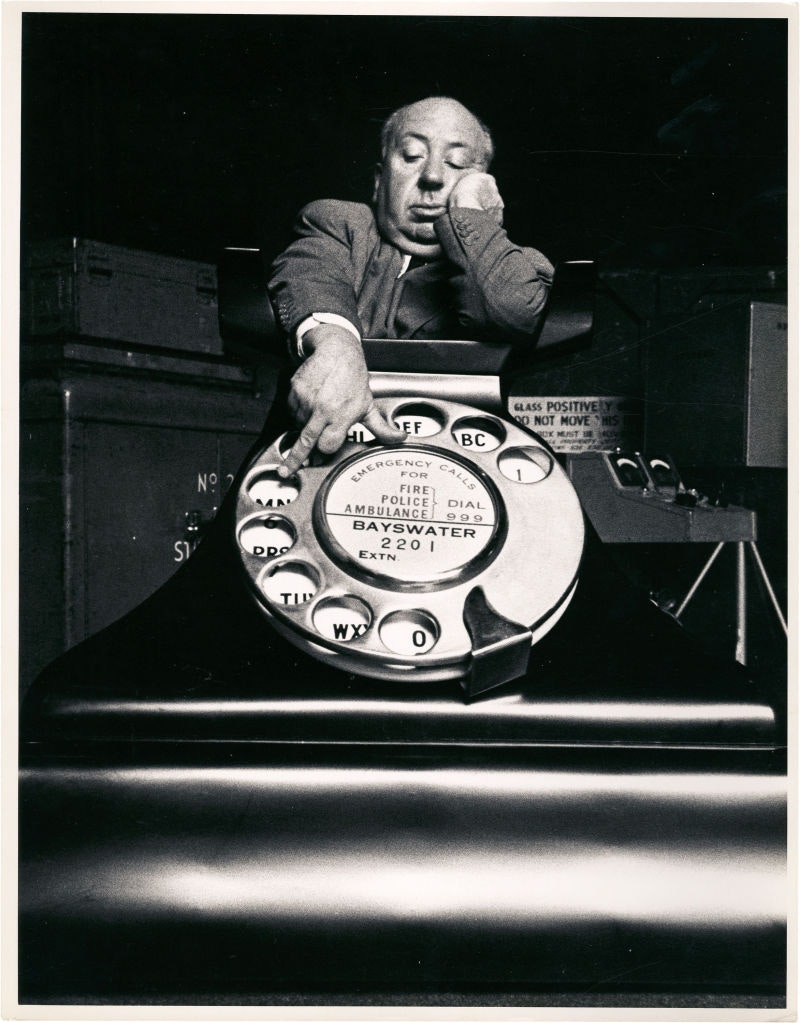
Back in the apartment, the phone rings. Lesgate, halfway out the door, turns around at its sound. The light snaps on in Margot's bedroom, visible between the door and the floor. She answers the phone in a three-quarter shot and slowly the camera begins to curl around her (she until eventually it staring at the back of her head, just as the Lesgate's cloth, pulled tight between his hands, comes into view. Smash-cut back to the front of her, Lesgate now positioned over her shoulder. The score has drowned out nearly all sounds but Margot repeating "Hello?" into the telephone and pressing the switchhook over and over. The orchestra crescendos as Lesgate finally attacks, with Margot panting and screaming and fighting; he pushes her onto the desk, a lamp breaking in the background – and this is where it gets really tricky – Milland now closes his eyes in what I suppose can only be called mournful (he has planned this, after all, so there's your Hitchcockian complexity). Kelly famously reaches back toward the camera, and grabs a pair of scissors left on the desk. Naturally, they are held stiff in the "X" position with the blades spread apart, and as the light gleams across the silvery metal, she stabs Lesgate in the back, a perfect moment of resistance and self-defense. Lesgate falls onto the floor, the scissors pressing deeply into him and killing him. Tony is stricken but unaware as he listens to the commotion on the telephone, then his eyes grow when Margot picks it up, sobbing and asking for the police.
"What's the matter?" he asks. She says she can't explain now and wants him to come quickly. But he prods her to reveal, unbeknownst to herself, the state of the plan: "Darling, pull yourself together. What is it?" And after she explains the attack, and he knows everything has gone wrong, the fear fills his face like water in a sponge. Although the words are by Knott, the response – utterly callous to Margot's well-being, but leading and hopeful the plan hasn't completely collapsed – is purely Hitchcockian in its dark humor, its duplicity, and its eagerness: "Did he get away?" She says the man is dead, and he tells her not to touch anything and he'll be home quickly.
Dial M for Murder is a 1954 American thriller film directed by Alfred Hitchcock, starring Ray Milland, Grace Kelly, and Robert Cummings. The movie was adapted from a successful stage play by Frederick Knott, and was released by the Warner Bros. studio.
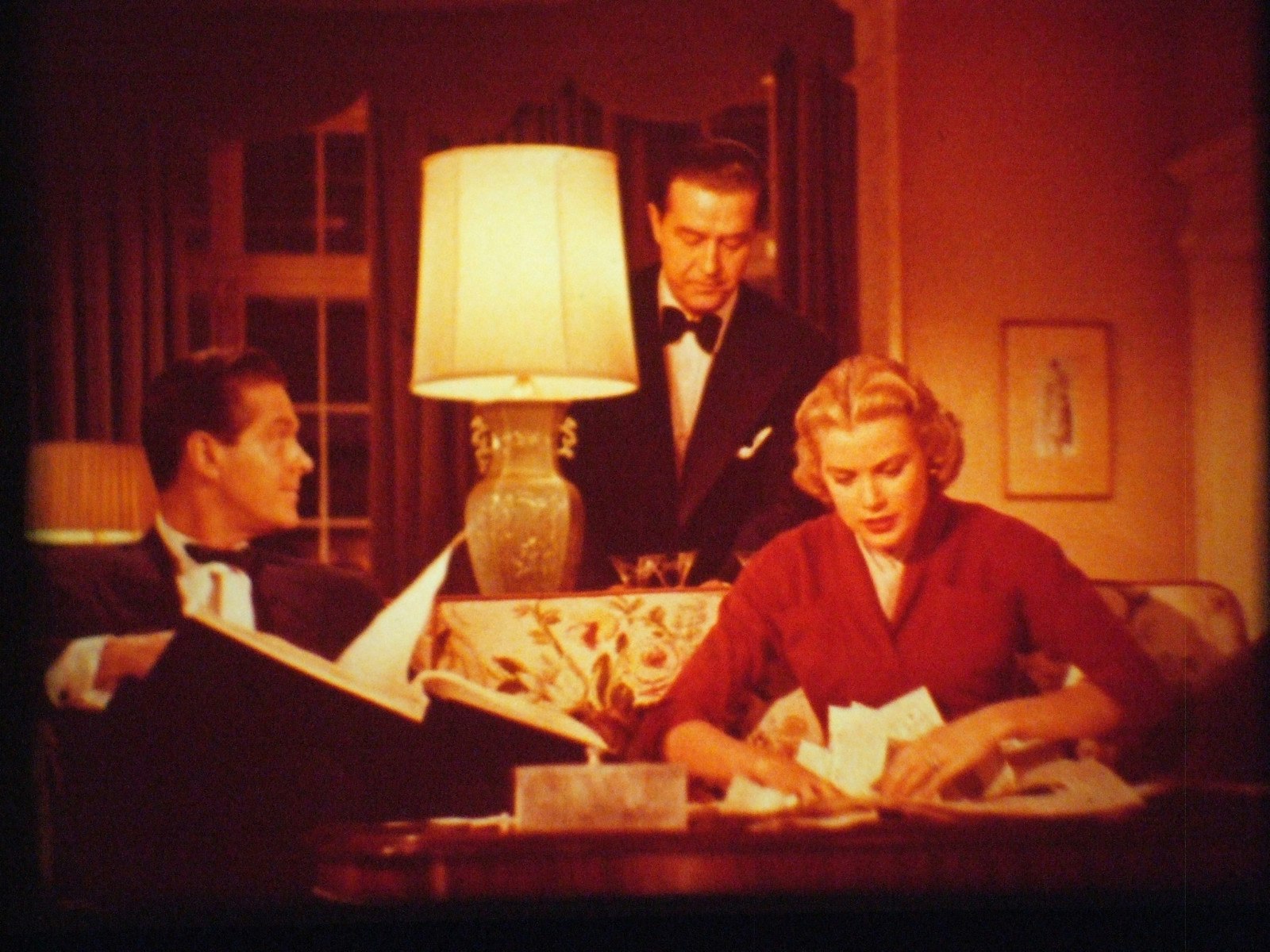
The screenplay and the stage play on which it was based were both written by English playwright Frederick Knott, whose work often focused on women who innocently become the potential victims of sinister plots. The play premiered in 1952 on BBC television, before being performed on the stage in the same year in London's West End in June, and then New York's Broadway in October.
The single setting in the stage play is the living-room of the Wendices' flat in London (61A Charrington Gardens, Maida Vale). Hitchcock's film adds a second setting in a gentleman's club, the well of a staircase, a few views of the street outside, and a stylized courtroom montage. Having seen the play on Broadway, Cary Grant was keen to play the role of Tony Wendice, but studio chiefs did not feel the public would accept him as a man who arranges to have his wife murdered.
In June 2008, the American Film Institute revealed its "Ten Top Ten" list—the best ten films in ten "classic" American film genre—after polling over 1,500 people from the creative community. Dial M for Murder was ranked the ninth best film in the mystery genre.[2]
The 1954 film was shot with M.L. Gunzberg's Natural Vision 3-D camera rig. This rig was notable for being the same rig that started the 3-D craze of 1953 with Bwana Devil and House of Wax. Intended originally to be shown in dual strip polarized 3-D, the film played in most theaters in normal 2-D due to the loss of interest in the 3-D process by the time of its release.[citation needed]
The film earned an estimated $2.7 million in rentals at the North American box office in 1954.
In February 1980, the dual-strip system was used for the revival of the film in 3-D at the York Theater in San Francisco. This revival did so well that Warner Bros. re-released the film using Chris Condon's single-strip StereoVision 3-D system in February 1982.
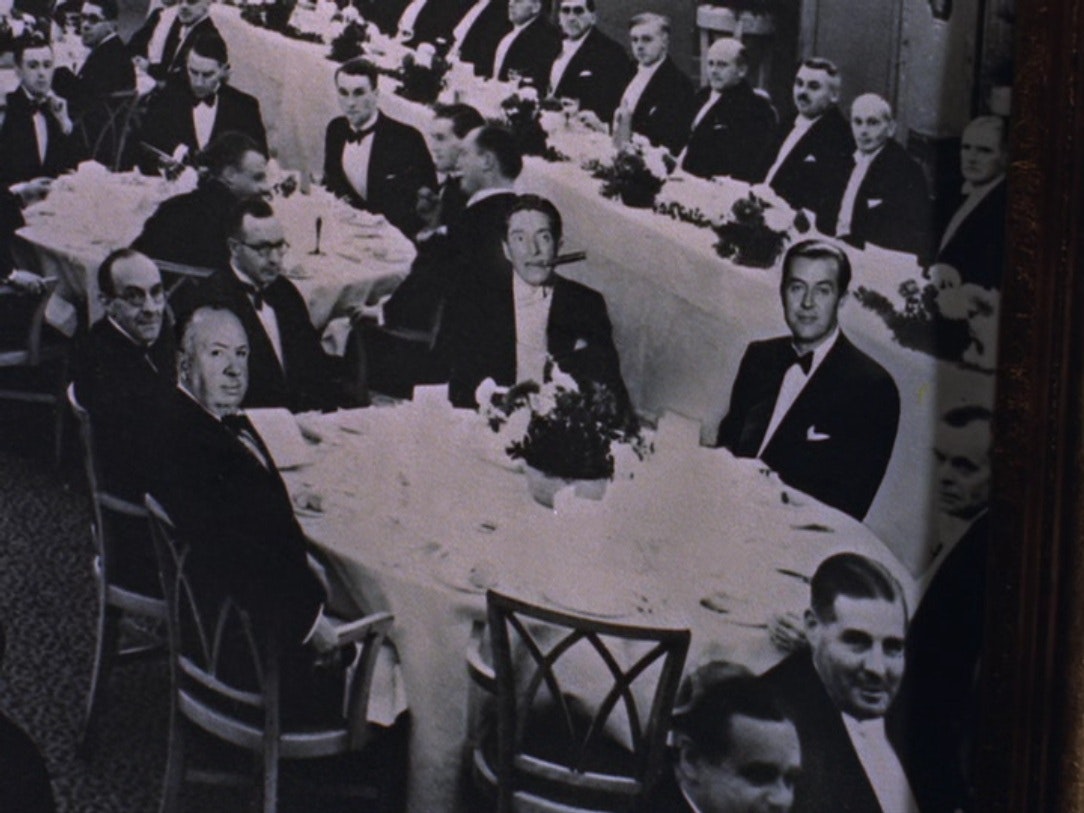
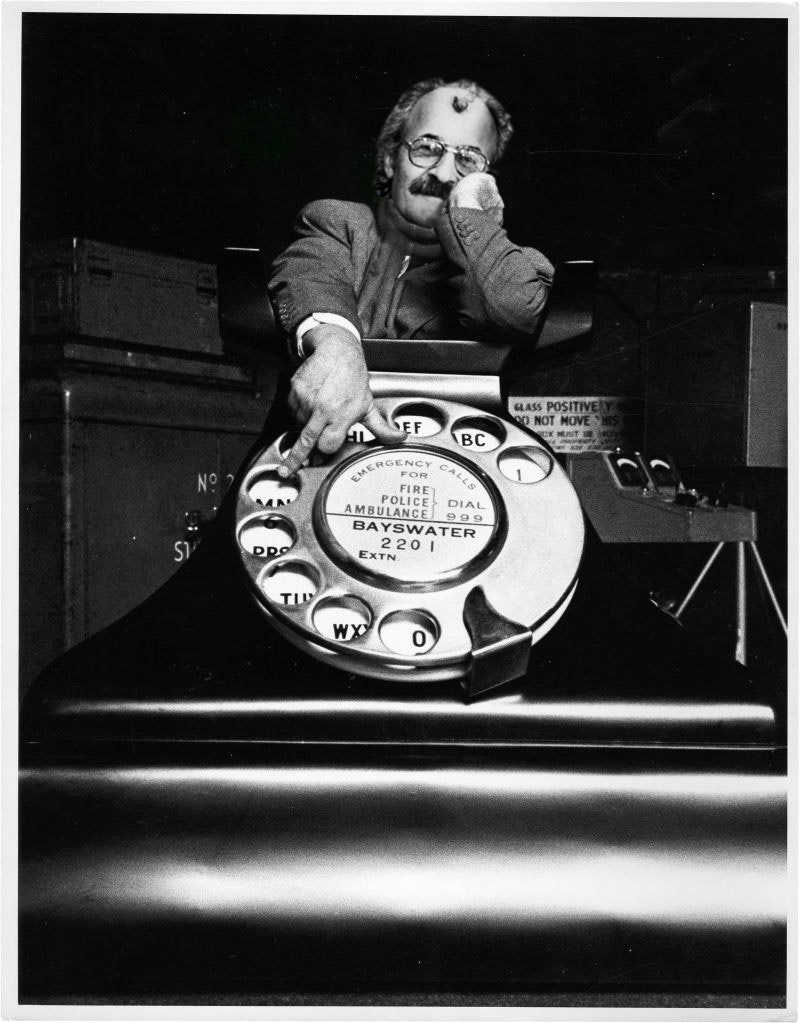
12 ANGRY MEN (February, 2019)
In form, "12 Angry Men" is a courtroom drama. In purpose, it's a crash course in those passages of the Constitution that promise defendants a fair trial and the presumption of innocence. It has a kind of stark simplicity: Apart from a brief setup and a briefer epilogue, the entire film takes place within a small New York City jury room, on "the hottest day of the year," as 12 men debate the fate of a young defendant charged with murdering his father.
The film shows us nothing of the trial itself except for the judge's perfunctory, almost bored, charge to the jury. His tone of voice indicates the verdict is a foregone conclusion. We hear neither prosecutor nor defense attorney, and learn of the evidence only second-hand, as the jurors debate it. Most courtroom movies feel it necessary to end with a clear-cut verdict. But "12 Angry Men" never states whether the defendant is innocent or guilty. It is about whether the jury has a reasonable doubt about his guilt.
The principle of reasonable doubt, the belief that a defendant is innocent until proven guilty, is one of the most enlightened elements of our Constitution, although many Americans have had difficulty in accepting it. "It's an open and shut case," snaps Juror No. 3 (Lee J. Cobb) as the jury first gathers in their claustrophobic little room. When the first ballot is taken, 10 of his fellow jurors agree, and there is only one holdout--Juror No. 8 (Henry Fonda).
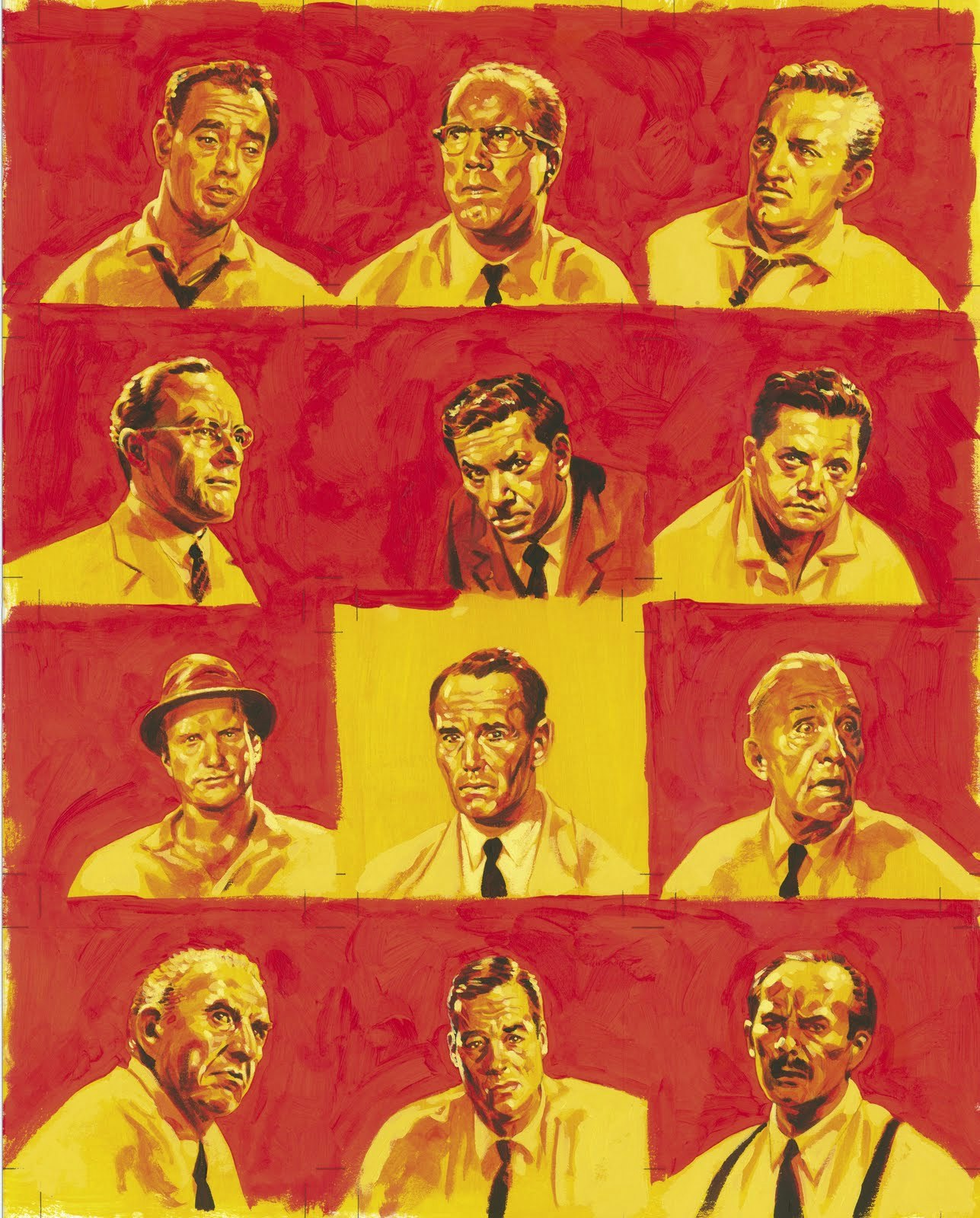
This is a film where tension comes from personality conflict, dialogue and body language, not action; where the defendant has been glimpsed only in a single brief shot; where logic, emotion and prejudice struggle to control the field. It is a masterpiece of stylized realism--the style coming in the way the photography and editing comment on the bare bones of the content. Released in 1957, when Technicolor and lush production values were common, "12 Angry Men" was lean and mean. It got ecstatic reviews and a spread in Life magazine, but was a disappointment at the box office. Over the years it has found a constituency, however, and in a 2002 Internet Movie Database poll it was listed 23rd among the best films of all time.
The story is based on a television play by Reginald Rose, later made into a movie by Sidney Lumet, with Rose and Henry Fonda acting as co-producers and putting up their own money to finance it. It was Lumet's first feature, although he was much experienced in TV drama, and the cinematography was by the veteran Boris Kaufman, whose credits ("On the Waterfront," "Long Day's Journey into Night") show a skill for tightening the tension in dialogue exchanges.
The cast included only one bankable star, Fonda, but the other 11 actors were among the best then working in New York, including Martin Balsam, Lee J. Cobb, E. G. Marshall, Jack Klugman, Jack Warden, Ed Begley and Robert Webber. They smoke, they sweat, they swear, they sprawl, they stalk, they get angry.
In a length of only 95 minutes (it sometimes feels as if the movie is shot in real time), the jurors are all defined in terms of their personalities, backgrounds, occupations, prejudices and emotional tilts. Evidence is debated so completely that we feel we know as much as the jury does, especially about the old man who says he heard the murder and saw the defendant fleeing, and the lady across the street who says she saw it happen through the windows of a moving L train.
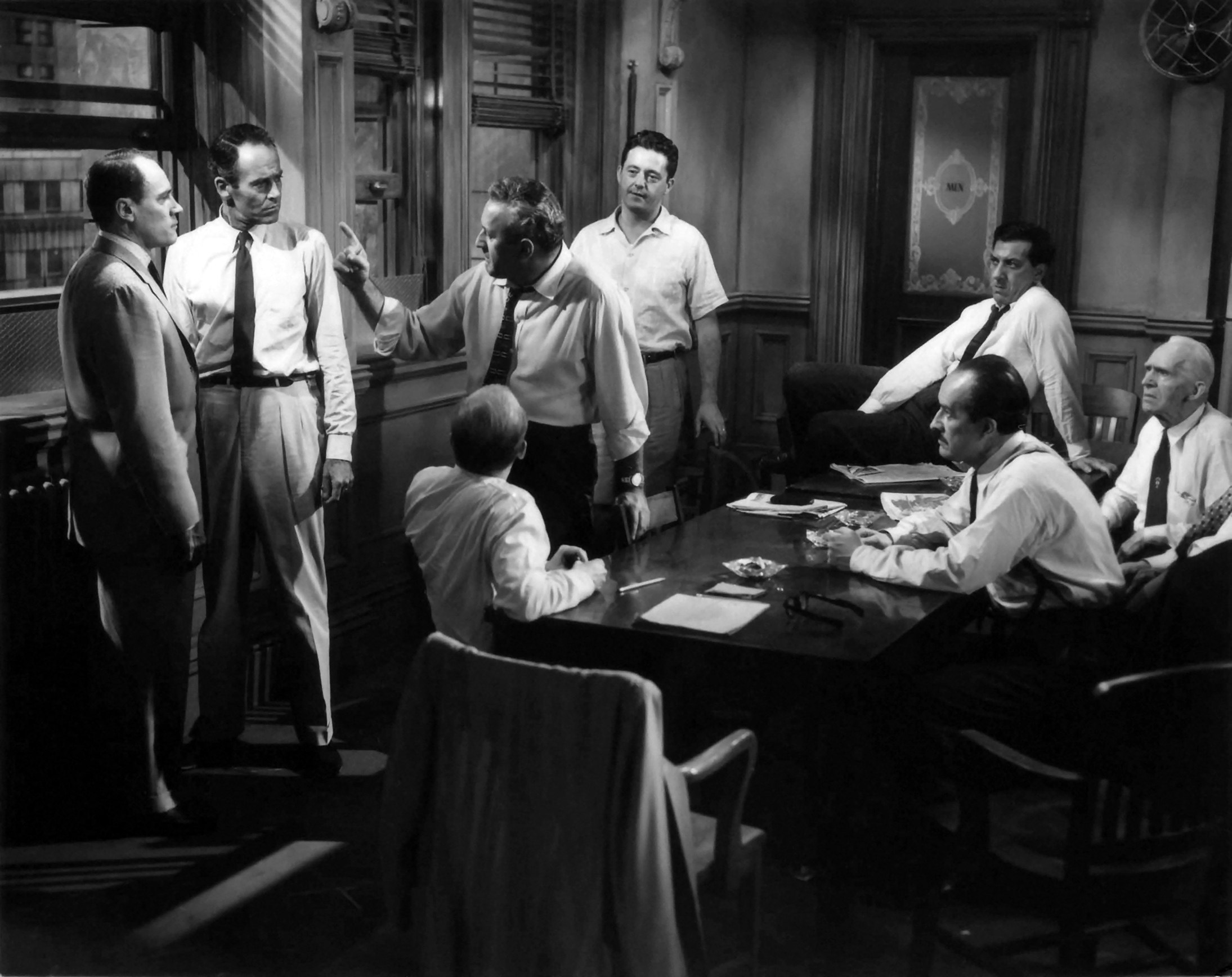
We see the murder weapon, a switch-blade knife, and hear the jurors debate the angle of the knife wound. We watch as Fonda imitates the shuffling step of the old man, a stroke victim, to see if he could have gotten to the door in time to see the murderer fleeing. In its ingenuity, in the way it balances one piece of evidence against another that seems contradictory, "12 Angry Men" is as meticulous as the summation of an Agatha Christie thriller.
But it is not about solving the crime. It is about sending a young man to die. The movie is timely in view of recent revelations that many Death Row convictions are based on contaminated evidence. "We're talking about somebody's life here," the Fonda character says. "We can't decide in five minutes. Supposing we're wrong?"
The defendant, when we glimpse him, looks "ethnic" but of no specific group. He could be Italian, Turkish, Indian, Jewish, Arabic, Mexican. His eyes are ringed with dark circles, and he looks exhausted and frightened. In the jury room, some jurors make veiled references to "these people." Finally Juror No. 10 (Ed Begley) begins a racist rant ("You know how these people lie. It's born in them. They don't know what the truth is. And let me tell you, they don't need any real big reason to kill someone, either...") As he continues, one juror after another stands up from the jury table and walks away, turning his back. Even those who think the defendant is guilty can't sit and listen to Begley's prejudice. The scene is one of the most powerful in the movie.
The vote, which begins as 11-to-1, shifts gradually. Although the movie is clearly in favor of the Fonda position, not all of those voting "guilty" are portrayed negatively. One of the key characters is Juror No. 4 (E. G. Marshall), a stockbroker wearing rimless glasses, who depends on pure logic and tries to avoid emotion altogether. Another Juror No. 7 (Jack Warden), who has tickets to a baseball game, grows impatient and changes his vote just to hurry things along. Juror No. 11 (George Voskovec), an immigrant who speaks with an accent, criticizes him: "Who tells you that you have the right to play like this with a man's life?" Earlier, No. 11 was attacked as a foreigner: "They come over and in no time at all they're telling us how to run the show."
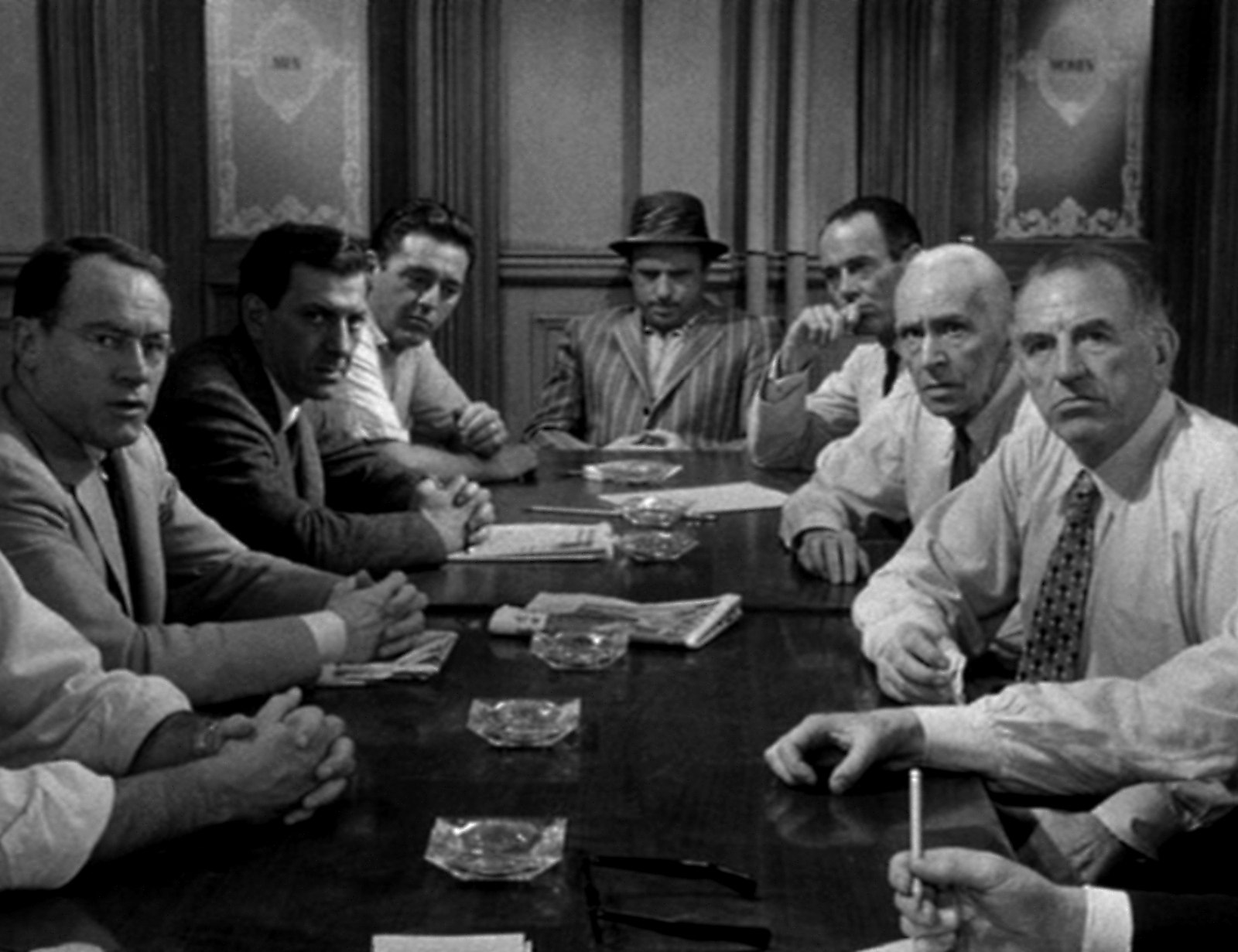
The visual strategy of the movie is discussed by Lumet in Making Movies, one of the most intelligent and informative books ever written about the cinema. In planning the movie, he says, a "lens plot" occurred to him: To make the room seem smaller as the story continued, he gradually changed to lenses of longer focal lengths, so that the backgrounds seemed to close in on the characters.
"In addition," he writes, "I shot the first third of the movie above eye level, shot the second third at eye level and the last third from below eye level. In that way, toward the end the ceiling began to appear. Not only were the walls closing in, the ceiling was as well. The sense of increasing claustrophobia did a lot to raise the tension of the last part of the movie." In the film's last shot, he observes, he used a wide-angle lens "to let us finally breathe."
The movie plays like a textbook for directors interested in how lens choices affect mood. By gradually lowering his camera, Lumet illustrates another principle of composition: A higher camera tends to dominate, a lower camera tends to be dominated. As the film begins we look down on the characters, and the angle suggests they can be comprehended and mastered. By the end, they loom over us, and we feel overwhelmed by the force of their passion. Lumet uses closeups rarely, but effectively: One man in particular--Juror No. 9 (Joseph Sweeney, the oldest man on the jury)--is often seen in full-frame, because he has a way of cutting to the crucial point and stating the obvious after it has eluded the others.
For Sidney Lumet, born in 1924, "12 Angry Men" was the beginning of a film career that has often sought controversial issues. Consider these titles from among his 43 films: "The Pawnbroker" (the Holocaust), "Fail-Safe" (accidental nuclear war), "Serpico" (police corruption), "Dog Day Afternoon" (homosexuality), "Network" (the decay of TV news), "The Verdict" (alcoholism and malpractice), "Daniel" (a son punished for the sins of his parents), "Running on Empty" (radical fugitives), and "Critical Care" (health care). There are also comedies and a musical ("The Wiz"). If Lumet is not among the most famous of American directors, that is only because he ranges so widely he cannot be categorized. Few filmmakers have been so consistently respectful of the audience's intelligence.
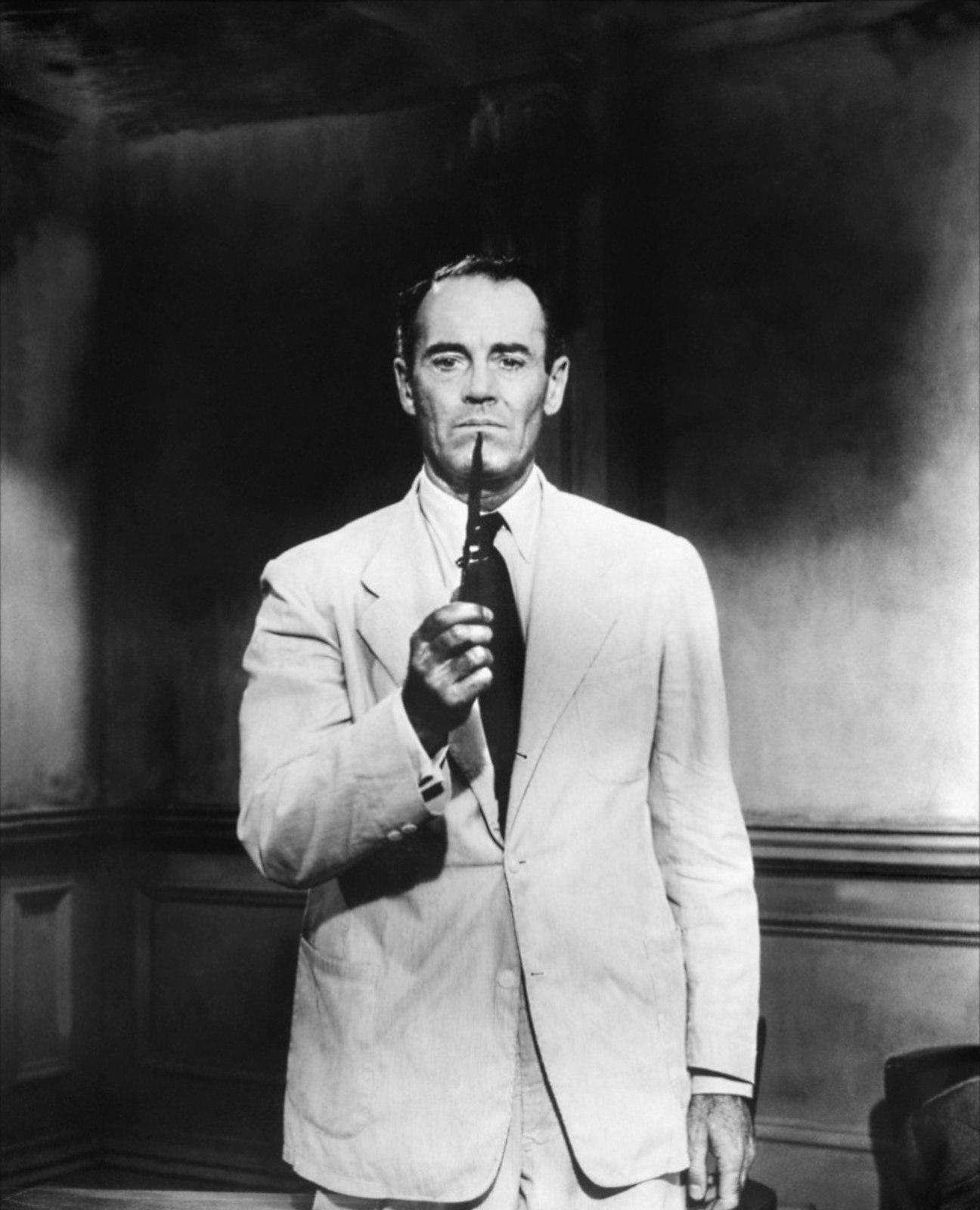

THE BICYCLE THIEVES (January, 2019)
Neorealism never got more real than in Vittorio de Sica's 1948 classic Ladri di Biciclette, or Bicycle Thieves - occasionally mistranslated as "The Bicycle Thief", though the plural is surely crucial. It turns out that there are two thieves: one at the movie's beginning, another at its end. This study of poverty in postwar Rome is now revived in cinemas as a somewhat astringent Yuletide treat. For me, it is as unbearable as any horror film.
Antonio (Lamberto Maggiorani) is a poor man who is thrilled when he is at last offered a job: delivering and putting up movie posters. But he needs a bicycle, and must supply his own, so his wife Maria (Lianella Carelli) pawns the family's entire stock of bed linen to redeem the bicycle he had already hocked. On his first day at work, the unlocked machine is stolen and Antonio drops everything to go on a desperate odyssey through the streets of Rome with his little boy Bruno (Enzo Staiola) to get his bike back, pleading and accusing and uncovering scenes of poverty similar to theirs wherever they go. They create uproar in classic crowd moments: in the streets, in a market, in a church mass. Faces always gather avidly around the pair, all commenting, complaining and generally magnifying the father and son's distress and mortification.
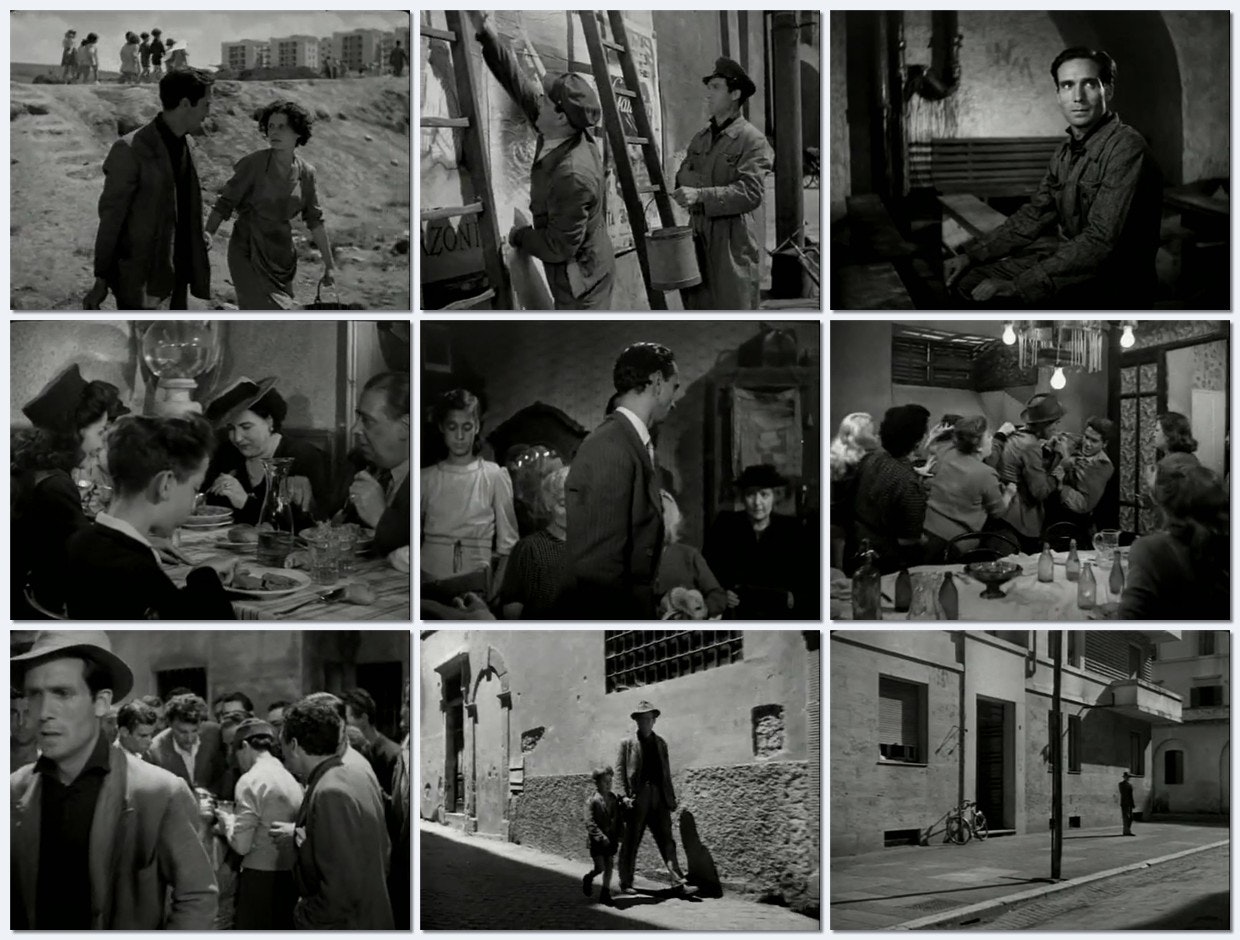
This is a story that magnificently withholds the comic or dramatic palliatives another sort of film might have introduced. Antonio and Bruno are a world away from Chaplin and his Kid. The son is the intimate witness of the father's humiliation, his inadequacy as a provider. The scenes at the beginning of the film, when Antonio casually leaves his bicycle unlocked but it remains for the moment miraculously unstolen, have to be watched through your fingers.
Antonio seems unable or unwilling to embrace the obvious redemptive moral - that his son is the important possession, not the wretched bicycle - and De Sica is unwilling to embrace it either, perhaps precisely because it is too obvious, or because this moral is a luxury that only well-off people can afford. The father is obsessed with finding a stolen needle in the urban haystack, obsessed with getting his job back. Again and again, he ignores his little boy while scanning the horizon for his bicycle. At one stage, he hears an uproar from the riverbank about a "drowned boy". With a guilty start, he looks around. Do they mean Bruno? No: there he is, safe and sound.
But the lesson is not learned. He doesn't even hold Bruno's hand! And, in a later scene, we see the poor boy almost run over by a car because his father isn't looking out for him. Bruno's simple physical survival is the movie's secret miracle, and he is finally to be his father's saviour, but in such a way as to render Antonio's humiliation complete. This is poverty's authentic sting: banal and horrible loss of dignity. Bicycle Thieves is a brilliant, tactlessly real work of art.
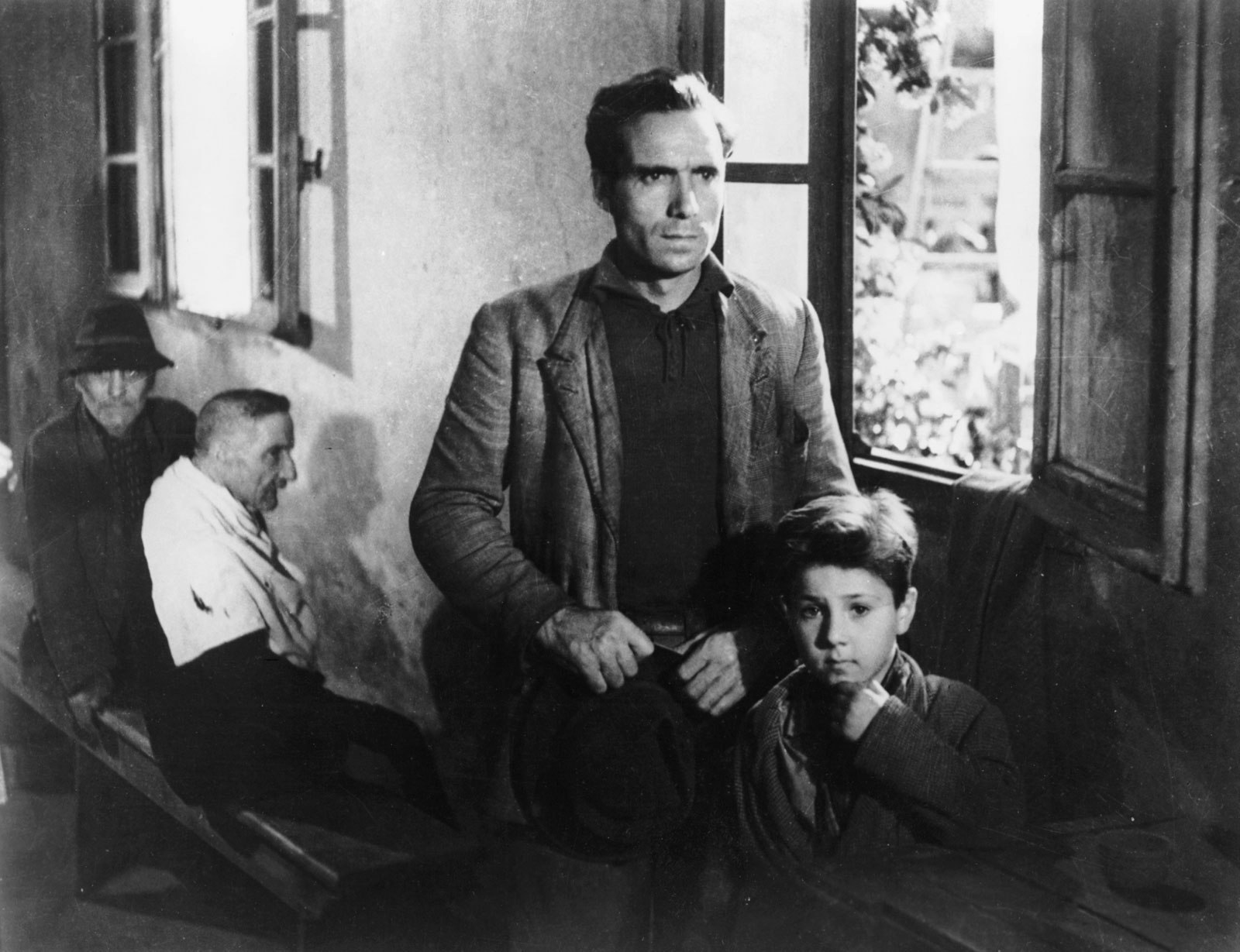
NOTES
The Bicycle Thieves (Ladri di Biciclette) is an Italian Neorealist film directed by Vittorio De Sica, with the screen play by Cesare Zavattini and shot in 1948. Neorealism, as a term, means many things, but it often refers to films of working class life, set in the culture of poverty, and with the implicit message that in a better society wealth would be more evenly distributed. Set in poverty stricken post-war Rome, the stories of the poor were close to De Sicca’s heart, he himself was born into poverty and only managed to escape through a career as a theatre and then film actor. De Sica’s first films as a director were light comedies like the ones he often worked in. However, maybe due to the harsh realities of World War II, his 1942 film "The Children are Watching," had mush more depth and sensitivity than his earlier work.
When De Sica was looking for a producer to finance his film, he finally found one, but on condition that the workman was played by Cary Grant. The mere statement of the problem in these terms shows the absurdity of it. Actually, Cary Grant could play that kind of part extremely well, but it is obvious that the question here is not one of playing of a part but of getting away from the very notion of doing any such thing, The worker had to be at once as perfect and as anonymous and as objective as his bicycle.
Creation from limitation
De Sica famously used non-actors, in location. Not one scene shot in a studio. Everything was filmed in the streets. As for the actors, none had the slightest experience in theater or film. The workman came from the Breda factory, the child was found hanging around in the street, the wife was a journalist.
In his journals, Cesare Zavattini writes about how he and De Sica visited a brothel to do research for the film, and later the rooms of the Wise Woman, a psychic, who inspires one of the film's characters. De Sica hunted for his cast for a long time and selected them for specific characteristics. Natural nobility, that purity of countenance and bearing that the common people have… He hesitated for months between this person and that, took a hundred tests only to decide finally, in a flash and by intuition on the basis of a silhouette suddenly come upon at the bend of a road.
With the disappearance of the concept of the actor into a transparency seemingly as natural as life itself, comes the disappearance of the set. Now De Sica's film took a long time to prepare, and everything was as minutely planned as for a studio superproduction, which, as a matter of fact, allows for last minute improvisations. Nevertheless, the numbering and titling of shots do not noticeable distinguish Ladri di Biciclette from any ordinary film. But their selection has been made with a view to raising the lucidity of the event to a maximum, while keeping the index of refraction from the style to a minimum.
Cinematography
The long, drawn-out takes add to the feeling of desperation and fear that Antonio faces in his pursuit of finding his bike. Bicycle Thieves can feel like a documentary in it’s subject matter, and though the cinematography is unpretentious it is incredibly beautiful. Bazin (who is regarded as one of the most important or influential writer on cinema and was a co-founder of the French film review "Cahiers du cinéma") stated that the film was "pure cinema"; that it tells a simple story composed of "real" events involving "real" people in "real" places. The truth of its extraordinary emotional impact is another element of the story's purity.
"The Bicycle Thief" had such an impact on its first release that when the British film magazine Sight & Sound held its first international poll of filmmakers and critics in 1952, it was voted the greatest film of all time.
